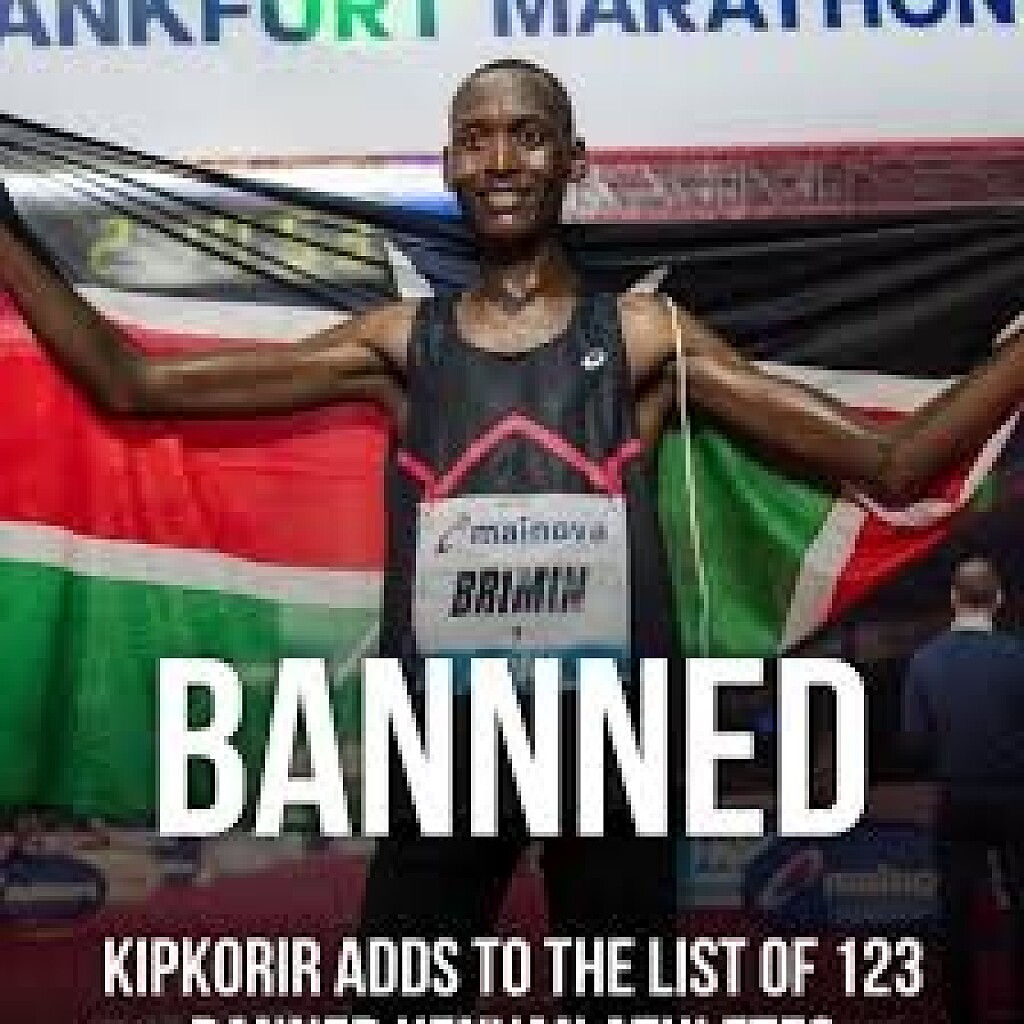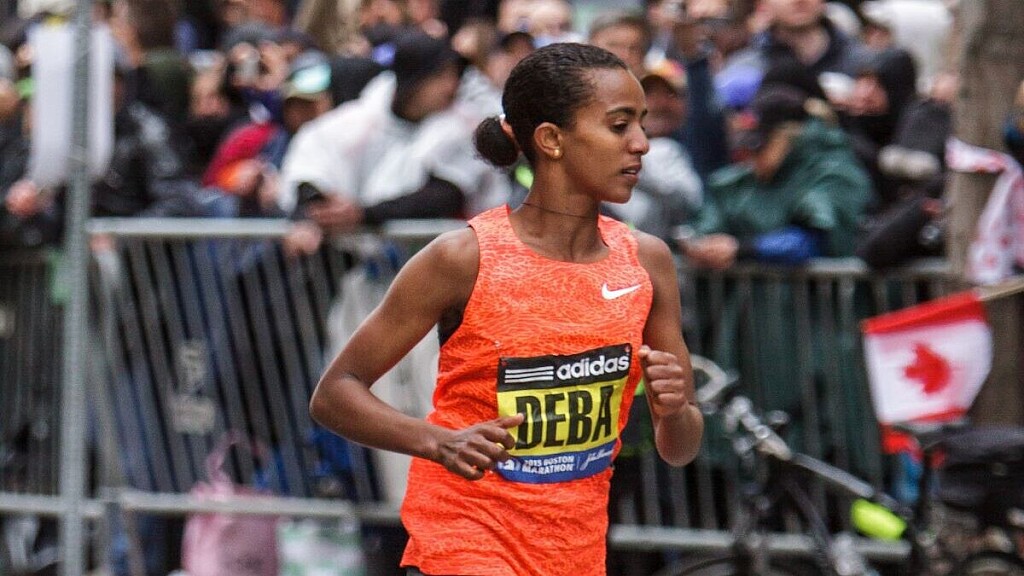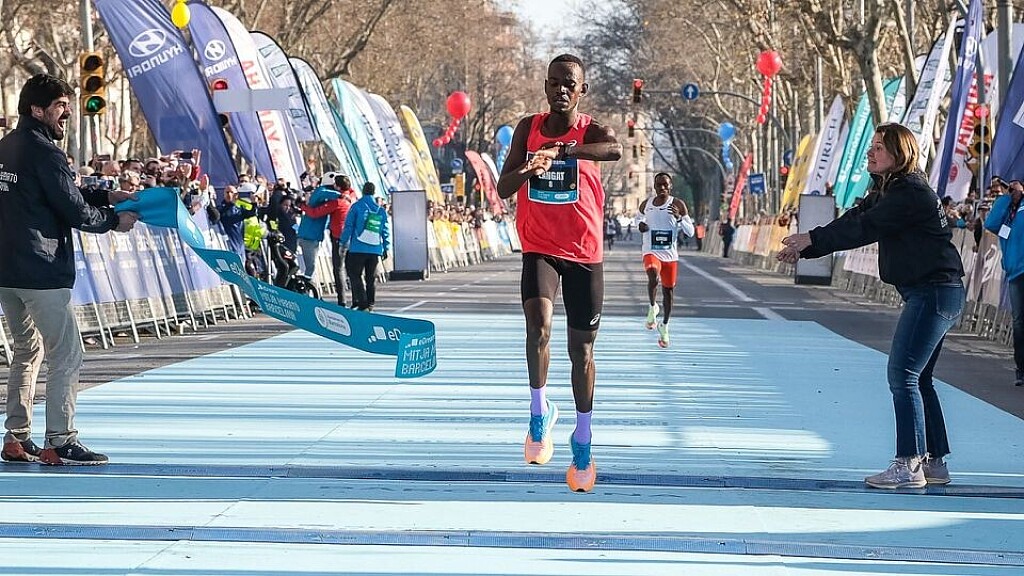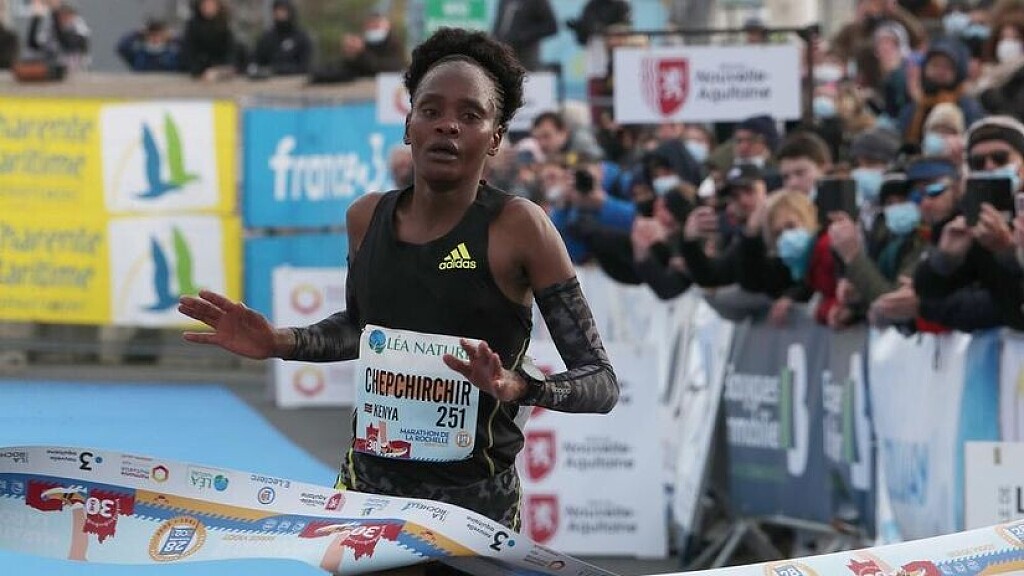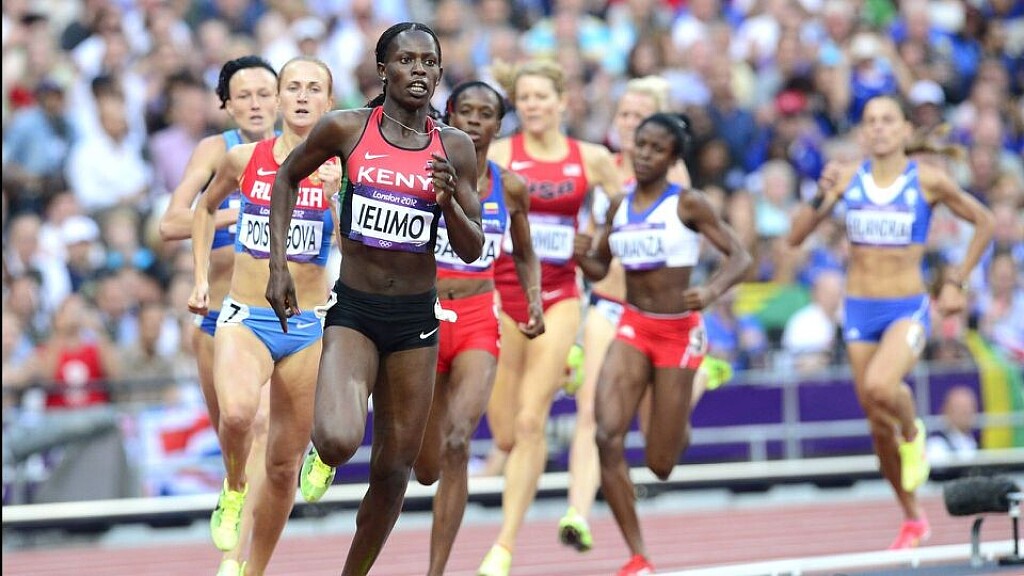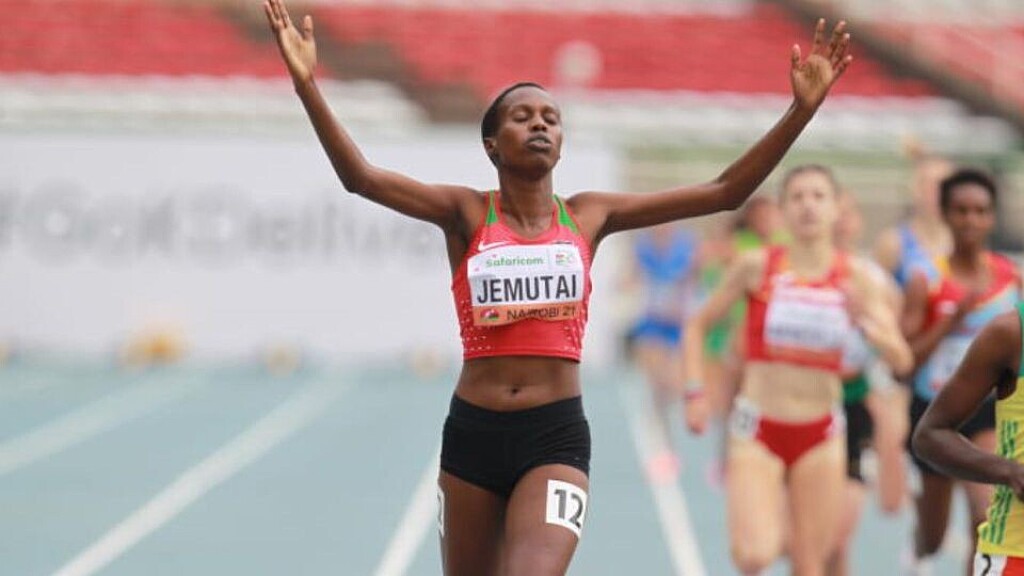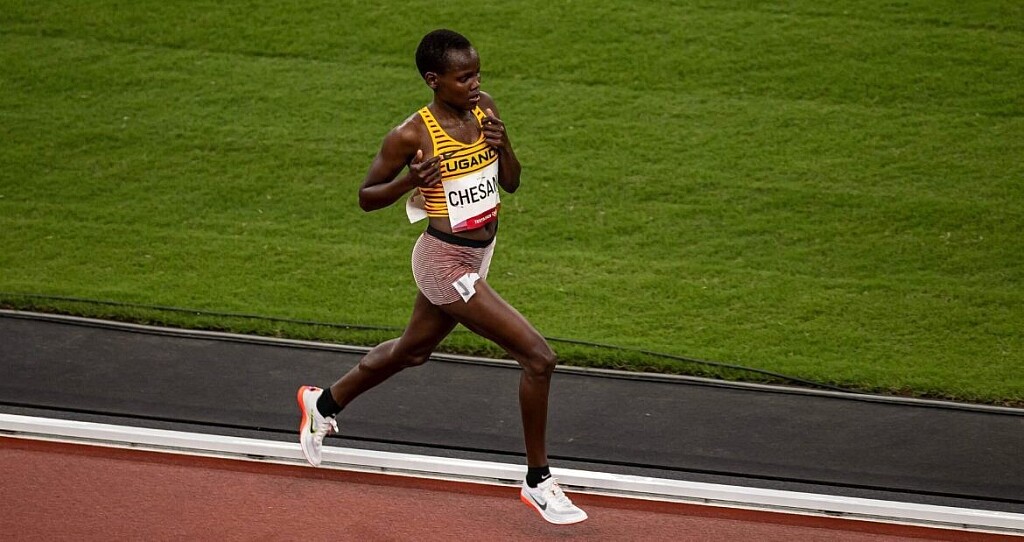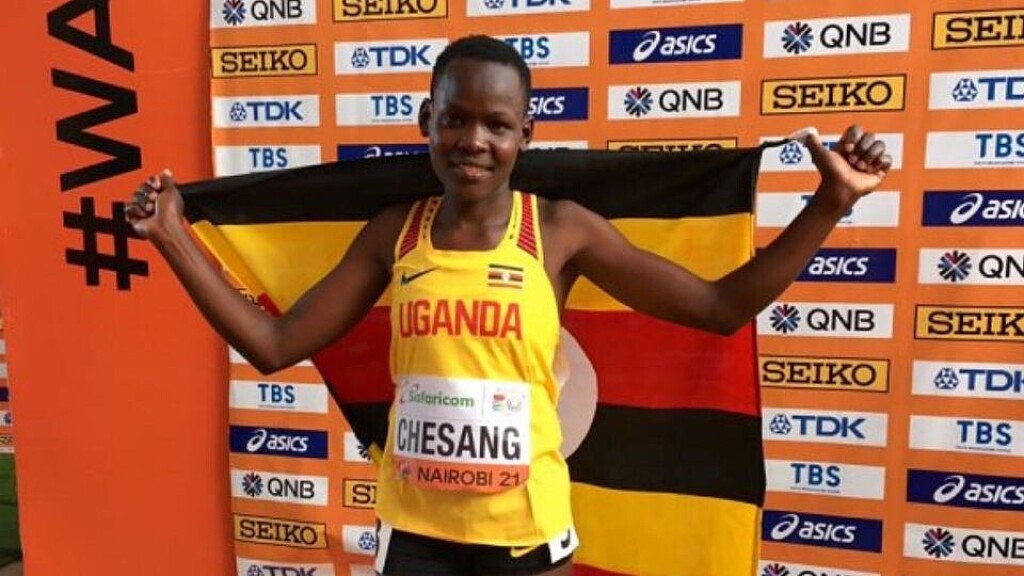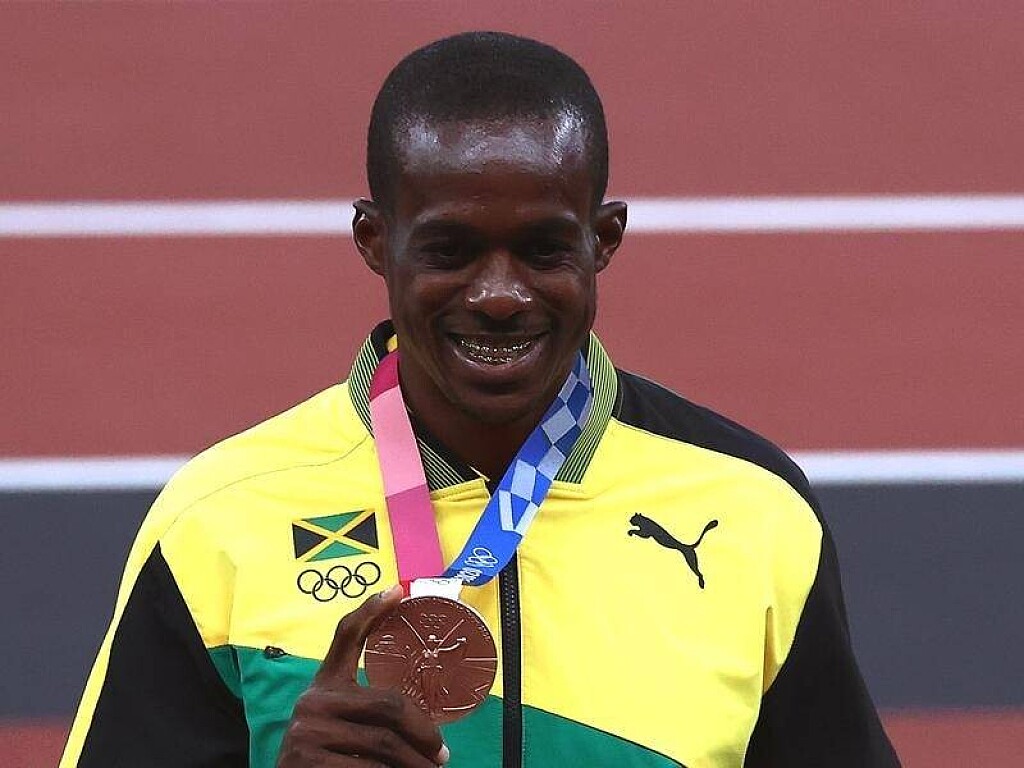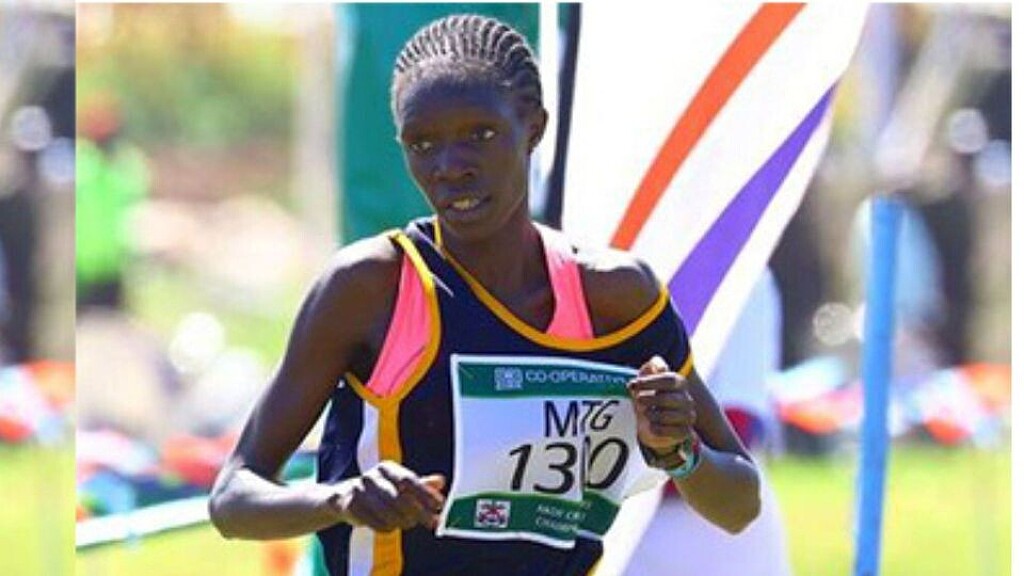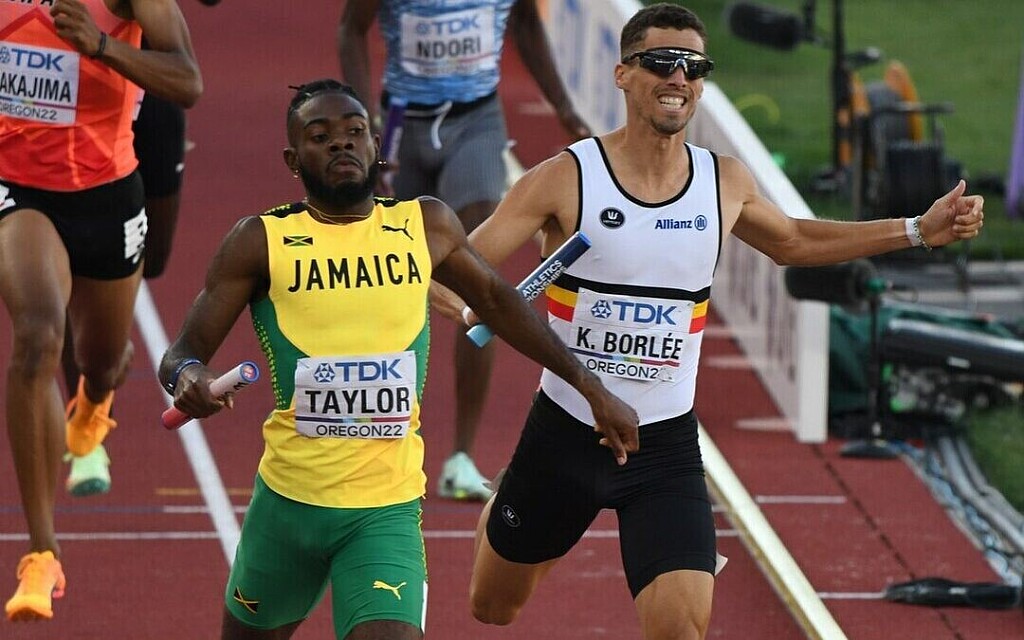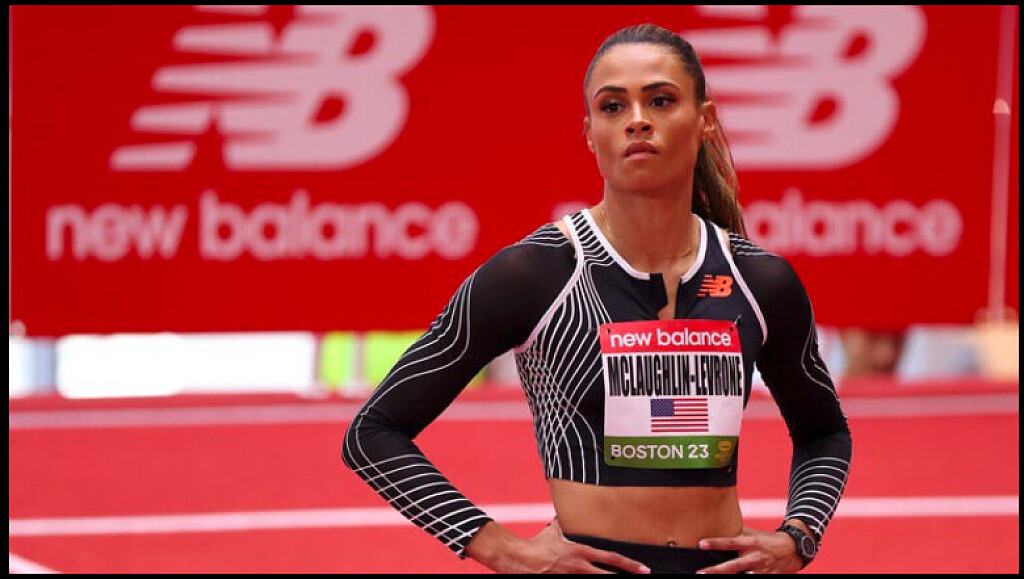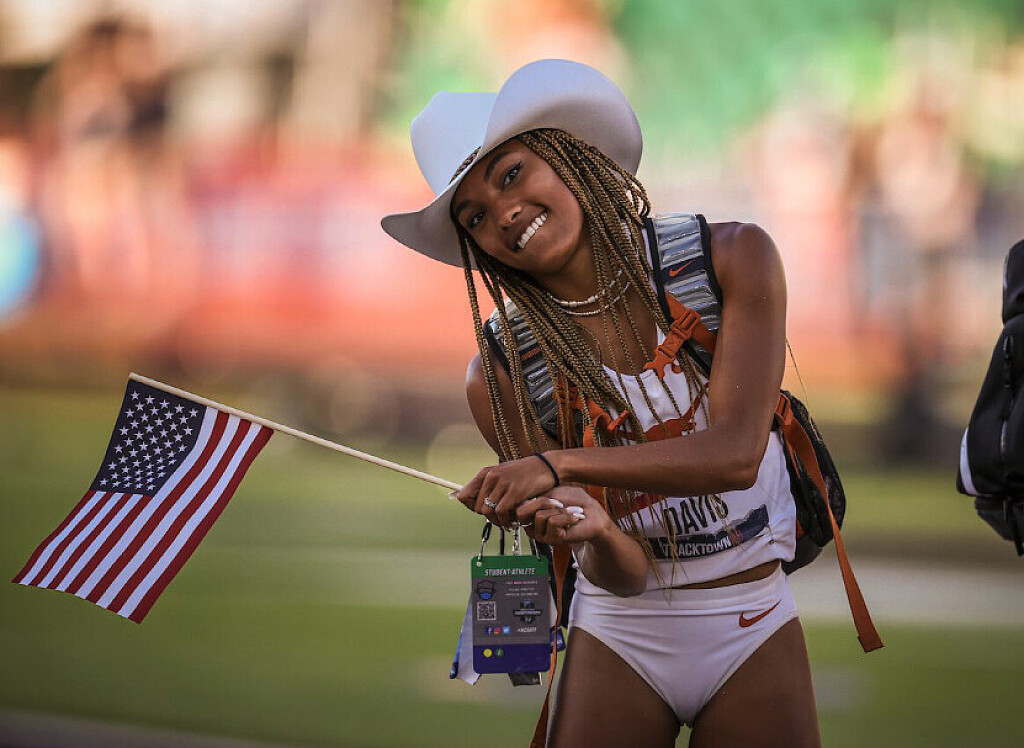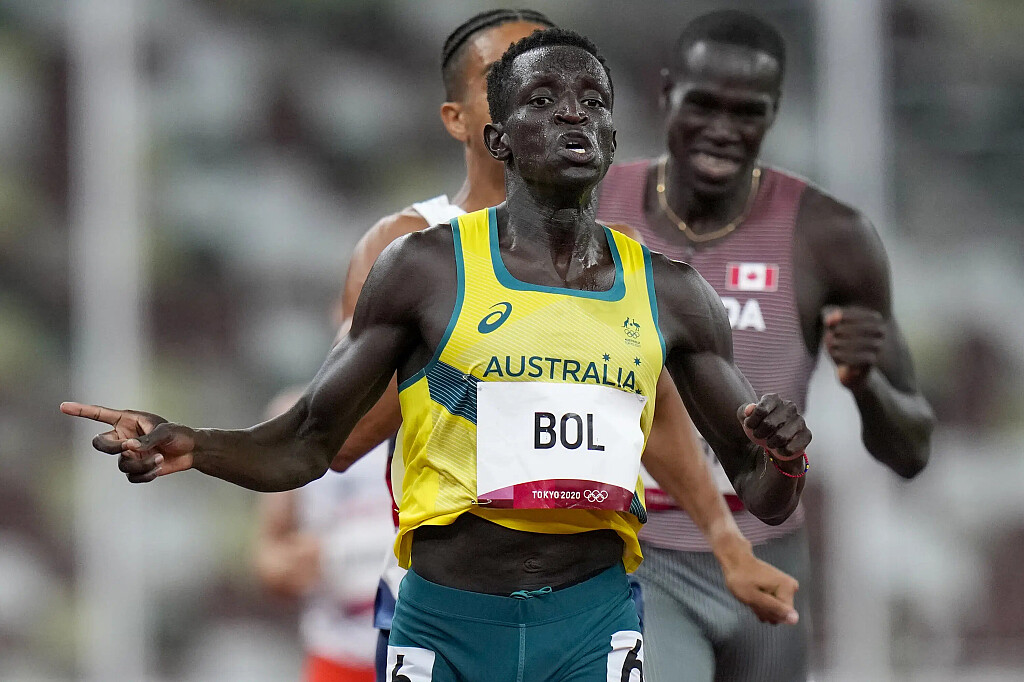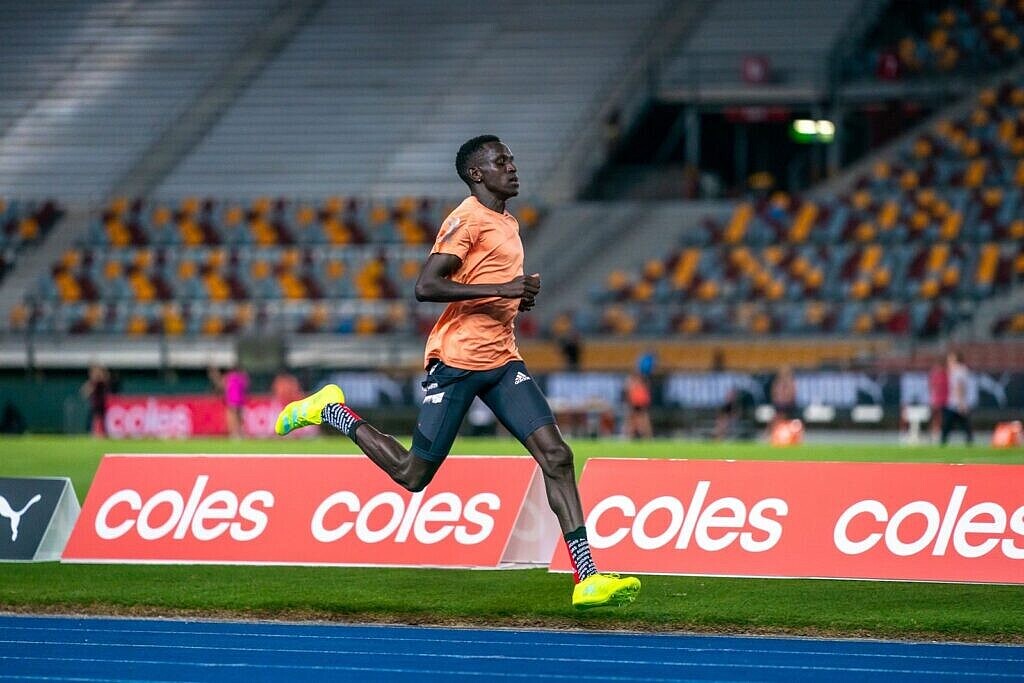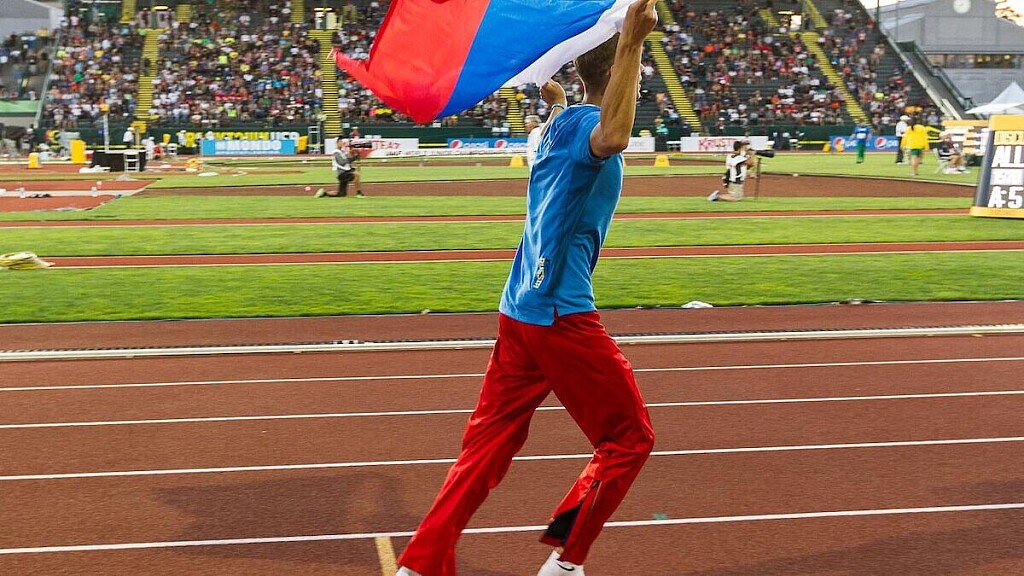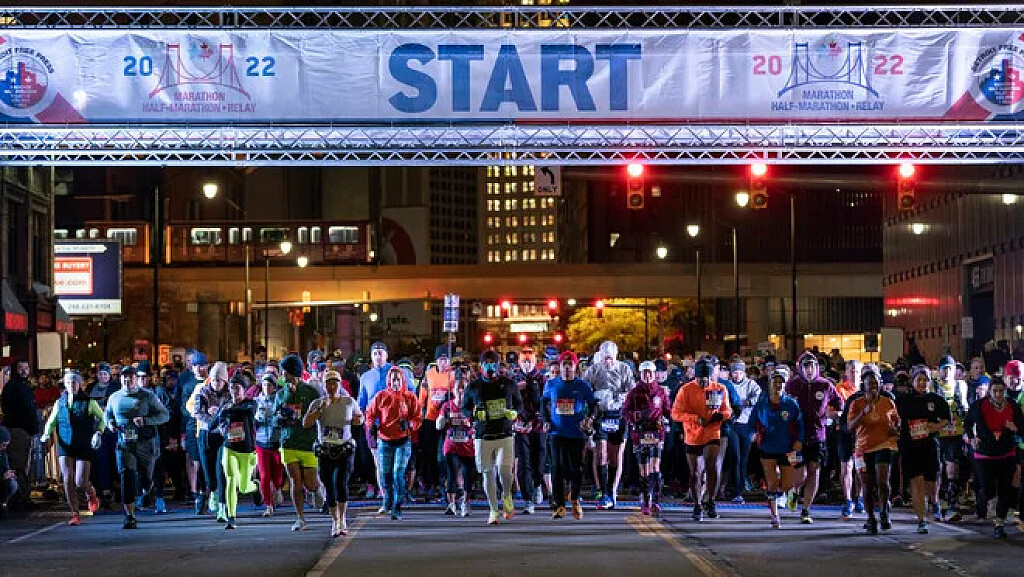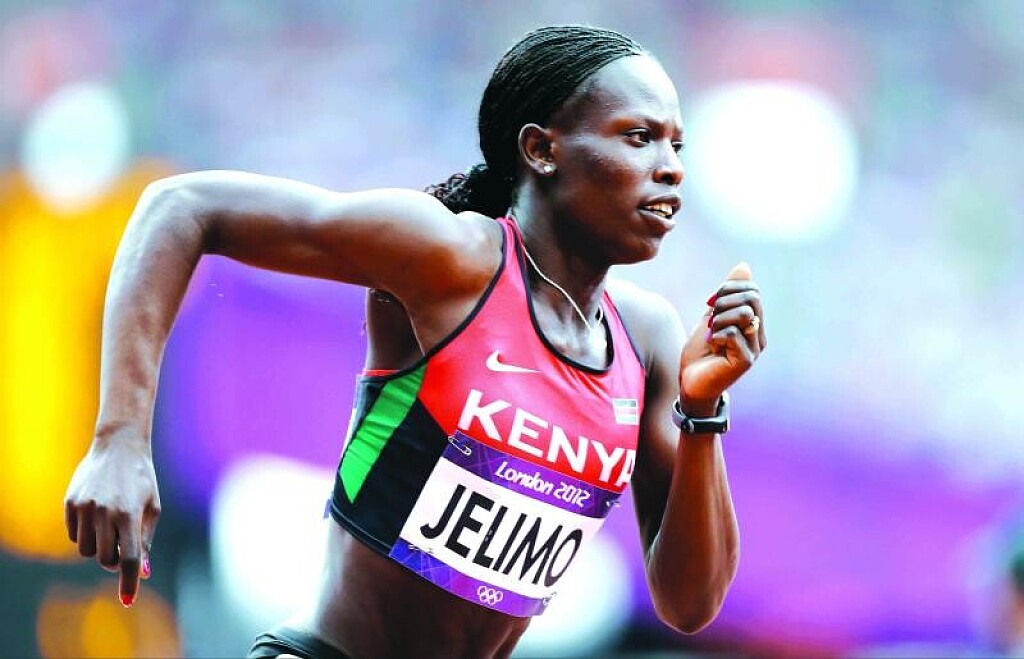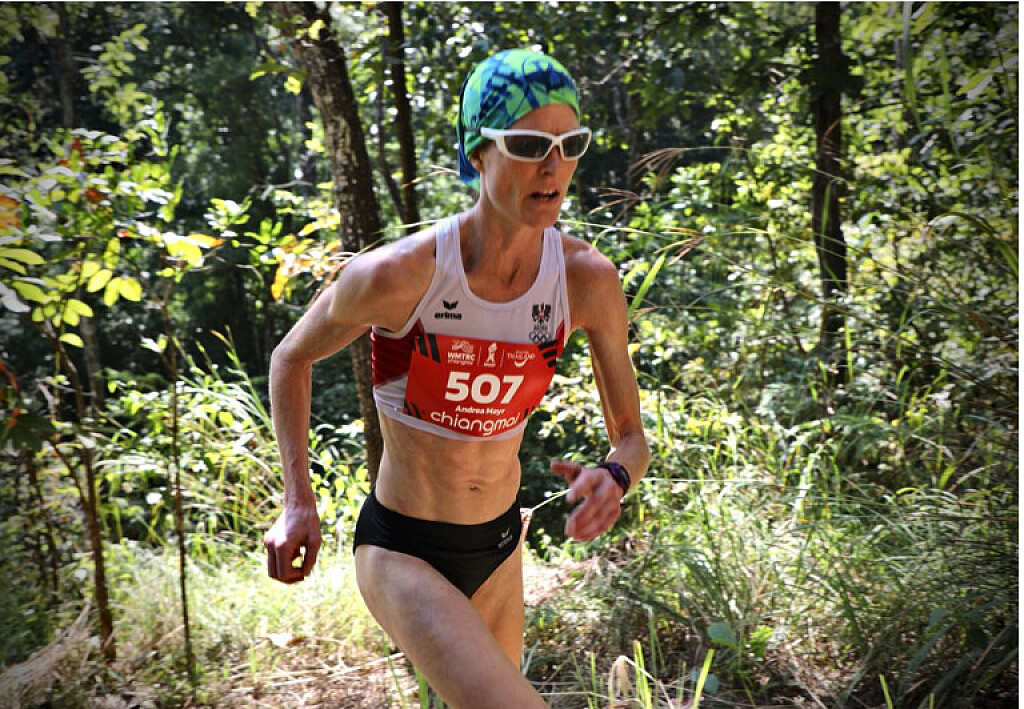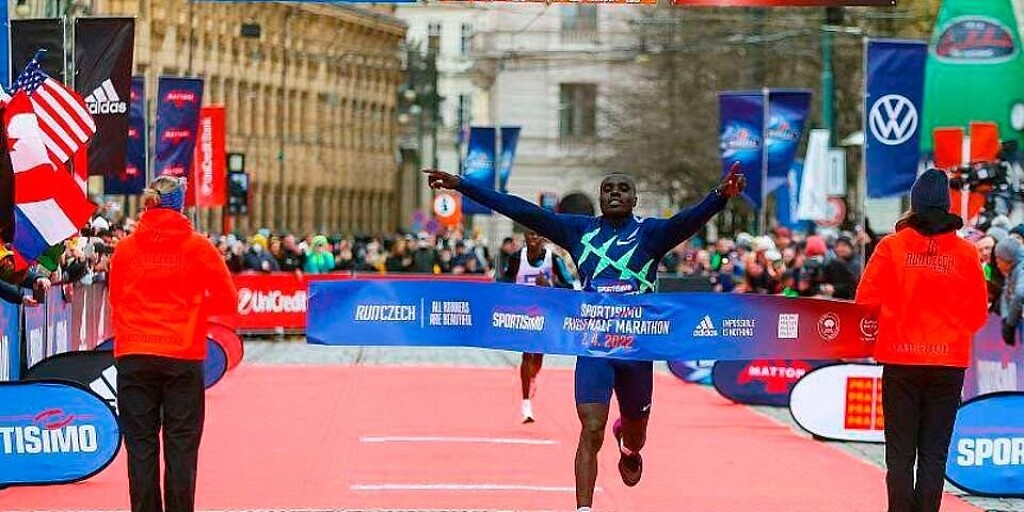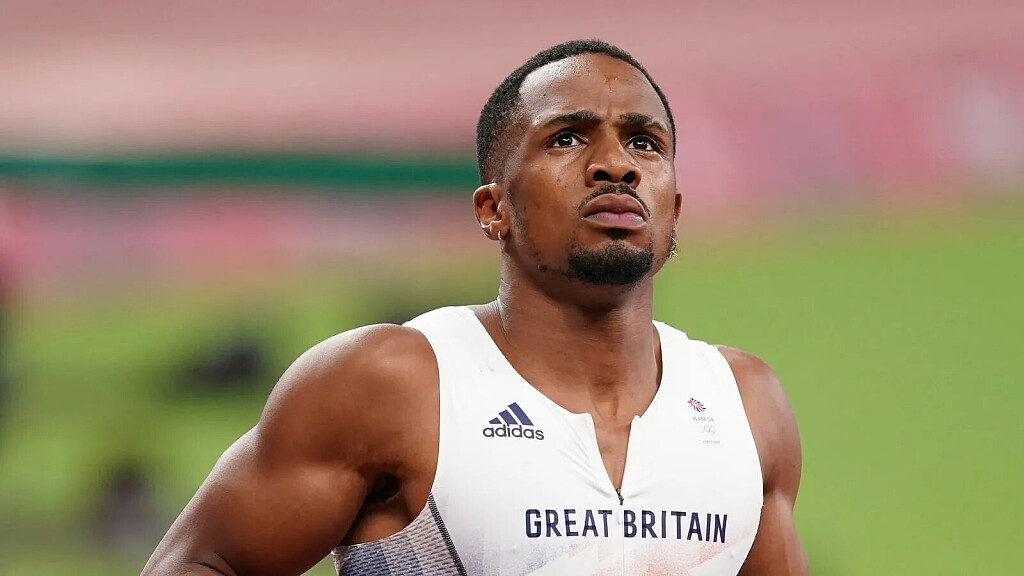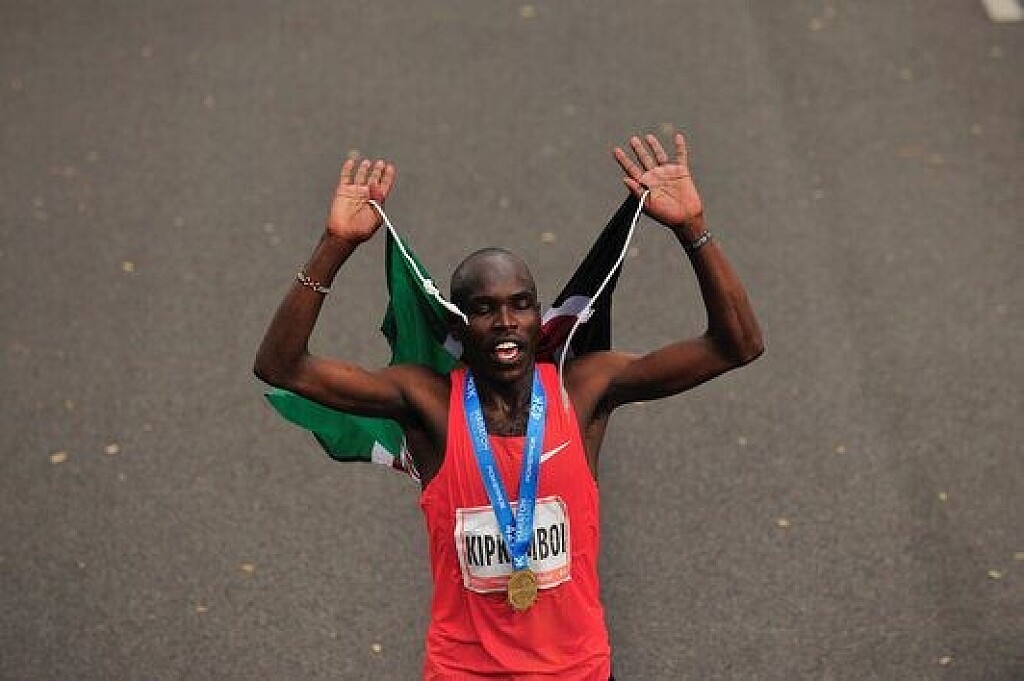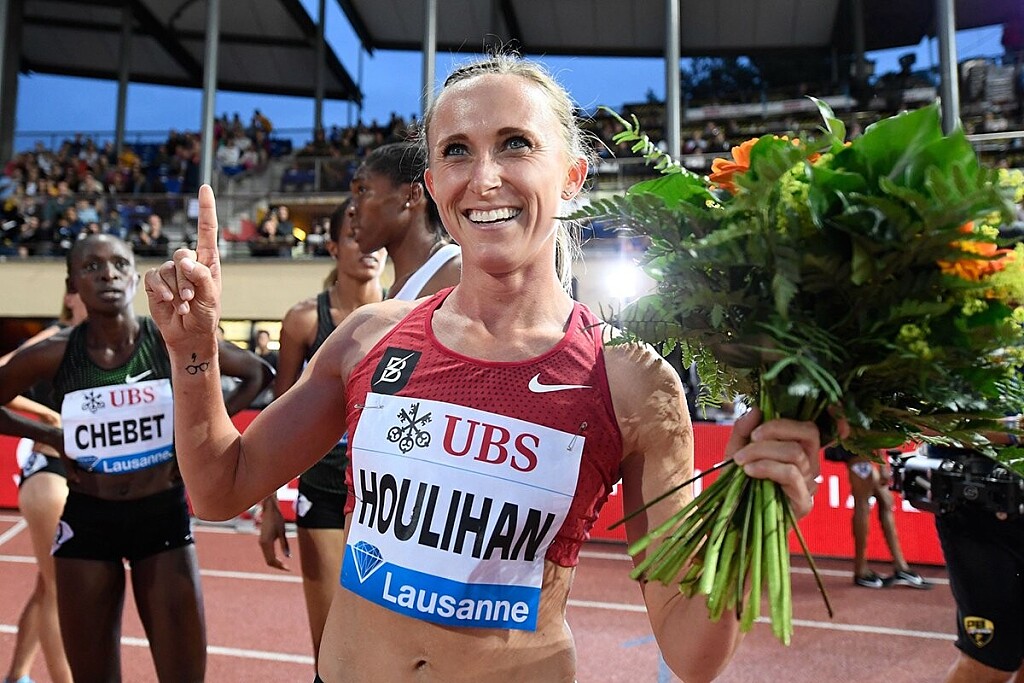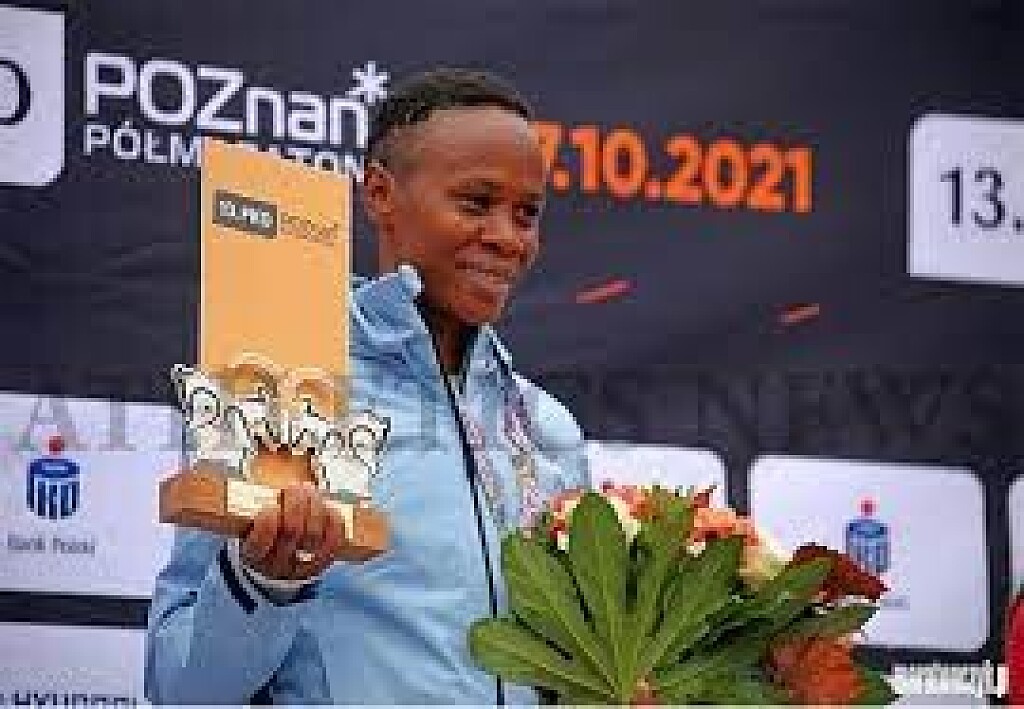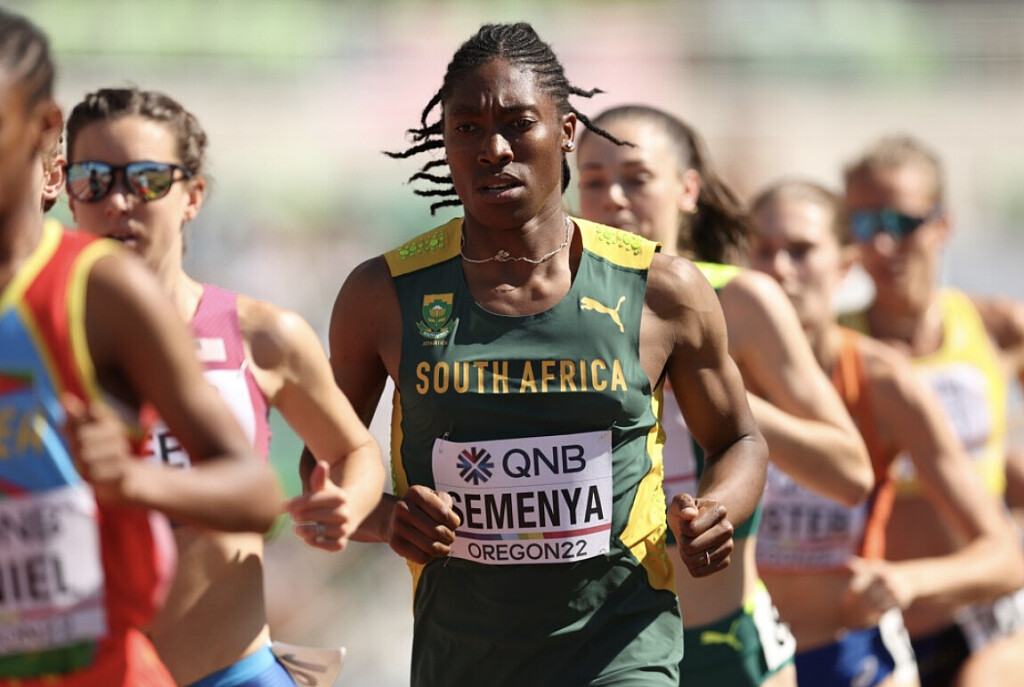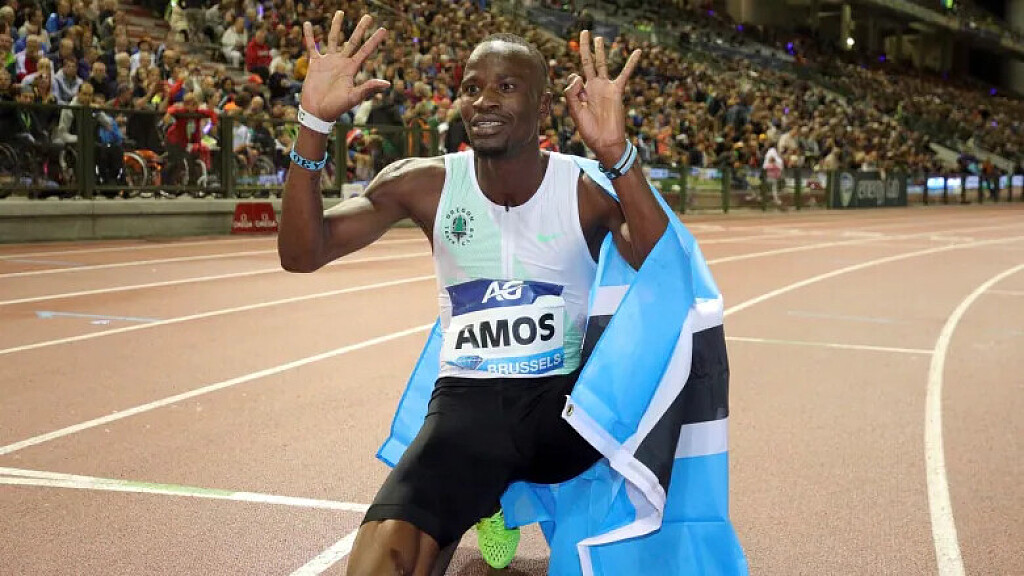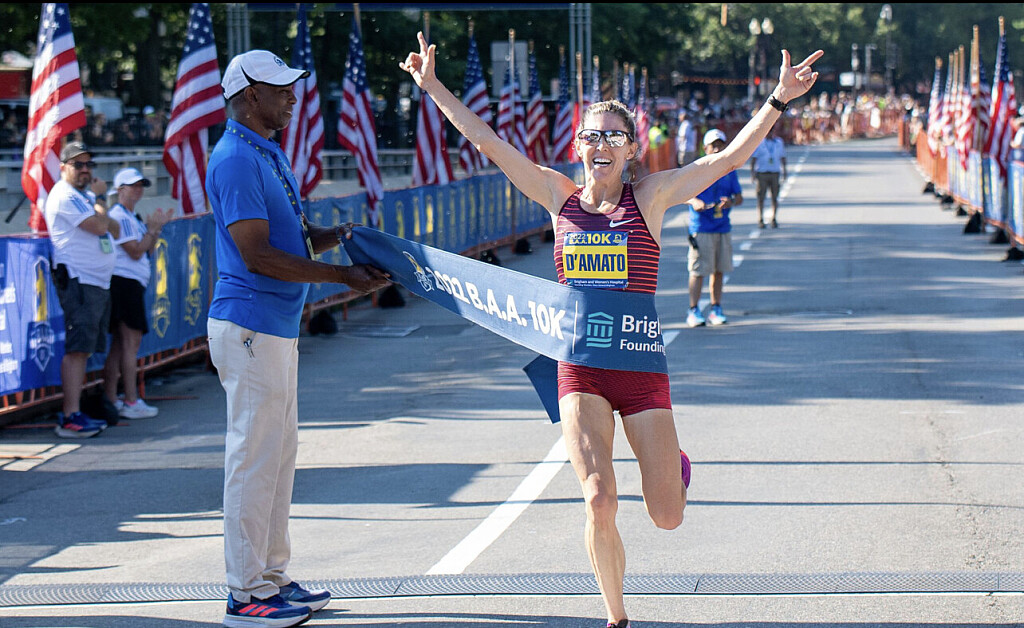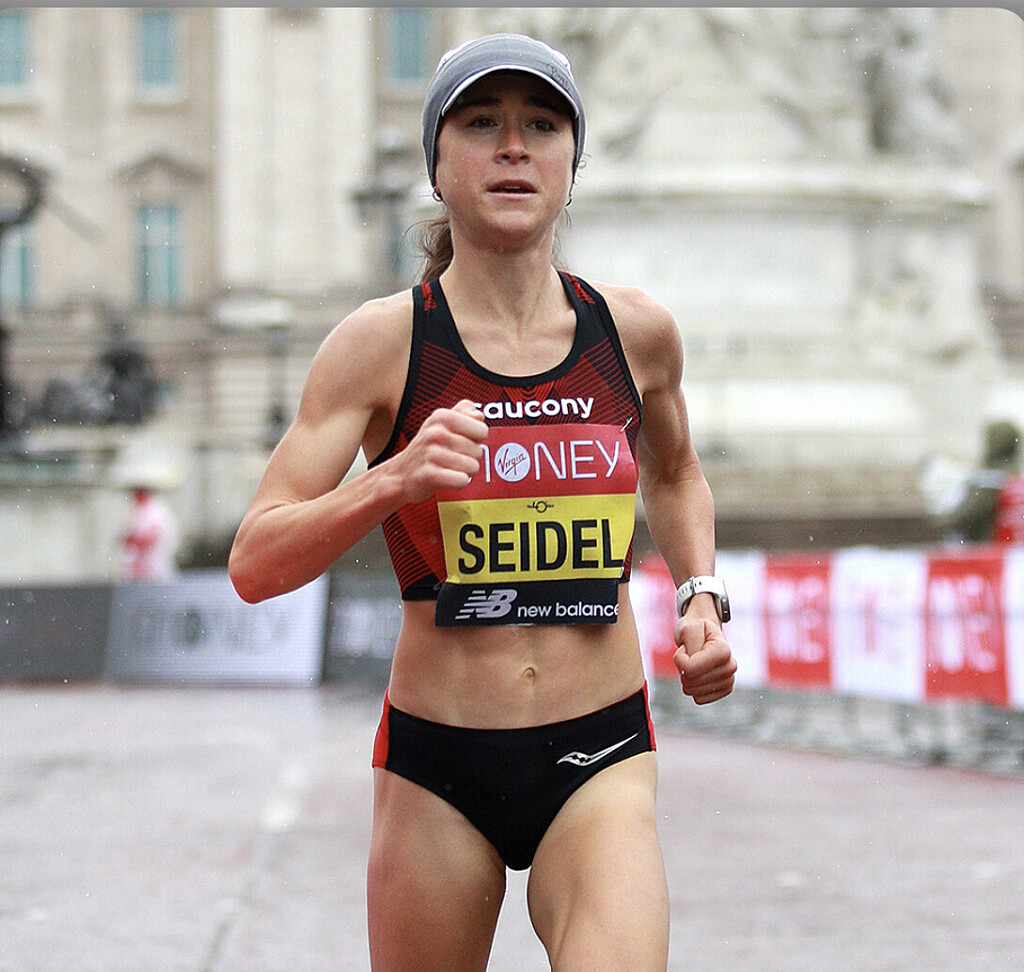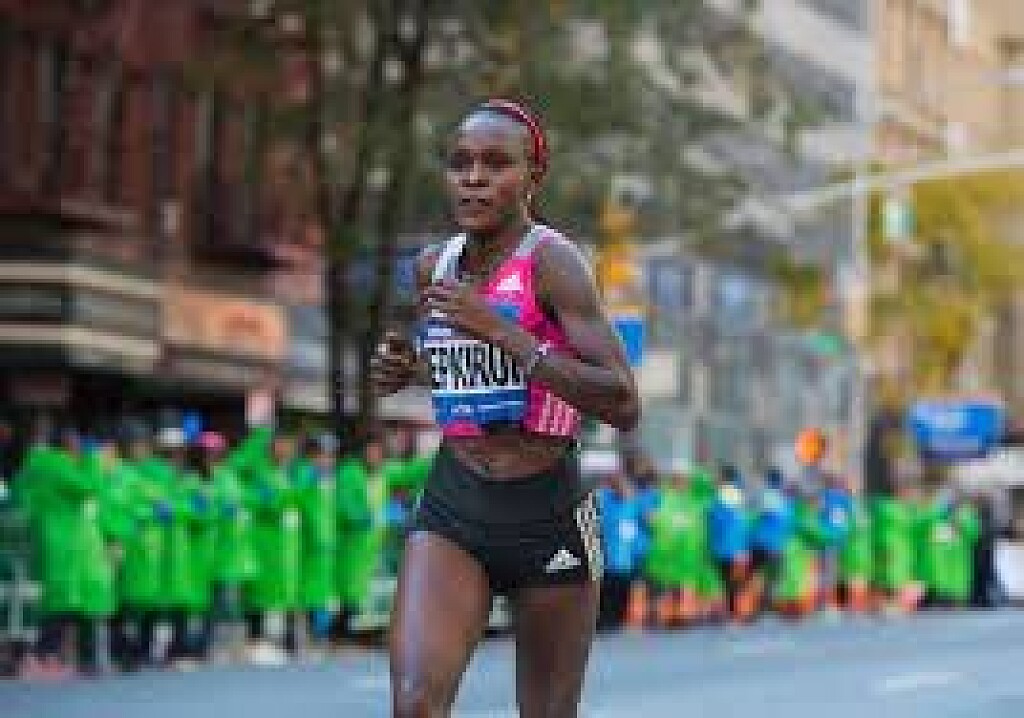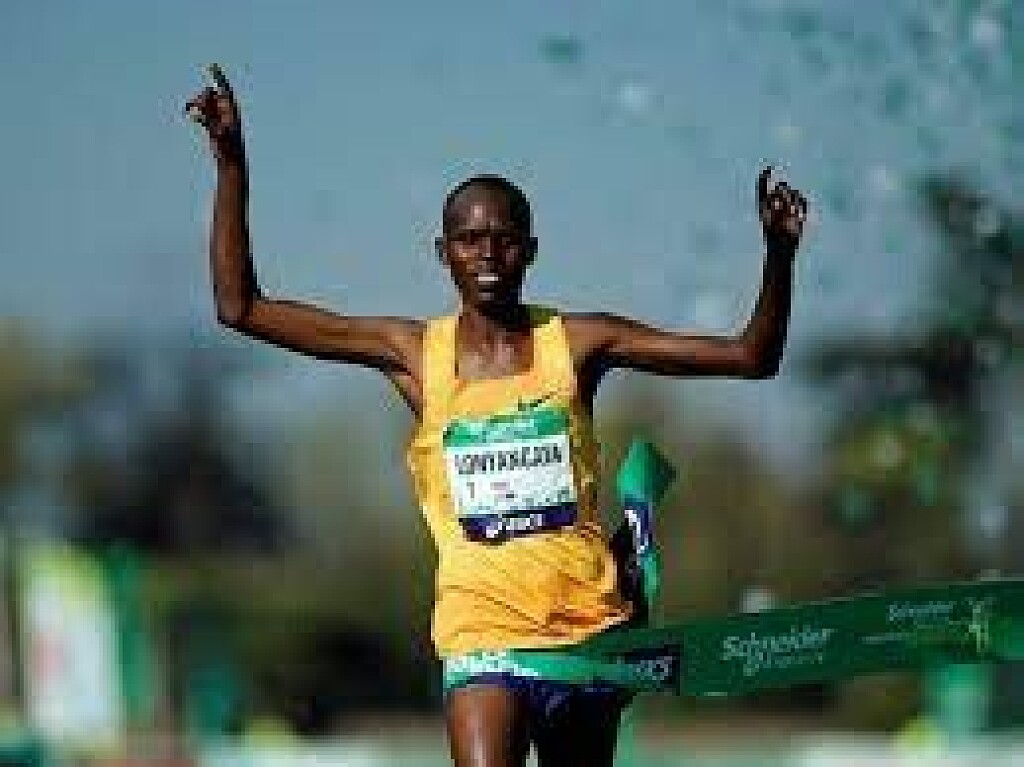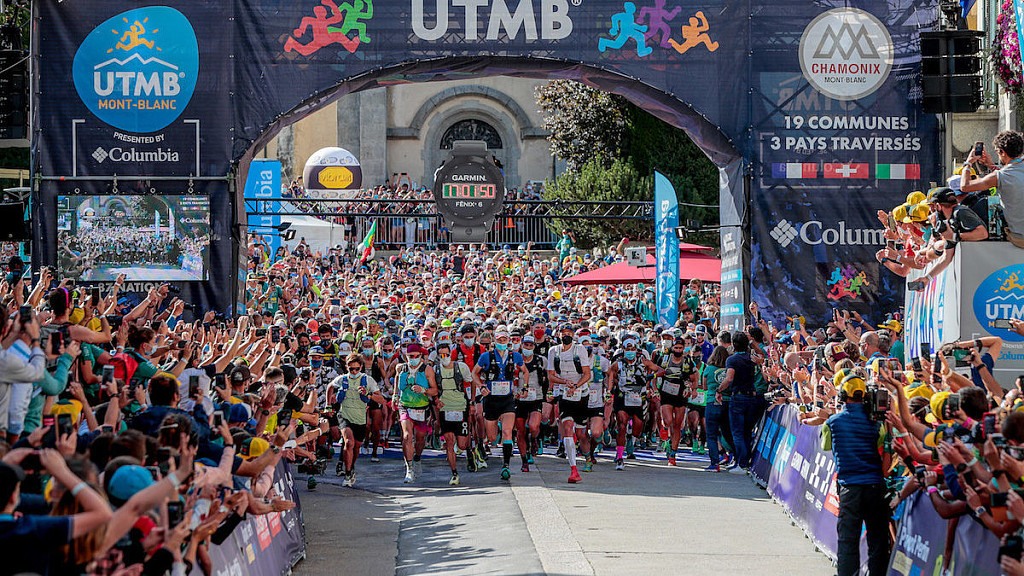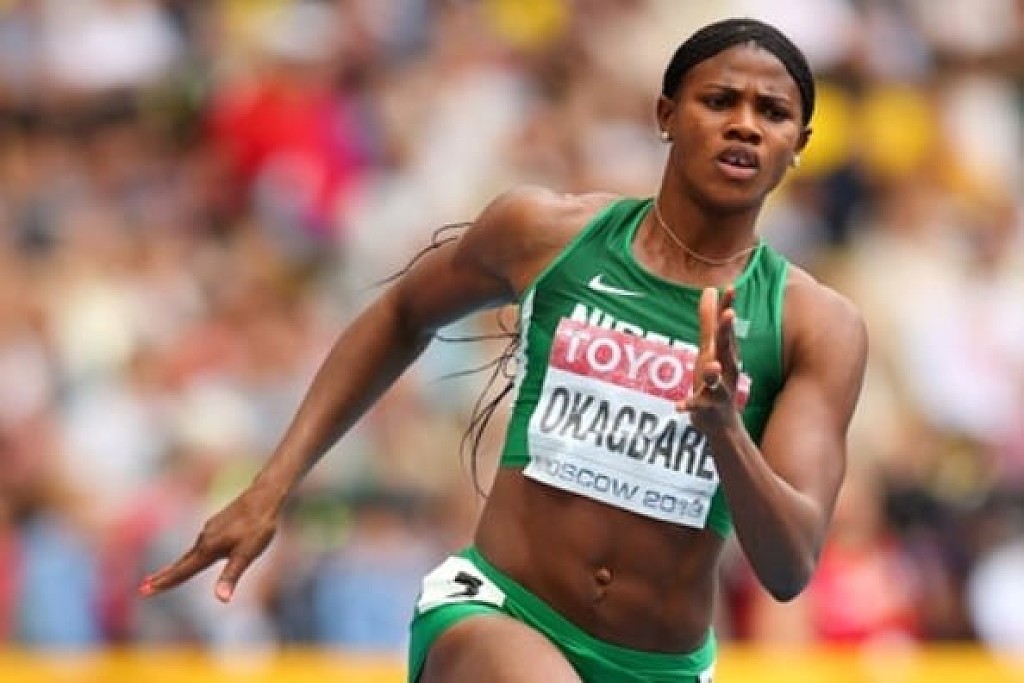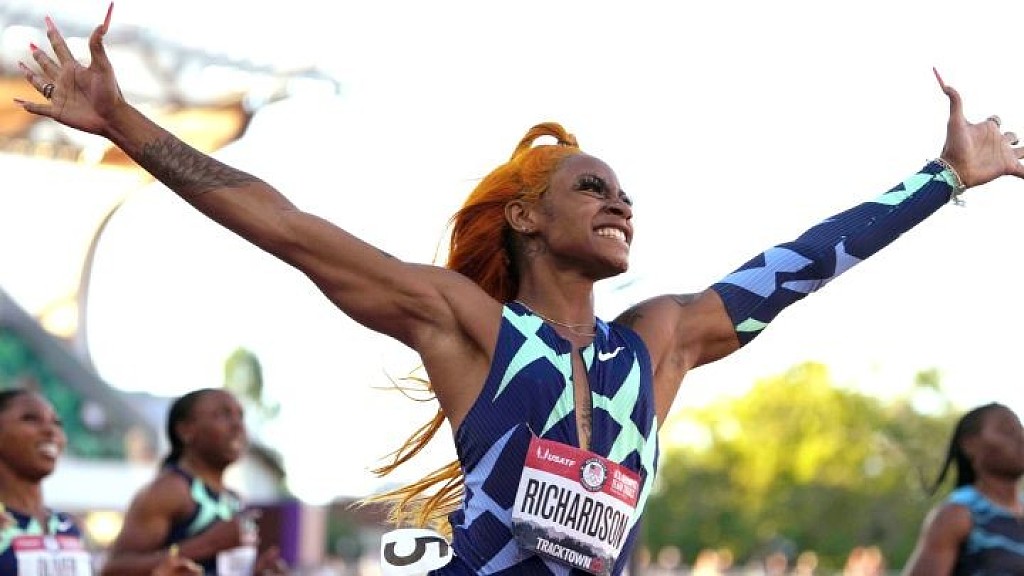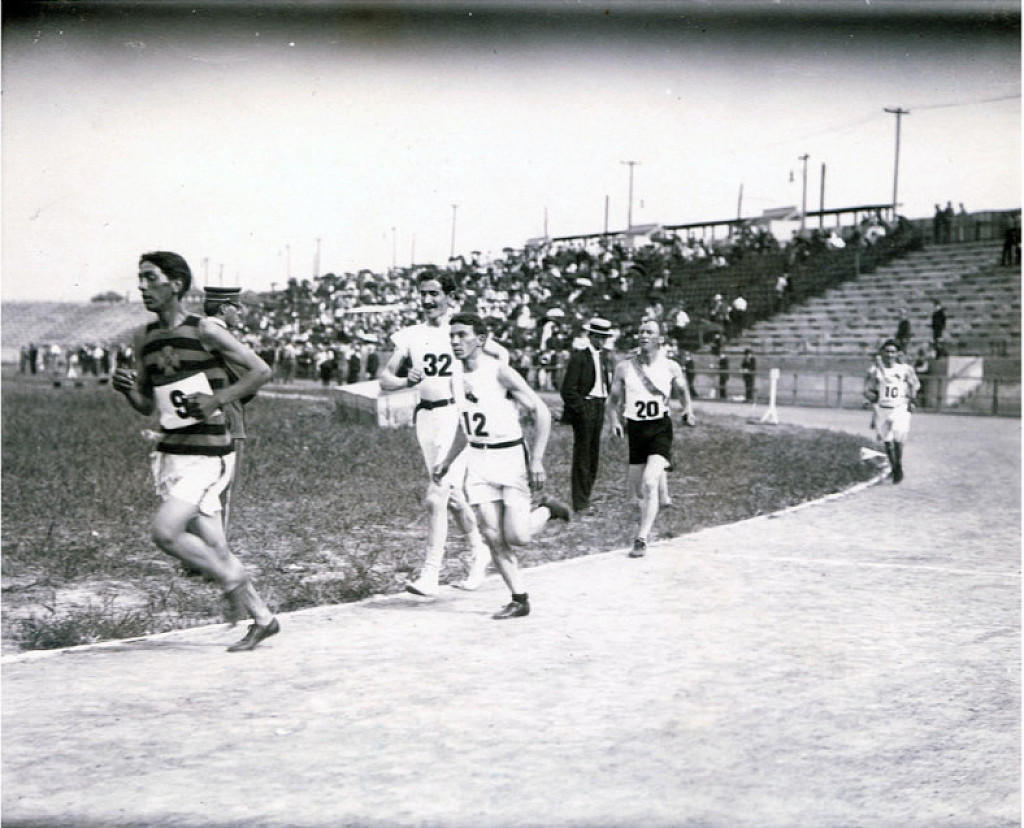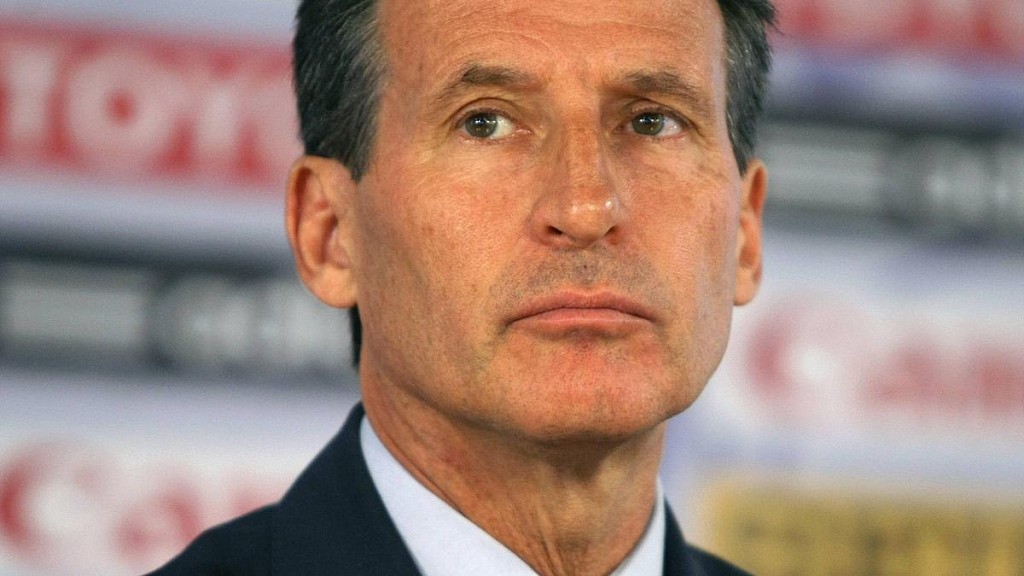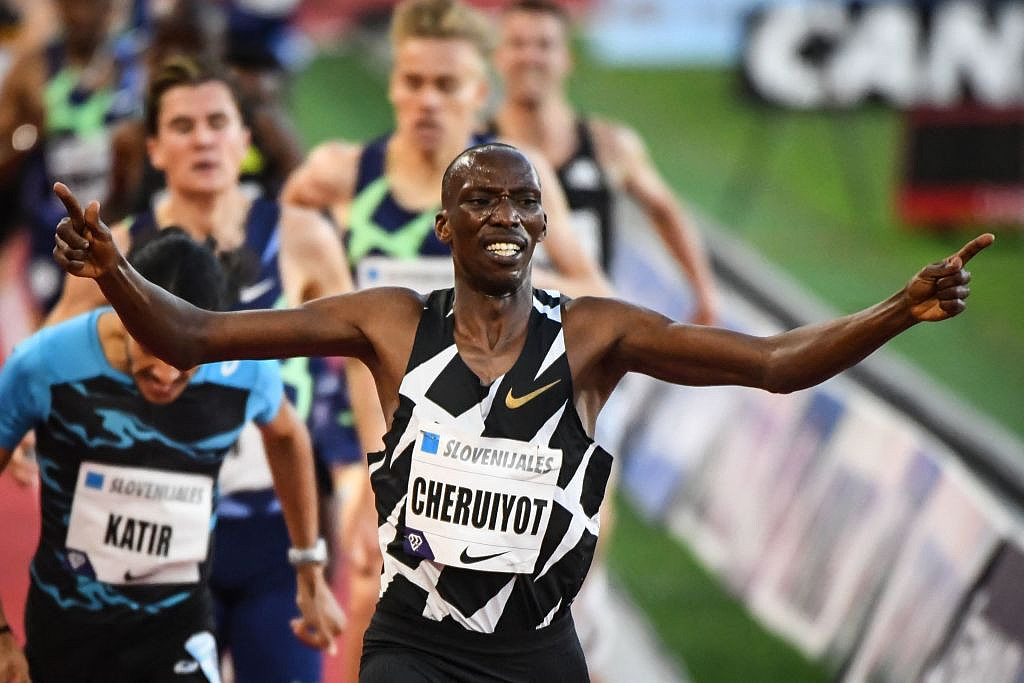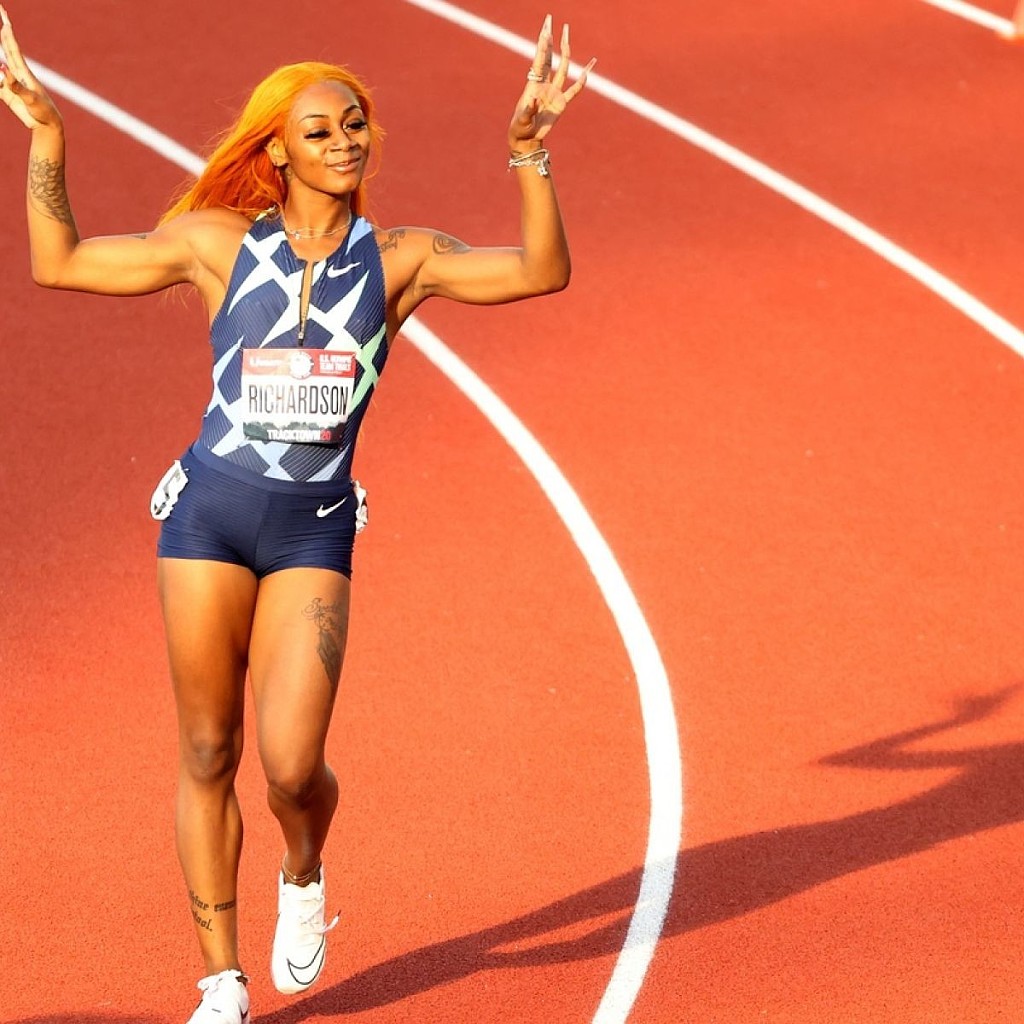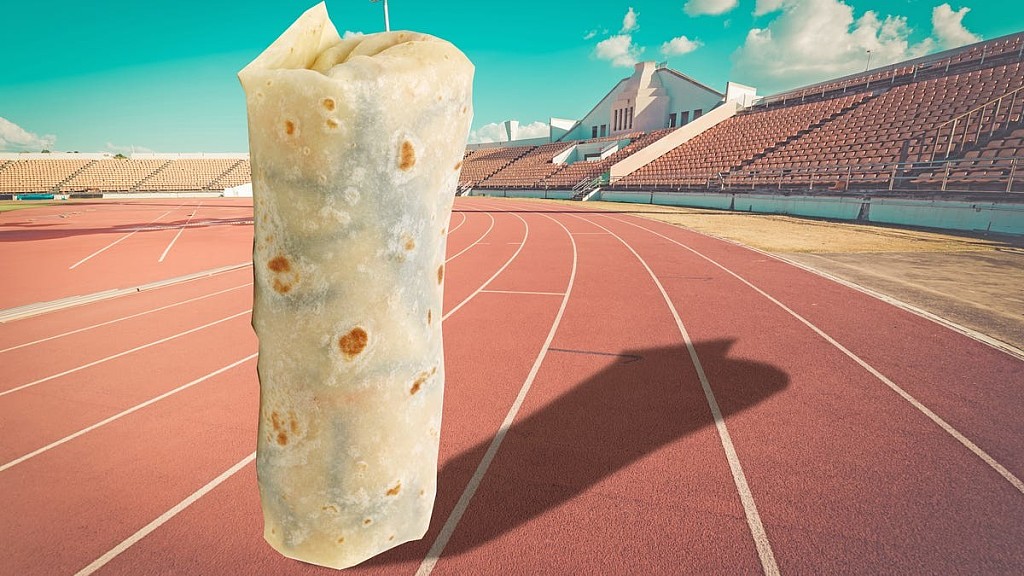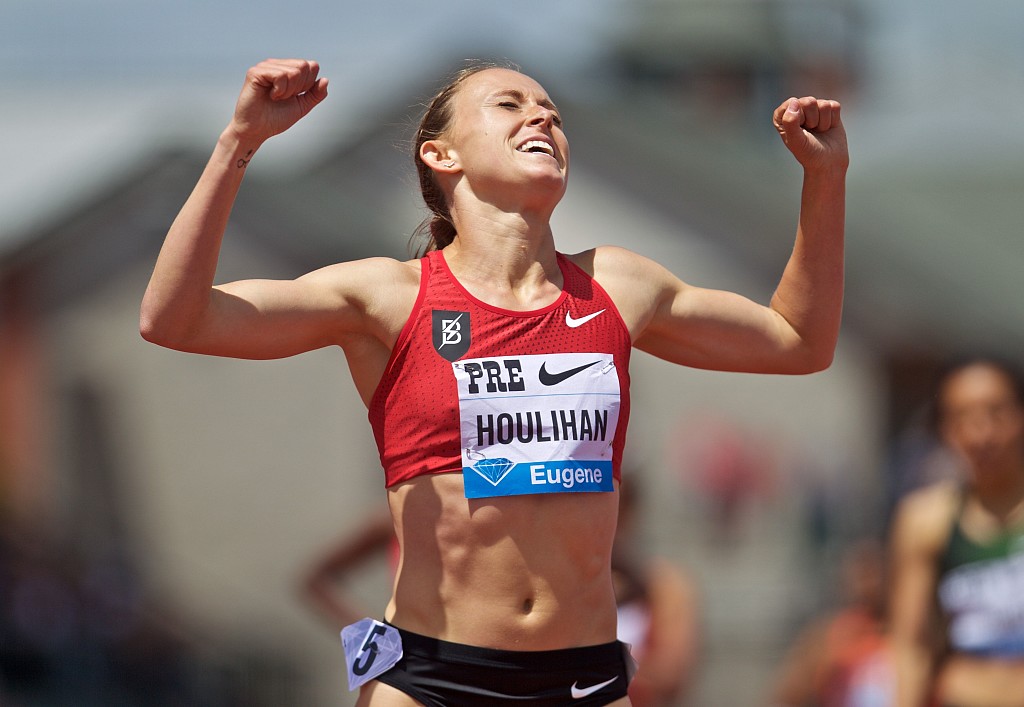Running News Daily
Running News Daily is edited by Bob Anderson. Send your news items to bob@mybestruns.com Advertising opportunities available. Train the Kenyan Way at KATA Kenya and Portugal owned and operated by Bob Anderson. Be sure to catch our movie A Long Run the movie KATA Running Camps and KATA Potato Farms - 31 now open in Kenya! https://kata.ke/
Index to Daily Posts · Sign Up For Updates · Run The World Feed
Articles tagged #World Anti-Doping Agency
Today's Running News
Doping Dilemma: How WADA's Policies Are Failing Our Sport
I am alarmed by how the World Anti-Doping Agency (WADA) is policing our sport. It's disheartening to see athletes win races only to be stripped of their titles months later due to delayed doping allegations. This approach undermines the integrity of athletics and, in the long run, does more harm than good.
Having dedicated my life to running—I ran my first mile on February 16, 1962, and I discovered my passion for our sport after clocking a 2:08.5 in a 880-yard race JUne 1, 1963—I've witnessed the sport's evolution firsthand. As the founder and publisher of Runner’s World for 18 years and, since 2007, the editor and publisher of My Best Runs, I am concerned about the professional side of athletics.

The Flaws in WADA's Zero-Tolerance Policy
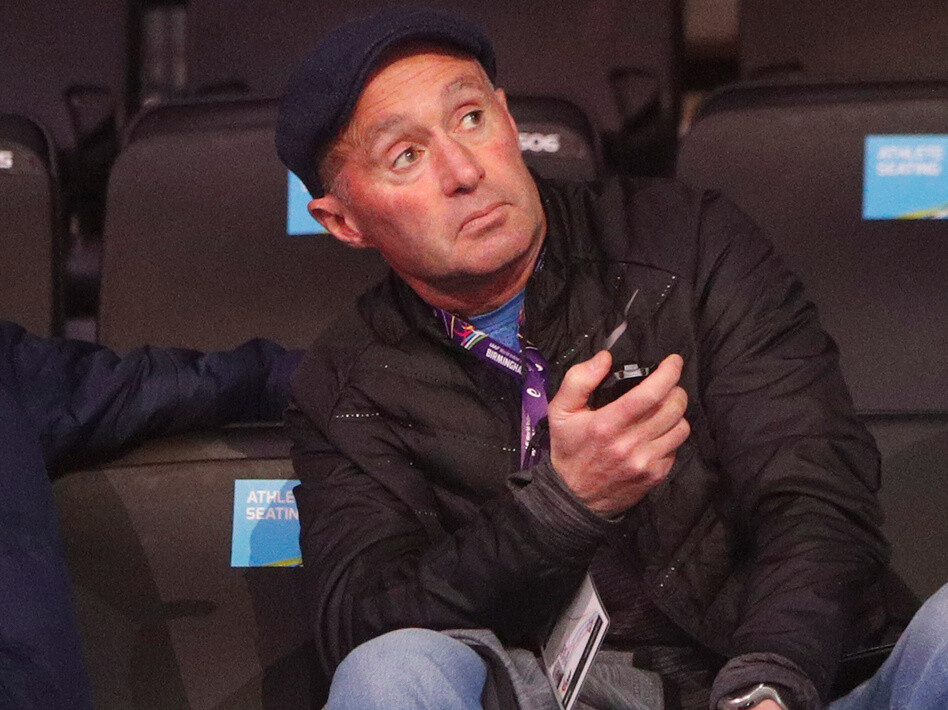
WADA's strict liability standard holds athletes accountable for any prohibited substance in their system, regardless of intent. This has led to controversial sanctions, such as the four-year ban of American runner Shelby Houlihan. She tested positive for the steroid nandrolone, which she attributed to consuming a pork burrito. Despite her defense, the ban was upheld, raising questions about the fairness of such rigid policies.
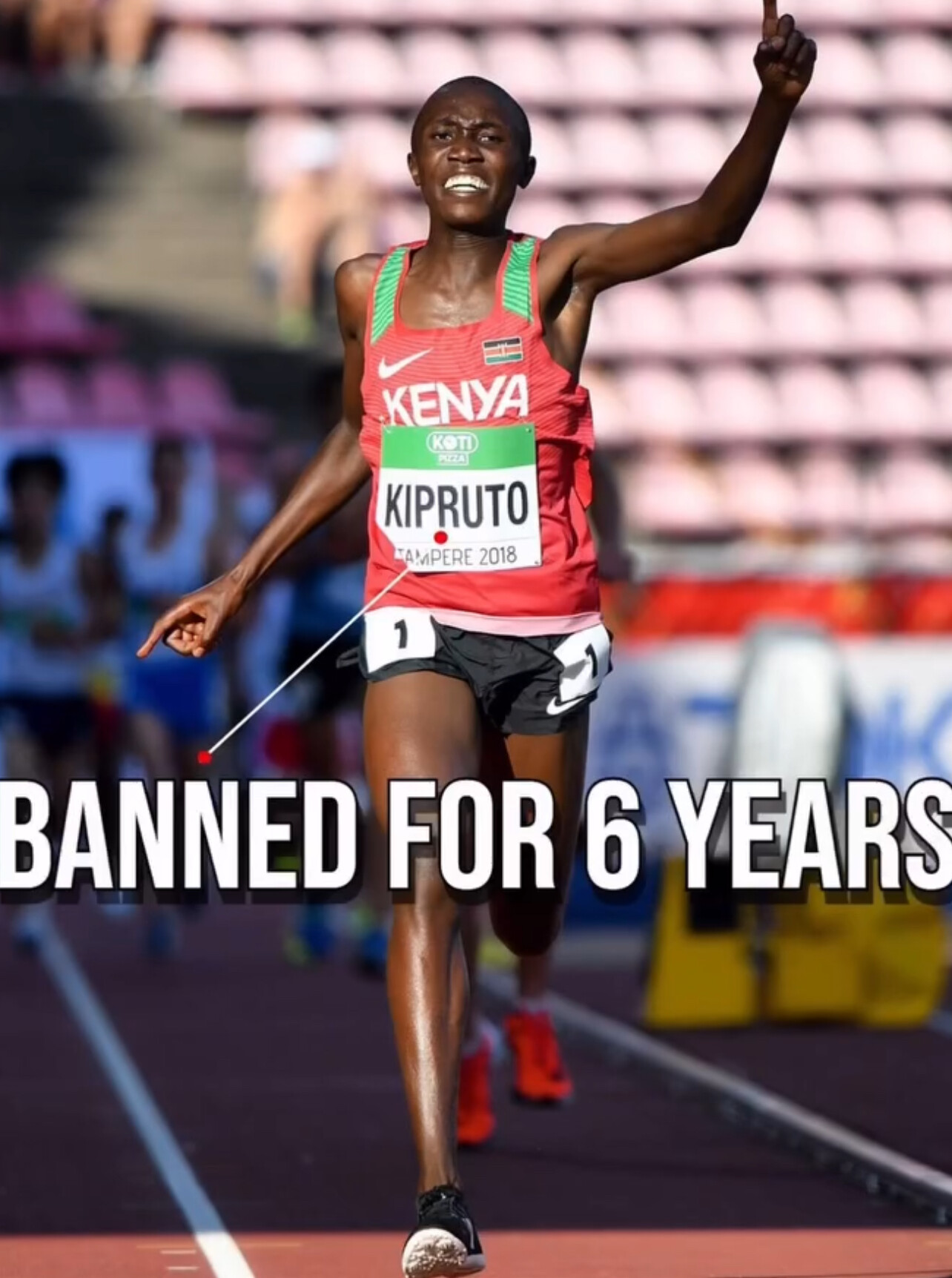
Overhauling the Banned Substances List
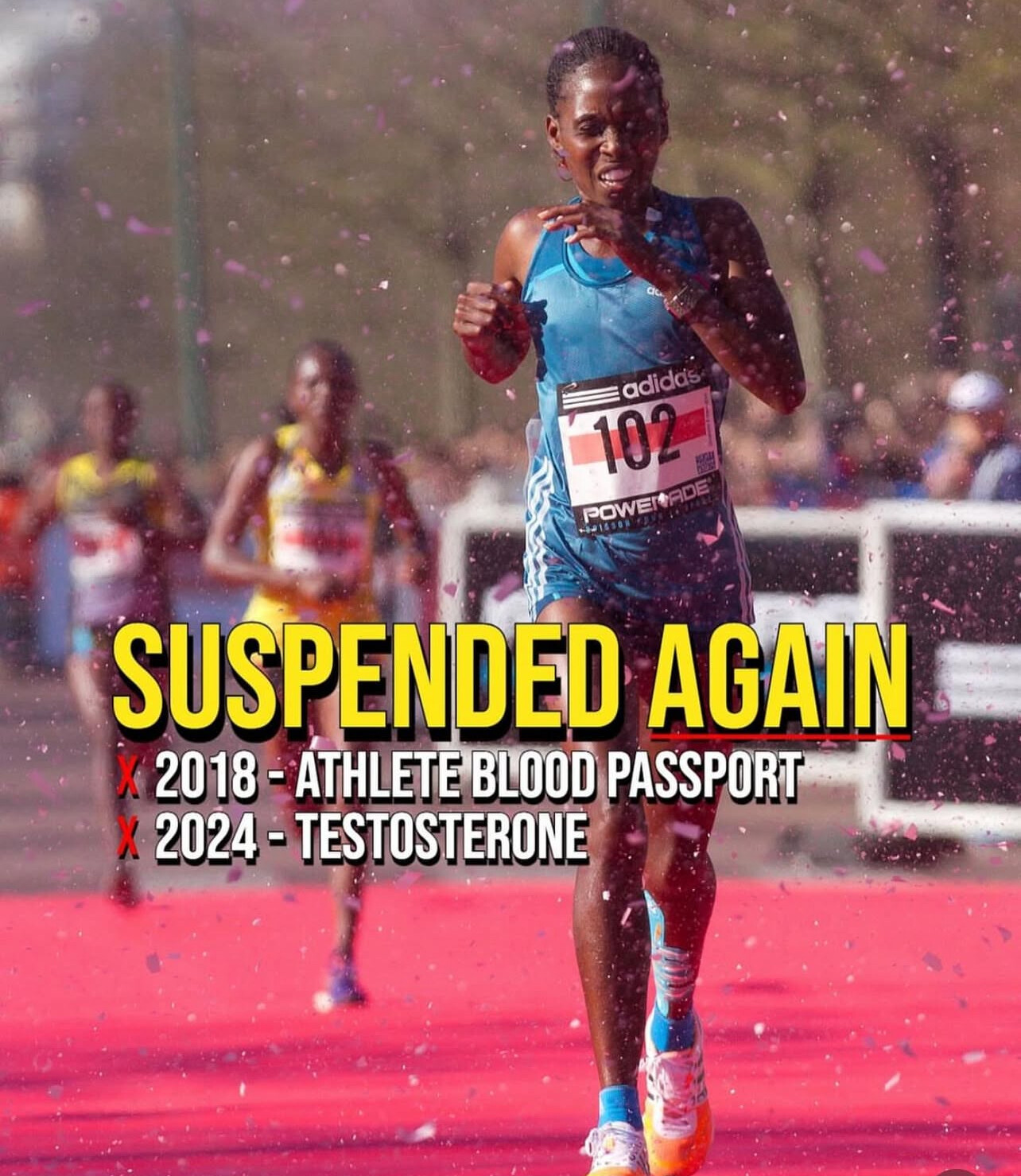
The extensive list of prohibited substances maintained by WADA includes compounds with minimal or no performance-enhancing effects. By focusing on substances with proven performance benefits, we can prevent athletes from being unjustly penalized for trace amounts of inconsequential substances.

The Problem with Retroactive Disqualifications
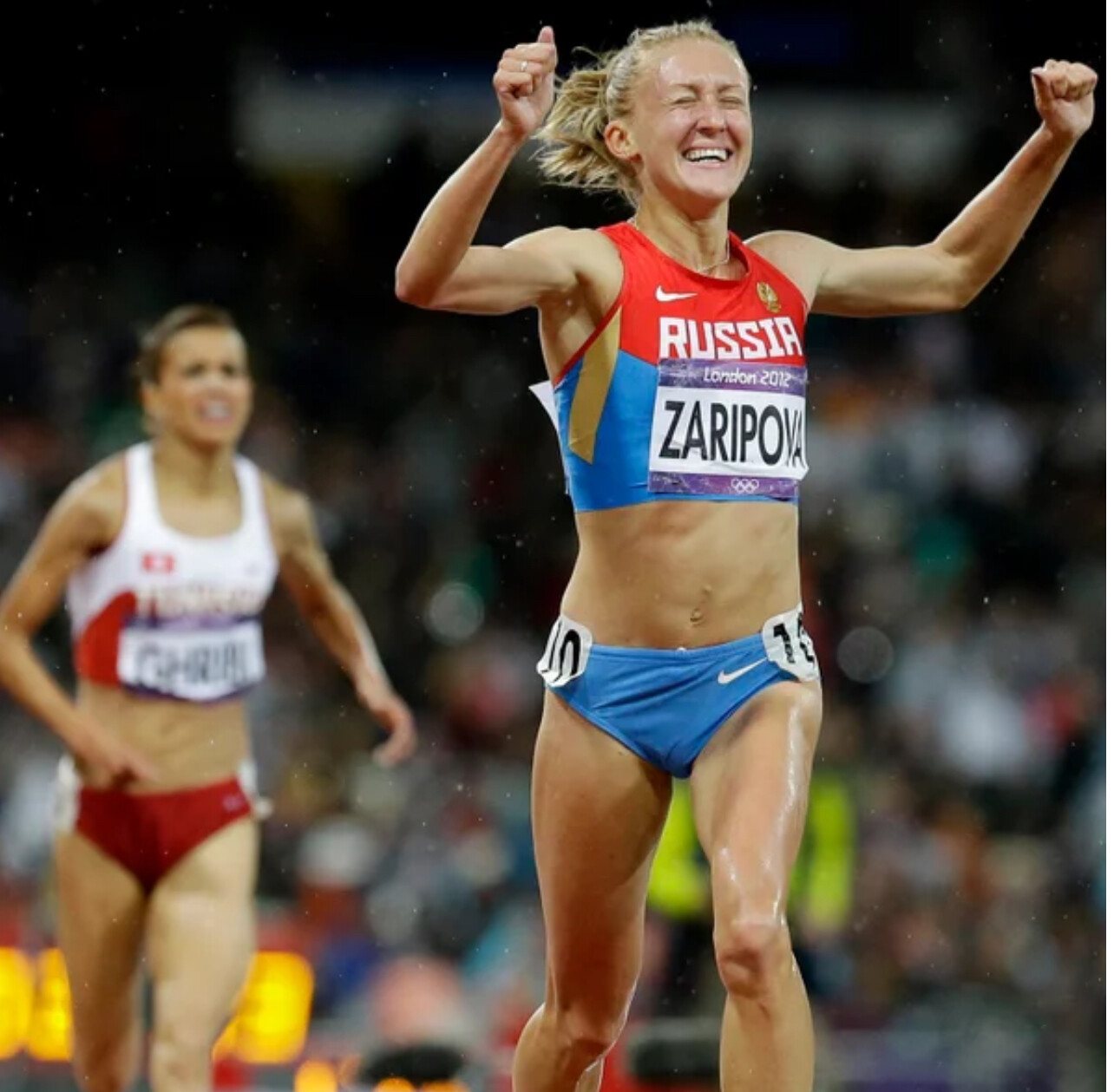
Delayed disqualifications due to retroactive positive tests cause significant disruptions. Athletes are stripped of titles months or even years after competitions, leading to uncertainty and diminished trust in the sport. Investing in faster, more sensitive testing methods is crucial to detect violations promptly, ensuring that competition results are reliable and fair.
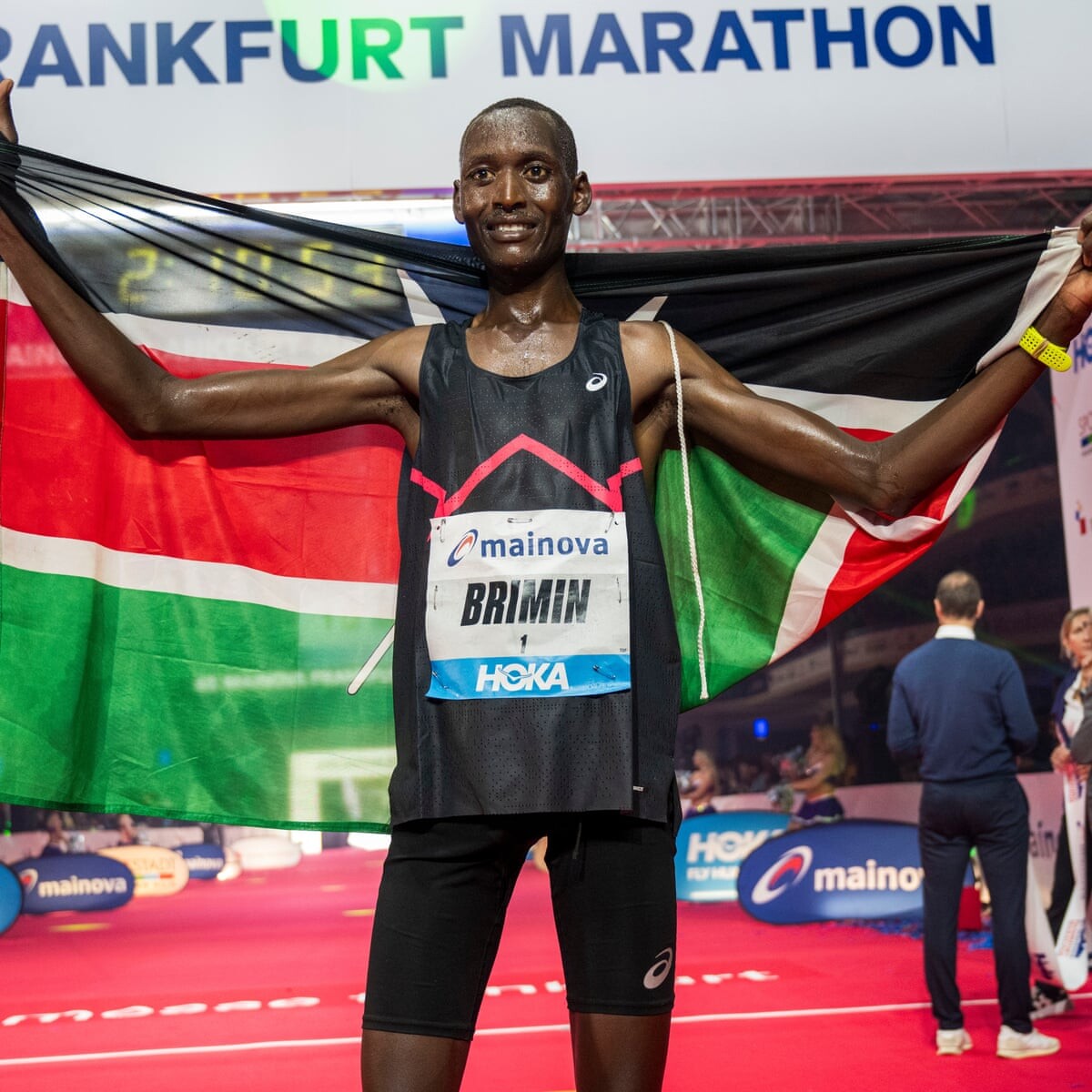
Rethinking the "Whereabouts" Requirement
WADA's "whereabouts" rule mandates that athletes provide their location for one hour each day to facilitate out-of-competition testing. This constant monitoring infringes on athletes' privacy rights and imposes an unreasonable burden. Reevaluating this policy could help balance effective anti-doping measures with respect for personal freedoms.
Understanding Blood Doping and Its Implications
Blood doping, which involves increasing red blood cells to enhance performance, poses significant health risks, including blood clots, stroke, and heart attack. While it's linked to deaths in sports like cycling, there is no documented case of a runner dying directly from blood doping.
Interestingly, many doping violations involve substances like erythropoietin (EPO), which, despite health risks, haven't been directly linked to fatalities among runners. In contrast, alcohol—a legal substance—is responsible for approximately 3 million deaths worldwide annually. This disparity raises questions about the consistency of current substance regulations in sports.
The Business of Anti-Doping
Established in 1999 with an initial operating income of USD 15.5 million, WADA's budget has grown significantly, reaching USD 46 million in 2022. This increase reflects the expanding scope of WADA's activities, including research, education, and compliance monitoring.
Funding is primarily sourced from public authorities and the sports movement, with the International Olympic Committee (IOC) being a major contributor. Notably, in 2024, the United States withheld over USD 3.6 million—about 6% of WADA's annual budget—due to disputes over the agency's handling of doping cases.
EPO's Prevalence in Doping Cases
Erythropoietin (EPO) has a history of abuse in endurance sports due to its performance-enhancing capabilities. For example, Kenyan marathon runner Brimin Kipkorir was provisionally suspended in February 2025 after testing positive for EPO and Furosemide. This suspension adds to a series of high-profile doping cases affecting marathon running, especially among Kenyan athletes.
Adapting Governance and Policies to Maintain Trust
High-profile doping scandals have exposed flaws in the governance of athletics. The case of coach Alberto Salazar illustrates the challenges in enforcing anti-doping regulations. Salazar, who led the Nike Oregon Project, was initially banned for four years in 2019 for multiple anti-doping rule violations, including trafficking testosterone and tampering with doping control processes.
In 2021, he received a lifetime ban for sexual and emotional misconduct. His athlete, Galen Rupp, never tested positive for banned substances, yet his reputation suffered due to his association with Salazar. This situation underscores the importance of independent and transparent governance in maintaining the sport's integrity.
The banned drug list
The World Anti-Doping Agency (WADA) maintains a comprehensive list of substances and methods prohibited in sports to ensure fair competition and athlete health. This list is updated annually and includes categories such as:
· Anabolic Agents: These substances, including anabolic-androgenic steroids, promote muscle growth and enhance performance.
· Peptide Hormones, Growth Factors, and Related Substances: Compounds like erythropoietin (EPO) and human growth hormone (hGH) that can increase red blood cell production or muscle mass.
· Beta-2 Agonists: Typically used for asthma, these can also have performance-enhancing effects when misused.
· Hormone and Metabolic Modulators: Substances that alter hormone functions, such as aromatase inhibitors and selective estrogen receptor modulators.
· Diuretics and Masking Agents: Used to conceal the presence of other prohibited substances or to rapidly lose weight.
· Stimulants: Compounds that increase alertness and reduce fatigue, including certain amphetamines.
· Narcotics: Pain-relieving substances that can impair performance and pose health risks.
· Cannabinoids: Including substances like tetrahydrocannabinol (THC), which can affect coordination and concentration.
· Glucocorticoids: Anti-inflammatory agents that, when misused, can have significant side effects.
Additionally, WADA prohibits certain methods, such as blood doping and gene doping, which can artificially enhance performance. It's important to note that while substances like alcohol are legal and widely consumed, they are not banned in most sports despite their potential health risks.
In contrast, substances like EPO, which have not been directly linked to fatalities among runners, are prohibited due to their performance-enhancing effects and potential health risks. This raises questions about the consistency and focus of current substance regulations in sports..
Regarding the percentage of doping violations involving EPO, specific statistics are not readily available. However, EPO has been a focal point in numerous high-profile doping cases, particularly in endurance sports. For detailed and up-to-date information, consulting WADA's official reports and statistics is recommended
Blood Doping Across Sports
Blood doping is prohibited across various sports, particularly those requiring high endurance. The International Olympic Committee (IOC) banned blood doping in 1985, and since then, numerous sports organizations have implemented similar prohibitions. Cycling has been notably affected, with many major champions associated with or suspended for blood doping.
In conclusion, while the fight against doping is essential to maintain fairness in athletics, the current methods employed by WADA may be causing more harm than good. It's imperative to develop more nuanced, fair, and effective anti-doping policies that protect both the integrity of the sport and the rights of its athletes.
by Bob Anderson
Login to leave a comment
2014 Boston Marathon winner to finally receive prize money
10 years after setting the course record, Ethiopia's Buzunesh Deba will be awarded her prize money through the B.A.A.'s new voluntary payments initiative.
On Tuesday, the Boston Athletic Association (B.A.A.), which organizes the Boston Marathon, announced new plans to address prize money discrepancies caused by doping offences over the past 40 years. Starting in January 2025, the B.A.A. will begin issuing voluntary payments to athletes whose results were re-ranked due to disqualifications, dating back to 1986—the year prize money was first introduced.
This announcement is significant for Ethiopian runner Buzunesh Deba and Kenyan athlete Edna Kiplagat, who were both elevated to first place after Kenya’s Rita Jeptoo (2014) and Diana Kipyokei (2021) were disqualified for doping. In Deba’s case, she was originally awarded the second-place prize, but was later recognized as the winner of the 2014 race; she also set the course record of 2:19:59. Despite this, Deba has waited nearly a decade to receive the USD $100,000 owed to her: $75,000 for first place and $25,000 for the course record.
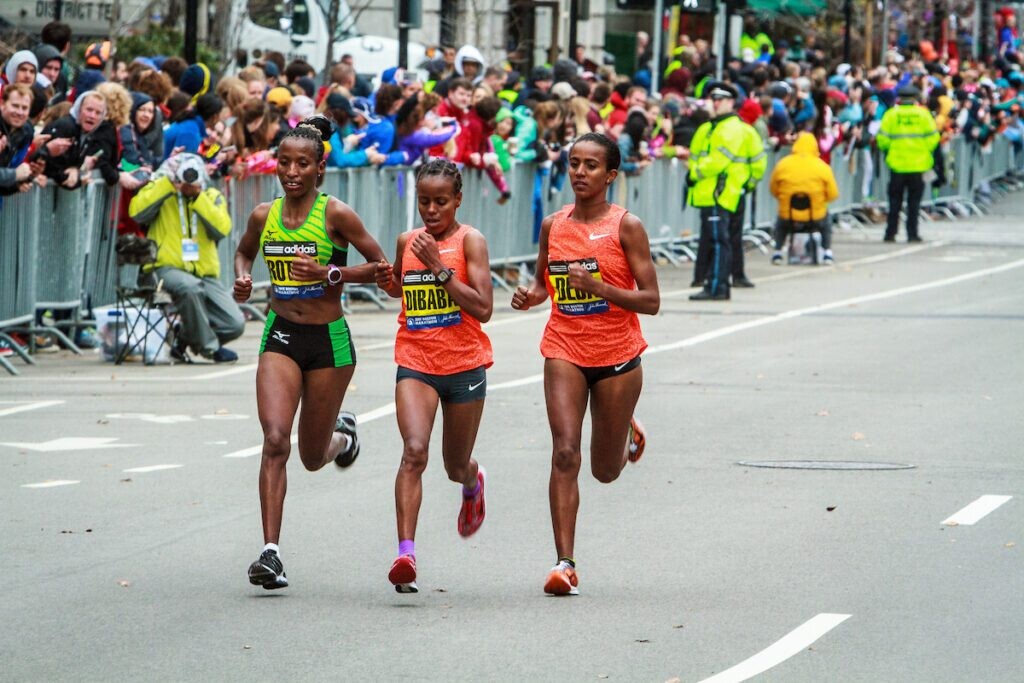
Deba’s payment, set to be issued in January, will be the largest compensation under the B.A.A.’s voluntary payout program. Earlier this year, a Wall Street Journal article put a spotlight on the B.A.A., sharing Deba’s 10-year wait for the prize money. The story caught the attention of Philadelphia businessman Doug Guyer, who sent Deba a USD $75,000 cheque to cover the difference between the first- and second-place prizes.
Jack Fleming, B.A.A. president and CEO said in a press release, “Our initiative aims to ensure that clean athletes are compensated appropriately. While the process to reclaim and redistribute prize money has been challenging, it remains essential to uphold fair competition.”
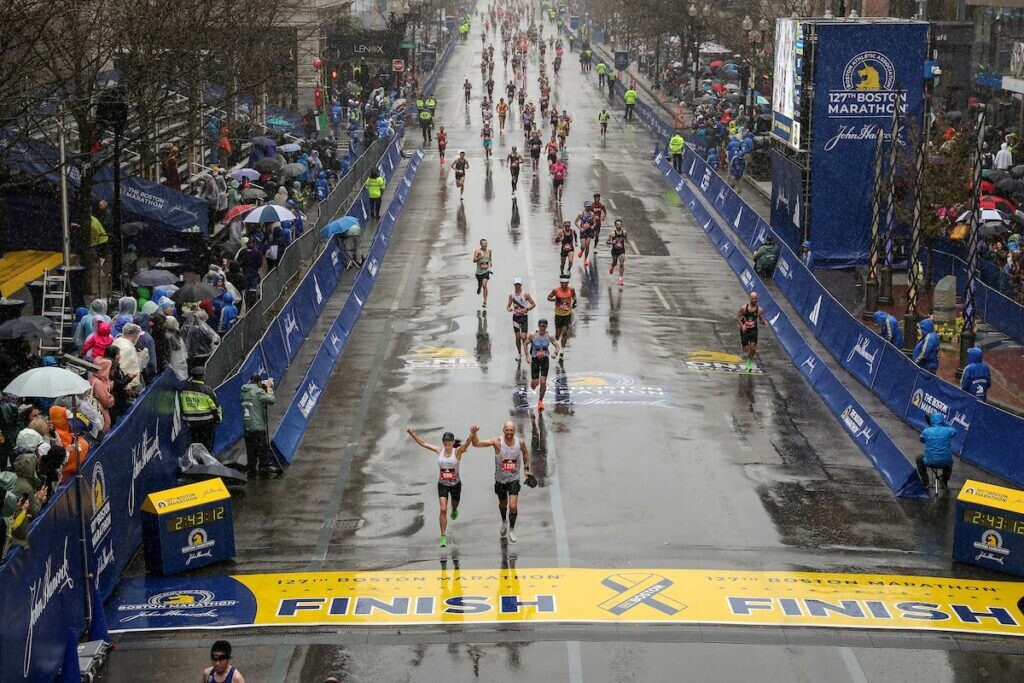
Eighty runners from eight Boston Marathons and nine participants from the Boston 5K event are eligible to receive payments totalling USD $300,000. Athletes found guilty of doping offences at any time will be ineligible for compensation. The B.A.A. says it will seek to reclaim payments from any recipient later disqualified.
The B.A.A. collaborates with global anti-doping organizations, including the Athletics Integrity Unit (AIU), the World Anti-Doping Agency (WADA) and the U.S. Anti-Doping Agency (USADA), to ensure a level playing field at its events. Notably, no male Boston Marathon champion has been stripped of their title for doping.
by Marley Dickinson
Login to leave a comment
Kenya's Charles Kipkkurui Langat issued with two-year ban for doping offence
Kenyan road runner Charles Kipkkurui Langat has received a two-year ban for violating World Athletics anti-doping regulations.
Kenyan road runner Charles Kipkkurui Langat been banned for two years from competing after being found to have violated World Athletics anti-doping rules.
The 28-year-old athlete, who won the eDreams Mitja Marató Barcelona in 2023 with an impressive time of 58:53, provided an out-of-competition urine sample in Iten, Kenya, on August 6, 2024.
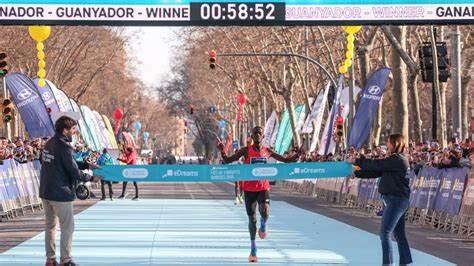
The sample tested positive for the prohibited substance Furosemide a diuretic commonly used as a masking agent.
The Athletics Integrity Unit (AIU), the body responsible for managing doping-related issues in athletics, confirmed the violation in a statement released this week.

The AIU’s findings state that Langat did not have a Therapeutic Use Exemption (TUE) for Furosemide, and after reviewing his case, it was determined that no procedural errors occurred during the sample collection and testing process.
“The AIU has no evidence that the Anti-Doping Rule Violations were intentional, and the mandatory period of Ineligibility to be imposed is therefore a period of two (2) years,” the AIU said in its decision.
Langat admitted to the use of Furosemide in an explanation provided to the AIU, stating that he had been suffering from inflammation since September 2023 and had sought medical treatment in the Netherlands earlier this year.
He claimed a doctor advised him to use the substance.
“On 31 July 2024, he contacted a doctor that he knew, who, based on the Athlete’s symptoms, advised him to try using Furosemide for four (4) days to help reduce the inflammation he was experiencing and to ‘help the kidney and the adrenal glands,’” the report detailed.
Despite his explanation, Langat’s admission was enough for the AIU to impose sanctions.
The AIU outlined that his ineligibility would begin from September 11, 2024, when he was provisionally suspended, and his results since August 6, 2024, would be disqualified.
This includes the forfeiture of any titles, awards, and appearance money accumulated during this period.
Langat's case is the latest in a growing number of doping violations involving Kenyan athletes.
Just days ago, another Kenyan runner, Emmaculate Anyango Achol, was provisionally suspended after failing a doping test for testosterone and the blood-boosting hormone EPO.
Anyango, who made headlines by becoming the second woman to complete a 10km race in under 29 minutes, is currently awaiting the outcome of her case.
Kenya,has been grappling with a string of doping scandals in recent years.
The Athletics Integrity Unit has intensified its testing efforts, particularly in high-altitude training regions like Iten, where many elite athletes train.
Langat’s acceptance of the two-year ban and his decision not to contest the charge has drawn attention from both the global athletics community and his home country.
The World Anti-Doping Agency (WADA) and the Anti-Doping Agency of Kenya (ADAK) have the right to appeal the decision to the Court of Arbitration for Sport.
by Festus Chuma
Login to leave a comment
What the New Grand Theory of Brain Science Can Teach Athletes
“Predictive processing” offers novel ways to think about sports psychology, the limits of endurance, and the urge to explore.
If you read popular science books about the brain, you might have encountered a new “grand theory” called predictive processing. If you haven’t yet, you will. Over the last two decades, it has gone from obscure idea to increasingly dominant paradigm. And it’s such a broad and all-encompassing theory that it seemingly has something to say about everything: how the brain works, why it’s structured the way it is, what that means for how we perceive the world—but also horror movies, mental health, cancer cells, and perhaps even endurance sports and adventure.
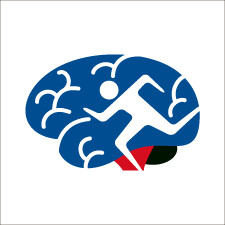
I’ve been trying to get my head around predictive processing for five or six years now. It can get complicated if you dig into the mathematical details. But I recently read a book called The Experience Machine: How Our Minds Predict and Shape Reality that does a good job of conveying the theory’s essence in an accessible way. It came out last year and is by Andy Clark, a cognitive philosopher at the University of Sussex who is one of the theory’s leading proponents. The book got me thinking about how predictive processing applies to some of the areas of science that I’m most interested in.
Here, then, is a very rough guide to predictive processing—still a speculative and unproven theory at this point, but an intriguing one—from the Sweat Science perspective.
Normally, we assume that you see the world as it is. Light bounces off the objects around you and into your eyes; the receptors in your eyes send signals to your brain; your brain makes sense of those incoming signals and concludes that, say, there’s a snake on the path. Predictive processing flips the script. Your brain starts by making a prediction of what it expects to see; it sends that prediction out toward your eyes, where the predictions are compared with incoming signals. If there’s any discrepancy between the outgoing predictions and the incoming signals, you update your predictions. Maybe it turns out that it’s a stick on the path, even though at first glance you could have sworn it was a snake.
This is actually a very old idea. It’s often attributed, in a basic form, to Hermann von Helmholtz, a nineteenth-century German scientist. Modern neuroscience pushes the idea farther and offers some clues that it’s true: for example, there are more neural connections leading from the brain to sensory organs like the eyes than there are carrying information from the senses back to the brain. Those outgoing signals are presumably carrying the brain’s predictions to the senses. What we see (and hear and smell and so on), in this picture, is basically a controlled hallucination that is periodically fact-checked by the senses.
What I find particularly intriguing about predictive processing is that there’s a deeper mathematical layer. A British scientist named Karl Friston, who pioneered several brain imaging techniques in the 1990s and is by several measures the most-cited neuroscientist ever, has proposed an idea called the free energy principle. All life, Friston argues, has an essential drive to minimize surprise—which is related to a mathematical quantity, borrowed from physics, called free energy—in order to ensure its continued survival. The resulting equations are beautiful but famously inscrutable. If you’re interested, the best introduction I’ve found is in a free e-book published in 2022 by Friston and two colleagues called Active Inference: The Free Energy Principle in Mind, Brain, and Behavior. The important point, though, is that these equations lead to the qualitative picture I described above, of the brain as a prediction machine.
In The Experience Machine, Clark lays out some examples of why this idea matters. Mental health conditions like depression and anxiety may relate to glitches in how the brain updates its predictions; the aesthetic chills you get from great art or horror movies may signal that we’ve encountered “critical new information that resolves important uncertainties”—a physiological “aha” moment. But what does all this tell us about endurance?
The athlete-related topic that Clark addresses most directly in his book is sports psychology. For example, he has a section on the power of self-affirmation, in which the positive words you say to yourself alter your brain’s predictions, which in turns alters your actions in performance-boosting ways. I’ve written a bunch of times about the effects of motivational self-talk on endurance. I’m fascinated by the evidence that it works, but struggle to reconcile it with my mechanistic understanding of how the body works. Predictive processing offers a new way of understanding the science of self-talk.
The key point is that our brains aren’t just predicting the present; they’re also simulating the future, to minimize unexpected surprises. If we expect to feel pain, fatigue, doubt, or even hunger, those predictions become self-fulfilling prophecies—just as, if you’re wandering through the rainforest, you’re more likely to mistake a stick for a snake than if you’re walking down Fifth Avenue. I remember, a decade ago, puzzling over the results of a study that fed people milkshakes and found that their appetite hormones responded differently depending on whether they were told it was an “indulgent” shake or a “sensible” one. How could appetite hormones respond to words? Through the predictions sent from the brain to the gut.
Clark has a long discussion of placebos, but the most unexpected suggestion he makes is a way of improving sports performance “in a rather sneaky manner.” One of the interesting facts about placebos is that the response can be trained. If you give a real, clinically effective drug to someone repeatedly, their brain will eventually begin predicting the response more and more strongly. During the Second World War, nurses who were running short of morphine sometimes injected saline instead; it turns out that, if the patients had been receiving morphine regularly, their bodies (and brains) responded to the saline injection in a similar way.
Clark proposes training an athlete with a drug that is banned in competition (like stimulants), then giving them a placebo version when they actually race. In theory, this should generate a stronger placebo response than you’d normally get. For the record, I don’t think this is consistent with what the World Anti-Doping Agency calls “the spirit of sport,” but it’s an interesting thought experiment.
What first sparked my interest in predictive processing was an email from a reader after my book Endure came out in 2018. I’d written about how our expectations of how a race will feel at any given point affects how hard we feel we’re able to push, based on theories from Ross Tucker and other researchers. Predictive processing, the emailer suggested, might have something to say on the topic.
I think that’s true. As you gain experience, you develop a pretty good idea of what you’ll feel like halfway through a 5K. If you feel better or worse than expected, that generates a prediction error. There are two ways of fixing prediction errors. One is to update your beliefs: I thought this pace would feel medium-hard at this point in the race, but it feels hard, so I’ll adjust my internal prediction. The other is to adjust your actions: I thought this pace would feel medium-hard, so I’ll slow down until it feels medium-hard. The second strategy is what Friston calls active inference.
Why is it that we generally adjust our pace rather than our beliefs when we’re racing? I’m not sure, but I wonder whether predictive processing will suggest some new ways of probing this longstanding question.
There’s a puzzle in predictive processing called the Dark Room problem. If the free energy principle demands that we minimize surprise, why don’t we just lock ourselves in a dark room until we starve to death? One way of answering this question is to recall that we’re not just trying to minimize present surprise; we’re also trying to minimize surprise in the future. And the best way of avoiding future surprises is to learn as much as possible about the world and how it works.
Predictive processing, in other words, wires us to seek out the unknown in order to learn about it, as a way of minimizing future surprise. This is a different way of thinking about why we like venturing into the wilderness, undertaking challenges like running a marathon, and traveling to unfamiliar places. This is an idea I’m digging deeper into for a forthcoming book on the science of exploring.
Does expressing these ideas in the language of predictive processing actually change anything? That remains to be seen. I’ve talked to some scientists over the past few years who view it as genuinely new, and others who view it more as new words for familiar ideas.
The most practical suggestion that I’ve seen comes from an Israeli scientist named Moshe Bar, who wrote a book called Mindwandering in 2022. Bar’s big idea is that we have what he calls “overarching states of mind” that reflect the degree to which we’re focusing on the “top-down” predictions generated by our brains versus the “bottom-up” observations from our senses.
When we put more weight on predictions, we become more narrowly focused on a given task; when we put more weight on sensory data, we have broader attention, are more inclined to explore, and have a more positive mood. By “zooming out”—thinking about the big picture or the future, talking to ourselves in second person—we can shift the dial toward sensory input and loosen the grip that our predictions sometimes exert on us.
Admittedly, all of this sounds a bit esoteric. But the more I read about predictive processing, and the more I talk to scientists who are developing these ideas, the more I’m convinced that there’s something interesting here. Exactly where all this will lead—well, that’s hard to predict.
by Outside Online
Login to leave a comment
Kenya's Celestine Chepchirchir issued with three-year ban for doping offence
Kenyan runner Celestine Chepchirchir has been banned for three years after testing positive for a prohibited substance, forfeiting all recent titles and awards
Kenyan road runner Celestine Chepchirchir has been banned for three years from competing after being found to have violated World Athletics anti-doping rules.
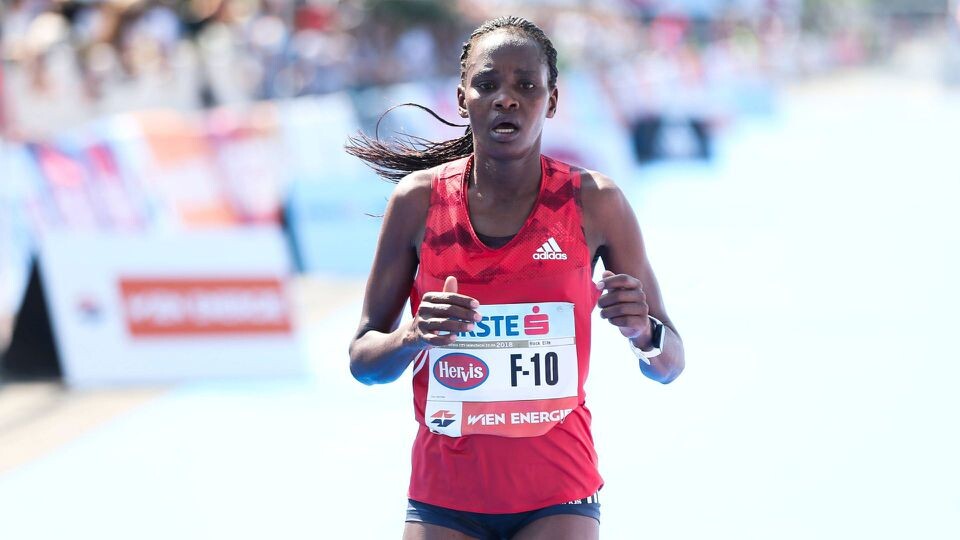
The 28-year-old athlete provided a urine sample out-of-competition in Kapsabet on February 9, 2024 which tested positive for exogenous testosterone and its metabolites.
According to the official AIU statement, the laboratory in Lausanne, Switzerland, identified the presence of testosterone and its metabolites—Androsterone, Etiocholanolone, 5α-androstane-3α,17 diol, and 5β-androstane-3α,17 diol—as being of exogenous origin.
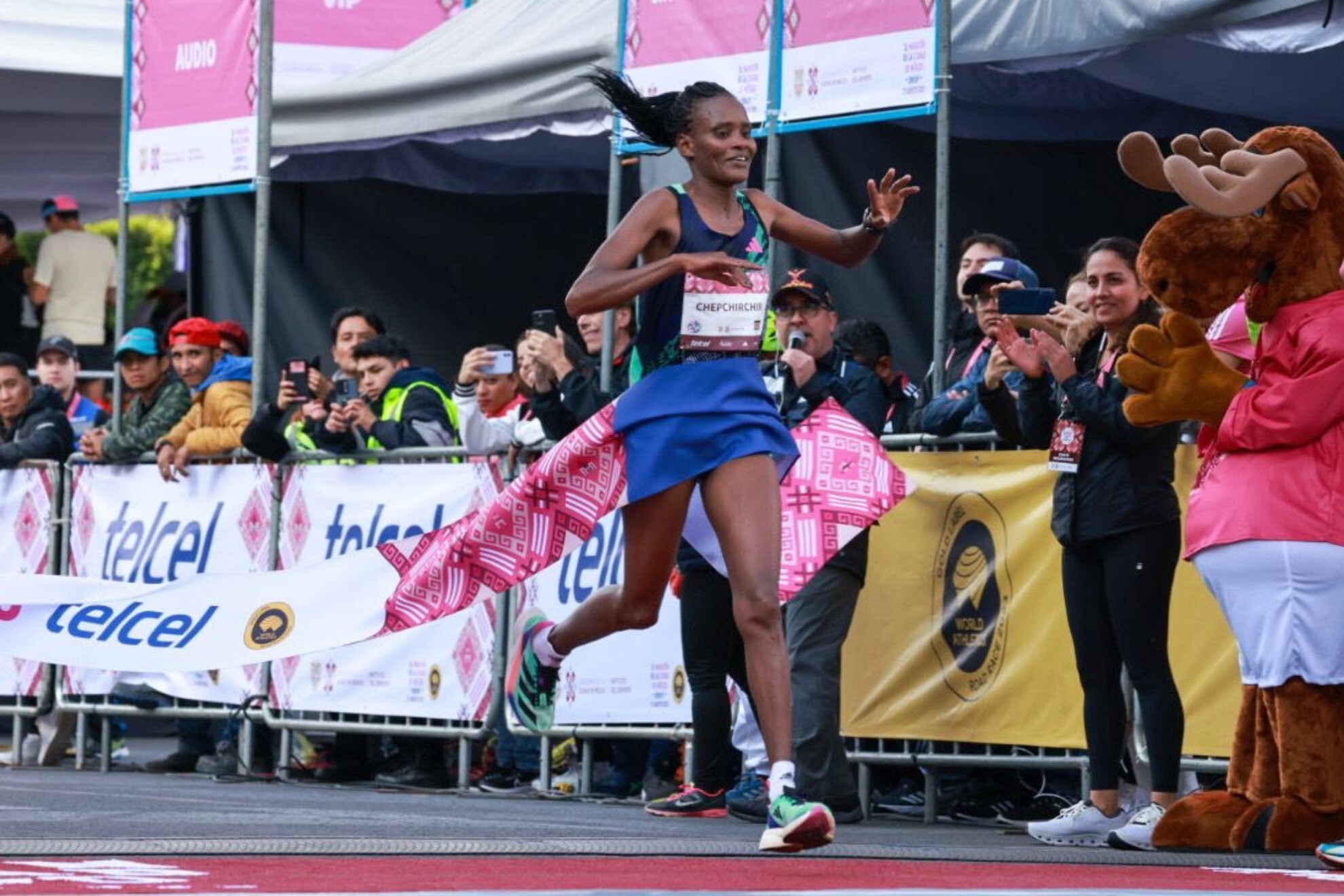
"Ms. Celestine Chepchirchir did not have a Therapeutic Use Exemption that would justify the presence of these substances," the AIU confirmed.
The ruling added that there was no departure from the International Standard for Testing and Investigations or the International Standard for Laboratories that could explain the adverse finding.
The athlete faced a mandatory four-year period of ineligibility for such a violation under the World Anti-Doping Agency (WADA) guidelines.
However, Chepchirchir's prompt admission of the violations and her acceptance of the consequences enabled her to benefit from a reduced three-year ban.
"The athlete did not reply within the initial deadline but subsequently signed an Admission of Anti-Doping Rule Violations and Acceptance of Consequences Form," the AIU reported.
Celestine Chepchirchir's ban will commence from March 26, 2024, the date on which her provisional suspension was first imposed.
Moreover, all her results post-February 9, 2024, will be disqualified, with all consequent titles, awards, medals, points, prizes, and appearance money forfeited.
Rights of appeal against the decision are available to WADA and the Anti-Doping Agency of Kenya (ADAK), which could potentially take the matter to the Court of Arbitration for Sport in Lausanne, Switzerland.
The AIU has confirmed that this decision will be publicly reported on their website as part of their commitment to transparency and fairness in the handling of doping cases in athletics.
This case marks another in a series of doping incidents involving Kenyan athletes a troubling pattern that has drawn global attention to the nation's sports programs.
by Festus Chuma
Login to leave a comment
Pamela Jelimo set to receive Olympic silver after Ekaterina Guliyev's doping ban
South Africa's Caster Semenya has been elevated to gold with Kenya's Pamela Jelimo set for silver after doping reshuffle in 2012 Olympics 800m.
Former Olympic 800 champion, Pamela Jelimo, is poised to be awarded the 2012 London Olympic 800m silver, marking a significant shift in the event's final standings due to doping violations.
This development comes after the Russian Athletics Federation (RusAF) announced a four-year ban for Ekaterina Poistogova-Guliyev for historic doping offences, leading to a reshuffle of the medal positions from the London games.
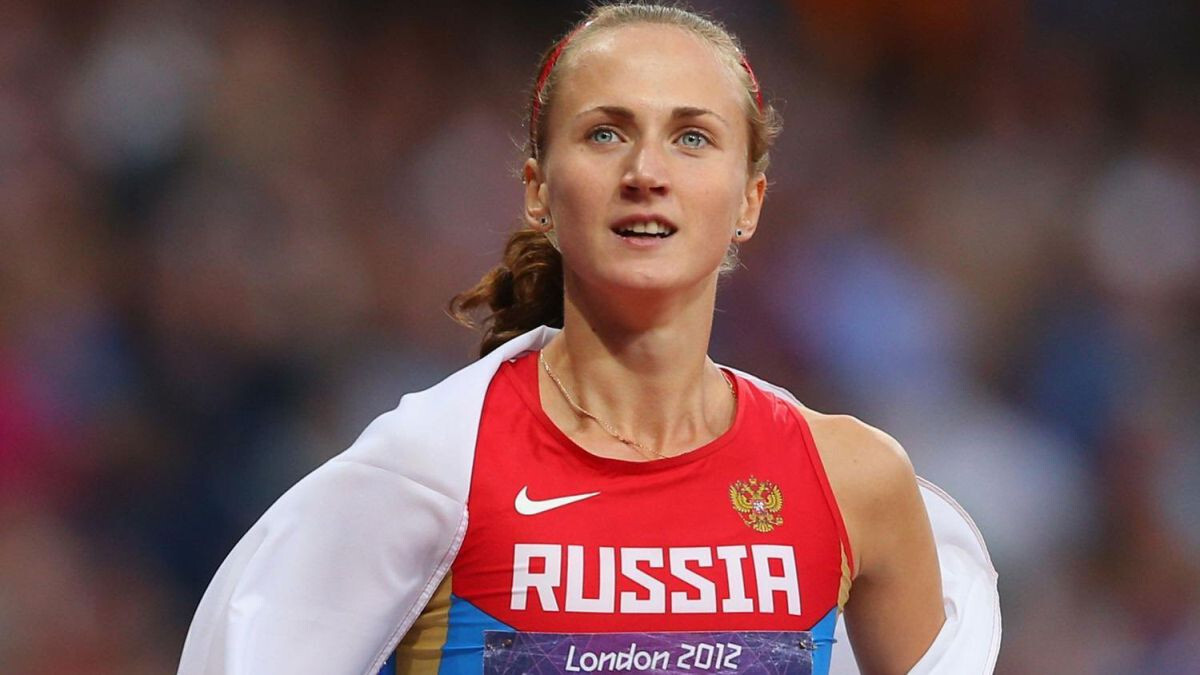
The ban, which results from violations between July 2012 and October 2014, voids all of Poistogova-Guliyev's results from that period, according to a RusAF statement.
The athlete, who initially competed for Russia before switching allegiance to Turkey, was implicated in the use or attempted use of banned substances, with evidence drawn from the Moscow anti-doping laboratory.
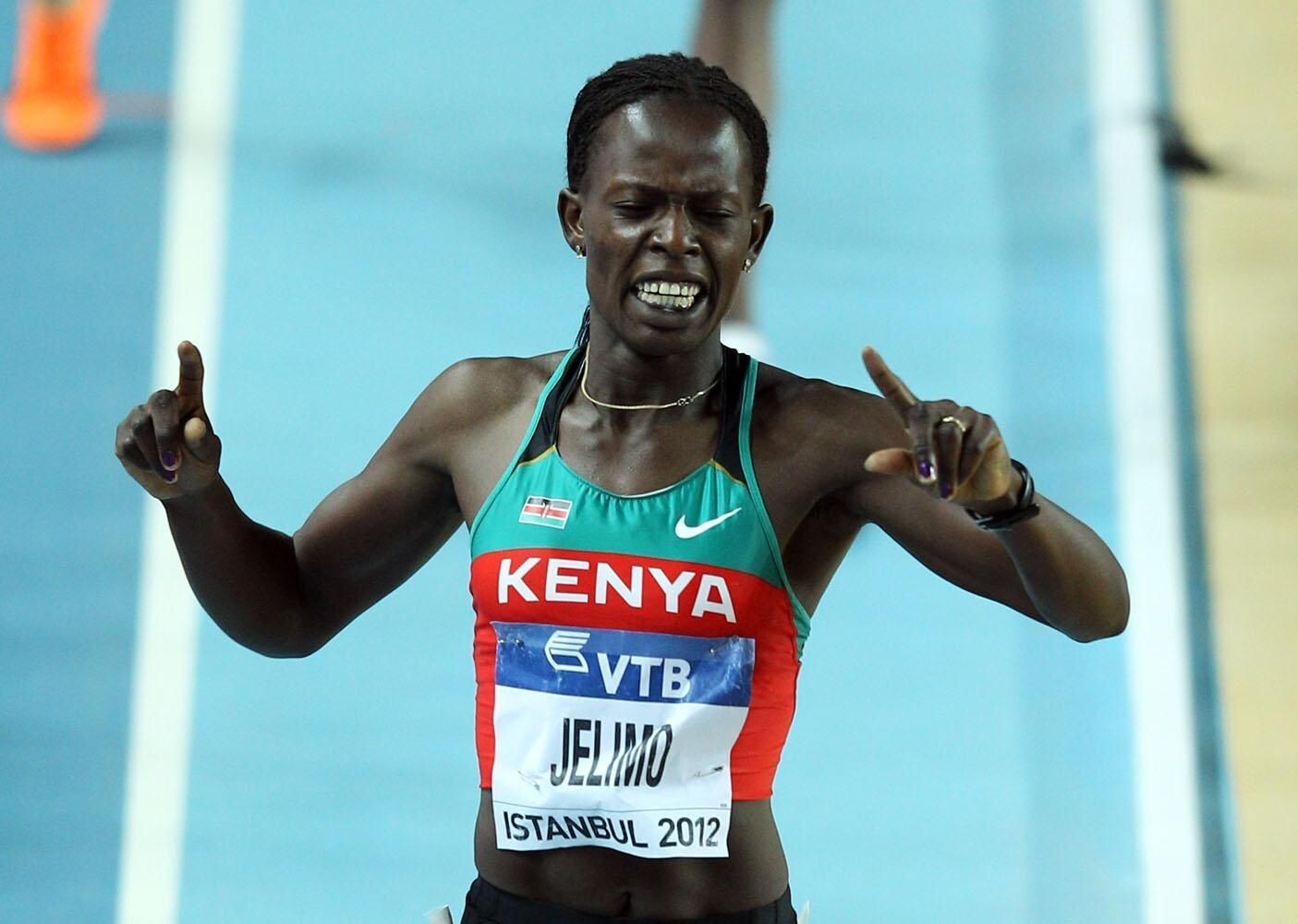
The case has had far-reaching implications, not only for Poistogova-Guliyev but also for other athletes in the 2012 Olympic 800m event.
Pamela Jelimo, the London Olympic bronze medallist, will be elevated to silver, and American Alysia Montano, who finished fifth, is set to inherit the bronze, pending official confirmation.
This adjustment stems from a broader investigation into systematic doping within Russian athletics, spearheaded by the World Anti-Doping Agency (WADA).
WADA had initially recommended a lifetime ban for Poistogova-Guliyev in 2015, alongside the stripping of her London medal, as part of its findings on state-sponsored doping.
Although the Court of Arbitration for Sport (CAS) imposed a two-year ban on Poistogova-Guliyev in 2017, her results were initially voided only back to October 2015, allowing her to retain her Olympic medal temporarily.
The recent decision by RusAF to extend the voiding of her results to July 2012 effectively strips her of the medal, subject to final approval by the International Olympic Committee (IOC).
The women's middle distance events at the London Olympics have been notably affected by doping, with three runners in the 800m final, including Poistogova-Guliyev, Mariya Savinova, and Elena Arzhakova, having their results voided due to doping offences.
Jelimo's elevation to the silver medal position comes after a long wait; it took 10 years for her to be awarded the bronze medal for the same event, following the disqualification of Maria Savinova for doping violations.
The reallocation of medals in cases of doping violations is a complex and often slow process, involving multiple organisations including WADA, CAS, RusAF, and the IOC.
The final decision on the redistribution of medals from the 2012 Olympics will be closely watched by the athletics community and represents a critical step in the ongoing fight against doping in sport.
Poistogova-Guliyev's ban, which lasts until 2026, reflects a deduction for the time served under her previous CAS-imposed sanction.
In addition to her case, RusAF has announced a two-year and six-month ban for 3,000m steeplechaser Nikolay Chavkin for similar doping offenses.
by Festus Chuma
Login to leave a comment
Kenya's Winnie Jemutai issued with three-year ban for doping offence
Winnie Jemutai is the latest Kenyan athlete to join the list of shame after being provisionally suspended by the AIU for the Presence/Use of Prohibited Substance (Testosterone).
The Athletics Integrity Unit (AIU) has banned Kenyan middle-distance runner Winnie Jemutai Boinett for three years due to the presence and use of a prohibited substance, testosterone.
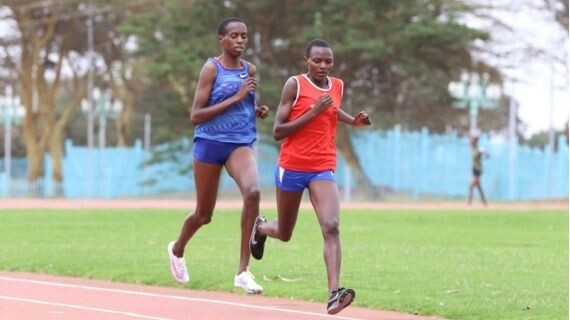
This decision follows the disqualification of Boinett's results since November 12, 2023 when she was provisionally suspended.
Boinett's suspension comes after a urine sample she provided in-competition at the XLI Cross Internacional de Italica in Seville, Spain, on November 12, 2023, tested positive for testosterone, a substance banned under the World Anti-Doping Agency's (WADA) prohibited list.
Following the initial findings, Boinett admitted to the anti-doping rule violations and accepted the consequences, including the forfeiture of any medals, titles, points, prize money, and other prizes won since the date of the provisional suspension.
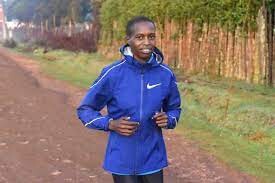
In a letter to the AIU dated March 5, 2024, Boinett stated, "I had injury. I went to different hospitals for treatment, I don't have exact documents showing exact medications that I went through I honestly accept that I break the anti-doping rules and am ready to face the consequences thank you."
This early admission and acceptance of sanction led to a one-year reduction in the originally asserted period of ineligibility, pursuant to Rule 10.8.1, based on Boinett's cooperation and acknowledgment of the violations.
Furthermore, the World Anti-Doping Agency (WADA) and the Anti-Doping Agency of Kenya (ADAK) have been granted the right to appeal against this decision to the Court of Arbitration for Sport in Lausanne, Switzerland, should they find grounds to do so.
This provision ensures that all parties involved have a fair opportunity to present their case and seek justice through the appropriate legal channels.
by Festus Chuma
Login to leave a comment
Sarah Chepchirchir slapped with an eight-year ban by AIU
39-year-old runner Sarah Chepchirchir has been slapped with an eight-year ban for violating the anti-doping rules for the second time following her first ban which happened from 2019 to 2023.
The Athletics Integrity Unit has slapped Sarah Chepchirchir of Kenya with an eight-year ban for violating an anti-doping rule.
Chepchirchir was banned for the Presence/Use of a Prohibited Substance (Testosterone) and her results from November 5, 2023have been disqualified.
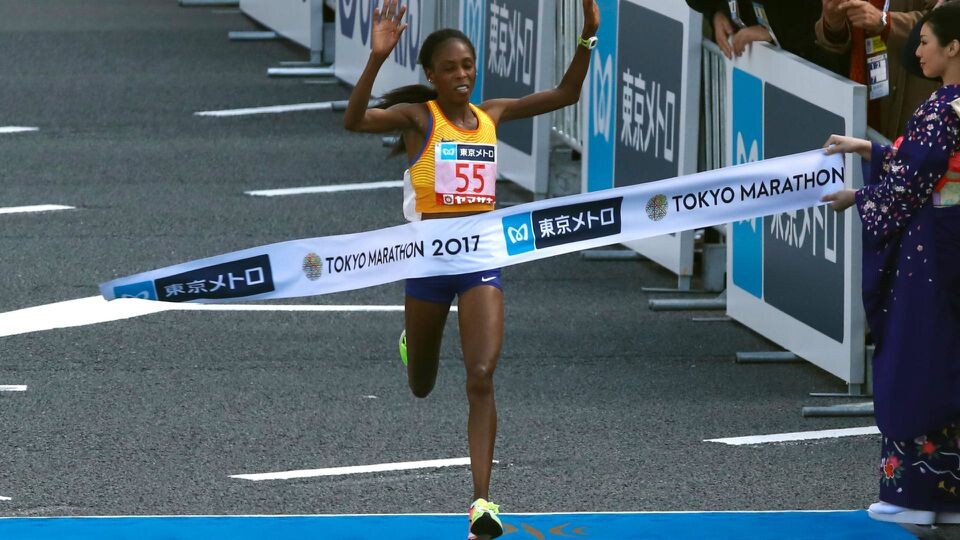
The AIU reported that the 39-year-old runner provided a urine sample on November 5, 2023, after competing at the Bangsaen42 Chonburi Marathon in Chonburi, Thailand.
An analysis of the sample by the World Anti-Doping Agency (“WADA”) accredited laboratory in Bangkok, Thailand (the “Laboratory”), revealed the presence of Metabolites of Testosterone consistent with exogenous origin (the “Adverse Analytical Finding”).

As per the AIU, testosterone is a Prohibited Substance under the WADA 2023 Prohibited List under the category S1.1 Anabolic Androgenic Steroids. It is a Non-Specified Substance prohibited at all times.
Meanwhile, the AIU further noted that the Chepchirchir previously served a period of Ineligibility of four (4) years from February 6, 2019 to February 5, 2023 for an Anti-Doping Rule Violation under Article 2.2 of the 2018 IAAF Rules (equivalent to Rule 2.2 of the Rules) (Use of a Prohibited Substance or a Prohibited Method) based on abnormal values in the hematological module of her Athlete Biological Passport.
“A period of Ineligibility of eight (8) years commencing on December 22, 2023, until December 21, 2031, and disqualification of the Athlete’s results on and since November 5, 2023, with all resulting consequences, including the forfeiture of any titles, awards, medals, points prize, and appearance money.
“The Athlete is deemed to have accepted the above Consequences and to have waived her right to have those Consequences determined by the Disciplinary Tribunal at a hearing,” the AIU said regarding her punishment.
by Abigael Wuafula
Login to leave a comment
Ugandan middle-distance runner Prisca Chesang given two-year ban for masking agent
On Friday, the Athletics Integrity Unit (AIU) issued a two-year ban for two-time U20 world championship medalist Prisca Chesang of Uganda. Chesang tested positive for the banned diuretic and masking agent furosemide.
Chesang’s positive test came out-of-competition, at a training camp in Kapchorwa, Uganda, on Sept. 14. She was in Kapchorwa preparing for the women’s mile at the 2023 World Road Running Championships in Riga, Latvia, where she placed 18th overall, on Oct. 1.

The 20-year-old is a two-time world U20 medalist in the women’s 5,000m, winning bronze at both the 2021 and 2022 U20 championships. According to the AIU, they did not discover any evidence that Chesang’s actions were intentional and therefore she was only given a two-year ban instead of four years. Chesang admitted to the Anti-Doping Rule Violation (ADRV); her result from the 2023 World Road Running Championships will be disqualified, and she will serve a two-year ban, until Dec. 6, 2025.
Furosemide is a diuretic, meaning it increases urine production, eliminating excess water and salt from the body. (It is also used for losing weight.) Furosemide also serves as a masking agent for other performance-enhancing substances that leave the body through urination, and therefore show up in a urine test. The drug has been prohibited by the World Anti-Doping Agency (WADA) for decades.
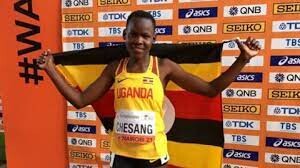
Chesang is one of Uganda’s top up-and-coming distance runners and represented the East African nation at the 2020 Tokyo Olympics in the women’s 5,000m (but failed to advance from the heats). Her top senior championship finish was a seventh-place result at the 2023 World XC Championships in Bathurst, Australia, helping Uganda’s women’s team win bronze.
Chesang is only the second female Ugandan runner to be suspended by the AIU. The country’s first came in Nov. 2023, when Janat Chemusto was given a four-year ban for the use of a prohibited substance.
by Marley Dickinson
Login to leave a comment
Ugandan runner Prisca Chesang provisionally suspended by the Athletics Integrity Unit
Ugandan runner faces provisional suspension by AIU for for the presence/use of a prohibited substance (Furosemide).
World U20 5000m bronze medalist Prisca Chesang has found herself in hot water with the Athletics Integrity Unit (AIU).
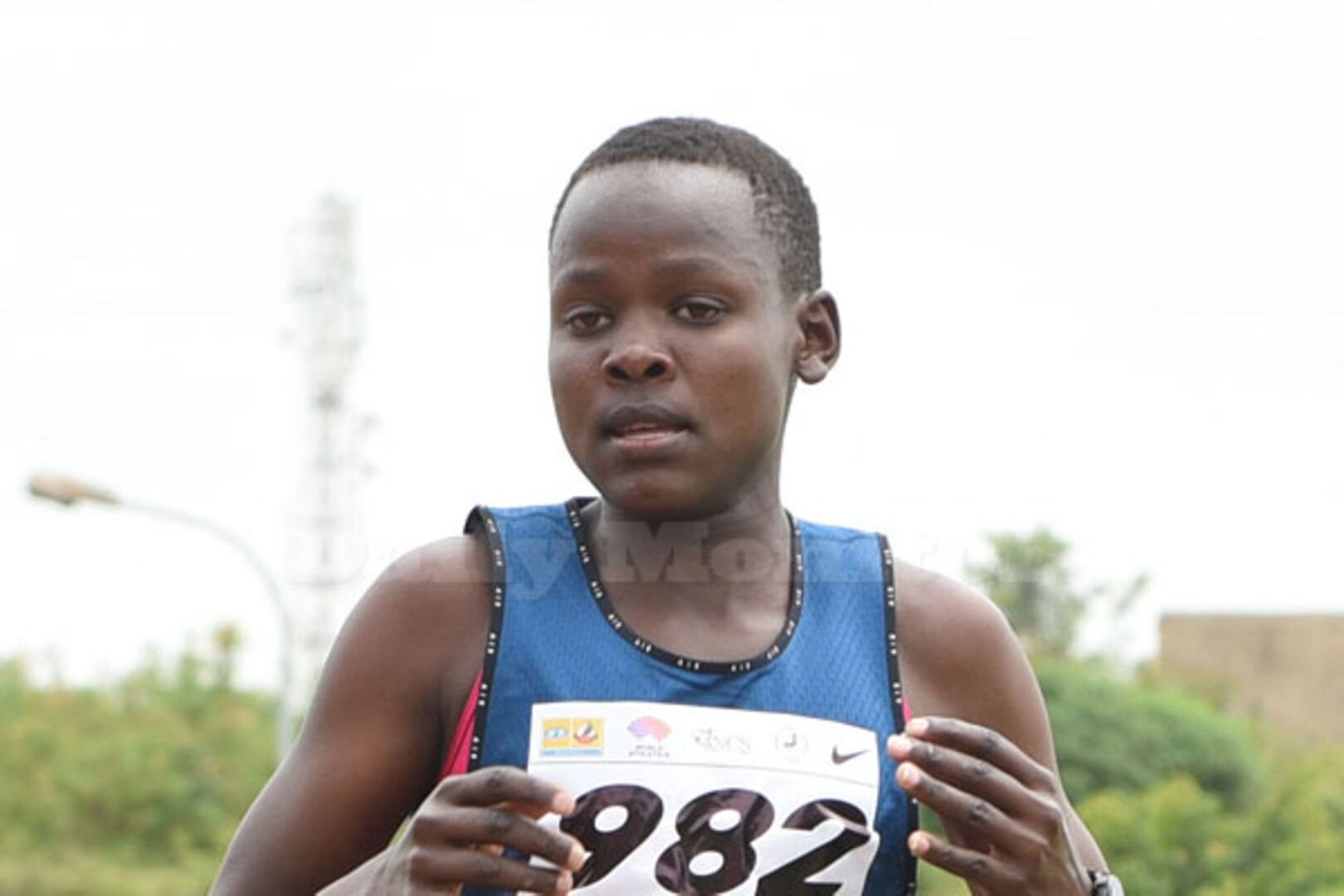
The 20-year-old Ugandan has been provisionally suspended by AIU for the Presence/Use of a Prohibited Substance (Furosemide), a clear violation of the World Anti-Doping rules.
Chesang, who made headlines as the fourth female Ugandan athlete to secure a medal at the junior championship, finds herself facing charges under Article 2.1 and Article 2.2 of the World Anti-Doping Agency (WADA).
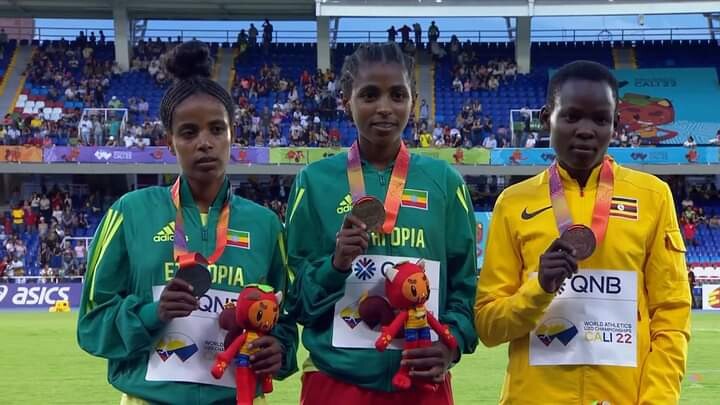
Chesang's remarkable journey began at the 2021 World Athletics U20 Championships in Nairobi, Kenya, and continued in Cali, Colombia last year, where she clinched the bronze medal.
She joined the ranks of Peruth Chemutai (2018), Annet Negesa (2010), and Dorcus Inzikuru (2000) as one of the few female Ugandan runners to achieve such a feat at the junior level.
"The AIU has provisionally suspended Prisca Chesang (Uganda) for the Presence/Use of a Prohibited Substance (Furosemide)," the AIU confirmed.
Chesang's suspension echoes a somber note in Ugandan running history, following the suspension and three-year ban of Janat Chemusto in November.
Prisca Chesang had been making remarkable strides in the senior division as well, finishing 7th overall at the World Cross Country Championships held in Bathurst, Australia, earlier this year.
However, it was her astonishing performance in the 10km race and her ranking at the World Cross Country Championships in 2023 that truly had the athletics world taking notice.
On New Year's Eve in 2022, Chesang emerged as the champion of the Madrid 10km with an incredible time of 30:19.
This achievement unofficially crowned her as the fastest junior athlete ever over the 10km distance.
Her exceptional performance ranked her 6th on the Senior World List for 2022 and placed her among the top 20 on the World All-Time list for the same distance.
by Festus Chuma
Login to leave a comment
Jamaican Olympic bronze medalist in the 110m hurdles, Ronald Levy faces potential 4-year ban
Jamaican Olympic bronze medalist in the 110m hurdles, Ronald Levy, faces a significant setback in his athletic career as the B-sample from his recent drug test has returned positive for two banned substances.
The initial discovery of these substances was made in his A-sample during an out-of-competition test conducted last month by the World Anti-Doping Agency (WADA) lab in Canada.
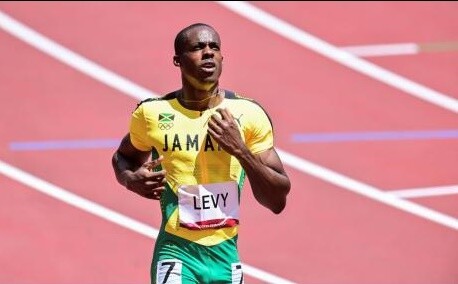
As a result of the positive B-sample, Levy now faces a hearing and the possibility of a four-year ban from competitive athletics. Such a ban could have far-reaching implications, potentially ruling him out of participating in the upcoming Paris Olympics in the summer of next year, as well as the World Athletic Championships scheduled for 2025 and 2027.
Banned Substances Identified
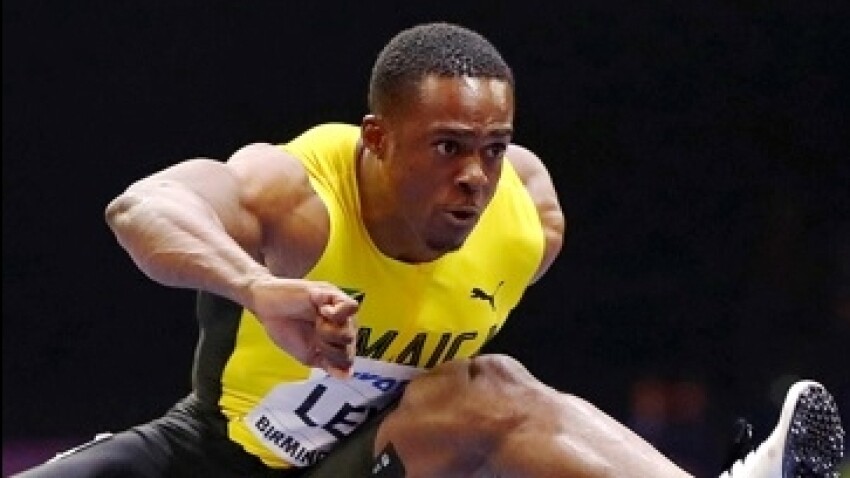
According to Radio Jamaica Sports sources, the two banned substances detected in Levy’s sample are GW501516-Sulfoxide and GW501516-Sulfone. The presence of these prohibited substances raises serious concerns about Levy’s adherence to anti-doping regulations.
Earlier this month, the athlete confirmed the adverse finding through his Instagram page, disclosing that he had been notified of the test results on November 3. However, he did not initially reveal the names of the specific drugs that led to the adverse finding.
The development casts a shadow over Levy’s athletic career and places his future participation in major international competitions in doubt. It also underscores the importance of strict adherence to anti-doping protocols and the consequences of violating anti-doping regulations in the world of sports.
by Ben McLeod
Login to leave a comment
AIU slap 23-year-old Esther Borura with three-year ban for doping
Esther Borura was banned due to the Presence of a Prohibited Substance (19-norandrosterone) and the Use of a Prohibited Substance (Nandrolone or Nandrolone. precursors).
The Athletics Integrity Unit has slapped Esther Birundu Borura with a three-year ban for an anti-doping rule violation.
Borura’s ban backdates to September 6, 2023, and will run to 2026. She was banned due to the Presence of a Prohibited Substance (19-norandrosterone) and the Use of a Prohibited Substance (Nandrolone or Nandrolone precursors).
The AIU also noted that the 23-year-old’s results since June 30, 2023, have been disqualified. On June 30, 2023, Borura provided a urine sample, Out-of-Competition in Iten, Kenya, which was given code 7184933.
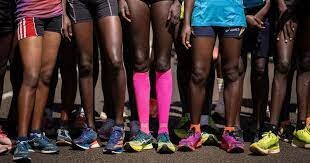
On August 22, the World Anti-Doping Agency (“WADA”) accredited laboratory in Doha, Qatar reported an Adverse Analytical Finding in the Sample.
“The AIU reviewed the Adverse Analytical and determined that Borura did not have a Therapeutic Use Exemption (“TUE”) that had been granted (or that would be granted) for the 19-Norandrosterone consistent with exogenous origin found in the Sample.
There was no apparent departure from the International Standard for Testing and Investigations (“ISTI”) or from the International Standard for Laboratories (“ISL”) that could reasonably have caused the Adverse Analytical Finding,” the AIU statement read in part.
On September 7, Borura requested for an interview with the AIU through her Athletes’ Representative.
As reported by the AIU, on September 13, they (AIU) asked the Athlete to provide a written summary of her explanation and the information that she wished to provide in the interview.
“On 15 September 2023, the Athletes’ Representative provided the AIU with the Athlete’s summary explanation, which set out that the Athlete waived her rights to have the B Sample analysed and to request the LDP, admitted to having committed Anti-Doping Rule Violations, had purchased prohibited substances in April 2023, and been injected in May 2023.
Averred that this was the only time that she had used prohibited substances. On 26 September 2023, the Athlete attended an interview with AIU representatives and provided additional information in relation to her explanation (as summarised above),” the statement further noted.
by Abigael Wuafula
Login to leave a comment
World championship silver medalist suspended 30 months for evading doping test
Jamaican 400m runner and 2022 world championship silver medalist Christopher Taylor has been slapped with a 30-month suspension by the Athletics Integrity Unit (AIU) after evading an out-of-competition doping test without justification in November 2022.
After a comprehensive six-month investigation, the AIU found that Taylor violated Article 2.3 of the World Anti-Doping Agency’s (WADA) Anti-Doping Code, deeming his actions as “evading, refusing, or failing to submit to sample collection.” In November 2022, anti-doping officials attempted to conduct an out-of-competition doping test at the location Taylor had specified on his whereabouts form, but he was not present at the location and had not updated his whereabouts information.
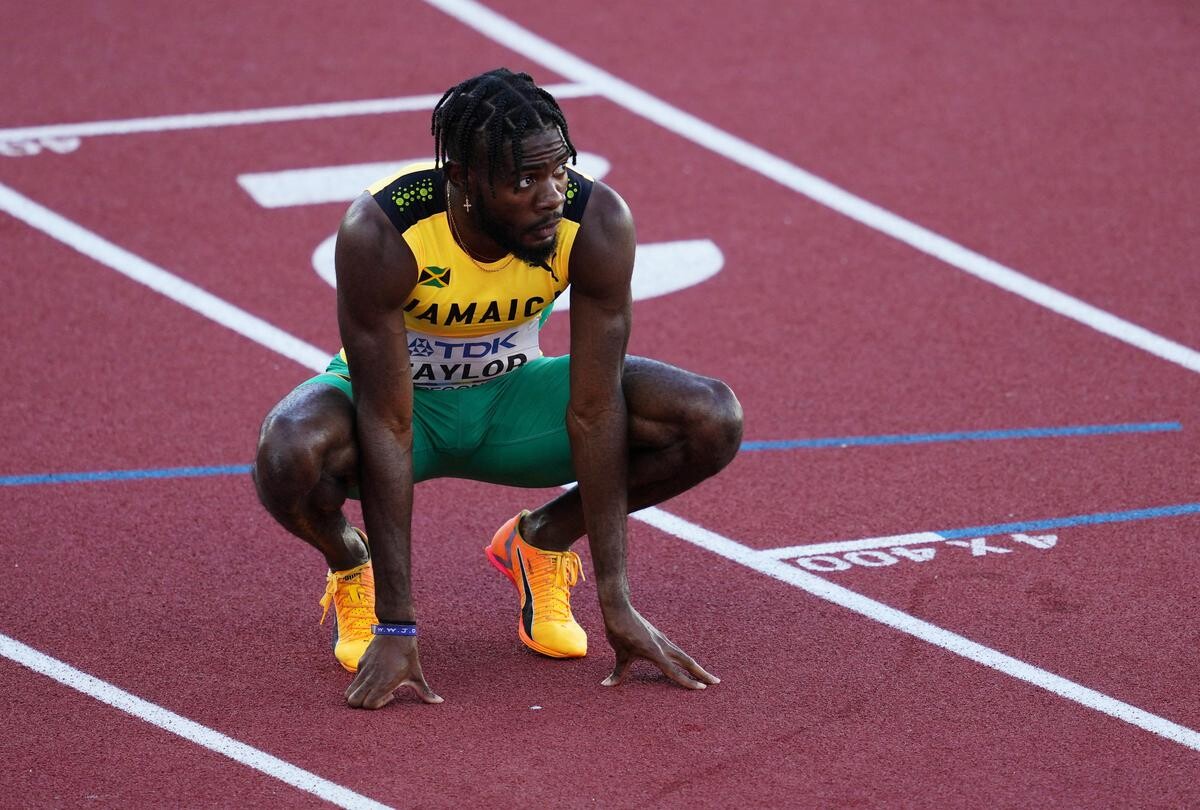
According to the Jamaica Observer, Taylor was at the Norman Manley International Airport in Kingston when the officials arrived at his home, waiting to catch a flight to the U.S.
If an athlete is not where they say they are when anti-doping officials show up, it counts as a missed test. Typically, a first or second offense does not carry any penalty, but if an athlete misses three tests during a 12-month period, that constitutes a whereabouts violation, resulting in an automatic period of ineligibility.
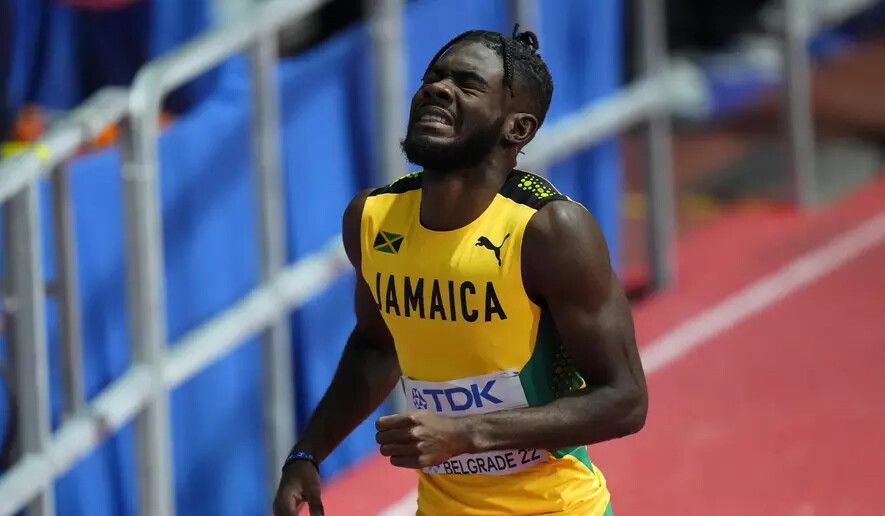
Taylor was a finalist in the men’s 400m at the Tokyo Olympics and the 2022 World Championships in Eugene, Ore. He also helped the Jamaican men’s 4x400m relay team win silver at 2022 Worlds.
Twelve of the 30 months of his suspension have already elapsed; Taylor will become eligible to compete again in May 2025. His last competitive race was in August 2022.
by Marley Dickinson
Login to leave a comment
Molly Seidel Stunned the World (and Herself) with Olympic Bronze in Tokyo. Then Life Went Sideways.
She stunned the world (and herself) with Olympic bronze in Tokyo. Then life went sideways. How America’s unexpected marathon phenom is getting her body—and brain—back on track.
On a clear December night in 2019, Molly Seidel was at a rooftop holiday party in Boston, wearing a black velvet dress, doing what a lot of 25-year-olds do: passing a joint between friends, wondering what she was doing with her life.
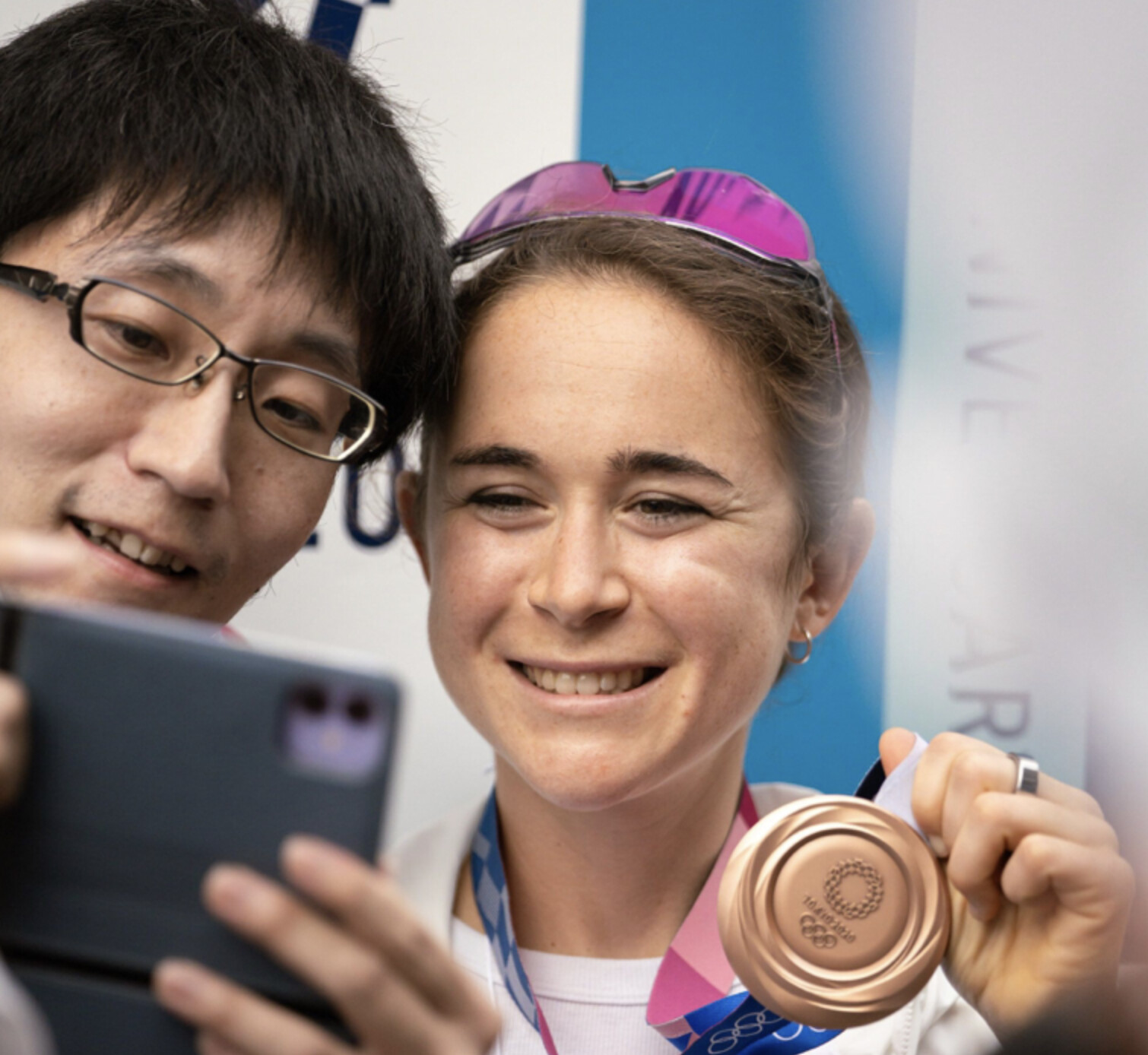
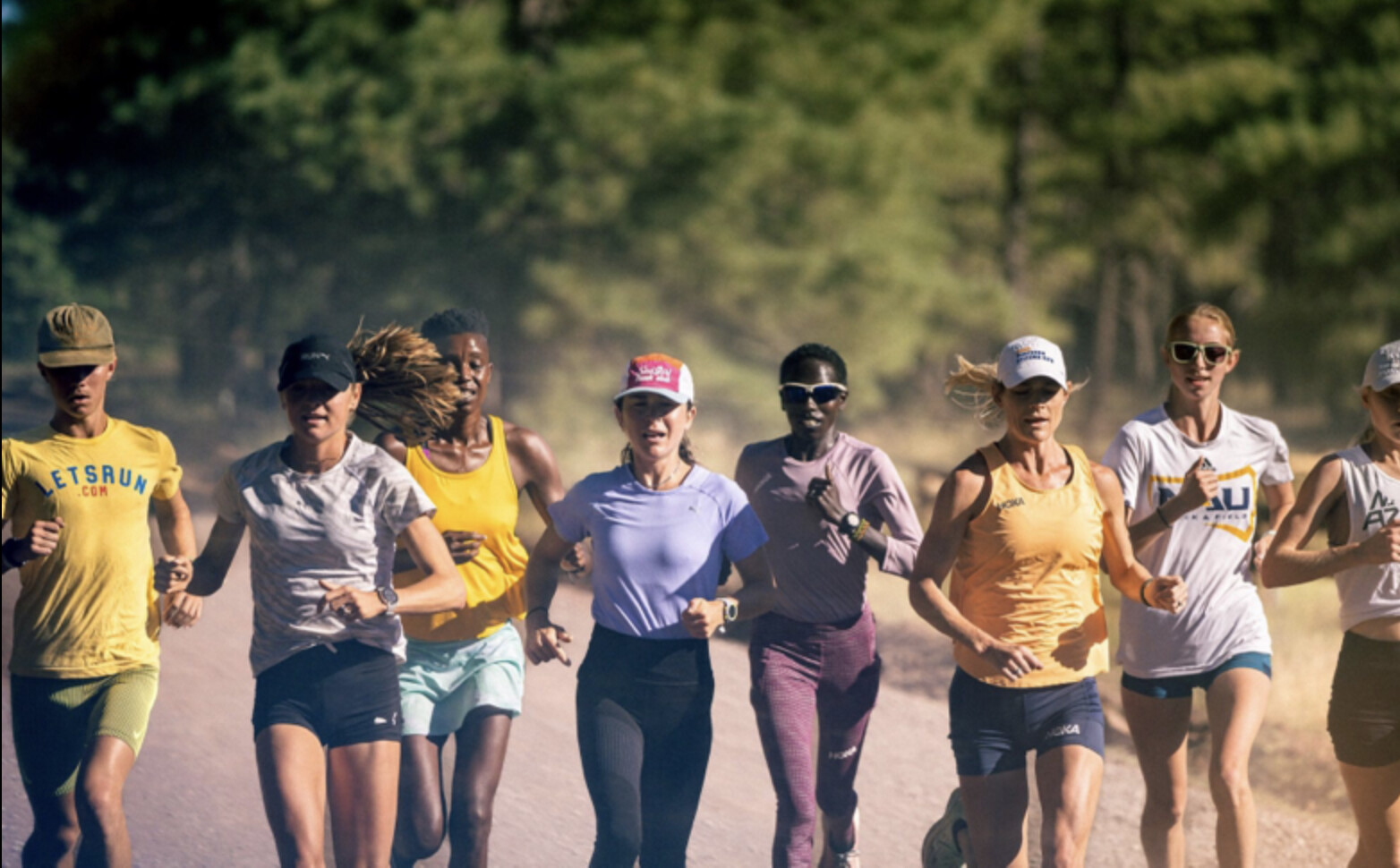
“You should run the Olympic Trials,” her sister, Izzy, said, as smoke swirled in the chilly air atop The Trackhouse, a retail shop and community hub on Newbury Street operated by the running brand Tracksmith. “That would be hilarious if you did that as your first marathon.”
Molly, an elite 10K racer who’d spent much of 2019 injured, looked out at the city lights, and laughed. Why the hell not? She’d just qualified for the trials, winning the San Antonio Half with a time of 1:10:27. (“The shock of the century,” as she’d put it.) True, 13.1 miles wasn’t 26.2—but running a marathon was something to do. If only because she never had before.
A four-time NCAA track and cross-country champion at The University of Notre Dame in Indiana, Molly had moved to Boston in 2017, where she’d worked three jobs to supplement her fourth: running for Saucony’s Freedom Track Club. The $34,000 a year that Saucony paid her (pre-tax, sans medical) didn’t go far in one of America’s most expensive cities. Chasing kids around as a babysitter, driving around as an Instacart shopper, and standing around eight hours a day as a barista—when you’re running 20 miles a day—wasn’t ideal. But whatever, she had compression socks. And she was downing free coffee and paying rent, flying to Flagstaff, Arizona, every so often for altitude camps, and having a good time. Doing what she loved. The only thing she’s ever wanted to do since she was a freckly fifth-grader in small-town Wisconsin clocking a six-minute mile in gym class.
“I was hustling, and I loved it. It was such a fun, cool time of my life,” she says, summarizing her 20s. Staring into Molly’s steely brown eyes, listening to her speak with such clarity and conviction about her struggles since, it’s easy to forget: She is still only 29.
After Molly had hip surgery on her birthday in July 2018, her doctors gave her a 50/50 chance of running professionally again. By summer 2019, she’d parted ways with FTC, which left her sobbing on the banks of the Charles River, getting eaten alive by mosquitoes and uncertainty. Her biggest achievement lately had been being named #2 Top Instacart Shopper (in Flagstaff; Boston was big-time).
The day after that rooftop party, Molly asked her friend and former FTC teammate Jon Green, who she’d newly anointed as her coach: “Think I should run the marathon trials?” Sure, he shrugged. Nothing to lose. Maybe it’d help her train for the 10K, her best shot—they both thought—at making a U.S. Olympic team.
“I’m going to get my ass kicked six ways to Sunday!” she told the host of the podcast Running On Om six weeks before the trials in Atlanta.
Instead, on February 29, 2020, she kicked some herself. Pushing past 448 of the fastest, most-experienced women marathoners in the country, coming in second with a 2:27:31, earning more in prize money ($60,000) than she had in two years of racing—and a spot on the U.S. trio for the 2020 Tokyo Olympics, along with Kenyan-born superstars Aliphine Tuliamuk and Sally Kipyego. “I don’t know what’s happening right now!” Molly kept saying into TV cameras, wrapped in an American flag, as stunned as a lottery winner.
Saucony who? Puma came calling. Along with something Molly hadn’t anticipated: the spotlight. An onslaught of social media followers. And two weeks later, a global pandemic and lockdown—and all the anxiety and isolation that came with it. She was drowning, and she hadn’t even landed in Tokyo yet.
The 2020 Olympics, as we all know, were postponed to 2021. An emotional burden but a physical boon for Molly, in that it allowed her to get in a second marathon. In London, she finished two minutes faster than her debut. When the Olympics finally rolled around, she was ready.
Before the race, Molly says, “I was thinking: ‘Once I cross the starting line, I get to call myself an Olympian and that’s a win for the day.’”
But then she crossed the finish line—with a finger-kiss to the sky and a guttural Yesss!—in third place with a 2:27:46, just 26 seconds behind first (Kenya’s Peres Jepchirchir). And realized: She gets to call herself an Olympic medalist forever. Only the third American woman to ever earn one in the marathon.
Lots of kids have fleeting hopes of making it to the Olympics. I remember thinking I could be Mary Lou Retton. Maybe FloJo, with shorter fingernails. Then I decided I’d rather be Madonna or president of the United States and promptly forgot about it. But Molly held tight to her Olympic aspirations. She still has a poster she made in 2004, with stickers and a snapshot of her smiley 10-year-old self, to prove it. “I wish I will make it into the Olympics and win a gold medal,” she wrote, and signed it: Molly Seidel, the “y” looping back to underline her name. In case there was any doubt as to who, specifically, would be winning the medal.
Molly grew up in Nashotah, Wisconsin, and is the eldest of three. Her sister and brother, younger by not quite two years, are twins. Izzy is a running influencer and corporate content creator for companies like Peloton; and Fritz favors Formula 1 racing and weightlifting and works for the family’s leather-tanning business. The family was active, sporty. Dad, Fritz Sr., was a ski racer in college; Mom, Anne, a cheerleader. You can tell. Watching clips of Molly’s mom and dad watching the Olympic race from their backyard patio, jumping up and down, tears streaming, is the kind of life-affirming moment you wish you could bottle. “I’m in shock. I’m in disbelief,” Molly says into the mic, beaming. “I just wanted to come out today and I don’t know…stick my nose where it didn’t belong and see what I could come away with. And I guess that’s a medal.” When the interviewer holds up her family on FaceTime, Molly breaks down. “We did it,” she says into the screen between sobs and smiles. “Please drink a beer for me.
Molly hasn’t always been unabashedly herself, even when everyone thought she was. A compartmentalizer to the core, she spent most of her life hiding a huge part of it: anorexia, bulimia, anxiety, obsessive-compulsive disorder, debilitating depression.
It started around age 11, when she learned to disguise OCD tendencies, like compulsively knocking on wood, silently reciting prayers “to avoid God getting mad at me,” she says. “It was a whole thing.” She says her parents were aware of the behaviors, but saw them more as odd little habits. “They had no reason to suspect anything. I was very high-functioning,” she says. “They didn’t realize that it was literally taking over my life.”
She wasn’t officially diagnosed with OCD until her freshman year of college, when she saw a therapist for the first time. At Notre Dame, disordered eating took hold, quietly yet visibly, as it does for up to 62 percent of female college athletes, according to the National Eating Disorders Association. As recently as the Tokyo Olympics, she was making herself throw up in the airport bathroom, mere days before taking the podium. Molly hesitates to share that detail; she fears a girl might read this and interpret it as behavior to model. “Having been in that place as a younger athlete, I know I would have,” she says. But she also understands: Most people just don’t get how unrelenting eating disorders can be.
In February 2022, she finally received a diagnosis of the root cause for all of it: ADHD. About being diagnosed, she says, “It made me feel really good, like [I don’t have] a million different disorders. I have a disorder that manifests itself in a lot of different symptoms.”
She waited to try Adderall until after the Boston Marathon in April, only to drop out at mile 16 due to a hip impingement. Initially, the meds made her feel fantastic. Focused. Free. Until she realized Adderall hurt more than it helped. She couldn’t sleep, couldn’t eat, lost too much weight. Within weeks, she devolved. “The eating disorder came roaring back,” she says, referring to it, as she often does, as its own entity, something that exists outside of herself. That ruthlessly takes control over her very need for control. “I almost think of it as an alter ego,” she explains. “Adderall was just bubblegum in the dam,” as she puts it. She ditched the drug, and her life—professionally, physically—unraveled.
In July 2022, heading into the World Championships, she bombed the mental health screening, answering the questions with brutal honesty. She’d been texting Keira D’Amato weeks prior. “Yo girl, things are pretty bad right now. Get ready…” Sobbing on the sidewalk in Eugene, Oregon, she texted D’Amato again. And the USATF made it official: D’Amato would take her spot on the team. Then Molly did what she’d been “putting off and putting off”— checked herself into eating disorder treatment for the second time since 2016, an outpatient program in Salt Lake City, where her new boyfriend was living at the time.
Somehow (see: expert compartmentalizer) mid-meltdown, in February 2022, she had met an amateur ultrarunner named Matt, on Hinge. A quiet, lanky photographer, he didn’t totally get what she did. “I didn’t understand the gravity of it,” he tells me. “I was like, Oh she’s a pro runner, that’s cool. I didn’t realize she was, like, the pro runner!”
Going back to treatment “was pretty terrible,” she says. At least she could stay with Matt. Hardly a honeymoon phase, but the new relationship held promise. “I laid it all out there,” says Molly. “And he was still here for it, for all the messiness. It was really meaningful.” And a mental shift. “He doesn’t see me as just Molly the Runner.”
Almost a year later, on a freezing April evening in Flagstaff, Molly is racing around Whole Foods, palming a head of cabbage, grabbing a thing of hummus, hunting for deals even though she doesn’t need to anymore.
“It’s all about speed, efficiency, and quality,” she says, explaining the secret to her earlier Instacart success. She checks the expiration date on a container of goat cheese and beelines for the butcher counter, scans it faster than an Epson DS3000, though not without calculation, and requests two tomato-and-mozzarella-stuffed chicken breasts. Then she darts over to the beverage aisle in her marshmallow-y Puma slip-ons that Matt custom-painted with orange poppies. She grabs a case of La Croix (tangerine), then zips to the checkout. We’re in and out in under 15 minutes and 50 bucks, nothing bruised or broken.
Other than her body. Let’s just say: If Molly were an avocado or a carton of eggs, she probably wouldn’t pass her own sniff test. The week we meet, she is just coming off a month of no running. Not a single mile. She’s used to running twice a day, 130 miles a week. No wonder she’s spraying her kitchen counter with Mrs. Meyer’s and scrubbing the stovetop within minutes of welcoming me into her new home.
The place, which she shares with Matt and his Australian border collie, Rye, has a post-college flophouse feel: a deep L-shaped couch draped in Pendleton blankets, a bar cluttered with bottles of discount wine, a floor lamp leaning like the Tower of Pisa next to a chew toy in the shape of a ranch dressing bottle. Scattered about, though, are reminders that an elite runner sleeps here. Or at least tries to. (“Pro runner by day, mild insomniac by night” reads the bio on her rarely used account on what used to be Twitter.) There’s a stick of Chafe Safe on the coffee table. Shalane Flanagan’s cookbooks on the counter. And framed in glass, propped on the office floor: Molly’s Olympic kit—blue racing briefs with the Nike Swoosh, a USA singlet, her once-sweat-drenched American flag, folded in a triangle. “I’m not sure where to hang it,” she says. “It seems a little ostentatious to have it in the living room.”
With long brown curls and a round, freckly face, Molly has an aw-shucks look so innocent that it’s hard, at first, to perceive her struggles. Flat-out ask her, though—How are you even functioning?—and she’ll tell you: “I’m an absolute wreck. There’s no worse feeling than being a pro runner who can’t run. You just feel fucking useless.” Tidying a stack of newspapers, she adds, “Don’t worry, I’ve had therapy today.”
She’s watched every show. (Save Ted Lasso, “too sickly sweet.”) Listened to every podcast. (Armchair Expert is a favorite.) She’s got nothing else to do but PT and go easy on the ElliptiGo in the garage, onto which she’s rigged a wooden bookstand, currently clipped with A History of God: The 4,000 Year Quest of Judaism, Christianity and Islam. “I don’t read running books,” she says. “I need something different.”
Like most runners—even the most amateur among us—running, moving, is what keeps her sane. “What about swimming? Can you at least swim?” I ask, projecting my own desperation if I were in her size 8.5 shoes. “I fucking hate swimming,” says Molly. Walking? “Oh, yeah, I can go on walks. Another. Long. Walk.”
The only thing she has on her schedule this week is pumping up a local middle school track team before their big meet. The invitation boosted her spirits. “Should I just memorize Miracle on Ice?” she says, laughing. “No, I know, I’ll do Independence Day.”
Injuries are nothing new for Molly. Par for the course for any professional athlete. But especially for women, like her, who lack bone density—and have since high school, when, according to a study in the Orthopedic Journal of Sports Medicine, nearly half of female runners experience period loss. Osteoporosis and its precursor, osteopenia, are rampant in female runners, leading to ongoing issues that threaten not just their college and professional running careers, but their lives.
Still, Molly admits, laughing: She’s especially accident-prone. I ask her to list every scratch she’s ever had, which takes her 10 minutes, and goes all the way back to babyhood, when she banged her head against the bathtub spout. There was a cracked spine from a sledding incident in 8th grade, a broken collarbone from a ski race in high school, shredded knee cartilage in college when a driver hit her while she was riding a bike. “Ribs are constantly breaking,” she says. In 2021, two snapped, and refused to heal in time for the New York City Marathon. No biggie. She ran through the pain with a 2:24:42, besting Deena Kastor’s 2008 time by more than a minute and setting the American course record.
Molly’s latest injury? Glute tear. “Literally a gigantic pain in the ass,” she posted on Instagram in March. Inside, Molly was devastated. Pulling out of the Nagoya Marathon—the night before her 6:45 a.m. flight to Japan, no less—was not in the plan. The plan, according to Coach Green, had been simple. It always is. If the two of them even have one. “Just to have fun and be consistent.” And get a marathon or two in before the Olympic Trials in February 2024.
She’d been finally—finally—fit on all fronts; ready to race, ready to return. She needed Nagoya. And then, nothing. “It feels like I’m back at the bottom of the well,” says Molly, driving home from Whole Foods in her Toyota 4Runner. “This last year-and-a-half has been so difficult. It’s just been a lot of doubt. How do I approach this, as someone who has now won a medal? Like, man, am I even relevant in this sport anymore?” She pops a piece of gum in her mouth. I wait for her to offer me some, because that’s what you do with gum, but she doesn’t. She’s so in her head. “It’s hard when you’re in the thick of it, you know, to figure out: Why the fuck do I keep doing this? When it just breaks my heart over and over and over again?”
We pull into her driveway. “I was prepared for the low period after Tokyo,” she says. “But this has been much longer and lower than I expected.”
The curse of making it to the Olympics, let alone coming back with a medal: expectations. Molly’s own were high. “I think I thought, after the Olympics, if I win a medal, then I will be fixed, it will fix everything.” Instead, in a way, it made everything worse.
That’s the problem that has plagued Molly for most of her running career: Her triumphs and troubles intermingle, like thunder and lightning. Which, by the way, she has been struck by. (A minor backyard-grill, summer-thunderstorm incident. She was fine.)
The next morning in Flagstaff, Molly’s feeling like she can run a mile, maybe two. It’s snowing, though, and she doesn’t want to risk the slippery track, so we meet at Campbell Mesa Trails. She loops a band around the back of her truck to stretch and sends me off into the trees to run alone while she does a couple of laps on the street.
Molly leaves for an acupuncture appointment, and we reunite later at Single Speed Coffee (“the best coffee in Flagstaff,” promises the ex-barista who drinks up to three cups a day). We curl up on a couch like it’s her living room, and she talks as freely—and as loudly—as if it was. Does she realize everyone can hear her? She doesn’t care. I guess that’s what happens when you’ve grown so comfortable sharing—in therapy, on podcasts, in a three-part video series on ADHD for WebMD—you just…share. Loud and proud.
Mental illness is so insidious, says Molly. “It’s not always this Sylvia Plath stick-my-head-in-a-fucking-oven thing, where you’re sad all the time,” she says. “High-functioning depressed people live normal successful lives. I can be having the happiest moment, and three days later I’m in a total downward spiral.” It’s something you never recover from, she says, but you learn to manage.
“I’m this incredibly flawed person who struggles so much. I think: How could I have won this thing when I’m so flawed? I look at all the people around me, all these accomplished people who have their shit together, and I’m like, ‘one of these things is not like the other,’” she says, taking a sip of her flat white. “I was literally in the Olympic Village thinking: Everybody is probably looking at me wondering: Why the hell is she here?”
They weren’t. They don’t. She knows that.
And yet her mind races as fast as she does. It takes up So. Much. Space. When she’s running, though, the noise disappears. She’s not Olympic Molly or Eating Disorder Molly, she’s not even, really, Runner Molly. “When I’m running,” she says, “I’m the most authentic version of myself.”
Talking helps, too. Molly first shared her mental health history a few years ago, “before she was famous,” as she puts it. After the Olympics, though, she kept talking and hasn’t stopped. The Tokyo Games were a turning point, she says. Suddenly the most revered athletes in the world were opening up about their mental health. Molly credits Simone Biles’s bravery for her own. If Biles, and Michael Phelps and Naomi Osaka, could come clean... then maybe a nerdy, niche-y, unlikely medaling marathoner could, too.
“Those guys got a lot more shit for it than I did,” says Molly. “I got off easy. I’m not a household name,” she laughs. She knows she can be candid and off the cuff—and chat freely in a not-empty café—in a way Biles never could. “I’m a nobody!” she laughs.
Still, a nobody with 232,000 Instagram followers whom she has touched in very IRL ways—becoming an unintentional poster woman for normalizing mental health challenges among athletes. “You are such an incredible inspiration,” @1percentpeterson posts, one comment of a zillion similar. “It’s ok to not be ok!” says another. Along with all the online love is, of course, online hate. Molly rattles off a few lowlights: “She’s an attention-seeking whore,” “Her bones are so brittle she’ll never race again,” “She’s running so badly and posting a lot she should really focus on her running more.” Molly finds it curious. “I’m like, ‘If you hate me, you don’t need to follow me, sir.’”
It’s Molly’s nobody-ness—what Outside writer Martin Fritz Huber called her “runner-next-door” persona, and I’ll just call “genuine personality”—that has made her somebody in running’s otherwise reserved circles.
Somebody who (gasp!) high-fives her sister in the middle of a major race, as she did at mile 18 of the 2021 New York City Marathon. “They shat on me in the broadcast for it,” she says. “They were like, ‘She’s not taking this seriously.’” (Except, uh, then she set the American course record, so…)
Somebody who, obviously, swears like a sailor and dances awkwardly on Instagram, who dresses up like a turkey, and viral-tweets about getting mansplained on an airplane. (“He starts telling me how I need to train high mileage & pulls up an analysis he’d made of a pro runner’s training on his phone. The pro runner was me. It was my training. Didn’t have the heart to tell him.”)
Somebody who makes every middle-aged mom-runner I know swoon like a Swiftie and say: “OMG! YOU HUNG OUT WITH MOLLY SEIDEL!!?” Middle-aged dad-runners, too. “I saw her once in Golden Gate Park!” my friend Dan fanboyed when he heard. “I waved!” Did she wave back? “She smiled,” he says, “while casually laying down 5:25s.”
And somebody who was as outraged as I was that I bought a $16 tube of French toothpaste from my hip Flagstaff motel. (It was 10 p.m.! It was all they had!) “For that price it better contain top-shelf cocaine,” she texted. Lest LetsRun commenters take that tidbit out of context: It’s a joke. It’s, in part, what makes Molly America’s most relatable pro runner: She’s not afraid to make jokes. (While we’re at it… Don’t knock her for smoking a little legal weed, either. That’s so 2009. Per the World Anti-Doping Agency: Cannabis is prohibited during competition, not at a Christmas party two months before it. Per Molly: “People would be shocked to know how many pro runners smoke weed.”)
I can’t believe I never asked to see it. Molly’s medal. A real, live Olympic medal. Maybe because it was tucked into a credenza along with Matt’s menorah and her maneki-neko cat figurines from Japan. But I think it was because hanging out with Molly felt so…normal, I almost forgot she’d won one.
People think elite distance runners have to be one-dimensional, she says. That they have to be sculpted, single-minded, running-only robots. “Because that’s what the sport has been,” she says.
Molly falls for it, too, she says. She scrolls the feeds, sees her fellow pros living seemingly perfect lives. She wants everyone to know: She’s not. So much so that she requested we not print the photos originally commissioned for this story, which were taken when she was at the lowest of lows. (“It’s been...refreshing...to be pretty open and real with Rachel [about] the challenges of the last year,” she wrote in an email to Runner’s World editors. “But the photos [were taken at] a time when I was really struggling and actively trying to hide how bad my eating disorder had become.”)
Molly finds the NYC Marathon high-five thing comical but indicative of a more serious issue in elite running: It takes itself too seriously. It’s too…elitist. Too stilted. “Running a marathon is a pretty freaking cool experience!” If you’re not having fun, she asks rhetorically, what’s the point? Still, she admits, she isn’t always having fun. Though you wouldn’t know it from her Instagram. “Oh, I’m very good at making it seem like I am,” she says.
She used to enjoy social media when it was just her friends. Before she gained 50,000 followers in a single day after the trials, and some 70,000 on Strava. Before the pandemic, before the Olympics. Keeping up with content became a toxic chore. “You feel like you’re just feeding this beast and it’s never going to stop,” she says. She’s taken to deleting the app off her phone, reloading it only to fulfill contractual agreements and post for her sponsors, then deleting it again.
As much as she hates having to post, she enjoys plugging products the only way that feels natural: through parody. As does Izzy, her influencer sister, who, like Molly, prefers to skewer rather than shill (à la their idea behind their joint Insta account: @sadgirltrackclub). “The classic influencer tropes make me want to throw up,” she says (perverse pun as a recovering bulimic not intended). “New Gear Drop!’ or ‘This is my Outfit of the Day!’ Cringe. “Hot Girl Instagram is not how I identify,” she says.
Nor is TikTok. “Sponsors tell me all the time: You should TikTok! I’m like, ‘I am not doing TikTok.’ I know how my brain works. They’ll say, ‘We’ll pay you less if you don’t’—and I’m, like, I don’t care.”
And to those sponsors who ghosted her after she returned to eating disorder treatment, good riddance. “Michelob dropped me like a bad habit,” she says. “Whatever. You have watery-ass beer anyway.”
To those who have stood by her, though, she’s utterly devoted. Pissed she couldn’t wear the Puma panther head to toe in Tokyo, Molly took off her Puma Deviate Elites and tied them over her shoulder, obscuring the Nike logo on her Olympic singlet for all the world to see. Or not see. “Nike isn’t paying my fucking bills.”
The love is mutual, says Erin Longin, a general manager at Puma. After decades backing legends like Usain Bolt, Puma was relaunching road running and wanted Molly as their guinea pig. “She’s a serious athlete and competitor, but she also has fun with it,” says Longin. “Running should be fun. Molly embodies that.” At their first meeting, in January 2020, Molly made them laugh and nerded out over their new shoes. “We all left there, fingers crossed she’d sign with us,” says Longin.
Come February, they all flipped out. Longin was watching the trials, not expecting much. And then: “We were all messaging, “OMG!!” Then Molly killed in London. Medaled in Tokyo. “What she did for us in that first year…” says Longin. “We couldn’t have planned it!”
Then came the second year, and the third, and throughout it all—injuries, eating disorder treatment, missed races, missed opportunities—Puma hasn’t flinched. “It’s easy for a company to do the right thing when everything is going great,” Molly posted in April, heartbroken from her couch instead of Heartbreak Hill. “But it’s when the sh*t hits the fan and they’re still right there with you….” She received 35,000 hearts—and a call from Longin: “You make me feel so proud.”
Does it matter to Puma if Molly never places—never races—again? “Nope,” Longin says.
My last afternoon in Flagstaff, it’s cloudy skies, still freezing. I find Molly on the high school track wearing neoprene gloves, black puffy coat, another pair of Pumas. Her breath is white, her cheeks red. Her legs churning in even, elegant strides. Upright, alone, at peace, backed by snow-dusted peaks. Running itself is what matters, not racing, she tells me. “I honestly don’t give a shit about winning,” she says. All she wants—really wants, she says—is to be healthy enough to run until she’s old and gray.
Molly’s favorite runner is one who didn’t get to grow old. Who made his mark decades before she was born: Steve Prefontaine. “Pre raced in such a genuine way. He made people feel something,” she says. “The sports performances you truly remember,” she adds, “are the ones where you see the struggle, the work, the realness.”
Sounds familiar. “I hate conversations like, ‘Who’s the GOAT?’” Molly continues. “Who fucking cares? Who’s got the story that’s going to get people excited? That’s going to make some kid want to go out and do it?”
I know one of those kids: My best friend’s daughter, Quinn, a rising track phenom in Oregon, who has dealt with anxiety and OCD tendencies. She has a picture of Molly Seidel, and her times, taped to her bedroom wall. This past May, Quinn joined Nike’s Bowerman Club. She was named Oregon Female Athlete of the Year Under 12 by USATF. She wants to run for Notre Dame.
“Quinn loves running more than anything,” her mom tells me, texting photos of her elated 11-year-old atop the podium. “But I don’t know…” She’s unsure about setting her daughter on this path. How could she not, though? It’s all Quinn wants to do. Maybe what Quinn, too, feels born to do.
It’ll be okay, I tell her, I hope. Quinn has something Molly never had: She has a Molly.
Molly and I catch up via phone in June. A team of doctors in Germany has overhauled her biomechanics. She’s been running 110 miles a week, feeling healthy, hopeful. Happy. A month later, severe anemia (and accompanying iron infusions) interrupts her summer racing schedule. She cancels the couple of 10Ks she had planned and entertains herself by popping into the UTMB Speedgoat Mountain Race: a 28K trail run through Utah’s Little Cottonwood Canyon—coming in second with a 3:49:58. Molly’s focus is on the Chicago Marathon, October 8th; her first major race in almost two years.
Does it matter how she does? Does it matter if she slays the Olympic Trials in February? If she makes it to Paris 2024? If she fulfills her childhood dream and brings home gold?
Nah. Not if—like Matt, like Puma, like, finally, even Molly herself—you see Molly the Runner for who she really is: Molly the Mere Mortal. She’s the imperfect one who puts it perfectly: What matters isn’t her time or place, how she performs on the pavement. Or social media posts. What matters—as a professional athlete, as a person—is how she makes people feel: human.
She’d been finally—finally—fit on all fronts; ready to race, ready to return. She needed Nagoya. And then, nothing. “It feels like I’m back at the bottom of the well,” says Molly, driving home from Whole Foods in her Toyota 4Runner. “This last year-and-a-half has been so difficult. It’s just been a lot of doubt. How do I approach this, as someone who has now won a medal? Like, man, am I even relevant in this sport anymore?” She pops a piece of gum in her mouth. I wait for her to offer me some, because that’s what you do with gum, but she doesn’t. She’s so in her head. “It’s hard when you’re in the thick of it, you know, to figure out: Why the fuck do I keep doing this? When it just breaks my heart over and over and over again?”
by Runner’s World
Login to leave a comment
Des Linden and Kara Goucher Demystify Drug Testing Requirements in Pro Running
Specifically, how the “whereabouts” policy really works.
Drug testing in professional running has made plenty of headlines over the years—even as the process itself has remained somewhat mysterious to spectators of the sport. But on this week’s episode of Nobody Asked Us, Des Linden and Kara Goucher pulled back the curtain and offered a rare peek inside anti-doping practices, including the scoop on “whereabouts” policy.

Linden began the conversation by recalling that she’d been drug tested in the early morning of the previous weekend. “We could demystify the process because I think… people don’t hear too much about it except as just a quick tweet or [via] somebody who hasn’t really been through it or has a story that is uninformed because they heard it from someone who heard it from someone,” said Linden. “We’ve been through this a number of times so I thought we could talk about the process a little bit.”
According to the World Anti-Doping Agency, athletes who are part of the Registered Testing Pool (those operating at the highest level of their sport) must submit to regular drug testing year-round. To accommodate the testing, these athletes must offer up their home address (or address for their overnight accommodations), competition schedules, and any alternative locations where they may be found. They also must provide a 60-minute time slot for each day where they will be available for testing.
“You have one hour where they will not inform you that you’re there or that they’re looking for you. They will just knock and you have to be where you put your whereabouts for the day,” said Linden. The WADA stipulates that those who miss the test may be liable for, you guessed it, a ‘missed test,’ and infraction that can lead to bans.
Linden shared that her hour window is first thing in the morning when she knows she’ll have to pee. “Five to six a.m. is my hour window usually at home, and then they wake me up and I have to go to the bathroom right away,” she said. Goucher shared that she also opted for a morning slot for drug testing until her son was born. “After I had Colt, I did change it to the afternoon—just because there were many a time where he got woken up… so I did change it to like two because I was always home by then and just napping or playing with him,” she shared.
The WADA also reserves the right to test athletes directly post-race. Goucher and Linden said this process often involves waiting around after you’ve crossed the finish line until you have to go. In this case, drug testers follow athletes into the bathroom. The process can be awkward—especially if it’s a numbers one and two kind of situation. “They’re like tuck your shirt up into your bra and pull your pants down, I’m going to watch,” explained Kara. “At first it feels weird, but later in life you’re like ‘Pfff, whatever. Here we go.’”
Once, athletes had to fax their schedules to the governing bodies for drug testing, according to Linden and Goucher. But nowadays, the test scheduling happens via an app. “If you’re in a certain pool… then you have to put in one hour where you’re going to be and they can’t inform you,” said Linden. “And then you have the rest of the day where you sort of give them an idea of where you are and how they can get a hold of you.” They may choose to test runners outside their chosen hour; however, they must work with the athlete to find a location that works, per the two runners’ conversation. Goucher said that a drug tester once met her at a preschool orientation, for example.
“[The calendar] is really easy to change if your life changes. It’s not like you’re married to the calendar or anything,” said Goucher. “You have up to one minute prior,” agreed Linden, adding that she updated it last minute on a recent vacation. “It’s not impossible, and for me, what I get frustrated with is that this should be a priority in your life,” said Goucher. “This is what you do for a living. You’re trying to achieve all your goals.”
Linden and Goucher also shared personal stories about their testing experience, so make sure to check out the full episode.
by Runner’s World
Login to leave a comment
NCAA likely to remove cannabis from banned substance list
An NCAA committee is pushing to remove cannabis from its list of banned substances, advocating that collegiate drug testing should instead focus on testing for performance-enhancing drugs rather than recreational/medical substances. The proposal was released by the Committee on Competitive Safeguards and Medical Aspects of Sports (CSMAS) on Friday and represents a significant divergence for the NCAA, which has been testing for cannabis at championship events for nearly four decades.
The committee has suggested a suspension of cannabis testing at all championship events until a final decision is reached. For the rules to change, the new legislation would need to be introduced and approved by all three divisions of the NCAA: Division I, II and III. Division II and III administrators were the ones who requested that the NCAA committee examine and challenge the current rules around cannabis.
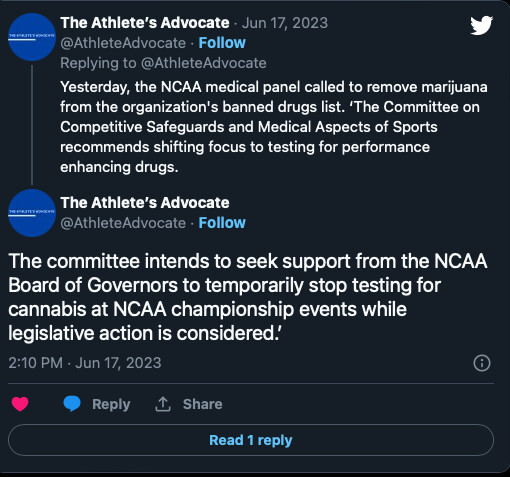
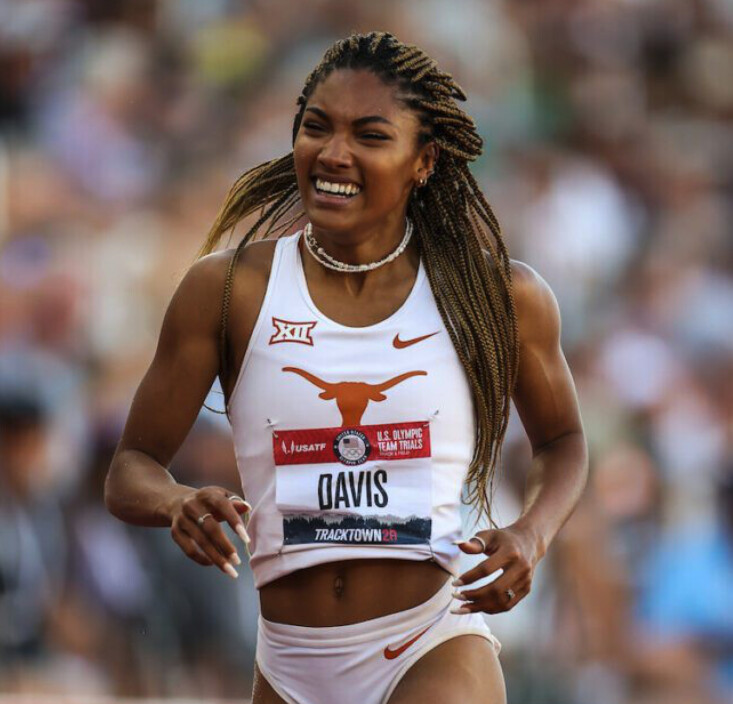
This recommendation comes amid a growing trend in the U.S., with an increasing number of states legalizing medical or recreational cannabis use. Twenty-three states have now legalized it for recreational use. In the past two years, two prominent U.S. track athletes, Tara Davis-Woodhall and Sha’Carri Richardson, have served short bans for positive cannabis tests, both losing U.S. national titles as a result of their positive tests.
In 2021, the World Anti-Doping Agency (WADA) altered its code involving cannabis, allowing for a reduced sanction if the athlete’s use occurred out of competition and unrelated to sports performance.
Last December, CSMAS acknowledged that cannabis does not provide performance-enhancing effects and suggested implementing policies that instead address the potential risks associated with excessive recreational drug use by athletes.
Previous studies suggest that cannabis is not a performance-enhancing substance from the perspective of speed, power or strength. In one study, researchers had cyclists use cannabis and then assessed their performance on the bike. They looked at both speed and power, and both were decreased in the cannabis condition. Others showed minimal or no difference in performance.
A final decision is expected from the NCAA before the start of the fall season.
by Running Magazine
Login to leave a comment
10 Reasons to Start Following Track and Field This Year
The 2023 season should be full of record-breaking performances from the sport’s biggest stars. Here are the most important things to know.
Track is back, and if the results from the indoor season and early outdoor meets are any indication, it should be another year of eye-popping results around 400-meter ovals this summer.
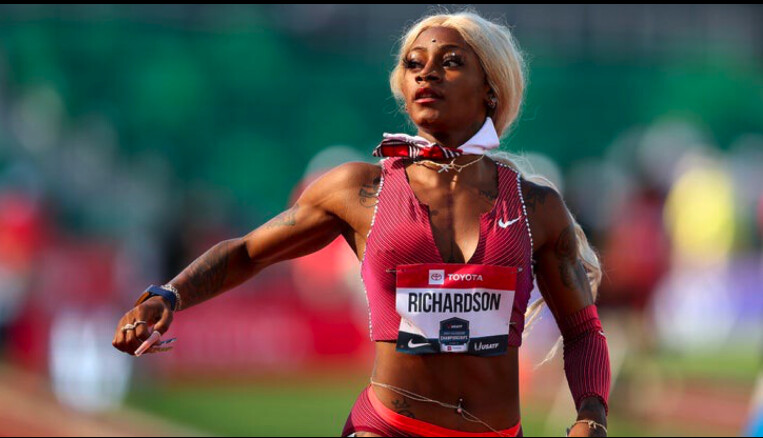
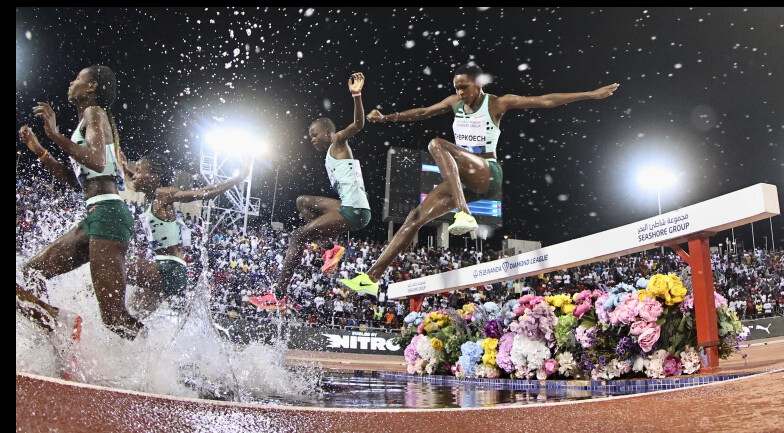
Why is track and field relevant to the average recreational runner?
Perhaps you’re running some of the same distances in your training and racing. Or maybe you have a connection to some of the events from your youth, days in gym class or on the playground. From a human performance perspective, no sport showcases the all-out speed, red-line endurance, max power, dynamic agility, and meticulous bodily control as track and field does.
Here’s a primer on the most awe-inspiring athletes and events of this summer’s track season. Because, come on: with a sport that includes events as multifaceted as the pole vault, as primal as the shot put, and as wild as the 3,000-meter steeplechase—a 1.8-mile race with 28 fixed barriers to hurdle and seven water pits to jump—what’s not to like?
One of the many things that makes track and field so special is that it’s one of the most diverse sports on the planet, both culturally and athletically.
Last summer, athletes from a record 29 different countries earned medals in the 25 different running, jumping, and throwing events at the World Athletics Championships in Eugene, Oregon.
At the highest level, there are athletes of all shapes and sizes from every culture and socioeconomic background. While there certainly are racial and cultural stereotypes that need dissolving and vast inequality among competing countries, from a performance point of view the sport is largely meritocratic, based on the time or distance achieved in a given competition.
Watching American Sydney McLaughlin-Levrone masterfully win the 400-meter hurdles in a world-record time last summer in front of a deafening crowd at Hayward Field in Eugene was a riveting experience. It was vastly different than watching Grenada’s Anderson Peters win the javelin world title with a career-best throw of 90.54 meters on his final attempt to beat India’s Neeraj Chopra, but both had edge-of-your-seat excitement, athletic excellence, and cultural significance.
One of the knocks against track and field in recent years is that it hasn’t done enough to attract casual fans the way professional football, basketball, hockey, and soccer have. Following the On Track Fest, the USATF Los Angeles Grand Prix on May 26-27 in Los Angeles is trying to up the ante by combining a mix of elite-level competition, an interactive fan festival, and top-tier musical performances.
Billed as the one of the deepest track meets ever held on U.S. soil, it will feature a star-studded 400-meter face-off featuring Americans Michael Norman, the reigning world champion, and Kirani James, a three-time Olympic medalist from Grenada, and a women’s 100-meter hurdles clash with world champion Tobi Amusan of Nigeria, Olympic silver medalist Keni Harrison of the U.S., and Olympic gold medalist Jasmine Camacho-Quinn of Puerto Rico.
Saturday’s action will be broadcast live on NBC Sports from 4:30 P.M. to 6 P.M. ET and be followed by a concert event called the Legends Jam, which will include appearances from some legendary athletes and be headlined by Grammy-winning singer Judith Hill.
American sprint sensation Sha’Carri Richardson will be racing the 100-meter dash at the USATF Los Angeles Grand Prix. You probably remember her for her perceived failures more than the astounding times she’s actually achieved on the track.
Two years ago, the sprinter from Dallas blew away the field in the 100-meter dash at the U.S. Olympic Trials with a 10.86 effort, but then she was famously suspended after testing positive for cannabis (which is on the World Anti-Doping Agency’s list of banned substances) and missed the Tokyo Olympics as a result. (She admitted using the drug to cope with the pressure of qualifying for the Olympics while also mourning the recent death of her biological mother.)
Then last year, despite strong early season performances, Richardson failed to make the finals of the 100-meter or 200-meter at the U.S. championships, so she missed out on running in the first world championships held on American soil.
This year, the 23-year-old sprinter appears to be locked in and better than ever, posting a world-leading 10.76 100-meter time on May 5 in Doha (she also ran an eye-popping 10.57 with an over-the-limit tailwind on April 9 in Florida) and posted the second-fastest time in the 200-meter (22.07) on May 13 at a meet in Kenya.
If she keeps it all together, expect Richardson to finally contend with elite Jamaican sprinters Shericka Jackson and Shelly-Ann Fraser-Pryce in the 100 and 4×100-meter relay in August at the World Athletics Championships in Budapest, Hungary.
A few years ago, American sprinter Fred Kerley was on his way to becoming one of the world’s best 400-meter runners. But he wanted more than that. What he really had his heart set on was becoming the world’s fastest man, a moniker that goes with the most dominant sprinter in the 100-meter dash.
Ignoring doubters, Kerley retooled his training and earned the silver medal in the 100-meter at the Tokyo Olympics (.04 seconds behind Italy’s Marcell Jacobs) and then continued his ascent last year by winning the U.S. championships (in 9.76, the sixth-fastest time in history) and world championships (9.86).
The 28-year-old from San Antonio, Texas, also became one of just two other runners (along with American Michael Norman and South African Wayde van Niekerk) to ever run sub-10 seconds in the 100-meter, sub-20 seconds in the 200-meter, and sub-44 seconds in the 400-meter. So far this year, Kerley has two of the four fastest 100-meter times of the season, including a speedy 9.88 on May 21 in Japan.
After trading barbs on social media this spring, Kerley and Jacobs are expected to face off in an epic 100-meter showdown on May 28 at a Diamond League meet in Rabat, Morocco, marking the first time the Olympic gold medalist and the world champion in the men’s 100m face off since the 2012 Olympic final, when Jamaican Usain Bolt beat countryman Yohan Blake. American Trayvon Bromell, the silver medalist at last year’s world championships, is also in the field, so it should be an extraordinary tilt.
If you’re a gambler, bet on Kerley to win that one and eventually get close to Bolt’s 9.58 world record. (To do so, he’ll be running faster than 26 miles per hour!) But don’t count out Kenya’s Ferdinand Omanyala, the early world leader (9.84), or fellow American sub-9.9 guys Bromell, Norman, Christian Coleman, and Noah Lyles at the 2023 World Athletics Championships on August 20, in Budapest. Depending on which three Americans join Kerley (who has an automatic qualifier) at the world championships, it’s actually quite likely the U.S. could sweep the top four spots in the 100 in Budapest.
If you’ve ever wanted to see the world’s top track and field stars competing live in the U.S., this is the year to do it. The May 26-27 USATF Los Angeles Grand Prix meet and June 3-4 Portland Track Festival are part of what might be the mosst compelling outdoor track season ever held on U.S. soil.
If you’re looking for an athlete to marvel at, start with Sydney McLaughlin-Levrone, the gold medalist in the 400-meter hurdles at the Olympics in 2021 and World Athletics Championships last summer. She’s been one of the sport’s rising stars since she was a teenager and yet she’s only 23. Her trajectory is still rising—especially since she moved to Los Angeles to train under coach Bob Kersee. Driven by her strong faith, McLaughlin-Levrone is the personification of hard work, grace and competitiveness.
This year she’ll temporarily step away from her primary event to show off her pure sprinting prowess when she opens her season in a “flat” 400-meter race at the Diamond League meet in Paris on June 9. Her personal best in the 400-meter is 50.07 seconds, set when she was a freshman at the University of Kentucky, but she clocked a speedy 50.68 while running over hurdles, en route to a world-record setting win at last summer’s world championships.
Her best 400-meter split as part of a 4×400-meter relay is 47.91, so it’s within reason to think she could be one of several runners to challenge the long-standing world record of 47.60 set in 1985 by East German Marita Koch. Because McLaughlin-Levrone has an automatic qualifier to the world championships in the 400-meter hurdles, she will likely run the open 400-meter at the U.S. championships and decide after the meet which one she’ll focus on.
American 800-meter ace Athing Mu has looked unbeatable for the past several years as she won Olympic gold in the event at the Tokyo Olympics and last year’s world championships. In fact, she has been unbeatable, having won 13 straight races since she dropped out of a mile race at the Millrose Games in January 2022. Going back to 2020 (when she was a senior in high school) and 2021 (during her one season at Texas A&M), she’s finished first in 51 of her past 53 races (relays included), with her only loss being a narrow runner-up finish to Kaelin Roberts in the 400-meter at the 2021 NCAA indoor championships.
Mu, who is also coached by Kersee and trains with McLaughlin-Levrone, seems to be the most likely athlete to challenge the women’s 800-meter world record of 1:53.28, set in 1983 by the Czech Republic’s Jarmila Kratochvílová. It’s the longest standing record in track and field, and only two runners have come within a second of it in the past 15 years. Her personal best of 1:55.04 is an American record and the eighth-fastest time in history. She’s still only 20 years old, so she has many years to keep improving and other historic opportunities ahead of her.
Mu said earlier this year she’d like to try a 400-800-meter double at an Olympics or world championships if the schedule permits—it’s only been done once successfully by Cuba’s Alberto Juantorena at the 1976 Games—but her coach has said she might attempt a 800-1,500-meter double next year at the Paris Olympics.
This year, Mu will run the 1,500 meters at the USATF Championships in July, but will likely defend her 800-meter title at the world championships in Budapest, as well as potentially running on the U.S. women’s 4×400-meter relay and the mixed-gender 4×400-meter relay (with McLaughlin-Levrone) for an opportunity to win three gold medals in a single championships.
With apologies to quarterback extraordinaire Patrick Mahomes, gymnastics all-arounder Simone Biles, and skiing superstar Mikela Shiffrin, pole vaulter Armand Duplantis just might be the most dynamically talented athlete in the world. That’s because he’s the world’s most dominant athlete (and has set six world records) in arguably the most demanding discipline, not only in track and field but quite possibly in any sport. No sport discipline involves such a dynamic combination of speed, power, precision and agility, and Duplantis, who is only 23, is already the greatest of all-time.
Prove me wrong or watch him set his latest world record (6.22 meters or 20 feet, 5 inches) at an indoor meet on February 25 in Clermont-Ferrand, France. That’s the equivalent of vaulting onto the roof of a two-story building, and in his case, often with room to spare.
Duplantis, who grew up in Lafayette, Louisiana, to athletic parents with Swedish and Finnish heritage, represents Sweden in international competitions. He started pole vaulting at age three, set his first of 11 age-group world-best marks at age seven, and won an NCAA title in 2019 as a freshman competing for LSU before turning pro.
All indications are that North Carolina State junior Katelyn Tuohy could become the next American running star. All she has done since she was young is win races and break records.
After winning the NCAA outdoor 5,000-meter a year ago, she won the NCAA cross country title in November. During the indoor track season this past winter, she set a new collegiate mile record (4:24.26) and won both the 3,000-meter and 5,000-meter title at the NCAA indoor championships in March. On May 7, the 21-year-old from Thiells, New York, broke the NCAA outdoor 5,000-meter record by 17 seconds, clocking 15:03.12 at the Sound Running On Track Fest.
Tuohy will be running both the 1,500-meter and 5,000-meter at the NCAA East Regional May 24-27 in Jacksonville, Florida, with the hopes of eventually advancing to the finals of both events at the June 7-10 NCAA Division I championship meet in Austin, Texas.
University of Arkansas junior Britton Wilson is a top collegiate star who is ready for prime time at the pro level. She won the 400-meter in a world-leading and collegiate record time of 49.13 in mid-May at the SEC Championships, where she also won the 400-meter hurdles (53.23) in a world-leading time. The 22-year-old from Richmond, Virginia, was the runner-up in the 400-meter hurdles at last year’s U.S. championships and fifth in the world championships, and could contend for a spot on Team USA in either event at the July 6-9 U.S. championships.
Kerley and Lyles are expected to square off in a 200-meter race at the USATF New York Grand Prix meet on June 24 at Icahn Stadium on Randall’s Island in New York City. There are also two high-level Puma American Track League meets in Tennessee—the Music City Track Carnival June 2 in Nashville and the Ed Murphey Classic August 4-5 in Memphis—and two Under Armour Sunset Tour meets organized by Sound Running on July 22 in Los Angeles and July 29 in Baltimore.
The best U.S. meet of the year, though, will be the USATF Outdoor Championships held July 6-9 in Eugene, Oregon, where American athletes will be vying for top-three finishes to earn a chance to compete for Team USA at the 2023 World Athletics Championships August 19-27 in Budapest.
The U.S. season will culminate with the September 16-17 Pre Classic in Eugene, Oregon, a two two-day meet that will double as the finals of the international Diamond League circuit and should include many of the top athletes who will be representing their countries in next summer’s Paris Olympics. (And if you want to see the country’s top high school athletes run unfathomable times for teenagers, check out the Brooks PR Invitational on June 14 in Seattle, Washington.)
At the June 2 Diamond League meet in Rome, Italy, the men’s field in the 5,000-meter run will have what might be the fastest field ever assembled, with 13 runners who have personal best times of 12:59 or faster.
The field will be headlined by Joshua Cheptegei of Uganda, who lowered the world record to 12:35.36 in Monaco three years ago. (That’s a pace of 4:03 per mile!). But it will also include Kenya’s Jacob Krop (12:45.71) and Nicholas Kipkorir (12:46.33), Ethiopia’s Yomif Kejelcha (12:46.79), American Grant Fisher (12:46.79), Canadian Mohammed Ahmed (12:47.20), and Guatemalan-American Luis Grijalva (13:02.94), among others. With a big prize purse at stake and pacesetters ramping up the speed from the start, it should be a race for the ages.
by Outside Online
Login to leave a comment
U.S. Olympian stripped of national title after positive cannabis test
On Tuesday, The U.S. Anti-Doping Agency (USADA) reported the one-month suspension of U.S. Olympian Tara Davis-Woodhall after a positive cannabis test in February 2023. The test came after Davis-Woodhall won the long jump at the 2023 USA Indoor Track and Field Championships, held in Albuquerque, N.M. As a result, she will have to give up her national title and she will forfeit any medals, points and prizes accumulated between Feb. 17 and March 21.
Davis-Woodhall tested positive for a urinary metabolite of THC (the active ingredient in cannabis) in a sample collected on Feb. 17, according to the report. The use of cannabis is still banned in competition by the World Anti-Doping Agency (WADA) and usually holds a penalty of up to three months. Davis-Woodhall’s period of ineligibility was reduced to one month because her use of the substance occurred out of competition and was unrelated to sports performance, per USADA.
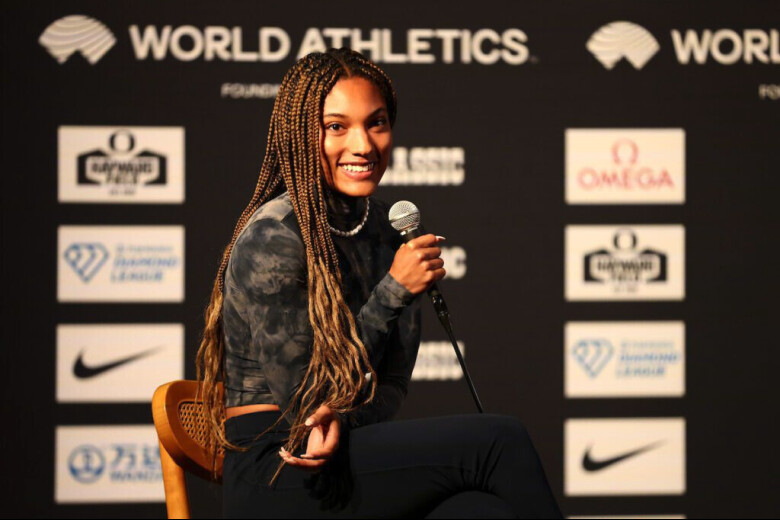
The 23-year-old also successfully completed a substance abuse treatment program.
Davis-Woodhall qualified for the 2020 Summer Olympics in the women’s long jump, where she placed sixth in the final. She is married to a prominent U.S. Paralympian Hunter Woodhall, who won medals at the previous two Paralympic Games.
In 2021, WADA altered its code involving THC, allowing for a reduced three-month sanction if the athlete establishes that their use of the substance occurred out-of-competition and unrelated to sports performance. This came after the July 2021 suspension of Sha’Carri Richardson, who lost her chance to compete at the 2020 Olympics after she tested positive for the substance. Richardson also served a one-month suspension and had her U.S. outdoor 100m title revoked.
Richardson’s suspension caused a stir on social media, with many siding with the U.S. sprinter. Even Toronto rapper Drake weighed in on the suspension, name-dropping Richardson in the song No Friends in the Industry of his Certified Lover Boy album.
by Running Magazine
Login to leave a comment
Peter Bol’s positive doping test revealed as “blunder” by Sports Integrity Australia
After two long months, the Peter Bol EPO-doping saga has concluded. Two independent laboratories have cleared the Australian 800m runner of using the banned substance, noting a “catastrophic blunder” in testing from Sports Integrity Australia (SIA).
In January, the 29-year-old faced a four-year suspension after he returned a positive result for the banned substance erythropoietin (EPO) from a urine sample taken in October. Upon further investigation, according to Sports Integrity Australia, neither of Bol’s A nor B samples showed the presence of EPO in his urine: “Only naturally occurring, endogenous erythropoietin was present during both tests.”
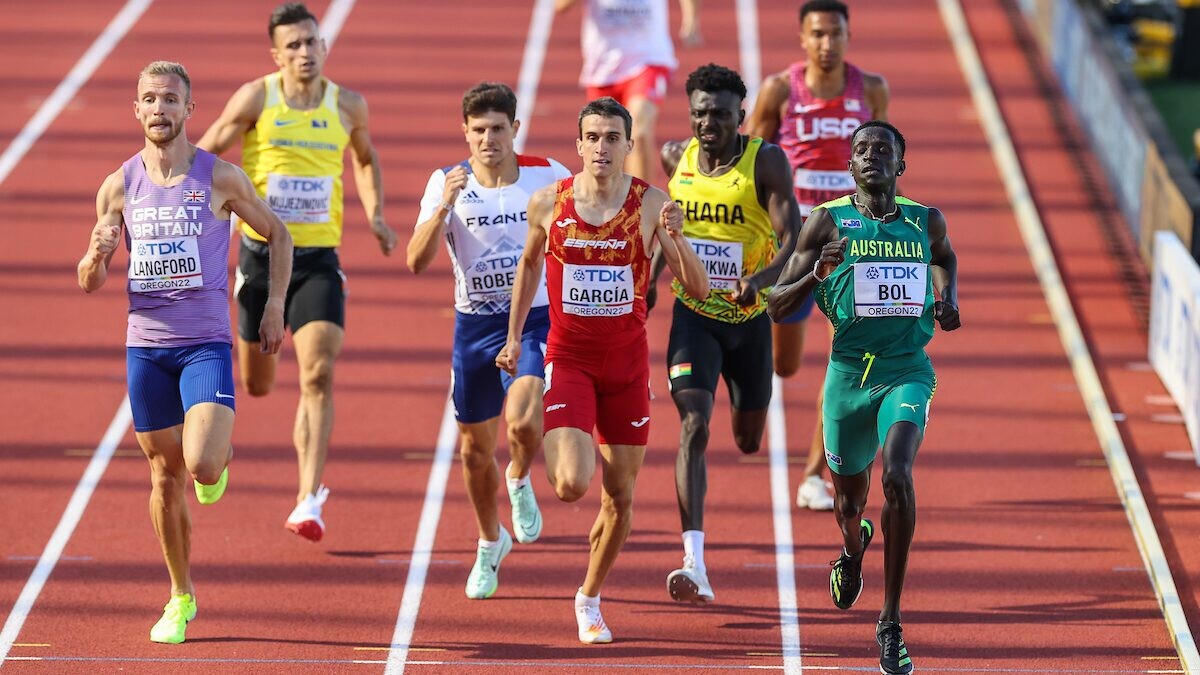
Bol said in an interview with Australia’s 9News that the entire process from the SIA was nothing but unfair to him. “To accuse me of doping without scientific proof… it’s tough, but deep down, I knew I was innocent,” said Bol.
He became a household name in Australia at the 2020 Tokyo Olympics after breaking two national records in qualifying to reach the men’s 800m final, where he finished fourth. At the 2022 Commonwealth Games in Birmingham, U.K., he won silver in the 800m behind Kenya’s Wyclife Kinyamal.
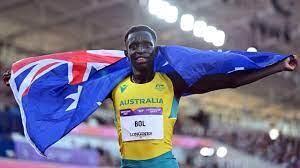
Pleading innocence
Bol hired a lawyer and throughout the process, stressed his innocence on social media, saying he would do whatever was necessary to clear his name. “I told everyone that I was innocent and asked everyone in Australia to believe me and let the process play out,” Bol wrote on Twitter.
Bol voluntarily handed over his laptop, iPad and phone to the SIA to help prove his innocence and paid $1,200 to have his B-sample tested.
Subjective testing
During the investigation process, a group of Norwegian scientists raised their doubts about Peter Bol’s positive A-sample, saying the testing for EPO by the World Anti-Doping Agency remains subjective, especially in cases such as Bol’s, which delivered a “borderline” positive result.
According to the Sydney Herald, his legal team sent a letter to SIA demanding an end to the investigation.
The letter includes two independent expert analyses of Bol’s sample from October last year “never showed the presence of any synthetic EPO” and that “inexperience and incompetence at the Australian Sports Drug Testing Laboratory (ASDTL) led to an incorrect determination” of his positive A-sample.
Last month, the SIA lifted Bol’s suspension, allowing him to return to training after the B-sample tested by the World Anti-Doping Authority (WADA) returned an atypical finding.
Bol said he does not intend to sue SIA for damages, although his legal costs are around $50,000.
“I want SIA to see this situation as an opportunity to improve,” he said to Sydney Herald. “Not me trying to fight them. We’ve been transparent the whole time. They should be the same. What my family has gone through should never happen, but it did happen, and we want people to be held accountable.”
by Marley Dickinson
Login to leave a comment
Peter Bol’s doping suspension lifted after B-sample does not match
The 800m Olympic finalist has been exonerated after results show an atypical finding between the two samples.
On Monday evening, Commonwealth Games 800m medallist Peter Bol’s provisional suspension for doping was lifted after his B-sample did not match his A-sample, meaning he can return to competition immediately.
Last month, the Australian 800m Olympic finalist made headlines as he returned a positive result for the banned substance erythropoietin (EPO) from a urine sample taken in October.
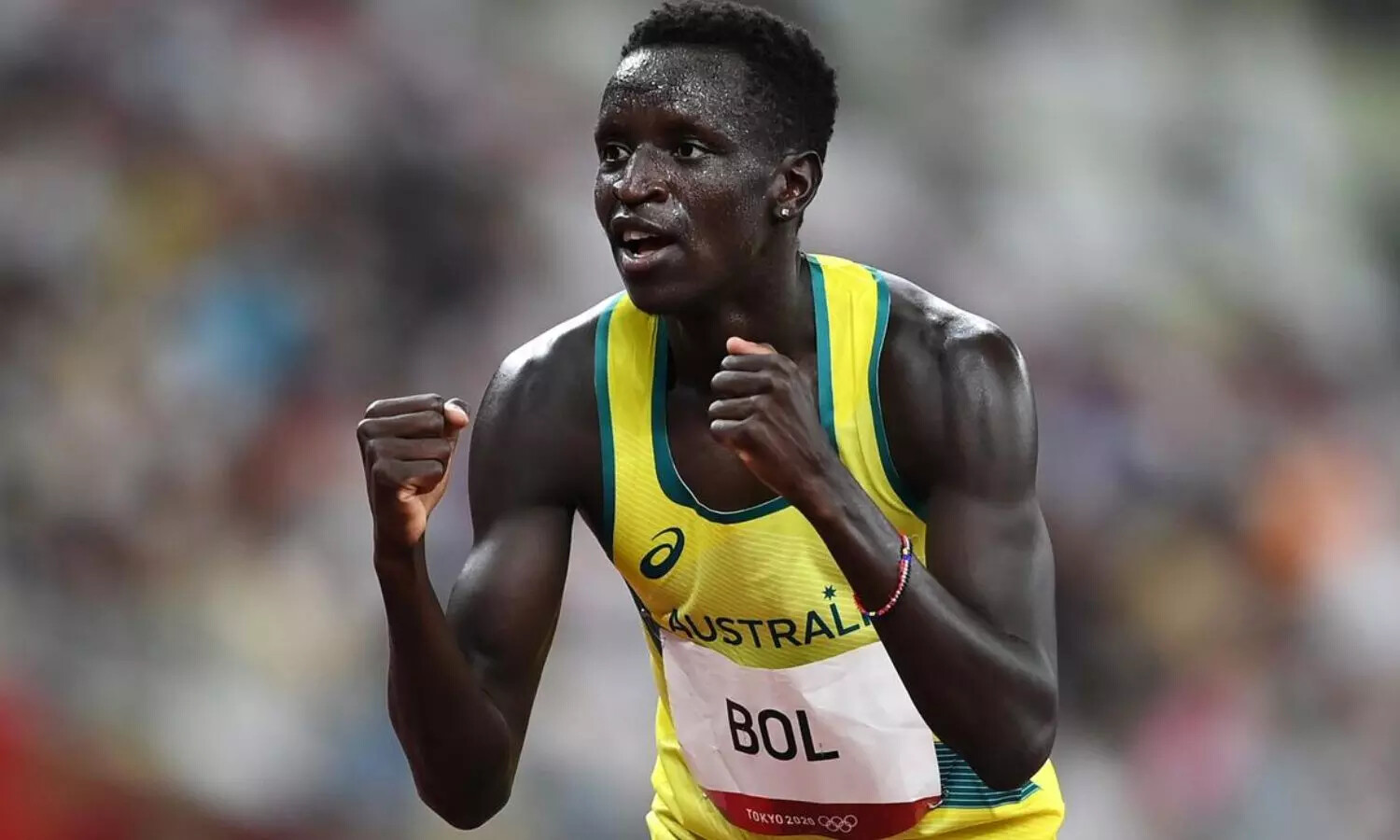
Throughout the process, Bol stressed his innocence and said he would do whatever was necessary to clear his name. “I told everyone that I was innocent and asked everyone in Australia to believe me and let the process play out,” Bol wrote on Twitter, as he faced the possibility of a four-year ban.
Bol voluntarily handed over his laptop, iPad and phone to Sport Integrity Australia to help prove his innocence and paid $1,200 just to have his B-sample tested.
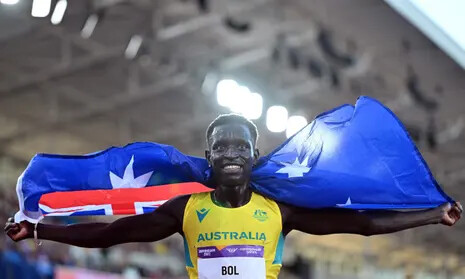
During the process, a group of Norwegian scientists raised their doubts about Peter Bol’s positive A-sample, saying the testing for EPO by the World Anti-Doping Agency remains subjective, especially in cases such as Bol’s, which delivered a “borderline” positive result.
“I was hopeful that the process would exonerate me,” Bol wrote. “I am relieved to report that it did.”
Sport Integrity Australia (SIA) said the suspension was lifted after Bol’s B-sample produced an “atypical finding,” which is not the same as a negative test result; it’s a report from a WADA-accredited laboratory that requires further investigation.
Despite Bol being allowed to return to training, Sports Integrity Australia (SIA) released a statement saying that Bol’s case remains open, and the SIA will now seek for a World Anti-Doping Agency (WADA) accredited laboratory to obtain a second opinion from an expert on the WADA EPO Working Group, which provides expert advice and analysis concerning the overall application of EPO testing.
by Running Magazine
Login to leave a comment
AIU hands Kenyan Betty Wilson Lempus five-year ban
Betty Wilson Lempus was Thursday handed a five-year ban by Athletics Integrity Unit (AIU), for violations of the World Athletics Anti-Doping Rules (ADR).
Her period of ineligibility begins on October 14, 2022, the date on which she was provisionally suspended. Her results on and since September 5, 2021 (the date on which she tested positive) have been disqualified.
In October 2022, the Kenyan was first charged with Tampering or Attempted Tampering with any part of Doping Control (Rule 2.5 ADR), including obstructing or delaying the AIU’s investigation through the provision of false information or documentation.
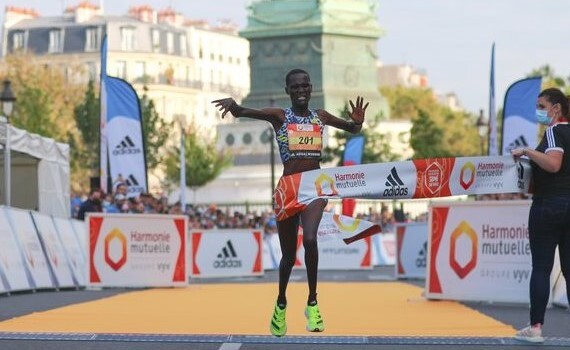
Then, last month, Lempus was further charged with the presence of a Prohibited Substance or its metabolites or markers (Rule 2.1 ADR; Triamcinolone Acetonide).
Lempus, who finished third at 2018 Shanghai International Marathon, tested positive for prohibited substance triamcinolone acetonide following her win at the 2021 Harmonie Mutuelle semi de Paris half marathon having posted a time of 1:05:46.
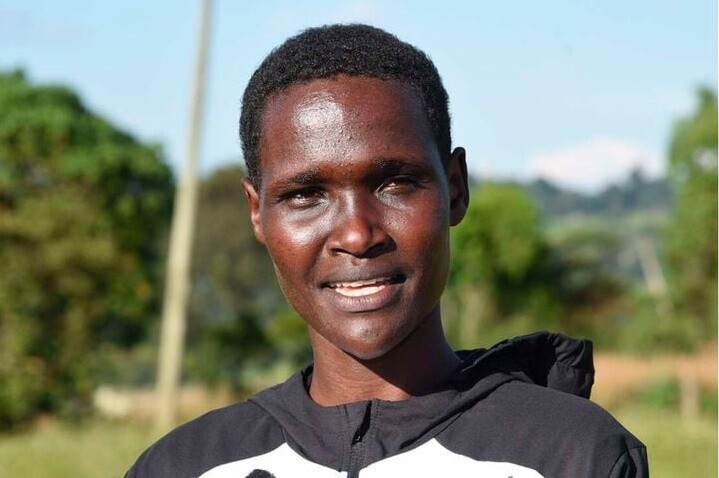
Lempus, 31, alongside the 2021 Boston Marathon champion, Diana Kipyokei had provisionally been suspended for using banned substances last year in October.
Both have also been charged with obstructing the AIU’s investigation by providing false information or documentation.
Lempus finished fifth at the Prague Marathon in 2:24:16 last year, and won the Paris Half Marathon in 1:05:46 the same year.
In 2016, the country was placed in category 'A' of the World Anti-Doping Agency’s (WADA) compliance watch list.
by Agnes Makhandia
Login to leave a comment
More Prize Money Is Flowing Into Trail Running. What Does That Mean for the Sport?
Annie Hughes, one of the top trail runners in the U.S. for the past two years, had another amazing season running ultra-distance races in 2022. On September 17, the 24-year-old Hoka-sponsored runner and part-time college student won the Run Rabbit Run 100 in Steamboat Springs, Colorado, her fourth win of 100 miles or longer since April. Earlier this year, she won the Coldwater Rumble 100 in January, Cocodona 250 in April and the High Lonesome 100 in July.
Those were all exceptional efforts in really challenging races, but the big difference she experienced after crossing the Run Rabbit Run finish line, 21 hours and 26 minutes later, was that she won $17,500. (And yes, she was handed one of those cartoonish, oversized checks at the awards ceremony.)
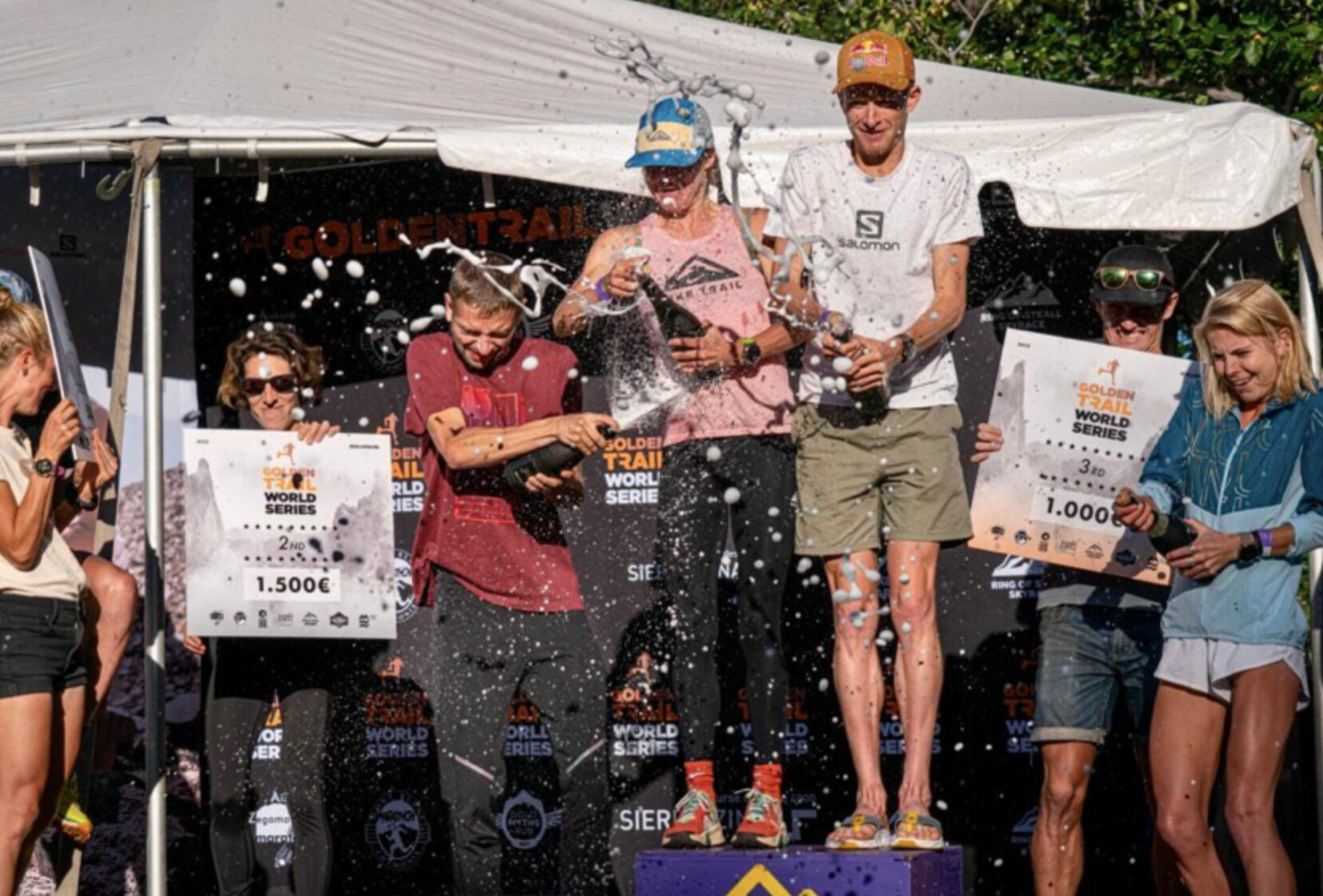
Run Rabbit Run is one of the rare American trail races that offers a relatively large prize purse, and for a decade, it's been the largest in the sport. Hughes earned $15,000 for winning the women's race and split another $5,000 with Arizona trail runner Peter Mortimer (who placed 12th overall) as part of the event's new team competition.
"That wasn't the reason I was drawn to the race, but it was definitely pretty cool to win that much money," Hughes said. "I'm glad I did it, because it wound up being a really great race with an amazing course on a beautiful day."
The origins of trail running were always more about the joy and freedom of ambling through the natural world, and less about the specific time and pace of any run or race, which is why winning big cash prizes is mostly uncommon in the sport, even for top-tier runners like Hughes. Over the past two years, Hughes has won 10 races of 50 miles or longer, yet her Run Rabbit Run victory was the first time she's ever earned money for her efforts.
More sponsorship money and bigger cash prizes are flowing into the sport, helping the top athletes earn a full-time living in the sport and become global stars. But that evolution has also created a desperate need for a unified governing body and more consistent drug-testing as doping becomes a more acute concern.
A Windfall of Prize Money
Historically, America's biggest and most notable trail running races haven't offered any prize money at all-Western States 100, Hardrock 100, Dipsea Trail Race, Leadville 100, Mount Marathon Race, Seven Sisters, Black Mountain Marathon/Mount Mitchell Challenge-partially because races simply couldn't afford to pay it, and also because, at the soul of the sport, that's not what the races were historically about or why most top runners were competing.
But with the continued growth of the sport-trail running has grown by 231 percent over the past 10 years, according to one report-and the dawn of a new level of professionalization over the past decade, there is a lot more money being injected into the sport. That includes more high-profile events and race series, more brands investing in the sport, more sponsored runners and trail running teams, as well as a growing expectation that prize money should be part of the equation as it is in road running, triathlon, and even obstacle course racing.
For many years, The North Face 50 near San Francisco was one of the only ultra trail races in the world to offer a significant prize purse. From its inception in 2006, until it disappeared after 2019, that race famously awarded $30,000 in prize money, which included $10,000 to the top finishers in the men's and women's races, plus $4,000 for second and $1,000 for third. It was a race to look forward to at the end of the calendar year, both for the cash awards and the prize-induced competition that drew top runners from around the world.
During that span, Run Rabbit Run, though a lower-profile race, quietly began dishing out some of the biggest payouts in the sport, in part because race organizers Fred Abramowitz and Paul Sachs believe in rewarding its top athletes for their efforts (as well as giving back to the community via even bigger charitable contributions). The race winnings come primarily from entry fees of the 600-runner event and sponsors, if and when the race has them. That wasn't possible back in the early days of the sport, when entry fees were minuscule and cash sponsors were mostly non-existent, but things have started to change.
Abramowitz and Sachs, who both earn their living as attorneys, are unique in that they want to give back to the elite athletes and the Steamboat Springs community, but they also want to help grow the sport. Abramowitz outlined what he calls "A Blueprint for Sponsors of Ultra Running," a three-page document that explains how and why trail ultrarunning-both as a sport and as individual races-can connect to more casual runners, sports fans, and the general public.
He points to the rampant growth of NASCAR, Professional Bull Riding, and professional poker over the past 20 years from their roots as fringe sports, relatively speaking, to mainstream spectacles with massive fan bases, TV contracts, and social media followings. Trail and ultrarunning aren't there yet, Abramowitz has noted, but they've certainly been growing rapidly.
"Today millions watch those events, though the actual number of participants is minuscule," Abramowitz wrote in his missive. "Ultrarunning can learn from these events: it needs new ideas, new ways of attracting the already committed runners and the casual sports fan to our terrific sport. Fields need to be competitive and races [need to be] dramatic; there are hundreds of 100-mile races, but those that offer competitive fields are a handful at most. Most ultra-races offer spectacular scenery in interesting venues."
Abramowitz said sponsors should support races such as Run Rabbit Run that offer prize money not merely because it's good for sport, but also because prize money can attract competitive fields, and competitive fields attract interest-from spectators, participants, potential sponsors, and the general public. He also points out that having prize money at more domestic races is a way to keep the sport from becoming entirely Euro-centric, which has been an increasing trend in the past several years.
The trend of cash purses seems to be increasing, and on the face of it, that's good for elite athletes capable of podium finishes. But it's a complex topic and one that certainly will simultaneously increase the competitiveness of the sport while, some argue, continue to pull the sport away from its organic, racing-in-nature roots that was mostly viewed as the antithesis of competitive road racing.
On the same day Run Rabbit Run paid out $75,000 in total prize money, the Pikes Peak Ascent awarded $18,000 in prize money for its top 10 finishers-including $3,000 apiece to the men's and women's winners-while the Pikes Peak Marathon, on September 18, had an additional $10,500 in total prize money for the top five runners. The races also offered $2,000 (Ascent) and $4,000 (Marathon), respectively, as course-record bonuses, and a $10,000 premium to any runner surpassing a pie-in-the-sky time well ahead of the course records. None of those records were broken, but the $28,500 in total prize money-partially backed by the Salomon-sponsored Golden Trail Series-was one of several large prize purses offered at U.S. races this year.
Other big American prize purses were also primarily tied to the Golden Trail Series events-the $50,000 spread over four races at the mid-June Broken Arrow Sky Races in Olympic Valley, California, and the September 25 Flagstaff Sky Peaks 26K race in Flagstaff, Arizona, where runners competed for $18,000 in prize money and a chance to compete at the Golden Trails World Series Final, and the $15,000 winner's earnings at the Madeira Ocean & Trails 5-Day Stage Race in October.
Also of note, the November 18-20 Golden Gate Trail Classic paid out $25,000 in total prize money to the top five finishers in both the 100K and half-marathon races, which were part of this year's nine-race $270,000 Spartan Trail World Championship Series.
Meanwhile, the Cirque Series, sponsored by On, paid out $3,600 in total prize money at each of its six sub-ultra mountain running races in the U.S., including $1,000 for the men's and women's winners. The Mt. Baldy Run-to-the-Top on September 5 in Southern California offered $3,000 to runners who broke the event's longstanding course records, and Joe Gray and Kim Dobson obliged by taking down each mark.
Most U.S. Trail and Mountain Running Championships have a minimum of $2,000 in prize money. Typically that comes from regional sponsors eager to support the local race organizations, such as the case with Northeast Delta Dental's contributions behind this year's Loon Mountain Race in Lincoln, New Hampshire, which hosted the U.S. Mountain Running Championships. That event had a $1,500 total prize purse that was paid out to the top three men and women in each race, but it also had an additional $1,500 for an Upper Walking Boss premium that was spread among the top three fastest times in each gender on the super-steep upper part of the course.
Meanwhile, the 2022 World Mountain and Trail Running Championships in Thailand paid out $66,000 to the top five finishers over four races, including $4,000 to the winners of each event.
"(The prize money) is way better than it's ever been, both for the athletes earning it and the number of sponsors who are contributing to it," says Nancy Hobbs, executive director of the American Trail Running Association and the chairperson of the USATF Mountain Ultra Trail Council that oversees national championship races and the U.S. Mountain Running Team.
From a longer view over the past decade or so, Joe Gray agrees there is more money coming into the sport than ever before. As a top-tier pro since 2008 and 21-time U.S. champion, he's regularly won more prize money at high-level races in Europe for more than a decade. But more than the growth of prize money, he has seen more brands interested in putting money behind athletes, races, and the sport in general.
"I think there has always been prize money there, and if you're successful you could make a lot more money really quickly," said Gray, a two-time World Mountain Running Champion. "I do think there is more money coming from the sponsors paying out better contracts and bigger bonuses, which I think will wind up being more beneficial to athletes overall."
Most elite trail runners get annual stipends from their sponsoring brands and bonus money for top performances. Gray is backed by Hoka, but he also has sponsorship deals with Fox River Socks, Kriva, Never Second, Knockdown, Tanri, Momentous, Casio, and GoSleeves. In addition to Hoka, Annie Hughes gets additional support from Ultraspire, Coros, and Tailwind Nutrition. But the life of professional trail runners-independent contractors who don't get healthcare and retirement program benefits-can get expensive with the growing cost of travel, regular bodywork/physio treatments, and private health insurance.
The sport's top-tier elite athletes-Joe Gray, Kilian Jornet, Courtney Dauwalter, Jim Walmsley, Maude Mathys, and Scott Jurek, among others-make a good living from their sponsorships. But there are really only a handful American trail runners making more than about $50,000 a year from shoe brand sponsorships. (Most "sponsored" trail runners are making somewhere between $10,000 to $30,000 per year.) The bottom line is that winning prize money, for those who are fast enough to consistently finish on the podium in big races, certainly helps make ends meet and is necessary to keep the sport's top athletes from having to work other jobs so they can focus entirely on training, recovery, and racing.
"This [2022] is the first year I've gone all-in on trail running," said Hughes, who worked as a waitress in Leadville the previous two years. "I'm able to live off what I make, but I'm not really saving anything. So it was really nice to win that money because then I can put some away in savings."
Higher European Standards
So far, Abramowitz appears to be right about the sport shifting to more of a European focus, and it's, at least in part, tied to the increased prize money that has attracted competitive athletes. While many top-tier European events have paid out modest prize purses for years, some of those races have also helped out visiting runners by way of travel stipends, hotel accommodations, or appearance fees. That's partially because European races are generally larger (500 to 1,000 participants or more) than U.S. races (typically fewer than 500 participants).
Unlike Hughes, who only raced in the U.S. this year, American runner Abby Hall, who runs for the Adidas-Terrex team, raced three times in Europe and earned prize money each time. She placed second in the Transgrancanaria 126K in the Canary Islands in March (which doubled as the Spartan Trail World Championship), finished third in the CCC 100K in Chamonix in August, and won the Transvulcania by UTMB 72K back in the Canary Islands in October.
Like Hughes, Hall receives an annual stipend and race bonuses from her sponsor, but admits it's been nice to have more opportunities to win money-both because it helps her make a living wage and because it's consistent with other professional endurance sports.
"In the past, it hadn't even been a consideration before, for how income would work out as an athlete," Hall said. "But this year it actually added up to be a decent amount. I'm grateful for the opportunities."
In 2022, American runner Hayden Hawks won an off-the-radar 100K a race in Krynica, Poland, and brought home the 100,000 zloty winner's prize ($26,000), one of the bigger individual purses ever awarded in trail running. In 2017, when Hawks won the CCC race, he didn't win anything because UTMB had refused until 2018 to offer prize money at its races, partly because race founders Catherine and Michel Poletti have believed that increased prize money will bring more incentive for some athletes to consider doping or that agents would take too big of a cut.
UTMB finally began offering prize money to podium finishers in 2018 with a total purse of about $34,000 (35,000) and continued that through 2021. But after forging a business relationship with Ironman and launching the new UTMB World Series, it has increased the prize money awarded in Chamonix. In 2022, UTMB said it paid out about $162,000 in total prize money (the approximate equivalent of its stated 156,000 prize purse) to the top 10 men and women finishers of the UTMB, CCC, and OCC races.
That includes $10,400 to the winners of each of those races, with approximately $5,200 going to second-place finishers and $3,125 for third. Fourth- and fifth-place finishers in each of those races earned about $1,500, while 6th through 10th took home $1,000.
While those more notable ultrarunning paydays can be big windfalls for a trail runner, they still pale in comparison to what elite-level road marathoners and triathletes earn at the biggest races that have a much larger audience, including live TV coverage. For example, the 2022 Boston Marathon awarded $876,500 in prize money and $150,000 to the winners, while New York City Marathon paid out $530,000 in total prize money at its November 6 race, including $100,000 to the men's and women's winners. The 2021 Ironman World Championships in St. George, Utah, had a $750,000 prize purse, including $125,000 to the winners, similar to what was awarded at the 2022 Ironman World Championships October 6-8 in Hawaii.
While only a few top trail runners could have opted to pursue a marathon or triathlon career instead of trail running, what's more relevant is the spike of growth trail running. Although it is not yet internationally televised as major marathons and triathlons are, the surge in participation and livestream viewing options is starting to bring in more media attention and sponsorship money than ever before. And more media attention begets more participation and professionalization.
"I think we'll definitely see ultra-trail running continue to grow for years to come," says Mike McManus, director of global sports marketing for Hoka. "I think it's at a point where it's just on the cusp of the real growth that's coming and all that will come with it, similar to where the marathon was in the 1980s and triathlon in the 1990s. It might never be as big as marathoning, but trail running will definitely get more built out as it continues to grow."
"It's nice to make some money for the sport we do. This is my job, and being able to support my family with a decent chunk of money is pretty nice," Hawks says. "I definitely don't go after races just for money, but if there is a gap in my schedule where I can win a little bit of money, I am definitely going to take advantage of that for sure. I want to continue to be in this sport and live this lifestyle as long as I can, so knowing that there are sponsors and races investing more in runners is something I am really grateful for."
The Ongoing Dilemma
While Abramowitz and Sachs have been eager to give out prize money at Run Rabbit Run, not all races are equipped to do so. Many U.S. races are garage-shop operations that barely break even, while some are just too small to make it happen. The Western States 100-Mile Endurance Run (WSER) is operated by a non-profit organization, and offering prize money goes against the mission of the race, says race director Craig Thornley.
The biggest concern that race directors have, including Thornley, is that prize money attracts athletes willing to use performance-enhancing drugs because the sport lacks a comprehensive anti-doping strategy that includes both post-race testing and out-of-competition testing.
"In general, I think the prize money is probably a good thing because professional athletes are able to make a living," Thornley said. "But I think, as a sport, we'll probably have to be more aware of people trying to use drugs or some other ways to get that prize money."
A few years ago, the Western States 100 famously announced its zero-tolerance policy regarding the use of performance-enhancing drugs (PEDs) that prohibits any athlete who has been determined to have violated anti-doping rules or policies-by World Athletics, World Anti-Doping Agency (WADA), U.S. Anti-Doping Agency (USADA), or any national sports federation-is ineligible for entry into the WSER. Although Western States has regularly drug-tested its top finishers, only a few other big trail or ultra-distance races test its finishers with a WADA-sanctioned program.
Thornley believes the incentive to cheat has probably increased as more brands have stepped up to sponsor athletes, but the increase in prize money probably makes it more tangible.
He's not the only one. Ultrarunning coach and podcaster Jason Koop, an outspoken proponent for authentic drug-testing in the sport, agrees, saying that it's time for the sport to collectively start developing mandatory drug-testing protocols, even on a small scale. While he doesn't believe doping is prevalent in trail running, he believes it's definitely already an issue.
"People would be fooling themselves if they thought that every trail running performance was clean. If you think that that's the case, then I have a bridge to sell you," Koop says. "Prize money or no prize money, I think the bigger thing is that the ecosystem is developed enough and there is enough financial reward at stake to where everyone kind of owes it to everybody else to get something done."
In other words, it's time for the sport to take some next steps-either by big governing bodies or small factions of people interested in the long-term health of the sport-to develop more structure and universal anti-doping policies.
by Trail Runner Magazine
Login to leave a comment
AIU report shows five nations represent 54 per cent of banned athletes
Earlier this week, the Athletics Integrity Unit (AIU) released its Global List of Ineligible Persons of 473 athletes or athlete support currently serving sanctions. Five countries account for more than half the total number of sanctions, with 92 athletes representing Russia.
The majority of the cases listed are related to infractions in the last five years. But there are lifetime bans for offenses dating back a decade. Many of the Russian infractions date from before the 2015 doping scandal, but numerous infractions have been detected in the last three years.

Russia is followed by India, with 65 recorded sanctions, Kenya with 54, Morocco with 24 and China with 20. These five countries make up 54 per cent of the AIU’s Global List of Ineligible Persons.
Russia (RusAF) and the Russian Anti-Doping Agency (RUSADA) are working with World Athletics to lift the ban on Russian athletes and the federation.

When World Athletics president Sebastian Coe was asked to comment on the RUSADA situation at a year-end media conference, he said, “The council will have a better update after their next meeting in March 2023.”
Kenya entered the spotlight in recent months, with many well-known distance runners receiving sanctions for doping violations. Last month, 2021 Boston champion Diana Kipyokei was given a six-year ban for a positive test for the weight-reducing and endurance-increasing drug triamcinolone acetonide. Twenty-one of the 54 Kenyan athletes serving suspensions were caught in the past year.
Since 2016, the East African nation has been classified in Category A of the countries under surveillance by World Athletics and the World Anti-Doping Agency (WADA), alongside Belarus, Ethiopia, Morocco and Ukraine.
Coe said after the World Athletics Council Meeting in November 2022 that Athletics Kenya has “a long journey” to regain trust, and that Kenyan sports minister Ababu Namwama and the council were working toward a solution.
In an attempt to crack down on doping, the Kenyan sports minster told BBC News Africa in December that he hopes to fast-track modifications to legislation and crack down on doping the same way the government does with illegal drugs–by criminalizing it.
Previous attempts to criminalize doping in Kenya have been unsuccessful, with a motion submitted by former member of parliament and 2012 Boston Marathon champion Wesley Korir being defeated in 2016. Korir and his wife, Tarah Korir, lived in Waterloo, Ont. for several years before moving back to Kenya.
by Marley Dickinson
Login to leave a comment
Detroit Free Press Marathon introduces new anti-doping policy for 2023
On Dec. 29, one of the most popular U.S. destination races for Canadian marathoners, the Detroit Free Press Marathon, announced a new anti-doping policy to prevent substance abuse among participants to level the playing field. In October, the race received some slack online after Mary (Akor) Beasley won the marathon, seven years after she served a two-year doping ban under her previous name, Mary Akor.
Akor frequently runs marathons across North America that do not test podium finishers that offer a large amount of prize money. In October, she took home USD $6,000 as the top female finisher in Detriot. Although Akor came out and explained her positive test in a Detroit Free Press article, the race received comments on social media about testing podium finishers and not allowing elites who have previously received a doping sanction to compete.
The Detroit Free Press Marathon is implementing a new anti-doping policy as it opens registration for the 2023 marathon in October. “The change is made to establish structure and to prevent substance abuse among participants at our annual race,” said Aaron Velthoven, vice president of the marathon. “This new policy will help our organizers uphold the event’s key values.”

“This was a priority for us in our offseason—to ensure fairness and integrity at the top of our race,” Velthoven said to the Detroit Free Press.
Winners will have to meet several requirements to be eligible for the prize money under the new policy:

Not currently serving a suspension for use of a prohibited substance by the USADA or WADA (the U.S. Anti-Doping Agency and World Anti-Doping Agency).
Not have ever been suspended for use of a prohibited substance by the USADA or WADA.
Not be represented by a coach who has had two or more athletes that have received such suspensions in the previous four years (from the date of the current race) by USADA or WADA.
Consent to random drug testing according to the standards and procedures of USATF, USADA, and WADA.
All elite and open registrants will be asked to acknowledge and agree to the new policy during registration.
“We felt that there were too many questions for some previous prize winners with our large-scale race, and we needed a proper anti-doping policy in place to deter the wrong type of athlete from coming to our race,” said Velthoven. The new policy means Akor will not be welcome at the 2023 marathon.
Velthoven expects an increase in participants for the 2023 marathon as the event plans to ease the COVID-19 restrictions. The 46th annual Free Press Marathon will take place on Oct. 15, 2023.
by Running Magazine
Login to leave a comment
Detroit Free Press Marathon
Our marathon course offers international appeal, traversing both downtown Detroit and Windsor, Ontario, crossing the border at both the Ambassador Bridge and Detroit-Windsor Tunnel. You will run through historic neighborhoods, around beautiful Belle Isle, and along the spectacular RiverWalk. ...
more...Russian Natalya Antyukh officially loses London 2012 gold after not appealing doping sanctions
Russia's Natalya Antyukh has had her results from the 2012 Olympic Games in London officially disqualified, allowing a reallocation of medals from the women's 400 metres hurdles final, more than 10 years later.
Antyukh had her results from the Games officially disqualified in October, but was allowed time to appeal the decision.
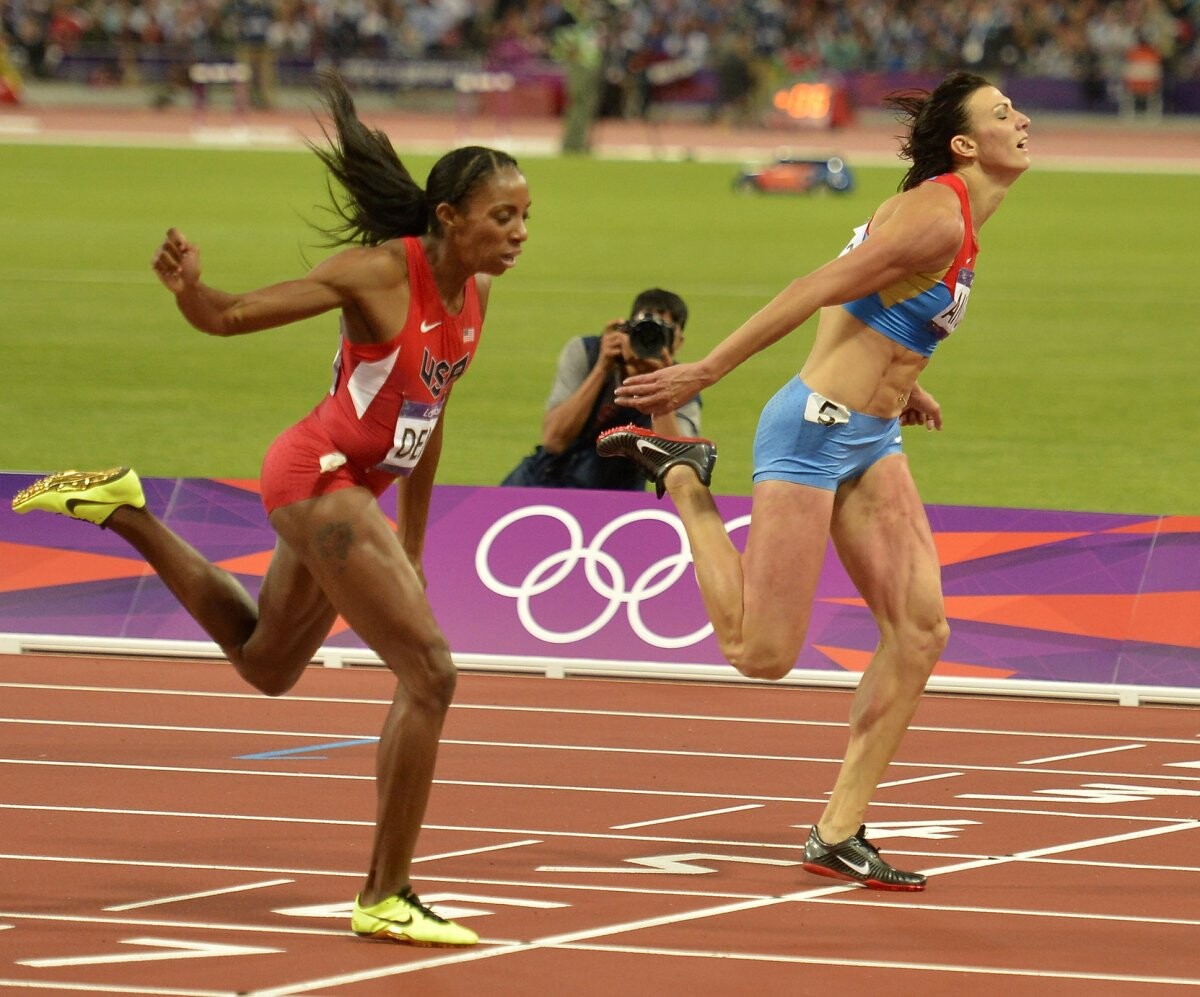
Following the expiration of the 45-day deadline, she had all results from July 15 in 2012 to June 29 the following wiped from her record, including the gold medal-winning run at London 2012.
This means Lashinda Demus from the United States is set to be awarded the gold medal retrospectively.
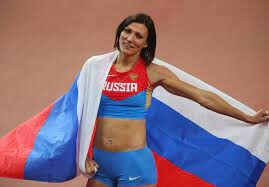
Demus was pipped in a photo finish with Antyukh in the final, with the Russian crossing the line in 52.70sec to the American's 52.77.
Czech Republic's Zuzana Hejnová, who would go on to win back-to-back World Championships titles in 2013 and 2015, has been promoted to silver, while Jamaican Kaliese Spencer will receive the bronze medal.
The Athletics Integrity Unit (AIU) charged the hurdler based on historical data at the former World Anti-Doping Agency (WADA)-accredited laboratory in Moscow.
Antyukh, now 41, was given a four-year-ban last year and had already had results wiped from June 30 in 2013 to December 31 in 2015.
World Athletics has changed its results on its website, with the AIU confirming in a statement that the International Olympic Committee (IOC) could now award the medals as planned.
"The IOC may now proceed with the reallocation of medals and the update of the IOC database," read the AIU statement.
"The AIU remains committed to investigating all cases of potential violations and securing the appropriate outcomes.
"The integrity of the sport of athletics is our utmost priority and we are pleased, in this instance, that athletes who competed fairly at the highest level will ultimately be acknowledged as the rightful medal winners."
AIU head Brett Clothier added that it was important to ensure "clean and fair competition and results, even if a decade later".
Antyukh is one of a record 46 Russian competitors at London 2012 disqualified for doping, leading to the country being stripped of 17 medals, including nine in athletics.
She also won silver in the women's 4x400m relay at London 2012, but this medal was already stripped six years ago when her team-mate Antonina Krivoshapka was given a doping ban and her results were disqualified.
Her results are not disqualified from before July 2012, meaning her 2011 world bronze and 2010 European gold medals - as well as her Athens 2004 400m bronze - still remain in her possession.
by Michael Houston
Login to leave a comment
10 years later: Pamela Jelimo to receive London Olympics bronze
Though out of the public limelight, the history-making Pamela Jelimo is still winning.
Jelimo, the first Kenyan woman to win an Olympic gold medal with her exploits in 800m at the 2008 Beijing Summers Games, is set to receive yet another medal.
Jelimo, the 2008 Africa 800m and 2012 World Indoor 800m champion, who finished fourth in one minute and 57.59 second set to benefit after race winner Mariya Savinova from Russia, was stripped of the gold medal for doping.
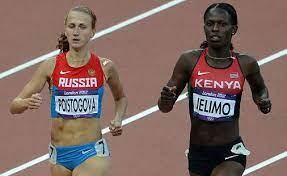
Jelimo, who celebrated her 32nd birthday on December 5, is set to receive her bronze medal from the 2012 London Olympic Games on Wednesday at the National Olympic Committee of Kenya (NOC-K) office, Gallant House, Nairobi.
Legendary Kipchoge Keino, who is an International Olympic Committee (IOC) member alongside NOC-K president, Paul Tergat, will preside over the presentation ceremony.
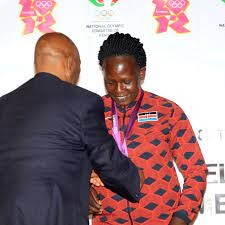
South Africa’s Caster Semenya and another Russian Ekaterina Poistogova, who had settled for silver and bronze, were scaled to gold and silver with their times of 1:57.23 and 1:57.53 respectively.
Kenya’s 2007 World 800m champion Janeth Jepkosgei, who had settled eighth in the race in 2:00.19 and Hellen Obiri, who came eighth in women’s 1,500m at the same Olympics, will receive their certificates.
Another Russian Elena Arzhakova, who finished sixth in 1:59.21 in the same race was also banned for having doped too.
With Savinova and Arzhakova banned, Jepkosgei, who had settled eighth in the race in 2:00.19 was upgraded to sixth.
On November 9, 2015, the Independent Commission Investigation of the World Anti-Doping Agency (WADA) asked for a lifetime ban for doping for Savinova, who had won gold and Poistogova, who had won bronze.
In February 2017, it was announced that Savinova was stripped of her gold medal but Poistogova was suspended in 2017 for two years, backdated to October 2014. Her London result, though, was not affected.
Alysia Johnson Montaño (1:57.93) from the United States of America and Burundi’s Francine Niyonsaba (1:59.63) finished fourth and fifth in the women’s 800m final.
A record four athletes that finished ahead of Obiri, who had settled 12th, were suspended for doping- Aslı Çakır Alptekin and Gamze Bulut from Turkey, who had won gold and silver respectively, Natallia Kareiva of Belarus, who had finished fifth and Russian Yekaterina Kostetskaya, who came sixth.
Maryam Yusuf Jamal (Bahrain), Tatyana Tomashova (Russia) and Abeba Aregawi (Ethiopia) were all scaled to gold, silver and bronze.
Aregwai, who changed allegiance to Sweden was suspended for doping in 2016.
This is the second time Olympics medals or certificates are being awarded in Kenya years later.
Asbel Kiprop received his gold medal from the 2008 Beijing Olympics in Nairobi in 2011 after the winner, Rashid Ramzi , was flagged down for doping.
by Ayumba Ayodi
Login to leave a comment
2022 World Mountain Running Championships Uphill Results: McLaughlin and Kipngeno Win
It’s finally happening! Years of postponements are done and the first-ever combined World Mountain and Trail Running Championships have started. The festivities are all just outside of Chiang Mai, Thailand, a city of 127,000 people in the mountainous northern part of the country.
Friday’s Uphill race went 8.5 kilometers uphill and with 1,065 meters of gain. Alternately, that’s 5.3 miles and 3,500 feet of elevation gain.
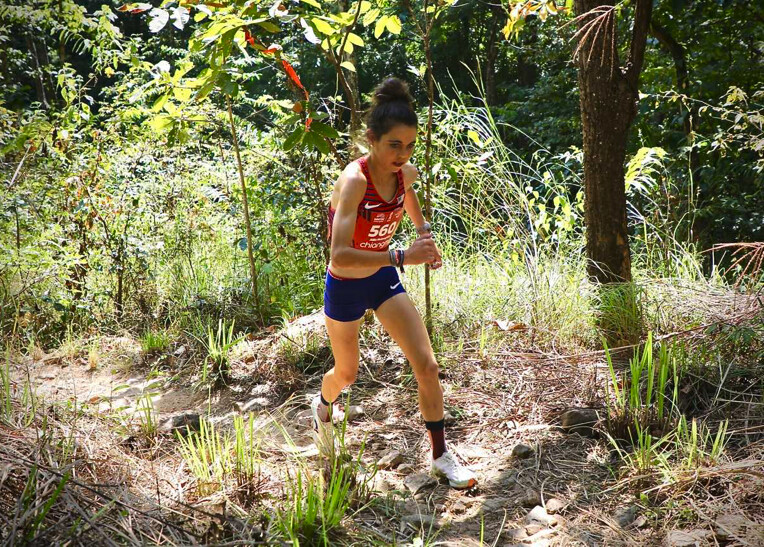
Allie McLaughlin (USA) dethroned Andrea Mayr (Austria) for the women’s crown. The pair raced up in 55:15 and 55:41, and Maude Mathys (Switzerland) was just behind in 56:00 for third.
McLaughlin just came off the Golden Trail World Series Finals in Portugal. Mayr, now 43 years old, is a six-time World Mountain Running Champion, typically excelling in uphill years. All three are expected to double back for the Classic Up and Down race on Sunday.
Monica Madalina Florea (Romania) and Onditz Iturbe (Spain) were fourth and fifth in 57:44 and 57:56.
[In 2015, Maude Mathys received a warning without suspension from the Disciplinary Chamber for Doping Cases of Swiss Olympic for two positive tests for clomifene (previously clomiphene) after it was determined that she was mistakenly taking the drug without first obtaining a World Anti-Doping Agency Therapeutic Use Exemption.]
n the teams competition, Team USA took gold, Great Britain and Northern Ireland took silver, and Switzerland rounded out the podium in third.
by I Run Far
Login to leave a comment
No reprieve as two more Kenyans suspended for doping
Athletes Integrity Unit (AIU), the body formed by World Athletics to combat doping in the sport, Tuesday provisionally suspended Ibrahim Mukunga Wachira and Kenneth Kiprop Renju for the use of banned substances.
Mukunga, who won a half marathon race in Estonia in socks in 2017, has been suspended for the use of prohibited Norandrosterone, while the national 10,000m champion Renju got nabbed for the use of Methasterone.
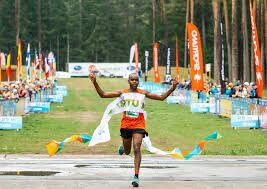
Renju is the most successful of the duo, besides winning the national title on April 27 this year, he also won Lille 10km race on March 27 in France, Prague Half Marathon on April 2 in the Czech Republic and Lisbon Half Marathon on May 22 in Portugal.
He started the season with a third place finish at Ras Al Khaimah Half Marathon on February 19 in the United Arab Emirates.
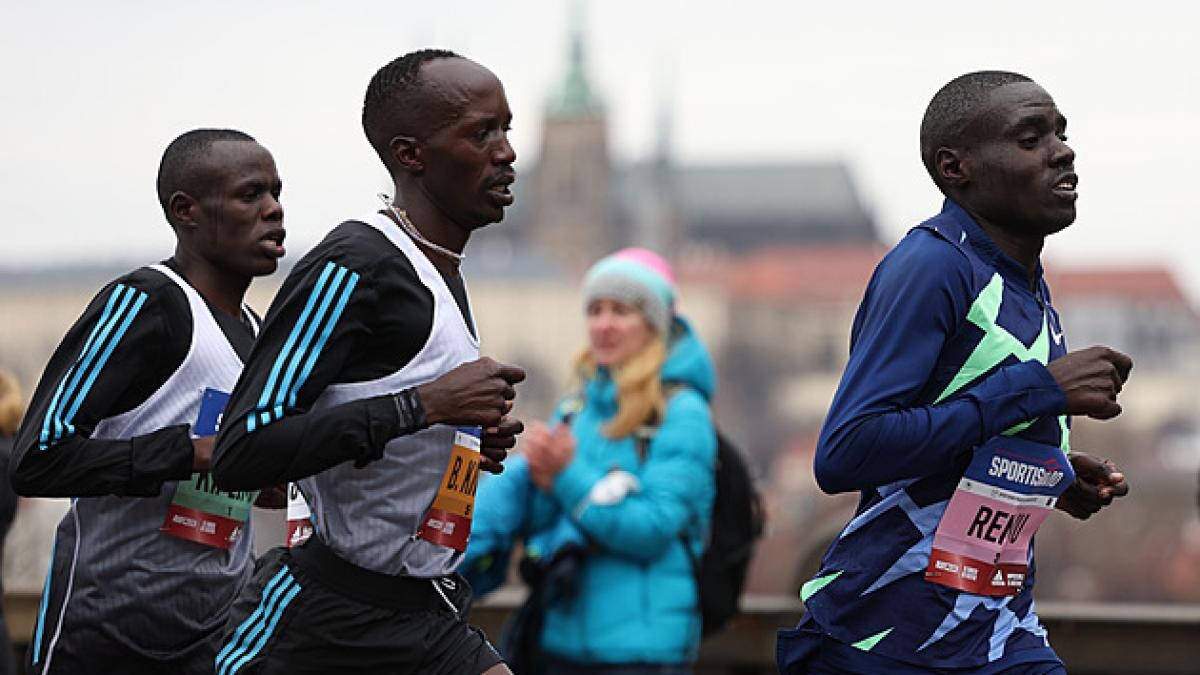
Mukunga and Renju’s ban comes only four days after the 2021 Boston Marathon champion, Diana Kipyokei and her compatriot Betty Wilson Lempus were suspended for using banned substances.
Kipyokei and Lempus’ suspension came only three days after Kenyan marathon runners Mark Kangogo and Philemon Kacheran were banned for doping.
Kacheran, who was been banned for three years on Monday last week, was hounded out from Team Kenya that was already in Birmingham for the Commonwealth Games held July 28 to August 8 in the British second capital city.
Kacheran’s ban came six days after compatriot Lawrence Cherono, the 2019 Chicago and Boston marathon champion, was prevented from competing in the World Athletics Championships in Oregon, also for a doping offence.
Besides Kacheran, three other Kenyans were banned from taking part at the Commonwealth Games due to doping.
They were female marathoners Stella Barsosio, Changwony and 1,500m runner Kumari Taki.
Close to 30 Kenyans athletes have been flagged down for various doping offences. The list could grow since more cases that are yet to be revealed are at the Anti-Doping Agency of Kenya (ADAK).
In 2016, the country was placed in category A of the World Anti-Doping Agency’s (WADA) compliance watch list.
by Ayumba Ayodi
Login to leave a comment
Banned Ujah blames Amazon supplement for positive drugs test
Banned British sprinter CJ Ujah says a “convenient” £10 supplement bought from Amazon caused him to test positive for two prohibited substances at the Tokyo Olympics.
Ujah has been handed a backdated 22-month ban but cleared of intentionally taking prohibited drugs by the Athletics Integrity Unit (AIU) and World Anti-Doping Agency (Wada). Britain was stripped of its Olympic men’s 4x100m silver medal after he tested positive for Ostarine and S-23 at the 2021 Games.
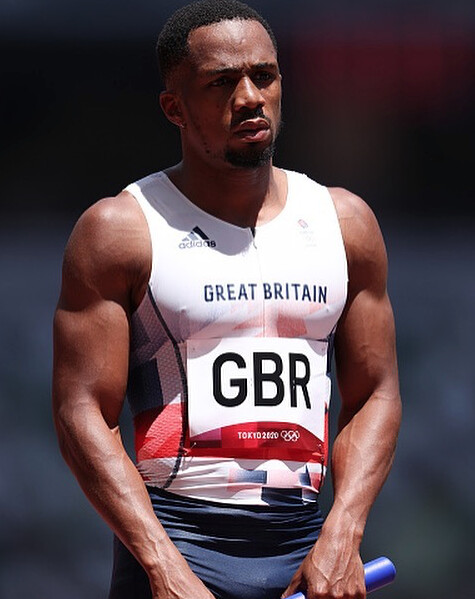
Speaking to the Guardian, 28-year-old Ujah said he had become “complacent” during the Covid-19 lockdowns.
“During the pandemic I relied a lot on Amazon, rather than using the people and resources around me,” he said. “It was just convenient, with next-day delivery. And I didn’t think anything was wrong with it.”
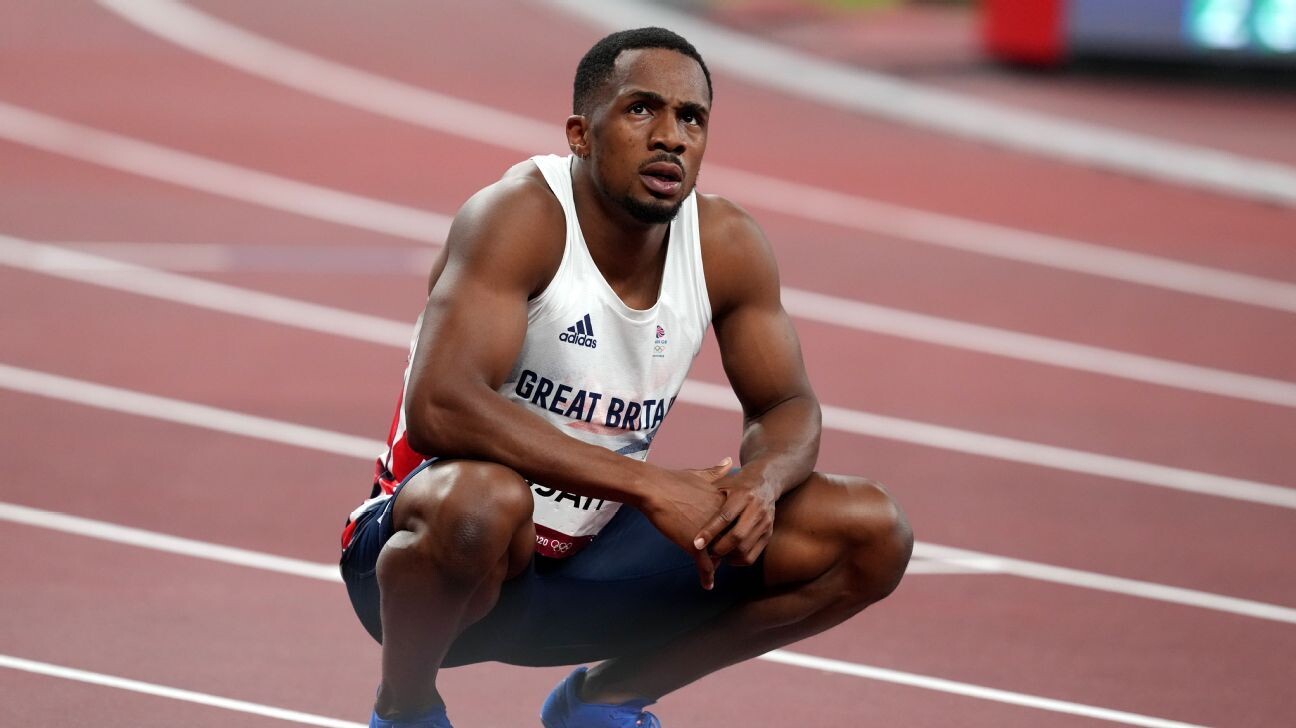
Ujah said he had been taking the supplement beta alanine for “weeks” before the Olympics, but did not know they were contaminated with trace amounts of Ostarine and S-23. He said his final drugs test before the Olympics was May 2021.
Beta alanine, a naturally occurring amino acid, is legal under Wada rules, but Ostarine and S-23 are selective androgen receptor modulators (Sarms) and the UK Anti-Doping website states Ostarine is a drug designed to have similar effects to testosterone.
“You know what? I wish I had been tested right before the Olympics, so that I never went,” he said. “That way, I would never have put these other three guys, my team-mates, through what they went through as well as myself.”
Ujah apologised to his 4x100m relay team-mates Zharnel Hughes, Richard Kilty and Nethaneel Mitchell-Blake, after Britain was stripped of a medal at a summer or winter Games for only the third time.
His ban is backdated to August 6, 2021 and will end on June 5, 2023, which would permit him to compete at August’s World Championships in Budapest if selected. UK Athletics (UKA) expressed its “extreme disappointment, frustration and sadness” towards the actions of Ujah.
The athlete has said he no longer takes supplements as he bids to “prove himself more than ever”.
“I don’t take anything,” he said. “In the future, I’m going to look to get everything from natural foods. Because I’m scared. I was even scared at one point to take paracetamol. You just become frightened of putting anything in your body.”
AIU head Brett Clothier said: “Taking supplements is risky for athletes as they can be contaminated or even adulterated with prohibited substances. Athletes owe it to their fellow competitors to be 100 per cent certain before putting anything into their body. If there’s the slightest doubt, leave it out.”
by BBC Sport
Login to leave a comment
Tokyo 2020 Olympic Games
Fifty-six years after having organized the Olympic Games, the Japanese capital will be hosting a Summer edition for the second time, originally scheduled from July 24 to August 9, 2020, the games were postponed due to coronavirus outbreak, the postponed Tokyo Olympics will be held from July 23 to August 8 in 2021, according to the International Olympic Committee decision. ...
more...Kenyan marathon runner Philemon Kacheran Lokedi has been banned for three years
Kenyan marathon runner Philemon Kacheran Lokedi has been banned for three years by the Athletics Integrity Unit (AIU) after testing positive for testosterone and its metabolites "with exogenous origin".
Kacheran was provisionally suspended on July 8 in relation to an out-of-competition sample provided in Kapenguria in Kenya on April 27, meaning he missed the Birmingham 2022 Commonwealth Games.
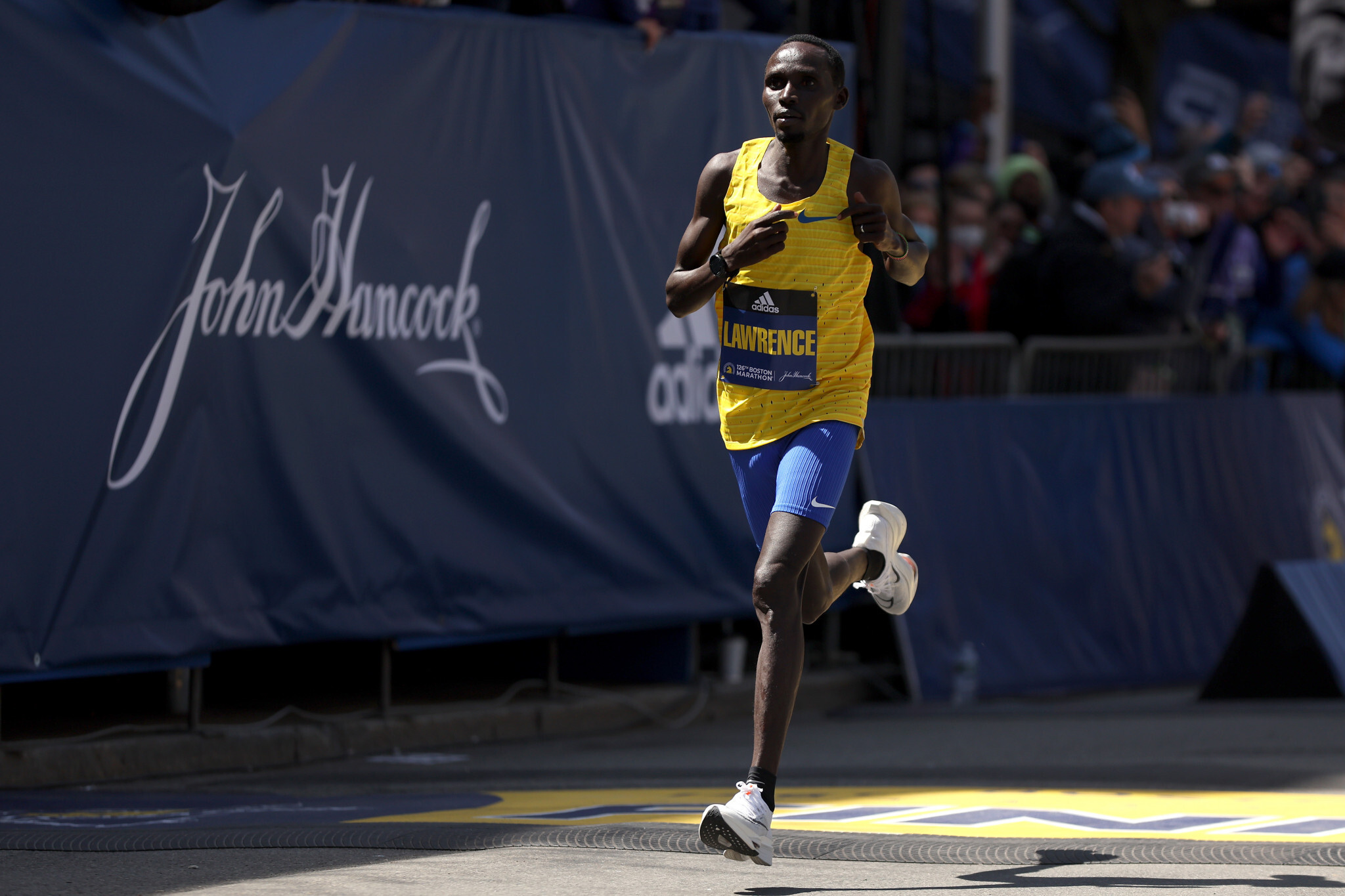
He had faced a four-year ban for his offence under World Athletics' anti-doping rules, but this was reduced to three years by the AIU due to an "early admission and acceptance of sanction".
The sanctions apply from July 8, the date of Kacheran's provisional suspension.
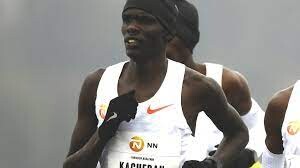
The World Anti-Doping Agency and Anti-Doping Agency of Kenya have a right to appeal against the decision to the Court of Arbitration for Sport in Lausanne.
Kacheran ran a personal best 2 hours 5min 19sec to finish third in the Valencia Marathon last December.
He had finished fourth in the Enschede Marathon and sixth in the Berlin Marathon earlier that year.
In April of this year, he clocked 2:10:12 to finish eighth in the Rotterdam Marathon.
In 2019, he served as a pacemaker for the successful sub-two-hour marathon attempt by compatriot Eliud Kipchoge.
Kacheran is the ninth athlete from Kenya to be banned by the AIU since the start of July, with the others including the winner of the 2019 Boston and Chicago Marathons Lawrence Cherono.
The AIU has also today provisionally suspended Kenyan athlete Mark Kangogo for the use of prohibited substances norandrosterone and triamcinolone acetonide, although he has not competed in a World Athletics-sanctioned event since 2019.
Kenya is one of seven Category A nations deemed by the AIU to have the highest doping risk and threaten the overall integrity of the sport.
by Patrick Burke
Login to leave a comment
Kenyan marathoner Emmanuel Saina faces three-year doping ban
One of Kenya’s top marathon-distance athletes, Emmanuel Saina, has been sanctioned with a three-year ban from competition for doping, the Athletics Integrity Unit (AIU) announced Monday.
With a marathon PB of 2:05:21 from the 2018 Buenos Aires International Marathon (where he also set the South American all-comers record), Saina was the 16th fastest marathon runner in the world that year, and when he last ran officially at the 2021 Rotterdam Marathon his 2:05:51 finish placed him 40th in the world. Saina won the 2021 Honolulu Marathon in 2:14:30, in race that featured Canadian Olympian Lanni Marchant taking the win on the women’s side.
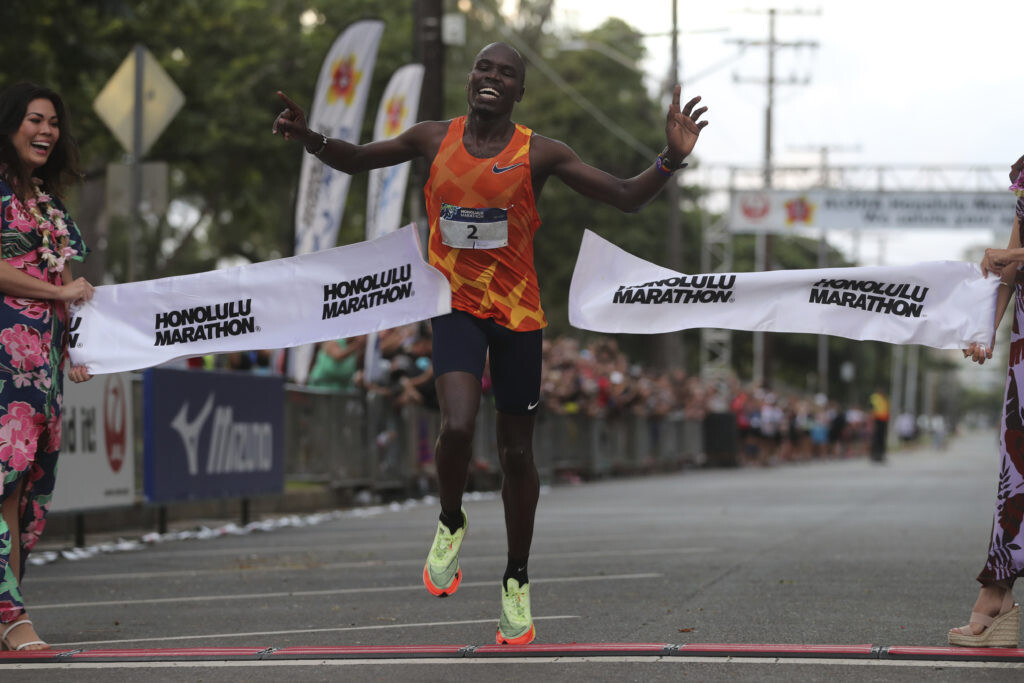
The AIU requested an out-of-competition sample from the athlete in late August, resulting in a positive test for 19-norandrosterone (19-NA), a metabolite contained in nandrolone.
In early September, the AIU notified Saina of the findings of his sample and his violation of the World Anti-Doping Agency’s rules. Saina was also informed of his rights in this situation, which includes the option of admitting to the violation and benefiting from a one-year reduction to his automatic four-year sentence. The AIU received a form of admission and acceptance of consequences signed by Saina on Sept. 17.
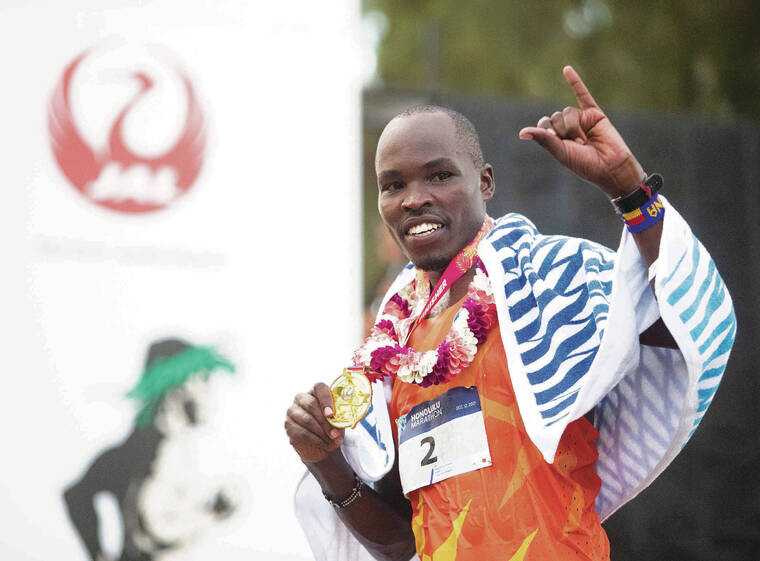
Because of Saina’s early admission, his sentence will receive a one-year reduction, resulting in a period of ineligibility of three years beginning Sept. 9, 2022, and the disqualification of his results since Aug. 17, 2022, including the forfeiture of any titles, awards, medals, points prizes and appearance money. Saina waived his right to have a tribunal or to appeal.
The performance-enhancing nandrolone is also what former American Olympian Shelby Houlihan was sanctioned for in 2021. Houlihan contested her ban, arguing that the substance came from pig offal contained in a burrito she ate the day before her out-of-competition test.
The CAS did not accept her explanation and upheld the AIU’s charge. Houlihan also submitted a hair test and a lie detector test, both supporting her innocence, but these were found to be inadequate.
by Keeley Milne
Login to leave a comment
An Olympian, a burrito, a failed drug test: Former ASU runner Shelby Houlihan looks to rebound after doping ban
On a cloudy, characteristically cool December night in Beaverton, Oregon, Shelby Houlihan, the American record holder in the 1,500 and 5,000 meters, accompanied Courtney Frerichs, the Olympic silver medalist in the steeplechase, and Frerichs’ sister, Lindsey, to an authentic Mexican food truck near her home.
The three ordered carne asada burritos and returned to Houlihan’s house to eat and watch “The Bachelorette.”
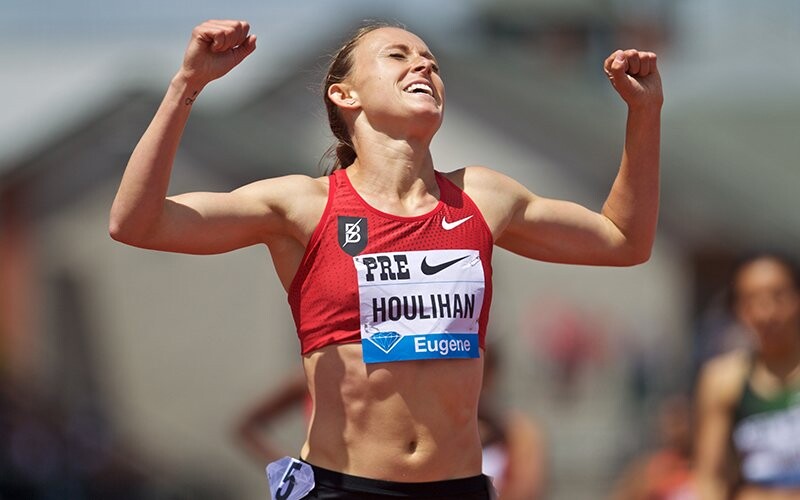
The next morning, on Dec. 15, 2020, the former Arizona State standout was given a random drug test. Weeks later, in mid-January, Houlihan was notified in an email from the Athletics Integrity Unit (AIU) that her urine sample revealed the presence of 19-norandrosterone (19-NA), a metabolite produced by the substance nandrolone – an anabolic steroid prohibited by the World Anti-Doping Agency (WADA).
She was issued a provisional suspension, which set off a cascade of events that led to a four-year ban, knocked her out of the U.S. Olympic Trials leading up to the Tokyo Olympics and will bar her from competing until January 2025 when she will be almost 32.
It is, Houlihan said, “an athlete’s worst nightmare.”
Houlihan, 29, has lost the financial support of Nike. She also saw former teammate Gabriela DeBues-Stafford leave the club rather than risk sanctions because of the Bowerman Track Club continued relationship with Houlihan.
Houlihan said her initial response to the positive test was “shock and disbelief.” She wondered, “How am I going to explain (the presence of a banned substance) when I don’t even know where it came from myself?”
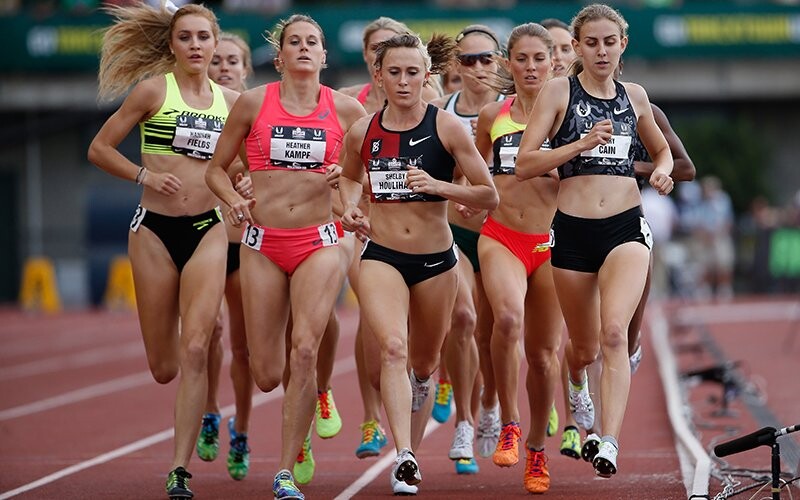
Houlihan was at a high-altitude training camp in Flagstaff when she received the email.
“I opened up my phone to an email that was urgent, confidential and … it was this lab report of scientific words that I could not read,” Houlihan told Cronkite News.
The Sioux City, Iowa, native said she read the email over about 10 times and had to Google which substance triggered the positive test, because she had never heard of nandrolone.
Then she called Jerry Schumacher, her coach at BTC, the professional Nike club that Houlihan had trained with since graduating from ASU in 2015.
“I’m just sobbing and trying to tell him what’s going on, but crying too hard,” Houlihan said.
The long road
Today, Houlihan lives alone in Portland and said she has relied on her former BTC teammates, her boyfriend and her family for support. She does odd jobs, including food delivery, and continues to train with the hope of returning to competition at an elite level.
It is not a situation she envisioned growing up in Sioux City, Iowa, surrounded by runners, including her mother, Connie, and her uncle, Bob Prince, who competed in college.
After winning several state titles at Sioux City East High School, Houlihan continued her success at Arizona State, where she won the NCAA 1,500 meters in 2014 and finished as a 12-time All-American, the second-most in program history.
She holds five school records: the outdoor 800 and 1,500 meters, and the indoor 800, mile and 3,000.
That success set the stage for 2016 Summer Olympics, where she finished 11th in the 5,000 meters and was the highest-placing U.S. runner in the race.
She also finished fourth in the 1,500 meters and set the American record at the 2019 World Outdoor Championships.
More Olympic success felt inevitable.
Shock and disbelief
Elise Cranny, a close friend and former Bowerman teammate of Houlihan’s, remembers that news of the positive test “didn’t really sink in” at first.
“I came back to the house, and I was like, ‘Man, something is very off … something is not right,’” said Cranny, who was living with Houlihan during the camp. “I think the initial reaction from everyone was disbelief, and like, ‘Oh, this is something that’s going to get figured out’ because it’s seriously wrong.”
Schumacher and Houlihan called attorney Paul Greene to “just try to figure out a game plan” and investigate further what could have happened.
The first step was a pregnancy test because nandrolone can be found in pregnant women. After she determined she wasn’t pregnant, Houlihan compiled a log of everything she ate the week before the test. She scoured text messages, bank statements, food receipts and iPhone locations to determine everything she had consumed.
“I was able to piece it together pretty well,” Houlihan said. “And then, ultimately, we just felt like the food truck the night before had to be the most likely source.”
Houlihan wouldn’t name the establishment that served her the burrito because she doesn’t “want to mess with any lawsuit.” However, she isn’t blaming the food truck.
“I don’t think they did anything wrong,” Houlihan said. “I think it just kind of happened.”
While Houlihan and her BTC teammates frequently ate at that food truck, she recalls that she received her order more quickly than usual, and the foil-wrapped burrito was unlabeled.
Houlihan believes she may have been mistakenly given a burrito containing offal (pig organ meat), which can contain nandrolone.
She remembers the meat in the burrito being finely chopped and that grease pooled in the foil. She said it seemed more rich than the burritos she had eaten there before, so much so that she was unable to finish it despite being very hungry after eating little else that day.
“We knew (nandrolone) can be found in pig offal, and we knew that I ate at a food truck that served pig offal 10 hours before (the test),” she said. “And we knew that when you ingest it, it can be at its highest levels 10 hours after ingestion, and that’s the exact kind of time frame that I had eaten that.
“And so as unlikely as all of those things were, it just seemed like the only thing that we could say, ‘All right, this makes some sense,’ and that’s really the only thing that we had to go on.”
Houlihan was the only one among the three who ate at the food truck who was tested.
A search for answers
She provided a hair sample that was examined by a toxicologist and it showed no trace of nandrolone. She also passed a polygraph examination that concluded she was not lying when asked if, at any time, she knowingly or intentionally ingested nandrolone.
Houlihan’s urine tests taken Nov. 22, 2020, Jan. 23, 2021, and Feb. 4, 2021– before and after the positive test – all were negative. She also had her vitamins and supplements analyzed by a lab.
The previous urine tests and the lab report convinced Houlihan that it’s unlikely the positive result was triggered by a supplement or vitamin she was taking. She is still being randomly tested and all of her ensuing tests have come back clean.
She believes that given “the information that we have right now, (the burrito) is the only thing that kind of makes any type of logical sense.”
Houlihan hired a private investigator to trace its sources of meat, but the effort was unsuccessful.
The private investigator found that the food truck owner purchased 30 pounds of pork stomach in a frozen batch from Iowa Beef Processors in September of 2020. However, the owner had no box or label from the meat used in December that could be traced to its processing plant.
And the investigator couldn’t determine whether the owner used pork from a castrated or uncastrated boar. Houlihan’s attorney argued it must have been uncastrated boar meat that triggered her positive test.
When the AIU officially charged Houlihan four months later, the U.S. Olympic Trials, scheduled for June 18-27, were fast approaching. Houlihan decided to go straight to the Swiss-based Court of Arbitration for Sport (CAS) to avoid missing the trials.
The CAS rejected Houlihan’s explanation of what happened and banned her from the sport for four years on June 11, 2021.
Houlihan’s ban lasts until Jan. 13, 2025. She missed last summer’s Tokyo Olympics, the 2022 World Athletics Championships in Oregon, and she’ll miss next year’s World Athletics Championships in Budapest and the 2024 Paris Olympics.
The CAS’s three-member panel found that Houlihan’s “explanation that the 19-NA in her sample resulted from her consumption of the meat of an uncastrated boar simply cannot be accepted. The explanation presupposes a cascade of factual and scientific improbabilities, which means that its composite probability is (very) close to zero.”
Lacking evidence
The panel said that Houlihan failed to prove that the burrito she ate contained boar offal.
“First, the athlete would have had to have been served pork at the food truck despite ordering beef,” the court said. “Second, the pork consumed would not have been ‘normal’ pork product ordered by the food truck, but uncastrated boar. Third, uncastrated boar enters the food chain through completely different channels than pork.”
The panel said that the polygraph result and Houlihan’s hair sample were not “sufficient for the Athlete to rebut the presumption that the ADRV (anti-doping rule violation) was intentional.”
The court also said the concentration of nandrolone in Houlihan’s urine was “2-3 times higher than the highest values reported in the scientific literature after the ingestion of much more significant quantities of meat of mature (uncastrated) boar.”
On June 14, 2021, Houlihan publicly announced she tested positive for nandrolone and would not be competing at the upcoming Olympic Trials. Because Houlihan hadn’t been racing, many thought she was battling injuries instead of serving a provisional suspension.
“And at the end of the day, the panel didn’t think it was probable enough, which is unfortunate,” Houlihan said. “But yeah, I mean, that’s the only thing that we really have as an explanation. I hope at some point, maybe some more information pops up, and maybe it’s something else entirely. I don’t know. But it would be great to have an answer at some point.”
In May, Houlihan appealed the suspension to the Swiss Federal Tribunal.
She lost. It was her last opportunity.
The hardest part to watch, Crany said, “is her getting renewed hope through the appeal process or through different things, and then seeing her kind of have that life back in her eyes again, just for it to come crashing down.”
At one point, Houlihan was offered a reduced sentence – a three-year ban instead of four years – if she admitted guilt.
She refused.
“I never even considered that to be an option, because I knew I didn’t take (nandrolone) intentionally,” Houlihan said. “And I wasn’t going to admit to something that I didn’t do. At least I fought for myself and tried to do the right thing. But taking accountability for something that I didn’t do, it’s definitely not on the table for me.”
Houlihan thinks the system is flawed because the doping agency never had to prove she took a banned substance.
“There was obviously something in my system and I understand that I have a responsibility for what’s in my body,” Houlihan said. “But I think knowing that I never intentionally put it there and (I’m) still having to serve a four-year ban is definitely a flaw in the system. I don’t feel like they did their due diligence in trying to figure out what the truth was. It was just at the end of the day I couldn’t, beyond a reasonable doubt, prove where it came from.”
Houlihan said she believes the burden of proof should be shifted and “split 50-50 between the doping agency and the athlete.” While she believes that she should have to prove what triggered the positive test, she also believes the doping agency should have to prove that she intentionally cheated.
“Just even the playing field a little bit,” Houlihan said. “If you’ve ingested something, it’s almost impossible to try to figure out where that is. Because you’re getting notified a month or two later, I don’t have the source anymore. So it’s just a really impossible task to try to figure out. And I think it’s pretty flawed that if you can’t figure it out, it’s just an automatic four-year ban, and you’re treated like a doper.”
A new normal
Houlihan’s life today includes strong family and friend support.
Cranny said she had a lot of conversations with BTC teammates to make sure Houlihan felt supported.
“What you initially think of is her mental health and someone’s life being completely ripped out from under them and not being able to do what you love to do and what she feels like she’s been born and made to do,” Cranny said. “In the beginning, you worry about her being by herself, and making sure that she has people around her and she feels supported.”
Shelby’s mother, Connie Houlihan, who lives in Phoenix, said she is worried about the mental toll on her daughter.
“You’re afraid of suicide,” Connie Houlihan said. “You know, everything’s a possibility … with depression and with something that critical that they took away from her. You don’t know. Of course, you’re scared to death.”
Connie said a couple of Shelby’s sisters went to be with Shelby right away because they didn’t want her alone. Shelby wouldn’t let her parents come visit, however, because, Connie said, “she was so overcome.”
“I think, if we would have flown there right away, she would have … this is the way she explained it to me, ‘That it would have made it all too real.’
“She was really struggling dealing with it,” Connie said. “She was crying all the time. But I think that was the hardest part for us that we couldn’t just jump on a plane and go and be with her because we respected her decision.”
Chloe Houlihan, one of Shelby’s five sisters, said her sister remained “very resilient through everything.” She said she has tried to be someone Shelby “can talk to when she’s kind of struggling.”
Shelby no longer trains with her BTC teammates, something which Chloe said has been difficult and “a little bit isolating” for her sister.
Until May, Houlihan was paying Schumacher to coach her as an independent athlete, but she confirmed she’s now training entirely by herself – using six years of past training logs as a reference.
“We just felt it was best to maybe cut ties for a little bit,” Houlihan said. “I think there was just a lot of publicity going on around me and him still working together. There was just a lot of scrutiny, I think.”
Some of that publicity and scrutiny was fueled by DeBues-Stafford’s decision to leave BTC because of Houlihan.
A two-time Canadian Olympian who placed fifth in the 1,500 at the Tokyo Olympics, DeBues-Stafford announced in April she left BTC due to Houlihan’s continued ban involvement with BTC at the time.
“Fundamentally, I left the Bowerman Track Club because, despite my best efforts, I was unable to verify that the club was not in violation of World Athletics anti-doping regulations,” DeBues-Stafford said in an interview conducted via email.
DeBues-Stafford was concerned that Houlihan was working out “under the guidance of” the three BTC coaches (Schumacher, Shalane Flanagan and Pascal Dobert) at the same location and times that other BTC athletes were working out while under the supervision of the same coaches.
“While we never did a rep together, there was still what felt to me like an unnecessarily risky proximity between both men’s and women’s teams and an athlete serving a ban,” DeBues-Stafford said.
According to DeBues-Stafford, Houlihan would also use the private gym – built at Schumacher’s residence for BTC athletes to use – at the same time BTC athletes were there under staff supervision.
“Shelby would drive to the Nike campus up to four times a week at the team’s regular time and the starting point for our regular daily runs together so she could run with us,” DeBues-Stafford said. “If she arrived before us, she would wait for BTC athletes at the meeting spot to see if any BTC athletes arrived so she could run with us. These sometimes included long runs. She also ran with the team on a regular basis at altitude camp in Flagstaff.”
Houlihan said she and her attorney inquired about the rules of her ban and were told that she couldn’t go to any practices or work out with anyone on the team, but if she happened to bump into them and they were running at the same place, then she could run with them.
“My attempts to discuss my concerns with team staff were rebuffed, as were the earlier and more sustained efforts of other teammates,” DeBues-Stafford said.
BTC did not receive independent legal advice on the issue, DeBues-Stafford said. She also said Houlihan shared accommodations with a full-time member of BTC staff during the Flagstaff camp, and those accommodations were used for organized BTC athlete support activities.
“When I asked if Shelby’s lawyer had explicitly asked the AIU about her using the same gym as BTC and about how to handle the altitude trip, I did not get a clear response,” DeBues-Stafford said.
DeBues-Stafford said she “independently sought answers,” and reached out to an anti-doping organization to verify that BTC’s collective behavior was within the rules and that there was no liability on anyone other than Houlihan.
According to DeBues-Stafford, “the anti-doping organization could not guarantee that the actions of BTC and Shelby did not constitute a violation, and could not guarantee that other athletes and support staff couldn’t face repercussions either.”
She said the anti-doping agency cited two rules in the World Anti-Doping code and advised her to leave BTC and submit an official anonymous tip to the AIU.
A trying time
While Schumacher and some of Houlihan’s other teammates knew about her positive test in January of 2021, DeBues-Stafford did not learn about Houlihan’s positive test until a couple of days before the team publicly announced the ban about six months later.
“Learning this news in mid-June almost derailed my Olympics,” DeBues-Stafford wrote in an Instagram post in April. “It was a small miracle that I showed up in Tokyo in shape to run sub-four (minutes) twice in 48 hours and place fifth.”
Houlihan said she was “surprised” and felt “blindsided and hurt and confused” by DeBues-Stafford’s social media posts because DeBues-Stafford had not told her about her concerns.
“I never knew that that was a problem for her,” Houlihan said. “And I’m not sure why she didn’t reach out to me. I reached out to her after I read her posts.”
Houlihan said she apologized to DeBues-Stafford for being affected by her situation.
“I think she just felt like she didn’t want to add to what I was going through by bringing it to me, which I don’t agree with, personally,” Houlihan said. “I felt like I would have rather had that conversation with her and I would have been more than glad to try to help that situation for her in any way, instead of what ended up happening. I think that was a lot worse – what ended up happening – than her just coming and talking to me about it.”
DeBues-Stafford has since moved to Victoria, B.C. and is now coached by Trent and Hilary Stellingwerff.
“When I told Jerry (Schumacher) I was leaving BTC due to the lack of separation between Shelby and the group, he asked if I really wanted to leave, given he was thinking of possibly no longer coaching Shelby if she lost her appeal at the Swiss Federal Tribunal,” Debues-Stafford said.
Debues-Stafford said Houlihan was still driving to the Nike campus and running with BTC when Debues-Stafford left Portland on March 31.
“Growing fear over the team potentially breaking rules, coupled with frustration at the lack of action by the team left me in an awful and unsustainable headspace,” DeBues-Stafford said. “I left altitude camp early at the end of February to get some breathing space and made my decision to leave the team.”
A powerful influence
Cranny said she misses running with Houlihan and credits her for pushing her to succeed.
“I think of her all the time when I’m racing now,” Cranny said. “She’s a huge reason why I feel like I am where I am right now in my own running. She just really opened my eyes to the importance of not limiting yourself and putting yourself in it.”
Although BTC could look a lot different, Houlihan would still like to eventually come back to the group once her ban is up.
“I definitely would like to rejoin Bowerman,” Houlihan said. “That’s like my family, basically. I’ve been a part of that group since I went pro in 2015 and I know those athletes so well. And I know that that training environment is great for me.”
Cranny also wants Houlihan to rejoin BTC and said she can’t picture her former teammate anywhere else
“It feels like this is her family,” Cranny said. “I feel like everyone here is really supportive of her, really close friends with her. So I hope (she rejoins BTC). That’s something that we’ve definitely talked about as a team is wanting to work out with her again once the ban is up.”
When asked if she thinks she can still compete at the elite level once the ban is up, Houlihan said, “I guess that’s one thing that we’re just gonna have to find out.”
Houlihan is no longer a member of BTC nor being paid by Nike. She spent $250,000 in legal fees fighting her ban without any financial support from the Beaverton-based shoe and apparel giant.
“They said that they support me, and they believe in me, but as far as financially, I haven’t really received any support from them in that way,” Houlihan said.
Houlihan lost her six-figure professional contract with Nike and hasn’t had a paycheck in over a year. Her Nike deal also gave her the opportunity to earn performance-based bonuses on top of her base compensation, income that is also gone.
Houlihan’s mom called the entire process “an injustice” and said it wouldn’t make sense for her daughter to jeopardize her Nike contract by doping.
“Why would somebody with a contract that she had and the money that she was making, why would she cheat?” Connie said. “She had a contract (with Nike) through the (Tokyo and Paris) Olympics like, why would you cheat?”
Houlihan said Nike hasn’t offered her a job, either.
“I’ve been doing some food delivery things like DoorDash and stuff, just to try to make a little money on the side, but yeah, just trying to get by.”
Houlihan continues to train but admits it is difficult.“It’s been really challenging, to be honest,” Houlihan said.
As she trains alone, without her former coaches and teammates for support and motivation, Houlihan said she sometimes stops halfway through a workout or doesn’t always finish it at all. She finds it more difficult to hit her targeted times.
“I think it’s easy to do that when I’m having a great time and I’m having fun, and I’m finding joy in running,” Houlihan said. “But a lot of the things that make it fun aren’t really there for me right now.”
by David Veenstra (Cronkite News)
Login to leave a comment
ADHD and runners: can diet help with management?
As a sports nutritionist, I commonly counsel runners and other athletes who have Attention Deficit Hyperactivity Disorder—generally referred to as ADHD (or ADD). ADHD is characterized by hyperactivity, impulsivity, and/or inattention. It affects 4-10% of all American children and an estimated 4.4% of adults (ages 18-44 years). ADHD usually peaks when kids are 7 or 8 years old. Some of the ADHD symptoms diminish with maturation but 65-85% of the kids with AHDH go on to become adults with ADHD.
Ideally, runners with ADHD get the help they need to learn how to manage their time and impulsiveness. Unfortunately, many youth athletes with ADHD just receive a lot of negative feedback because they have difficulty learning rules and strategies. This frustrates teammates and coaches. Older athletes with ADHD often run to reduce their excess energy, calm their anxiety, and help them focus on the task at hand. This article offers nutrition suggestions that might help coaches, friends, and parents, as well as runners with ADHD, learn how to calm the annoying ADHD behaviors.

• To date, no clear scientific evidence indicates ADHD is caused by diet, and no specific dietary regime has been identified that resolves ADHD. High quality ADHD research is hard to do because the added attention given to research subjects with ADHD (as opposed to the special diet) can encourage positive behavior changes. But we do know that when & what a person eats plays a significant role in ADHD management and is an important complimentary treatment in combination with medication.
• ADHD treatment commonly includes medications such as Concerta, Ritalin & Adderall. These medications may enhance sports performance by improving concentration, creating a sense of euphoria, and decreasing pain. These meds are banned by the World Anti-Doping Agency (WADA) and the International Olympic Committee (IOC). Hence, runners who hope to compete at a high level are discouraged from taking ADHD medications

• To the detriment of ADHD runners, their meds quickly blunt the appetite. Hence, they (like all athletes) should eat a good breakfast before taking the medication.
• The medication-induced lack of appetite can thwart the scrawny teen runner who wants to gain weight and add muscle. Teens should be followed by their pediatricians, to be sure they stay on their expected growth path. If they fall behind, they could meet with a registered dietitian (RD) with knowledge of sports nutritionist (CSSD) to help them reach their weight goals.
• An easy way for “too thin” runners to boost calories is to swap water for milk (apart from during exercise). The ADHD athlete who does not feel hungry might find it easier to drink a beverage with calories than eat solid food. Milk (or milk-based protein shake or fruit smoothie) provides the fluid the athlete needs for hydration and simultaneously offers protein to help build muscles and stabilize blood glucose.
• A well-balanced diet is important for all runners, including those with ADHD. Everyone’s brain and body need nutrients to function well. No amount of vitamin pills can compensate for a lousy diet. Minimizing excess sugar, food additives, and artificial food dyes is good for everyone.
• Eating on a regular schedule is very important. All too often, high school runners with ADHD fall into the trap of eating too little at breakfast and lunch (due to meds), and then try to perform well during afterschool sports. An underfed brain gets restless, inattentive, and is less able to make good decisions. This can really undermine an athlete’s sports career
• Adults with ADHD can also fall into the same pattern of under-fueling by day, “forgetting” to eat lunch, then by late afternoon are hangry and in starvation mode. We all know what happens when any runner gets too hungry – impulsiveness, sugar cravings, too many treats, and fewer quality calories. This is a bad cycle for anyone and everyone.
• All runners should eat at least every four hours. The body needs fuel, even if the ADHD meds curb the desire to eat. ADHD runners can set a timer: breakfast at 7:00, first lunch at 11:00, second lunch at 3:00 (renaming snack as second lunch leads to higher-quality food), dinner at 7:00.
•For high school runners with ADHD, the second lunch can be split into fueling up pre-practice and refueling afterwards. This reduces the risk of arriving home starving and looking for (ultra-processed) foods that are crunchy, salty, and/or sweet.
• (Adult) runners with ADHD are often picky eaters and tend to prefer unhealthy snacks. For guidance on how to manage picky eating, click here for adults and here for kids.
• Fiber-rich fruits, vegetables, and whole grains can be lacking on an ADHD runner’s food list. Their low fiber diet can lead to constipation. Fiber also feeds the zillions of microbes in their digestive tract that produce chemicals that can positively impact brain function and behavior. Everyone with ADHD should eat more fiber-rich foods like beans (hummus, refried beans in a burrito), seeds (chia, pumpkin, sunflower, sesame), and whole grains (oatmeal, brown rice, popcorn). They offer not only fiber but also magnesium, known to calm nerves.
• With more research, we’ll learn if omega-3 fish oil supplements help manage the symptoms of ADHD. At least, eat salmon, tuna, and oily fish as often as possible, preferably twice a week, if not more.
• Picky eaters who do not eat red meats, beans, or dark leafy greens can easily become iron deficient. Iron deficiency symptoms include interrupted sleep, fatigue, inattention, and poor learning and can aggravate ADHD. Iron deficiency is common among runners, especially females, and needs to be corrected with iron supplements.
• While sugar has the reputation of “ramping kids up”, the research is not conclusive about whether sugar itself triggers hyperactivity. The current thinking is the excitement of a party ramps kids up, more so than the sugary frosted cake. Yes, some runners are sugar-sensitive and know that sugar causes highs and crashes in their bodies. They should choose to limit their sugar intake and at least enjoy protein along with sweets, such as a glass of milk with the cookie, or eggs with a glazed donut. Moderation of sugar intake is likely more sustainable than elimination of all sugar-containing foods.
by Colorado Runner
Login to leave a comment
Kenyan runner Wambui banned for seven years over positive test and cover-up
Kenyan runner Tabitha Gichia Wambui has been banned from competition for seven years after testing positive for norandrosterone and tampering with the anti-doping process.
Wambui argued that she was injected with the testosterone booster at hospital where she was being treated for "a headache and general body weakness".
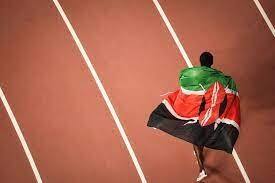
However, an investigation from the Anti-Doping Agency of Kenya showed that the 37-year-old did not attend the hospital on the same dates as her medical reports stated and the hospital also had no record of the outpatient number on the documents the athlete submitted.
This attempted cover-up resulted in the tampering charge, which Wambui later admitted.
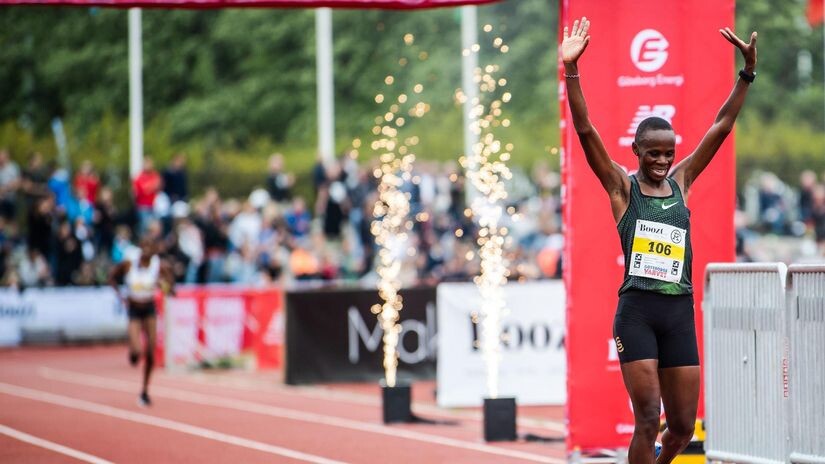
The athlete was banned for four years for the failed test and four for tampering, with one year removed from the overall sanction because Wambui was judged to have admitted the offences early and accepted the sanction.
The beginning of Wambui's ban is backdated to September 19 2021 and all of her results from that date have been disqualified, including victory at the Poznań Half Marathon in Poland on October 17 last year.
All titles, medals, points, prizes and appearance money must also be forfeited by the Kenyan from this period.
September 19 was the date that her first urine sample was taken, in-competition at the Copenhagen Half Marathon, before a second sample was collected at the race in Poland.
The following day, the WADA-accredited laboratory in Oslo reported an adverse analytical finding for norandrosterone in the first sample.
Norandrosterone is a World Anti-Doping Agency (WADA) non-specified substance as it is a product of nandrolone, an anabolic androgenic steroid.
Wambui's ban comes just a month after her compatriot Lawrence Cherono, the eighth-fastest marathon runner of all time, was banned from competing at the World Athletics Championships in the United States.
Cherono had tested positive for trimetazidine which can be used medically to prevent angina attacks.
It was also the same drug the Russian figure skater Kamila Valieva tested positive for before the Beijing 2022 Winter Olympic Games.
Kenya is one of seven Category A nations deemed by the Athletics Integrity Unit (AIU) to have the highest doping risk and threaten the overall integrity of the sport, along with Bahrain, Belarus, Ethiopia, Morocco, Nigeria and Ukraine.
There are currently 49 Kenyan athletes listed as banned in the AIU database.
by Owen Lloyd
Login to leave a comment
Caster Semenya unnoticed at World Championships The South African Olympic champion fails to advance in the 5,000 meters in Oregon – her first major international competition since 2017
How many times had South Africa’s Caster Semenya charged onto the Hayward Field homestretch seemingly in a different race than the rest of the pack, the sport’s most storied stadium rocking as Semenya raced into the deafening roar?
How many times had American track and field’s most knowledgeable fans, most passionate crowd stood in appreciation of the two-time Olympic, three-time World 800-meter champion?
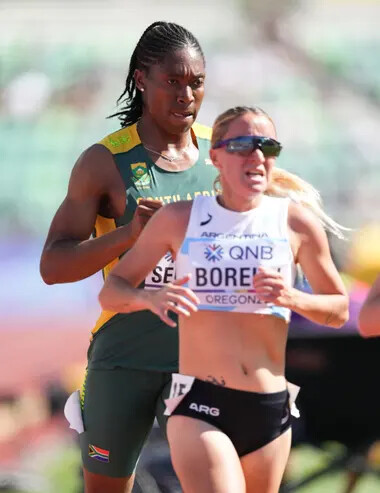
On a scalding hot afternoon at the World Championships on Wednesday, Semenya labored through the final meters of her 5,000-meter heat in front of a half-empty stadium, largely ignored or unnoticed even in a place that calls itself Tracktown U.S.A.
Semenya, one of the most compelling and controversial athletes of her generation, has fallen so far off the sport’s radar since 2019 that the most well-known of her fellow competitors on Wednesday didn’t even realize she was in the competition.
“Caster?” asked Sifan Hassan, the Olympic 5,000 and 10,000 champion from the Netherlands, who ran in a later heat on Wednesday.
“Caster Semenya ran the 5,000?” Hassan asked again. “ I had no idea. I didn’t even know she was here. Did she make it?”
Semenya, running in her first major international competition since winning the 2017 Worlds 800 title, did not advance to the final, finishing 13th in her heat, running 15 minutes, 46.12 seconds, nearly a minute off the winning time of Gudaf Tsegay of Ethiopia (14:52.69).
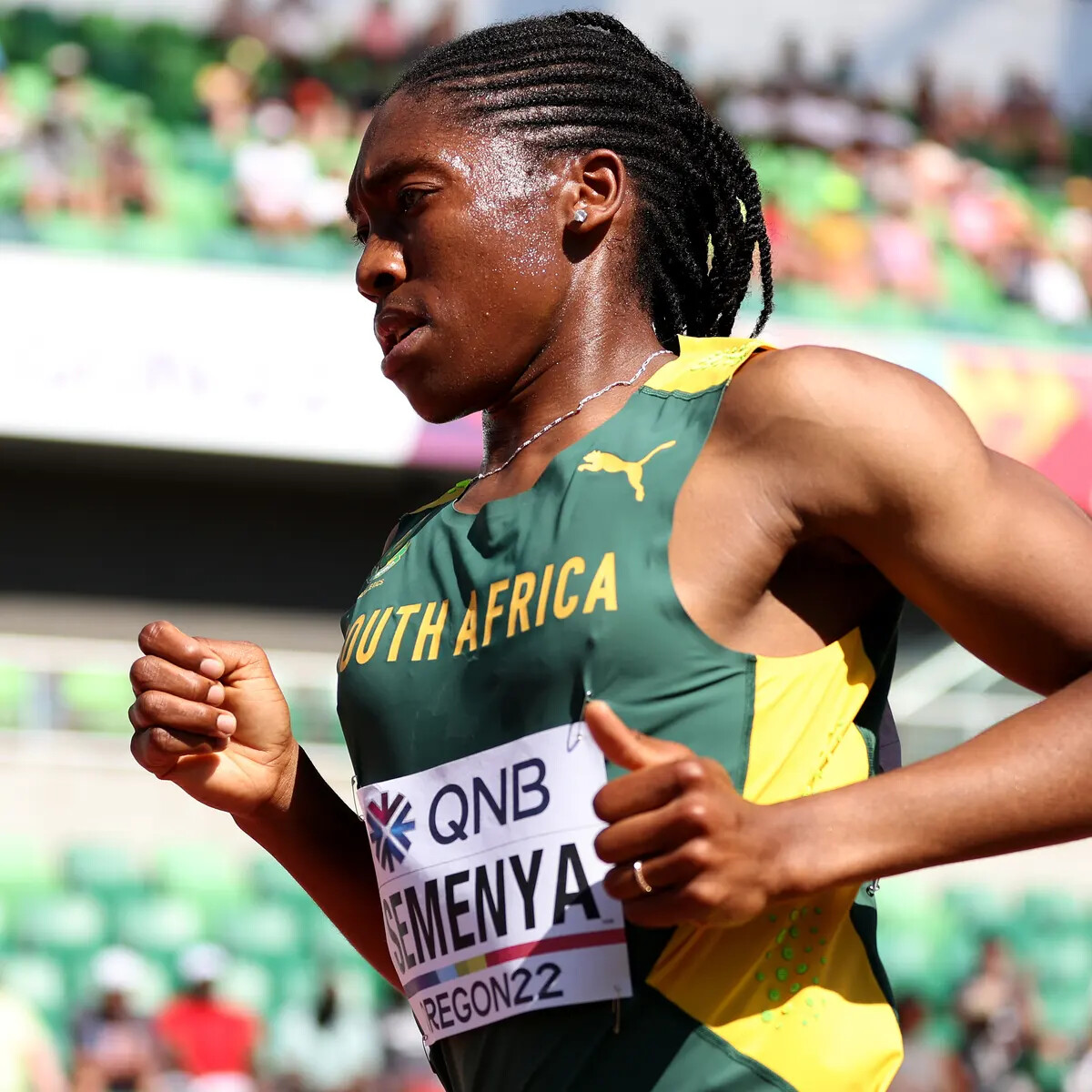
“Cooking,” Semenya said after the race, referring to the heat. She declined to answer reporters’ questions.
Under different circumstances, the sport would be obsessing over the prospect of a showdown between Semenya, 31, and Athing Mu, the 20-year-old Olympic champion from the U.S. in Sunday’s 800 final and whether the pair could challenge the world record of 1:53.28 that was set by Czechoslovakia’s Jarmila Kratochvilova in 1983.
Instead, Semenya, who was assigned female at birth, raised as a girl and identifies as a woman has not raced the 800 in meets sanctioned by World Athletics, the sport’s international governing body, because of her refusal to submit to the organization’s guidelines regarding intersex athletes.
Under the World Athletics guidelines athletes in events from the 400 to the mile – in other words, Semenya’s events – are required to take hormone suppressing drugs to reduce their testosterone to below 5 nanomoles per liter for at least six months before being allowed to compete internationally.
Semenya has an intersex condition called Differences in Sexual Development (DSD) or 46, XY that because of differences in sex development that causes male and female traits and a testosterone level higher than the typical female range. She is not transgender.
“I am a woman and I am a world-class athlete,” Semenya said in 2019, shortly before the Prefontaine Classic, her final 800. “The IAAF will not drug me or stop me from being who I am.”
Semenya had found herself unwittingly in the center of controversy almost from the moment she emerged on the world stage a decade earlier.
She won her first Worlds title in 2009 as an 18-year-old, a victory that prompted Russia’s Mariya Savinova to suggest the South African was a man.
“Just look at her,” Savinova said.
While the results of Semenya’s sex test were supposed to be confidential they were leaked to Australia’s Daily Telegraph. Semenya has internal testes but no ovaries or womb, the newspaper reported quoting the test report.
“She is a woman, but maybe not 100 percent,” IAAF secretary general Pierre Weiss said at the time, doing nothing to discourage the headline writers at New York’s Daily News who blared that the World champion “is a woman … and a man.”
Semenya began taking a hormone suppressant drug. She finished second to Savinova at both the 2011 Worlds and 2012 Olympics.
“The IAAF used me in the past as a human guinea pig to experiment with how the medication they required me to take would affect my testosterone levels,” she said in 2019. “Even though the hormonal drugs made me feel constantly sick the IAAF now wants to enforce even stricter thresholds with unknown health consequences.
“I will not allow the IAAF to use me and my body again. But I am concerned that other female athletes will feel compelled to let the IAAF drug them and test the effectiveness and negative health effects of different hormonal drugs. This cannot be allowed to happen.”
Semenya was awarded the 2012 Olympic gold medal in 2017, two years after the World Anti-Doping Agency recommended that Savinova receive a lifetime ban for doping and her results dating to July 2010 be disqualified.
Given the event’s suspect history, the irony of World Athletics now demanding she dope to level the playing field is not lost on Semenya.
“I’m not going to do that,” she told the Orange County Register after the 2019 Prefontaine meet. “I’m a very clean athlete. I believe in the clean sport. I believe in the equal opportunities. At the end of the day, this is a woman’s sport, this is a man’s sport. If they’re going come (at) me with that nonsense then why do you lead?”
Semenya challenged World Athletics guidelines with the Court of Arbitration for Sport. A three-member CAS panel in June 2019 said the World Athletics policy was “discriminatory” toward athletes with DSD but two of the panel members, nevertheless agreed with the World Athletics that policy was “necessary, reasonable and proportionate” to counter advantages DSD athletes have over other female competitors. Semenya and other female athletes with DSD should be considered “biological males” World Athletics told CAS.
Switzerland’s Supreme Court rejected Semenya’s appeal in September 2020. She filed an appeal with the European Court of Human Rights in February 2021.
While Semenya fell short in her bid to reach the Olympic 200-meter qualifying standard last year, the success of other intersex athletes has raised further questions about the World Athletics policy.
by Scott Reid
Login to leave a comment
World Athletics Championships Budapest23
Budapest is a true capital of sports, which is one of the reasons why the World Athletics Championships Budapest 2023 is in the right place here. Here are some of the most important world athletics events and venues where we have witnessed moments of sporting history. Throughout the 125-year history of Hungarian athletics, the country and Budapest have hosted numerous...
more...Olympic 800m medalist Nijel Amos suspended for doping
The third fastest 800m runner of all time, Botswana’s Nijel Amos has been provisionally suspended ahead of this week’s World Championships, after the 2012 Olympic silver medallist tested positive for a banned metabolite, the Athletics Integrity Unit (AIU) said on Tuesday.
The drug found in the 28-year-old’s system was GW1516, which modifies how the body metabolizes fat, and which can boost endurance. An AIU press release said that the World Anti-Doping Agency (WADA) has also warned that it poses a health risk to athletes.
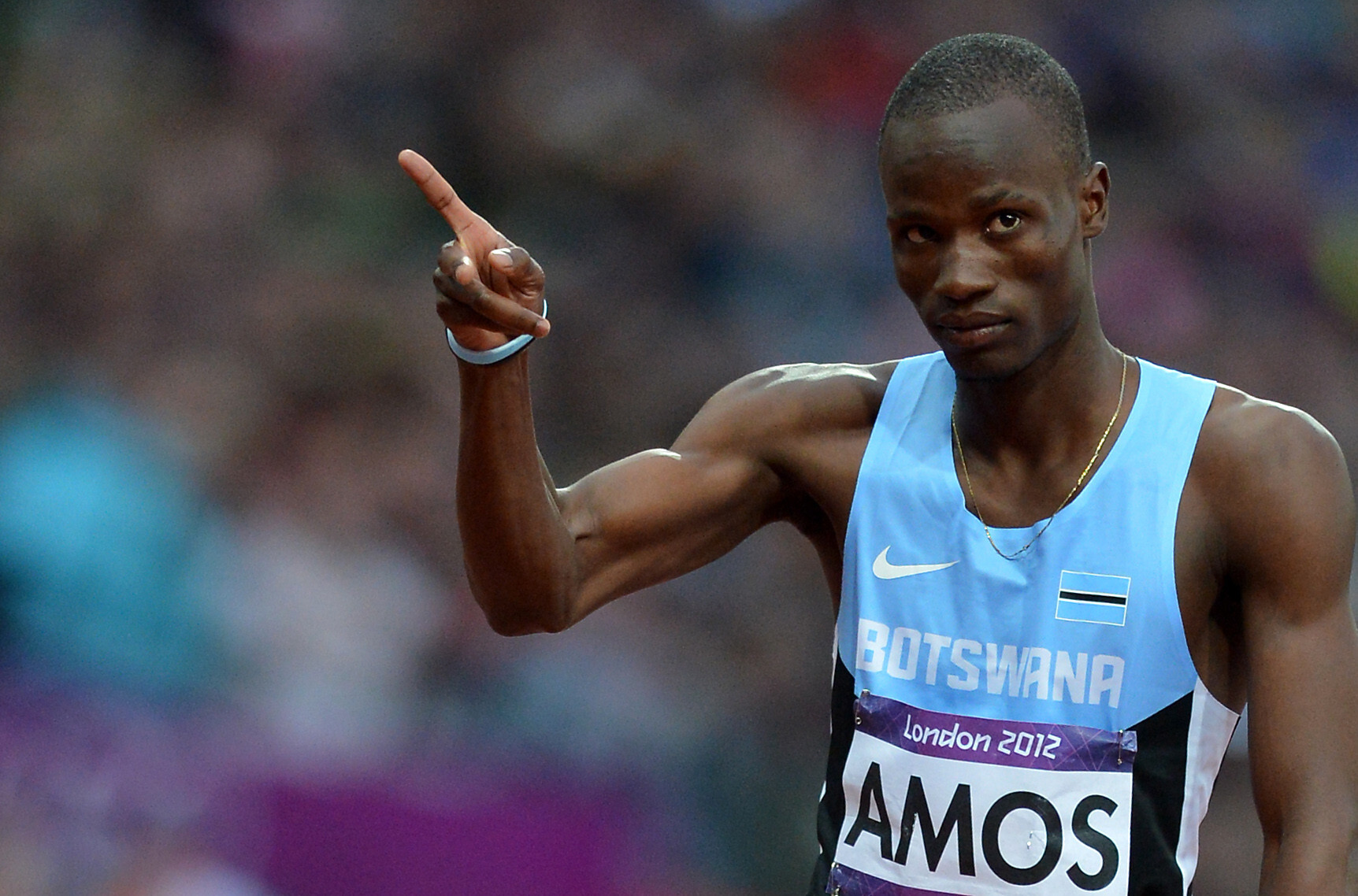
GW1516 was originally developed to treat obesity and diabetes, but is not approved for human use, since it was discovered to be carcinogenic. It is banned in and out of competition, and not eligible for Therapeutic Use Exemption (TUE). A USADA bulletin from 2019 says GW1516 is also sometimes known as cardarine or endurobol and has been found in some supplements, even though it is illegal. In 2017, there were 31 sanctions worldwide related to its use.
The AIU collected the sample from Amos during an out-of-competition test on June 4. Amos was notified of the result while he was preparing for the World Championships in Eugene, Ore., where he was scheduled to compete in the heats of the 800m on July 20. He finished eighth in the 800m final at Tokyo 2020. At Rio in 2016, he failed to make it out of the heats.
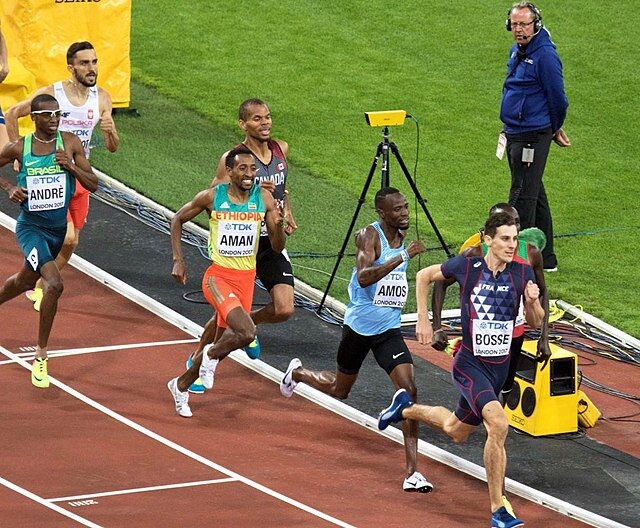
Amos’s silver in the 800m from the London Olympics was Botswana’s first Olympic medal and ranks as the third-fastest 800m time ever (1:41.73) behind Kenya’s David Rudisha (1:40.91) and Wilson Kipketer (1:41.11).
Amos has spent his last six seasons training with Mark Rowland and the Nike Oregon Track Club. Rowland recently left the club to start a new role as a coach with the Athletics Canada West Hub.
The AIU says the length of his suspension will be determined at a later date.
by Marley Dickinson
Login to leave a comment
Molly Seidel Out, Keira D’Amato in for World Championships Marathon
Seidel said last month she had sought a therapeutic use exemption for Adderall, which is banned in competition.
Keira D’Amato, the American record holder in the marathon, was named to Team USA for the World Championships today, replacing Molly Seidel, according to multiple sources.

The women’s marathon at the World Championships, to be held in Eugene, Oregon, is on July 18.
Seidel, who won Olympic bronze last year in Sapporo, Japan, was named to the U.S. squad for the marathon based on that performance. But a hip impingement caused her to drop out of the Boston Marathon in April.
On June 8, Seidel, 27, posted to her Instagram account that she had been taking Adderall for ADHD since Boston. Adderall is banned for in-competition use by the World Anti-Doping Agency (WADA). Seidel wrote that taking the medication was “life changing,” and she was able to “get the quiet, functioning brain in my day-to-day life that I could previously only achieve with intense physical activity.”
Seidel had applied to WADA for a therapeutic use exemption (TUE) to be able to take the medication when she was competing, but it had not been granted before the New York Mini 10K—and it wasn’t clear if it would be granted—so she withdrew.
The reason why her spot is going to D’Amato is not clear, and Runner’s World sought clarification from Seidel, her coach, and her agent.
D’Amato, 37, has less than three weeks to prepare for a marathon, but she “is in great shape,” according to her agent, Ray Flynn. She ran 2:19:12 in setting the American marathon record in January in Houston.
She won the BAA 10K last Sunday on a hot day in 31:17. Her Strava training shows she did an 18-miler on June 27 and has been averaging 73 miles per week for the last four weeks. She’s also been racing frequently, finishing third at the New York Mini on June 11.
On June 21, Runner’s World asked D’Amato if, in light of Seidel’s post, she was doing marathon training and was told she was an alternate for the Worlds team. “No one has contacted me,” she said at that time.
Emma Bates and Sara Hall are the other two American women in the World Championships marathon. Galen Rupp, Elkanah Kibet, and Colin Mickow are the men.
USA Track & Field usually names its World Championships marathoners based on a descending order time list. But given many marathons were canceled or postponed in 2021, it announced it would pick top 10 finishers from the Games (Seidel and Rupp) and then top finishers from the Chicago, Boston, and New York City marathons last fall. That decision was controversial because the selection criteria were announced in October after the Chicago and Boston marathons had already taken place.
Login to leave a comment
What Are therapeutic use exemptions and Why Are They Controversial?
Athletes such as Molly Seidel, who was recently diagnosed with ADHD and prescribed Adderall, must receive exemptions from doping agencies in order to use medications that are banned.
Olympic bronze medalist Molly Seidel announced on Instagram on June 8 that she’d be missing the New York Mini 10K last weekend. The reason? She’d been diagnosed with ADHD early in 2022, and after the Boston Marathon, she started taking the prescription drug Adderall.
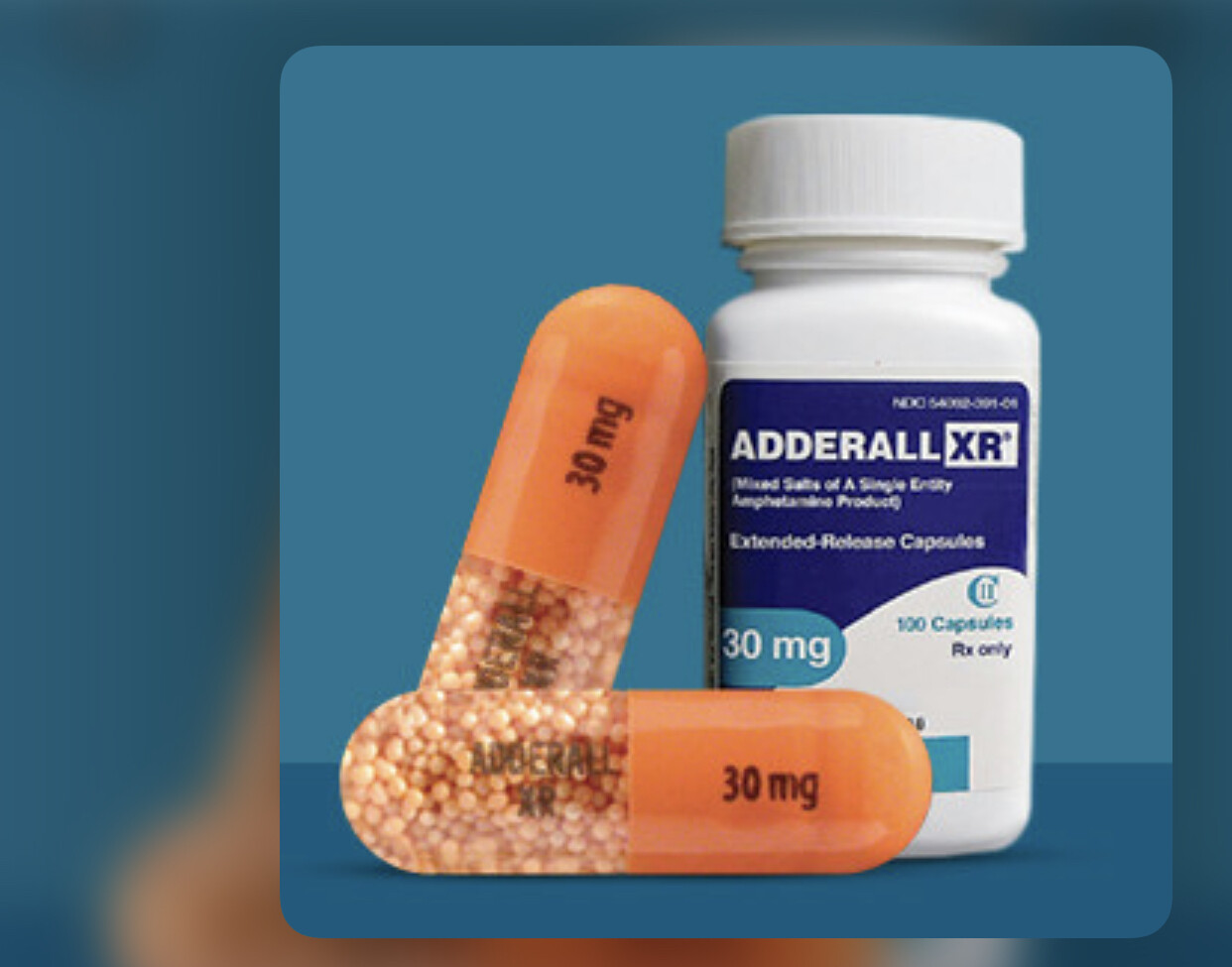
Adderall is banned by the World Anti-Doping Agency (WADA) for use in competition, because it can be used as a performance enhancer. But Seidel has a legitimate medical need for the drug, so she can apply for a therapeutic use exemption, commonly known as a TUE.
Seidel wrote on Instagram that she applied for a TUE about six weeks ago, and she won’t have an answer on her application until the end of June at the earliest.
Since she started taking Adderall, she had been feeling much better. “I felt like I was able to get the quiet, functioning brain in my day-to-day life that I could previously only achieve with intense physical activity,” she wrote. “It also gave me remission of many eating disorders behaviors that I’ve dealt with consistently since my teens.”
She was disappointed to pull out of the New York Mini 10K. Seidel wrote, especially after she has had a tough few months. (She dropped out of the Boston Marathon in April with a hip impingement at about the 16-mile mark.)
“However, I’m committed to a clean sport and respecting my own mental health needs, so that means following the appropriate procedures of this TUE process,” she wrote. “Mental health takes work, and I want to be transparent about the fact that medication is sometimes a very necessary part of that work.”
Seidel is due to run the World Championships marathon in Eugene on July 18.
Her case illustrates a years-long debate among athletes, coaches, and officials about TUEs. At issue: How can the sport allow its athletes to legally obtain treatment for diagnosed medical conditions while preventing others from abusing the system?
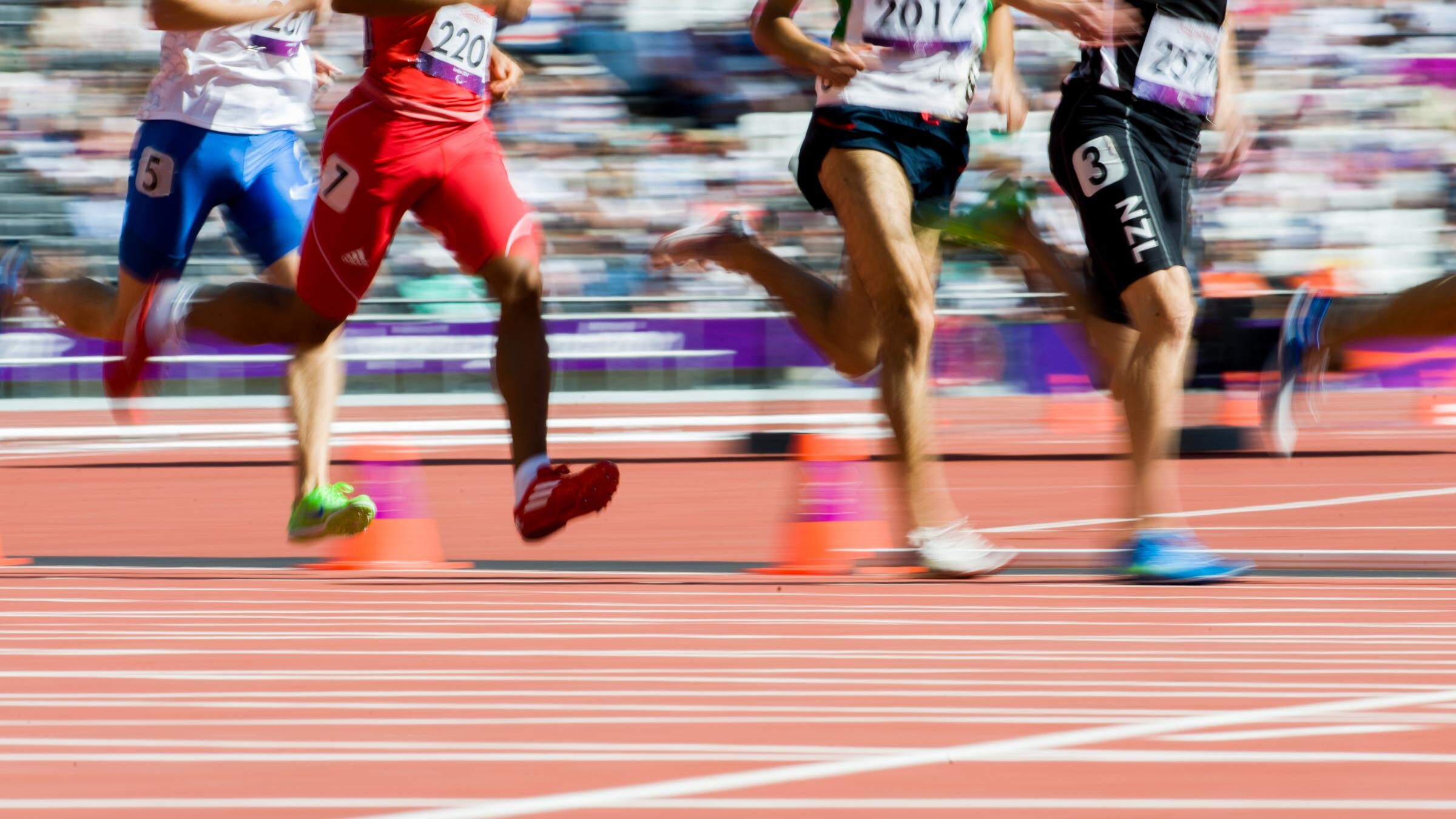
Below, we answer a few common questions about TUEs.
What is a therapeutic use exemption (TUE)?
When an athlete is sick or has a condition that requires treatment with medicine that is listed on WADA’s prohibited substance list, he or she can be granted a TUE to take the drug, according to the U.S. Anti-Doping Agency (USADA).
Some drugs are prohibited when an athlete is competing. Other drugs are also banned for out-of-competition use. If a TUE is approved, it usually has a starting and ending date during which the athlete may take the medication. If the athlete is drug tested during that period and tests positive for an illegal substance for which they are granted an exemption, he or she will not face disciplinary measures.
In an emergency situation, if somebody is treated with a prohibited substance, he or she is allowed to file an emergency TUE afterward, as soon as possible. For example, when Shalane Flanagan received an IV for severe dehydration in February after the 2016 Olympic Marathon Trials, which is otherwise a banned practice, she was granted an exemption because she was in medical need.
“I resisted getting an IV but a lot of the doctors there were insisting that I needed it,” Flanagan said, weeks after the race. “It would have taken a really long time to get those fluids in orally. So the IV really speeded up my recovery. It actually made me realize probably why they are illegal [in competition] under most circumstances—my core temperature immediately went down. If I hadn’t had that, I would have had a much longer process.”
How does an athlete get a TUE?
U.S. athletes apply for a TUE through USADA, though if somebody is also competing at an international event, it may require that person to obtain another exemption through World Athletics, the governing body for track and field.
“The TUE application process is thorough and designed to balance the need to provide athletes access to critical medication while protecting the rights of clean athletes to compete on a level playing field,” according to USADA.
If a pro runner is in need of a TUE, he or she downloads the application and completes it with a doctor. A medical file must accompany the application.
Who decides if the athlete gets a TUE?
The Therapeutic Use Exemption Committee reviews the application, the medical details, the patient history, test results, how the condition has been managed over time, and attempts to treat it with non-prohibited medications and methods. Galen Rupp, for example, has been granted exemptions to take prednisone to treat asthma.
The committee includes doctors and medical experts, according to USADA. They review and either approve or deny the application without knowing the athlete’s name by following WADA’s standards, outlined in an annual 30-page document.
WADA policy states that athlete must prove that the prohibited substance is needed to treat an acute or chronic medical condition, “such that the athlete would experience a significant impairment to health” if it is withheld; that the medication is highly unlikely to produce any enhancement of performance beyond what would be considered “anticipated” by a return to the individual’s normal health; and that there is no reasonable alternative to treat the condition.
What is on the WADA prohibited substance list?
The prohibited list includes more than 300 substances and methods of taking substances (for example, orally, by injection, intravenously). It also includes those that are always prohibited and those that are only prohibited during a competition. The lists are updated by WADA each year, and it’s up to the athletes to be aware of changes of the rules.
Some examples of prohibited substances include steroids, human growth hormone, certain stimulants, diuretics, and masking agents that can interfere with drug tests.
How could an athlete use TUE system or prescription drugs to cheat?
Athletes at the highest level are constantly searching for fractions of percentages in performance gain. Some, of course, seek such gains illegally. Should that athlete have a support team of coaches and doctors who also engage in unethical practices, they can collectively seek exemptions for medications that are not medically needed but could produce a competitive advantage.
In July 2015, Rupp and his coach Alberto Salazar were accused by former members of the Oregon Project of manipulating the TUE system for performance gain and faking symptoms in an effort to be prescribed legal thyroid medications. Those medications could help with a runner’s energy levels, allowing an athlete to train with more intensity and volume. Rupp and Salazar have strongly denied those accusations. Salazar has since received a four-year ban for trafficking performance-enhancing drugs to his athletes and in a separate matter, he has been banned permanently from track by SafeSport.
by Runner’s World
Login to leave a comment
Kenyan long-distance runner Joyce Chepkirui has been banned for four years
The 33-year-old won the 10,000m at the Commonwealth Games in Glasgow in 2014 and also took the African title over the same distance in Marrakech that year.
Chepkirui has been provisionally suspended since June 2019, after an expert panel studied anomalies in blood samples collected by World Athletics between 2016 and 2017.
The panel concluded the "likelihood of the abnormalities in results being due to blood manipulation" - the artificial increase of red blood cells using a stimulant - was "high".
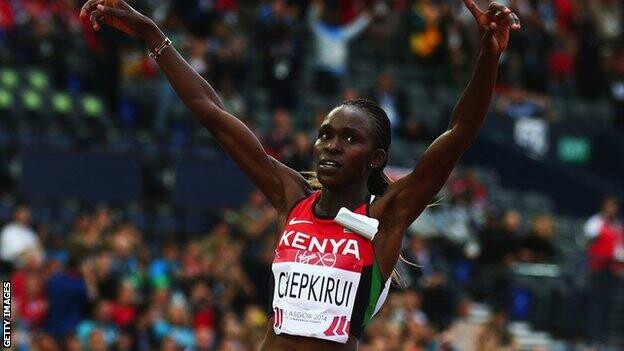
Chepkirui explained the results by saying she suffered from hormone imbalance and vaginal bleeding, which was caused by a contraceptive injected every three months, had an iron-rich diet and took three drugs to treat these conditions.
However, the Court of Arbitration for Sport (Cas) decided to ban Chepkirui after upholding an appeal filed by the Athletics Integrity Unit, and her four-year period of ineligibility has been backdated to the start of her provisional suspension.

Chepkirui's results between 6 April 2016 and 4 August 2017 - which include a third-placed finish in the Boston Marathon in April 2016 - will be disqualified and she will be required to forfeit any medals, prizes and appearance fees gained in that time.
Meanwhile, Cas have ruled the Anti-Doping Agency of Kenya should pay 2,000 Swiss Francs (US$2,140) to World Athletics as a contribution towards its legal costs and other expenses.
Kenya is still listed as a category A nation by the World Anti-Doping Agency (Wada), meaning the country remains a high risk for doping.
As a result, Kenyan athletes still need to undergo three out of competition tests in a 10-month period before a World Championships or Olympic Games.
BBC Sport Africa understands Athletics Kenya had been hoping to be removed from the category A classification.
by BBC sports
Login to leave a comment
Paris Marathon champion Paul Lonyangata has been banned for 19 months and Edward Kiprop Kibet has received a 3-year suspension
Two prominent Kenyan marathoners have been suspended from competition on doping charges, according to a report by Capital Sports. The Athletics Integrity Unit (AIU) has banned Paul Lonyangata for 19 months for use of the drug Furosemide, and Edward Kiprop Kibet has been banned for three years for nandrolone.
Lonyangata won the Paris Marathon in 2017 and 2018, and was the third-place finisher in 2019. One week after the 2019 race, he admitted to using the banned substance Furosemide, after it was found in an out-of-competition sample in September.
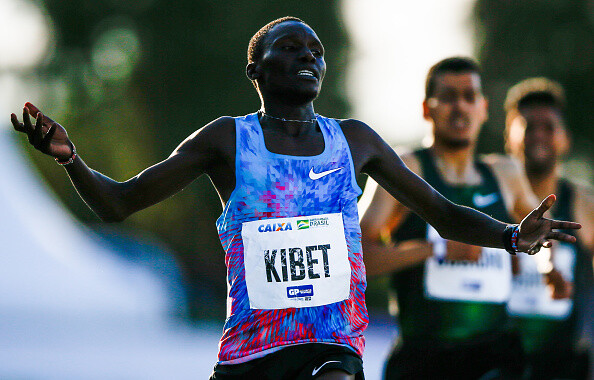
Furosemide is a heart medication, but it is on the World Anti-Doping Agency’s (WADA) list of prohibited substances because it can mask the presence of performance-enhancing drugs.

Lonyangata rose to fame in 2017, not only because he won the Paris Marathon, but because his wife, Purity Rionoripo, won the women’s race on the same day.
Lonyangata will be banned from competition until May 25, 2023. His fellow countryman, Kibet, will be banned from all competition until February 2025, after testing positive for nandrolone, the same substance found in Shelby Houlihan’s sample last year, for which she was given a four-year ban.
by Brittany Hambleton
Login to leave a comment
UTMB bans painkillers at all events including ibuprofen, before or during any UTMB races
The organizers of the Ultra-Trail du Mont-Blanc (UTMB) World Series will be banning the use of painkillers within 24 hours and during all races. This includes all non-steroidal anti-inflammatories (NSAIDs), such as ibuprofen. The announcement was made after the UTMB’s Quartz Event health program carried out post-event drug tests for the first time this year and three athletes’ samples contained NSAIDs.
The Quartz Event health program was set up in 2008 to protect the health of participants and contribute to clean sport. The rules of the program align with the banned substance list set out by the World Anti-Doping Agency (WADA) but goes a couple of steps further. Under the Quartz medical rules, athletes must not compete in any race if they have violated any of the following regulations:
Within 60 days before the start of the competition and during the competition:
Intravenous iron infusions
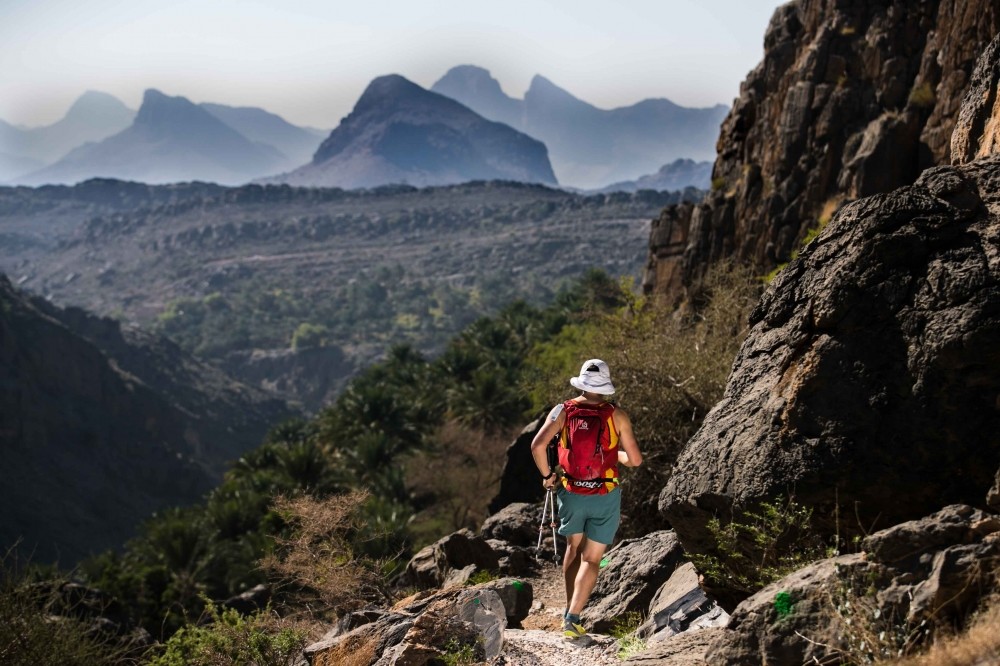
Within 7 days before the start of the competition and during the competition:
Intravenous infusion
Gas inhalation
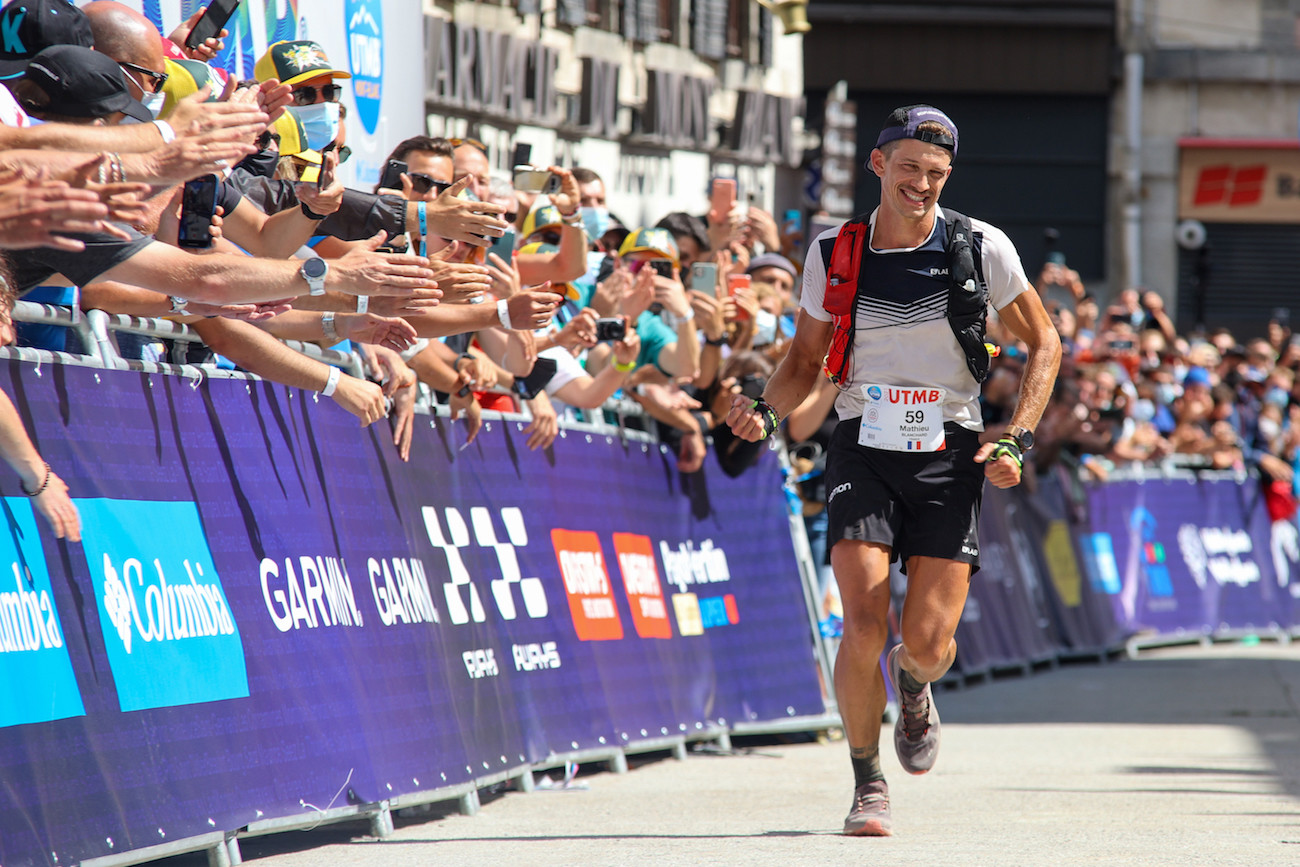
Substance subject to a Therapeutic Use Exemption (TUE) according to the WADA Prohibited List
All glucocorticoids regardless of the mode of administration
Thyroid synthesis hormones except in case of partial or total removal of the thyroid or hypothyroidism of medical origin.
Within 24 hours before the start of the competition and during the competition:
All beta-2-agonists regardless of the mode of administration
All painkillers including Tramadol and Non-Steroidal Anti-Inflammatory Drugs (NSAIDs) regardless of the mode of administration
All substances included in the WADA Monitoring Program
After the 2021 UTMB final, three athletes out of 30 who were tested had NSAIDs in their samples. The organizers did not disqualify the athletes because the rules were only implemented this year, it was their first violation and there was an assumed lack of knowledge of the new regulations. Moving forward, however, all races will be employing the Quartz Event program and any athletes found in violation of the rules will be automatically disqualified.
Why are painkillers being banned?
According to Doctor Patrick Basset, the medical director of Dokever, the company that manages the medical teams at all UTMB events, these regulations have been put in place to protect athletes from the dangers of self-medicating. “the most frequent type of self-medication seen is to treat two types of symptoms: osteoarticular pain and digestive problems,” he explains on the UTMB website. “As a consequence, the main medicines concerned are non-steroidal anti-inflammatory (NSAID), anti-diarrhea or anti-vomiting medicines.”
He continues to explain that in the context of a long-lasting endurance race, taking anti-inflammatories could be toxic to the kidneys and cause rhabdomyolysis, which is the excessive breakdown of muscle tissue to dangerous levels, potentially leading to renal insufficiency. This is even more likely to happen when combined with dehydration, hypoxia (lack of oxygen) and hypotension (a drop in blood pressure).
Many athletes are criticizing the ban as going too far since the Quartz program refers to these new rules as “legal doping,” and NSAIDs are not banned by WADA.
by Brittany Hambleton
Login to leave a comment
North Face Ultra Trail du Tour du Mont-Blanc
Mountain race, with numerous passages in high altitude (>2500m), in difficult weather conditions (night, wind, cold, rain or snow), that needs a very good training, adapted equipment and a real capacity of personal autonomy. It is 6:00pm and we are more or less 2300 people sharing the same dream carefully prepared over many months. Despite the incredible difficulty, we feel...
more...Nigerian sprinter Blessing Okagbare loses appeal, begins four-year ban over banned drugs, but she may return before Paris 2024 Olympics
Blessing Okagbare, may have lost her battle to upturn the suspension placed on her by World Athletics (WA) after failing an out-of-competition test.
The U.S.-based sprinter was thrown out of the Tokyo Olympics Games on the eve of the semifinals of the women’s 100m after testing positive for human growth hormone. The Athletics Integrity Unit (AIU) revealed then that Okagbare failed an out-of-competition test taken on July 19. She appealed against the suspension immediately, insisting on seeing the result of her B Sample.

The Guardian learnt yesterday that Okagbare, a medallist at the Beijing 2008 Olympics, was allegedly handed four-year ban after the result of her B Sample came out with the same result.
“Okagbare started her four-year ban long ago,” a source close to World Athletics (WA) said in a chat with The Guardian. “It is just unfortunate Blessing Okagbare found herself in this mess. When the result of her A Sample came out, Okagbare had the option of accepting it, which could have seen her ban reduced to two or three years, but she insisted on her B Sample. I pity her though, but WA wants all athletes to compete and win clean. Okagbare’s ban may elapse before the Paris 2024 Olympics,” the official stated.

Okagbare had won her heat on Friday (July 30), and was meant to compete in the women’s 100 metres semifinals the next day, when the Athletics Integrity Unit (AIU) officially announced her suspension in the morning.
The AIU explained then that the Growth Hormone is a non-specified substance on the 2021 World Anti-Doping Agency (WADA) prohibited list, and a provisional suspension on Okagbare was mandatory following an adverse analytical finding for such substance under the World Athletics anti-doping rules.
“The WADA-accredited laboratory that analysed the sample notified the AIU of the adverse analytical finding at midday Central European Time on Friday, July 30.
“The athlete was notified of the adverse analytical finding and of her provisional suspension this morning in Tokyo.”
Efforts to speak with Blessing Okagbare were unsuccessful yesterday.
by Gowon Akpodonor
Login to leave a comment
Sha'Carri Richardson to make track return at Prefontaine Classic
Sha'Carri Richardson will make her return to competitive athletics action on Saturday (August 21) at the Prefontaine Classic Diamond League meeting in Eugene, Oregon, USA.
The American is back after serving a one-month suspension handed to her when she tested positive for a cannabinoid at the U.S. Olympic Trials in June, where she had originally won the women's 100m race.
Her return will pit the world's third-fastest woman this year against the three Olympic medalists from Tokyo – Elaine Thompson-Herah, Shelly-Ann Fraser-Pryce, and Shericka Jackson, all from Jamaica.
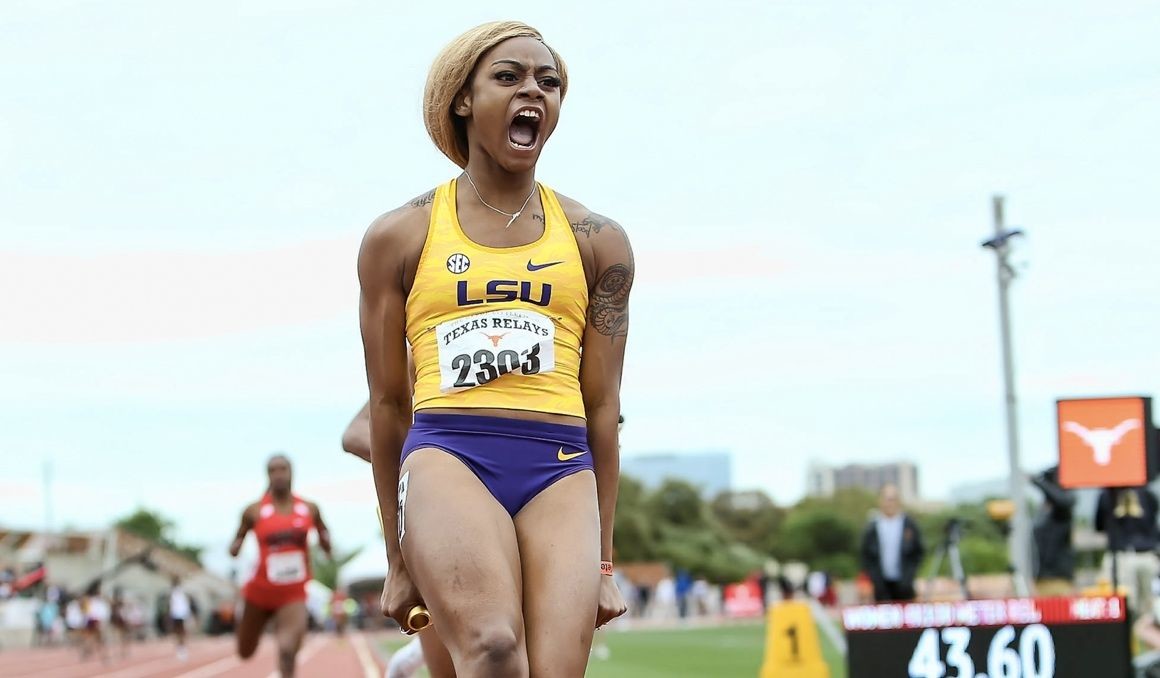
On July 1, the United States Anti-Doping Agency (USADA) announced that Richardson had accepted being suspended for "for an anti-doping rule violation for testing positive for a substance of abuse", having previously received a provisional ban on 28 June.
While competing at the Trials, Richardson provided a sample on 19 June that returned a positive test for a chemical found in marijuana, THC.
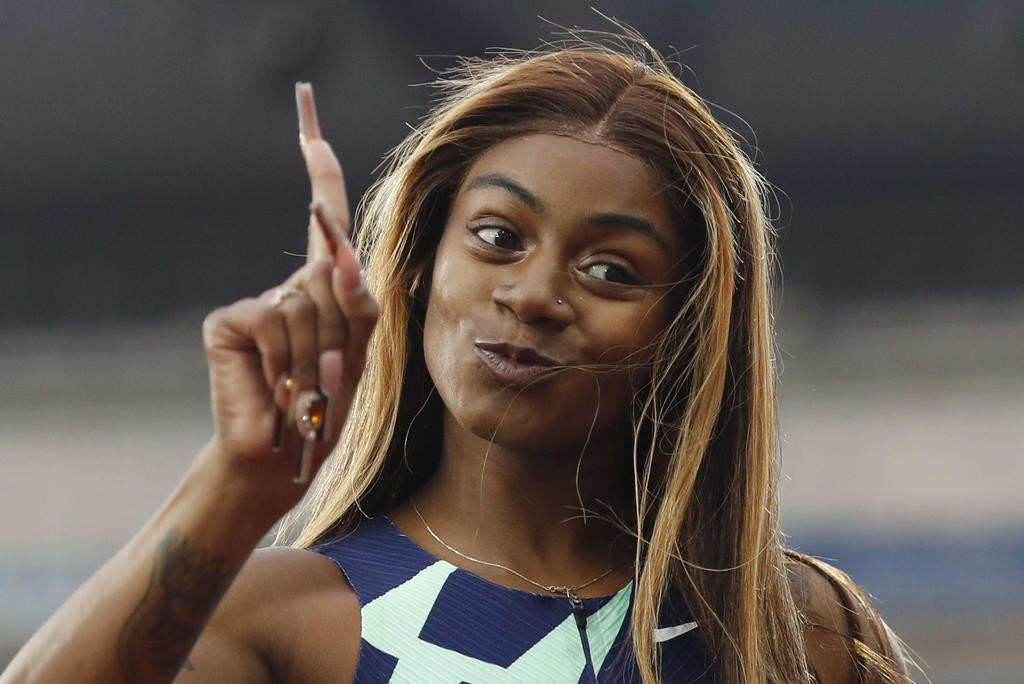
THC is a banned substance in-competition, although it is not prohibited out of competition, under World Anti-Doping Agency (WADA) rules which classify it as a substance of abuse.
Although Richardson consumed the drug out of competition, she returned an in-competition positive and was therefore sanctioned under USADA's own regulations, which state: "If an athlete tests positive for a substance of abuse during an in-competition test, but the athlete can establish that they used the substance out-of-competition and that their use of the substance was unrelated to sport performance, then the athlete’s period of ineligibility will be reduced to three months with no need to further analyse the degree of fault."
USADA added in handing out a one-month suspension: "Richardson’s period of ineligibility was reduced to one month because her use of cannabis occurred out of competition and was unrelated to sport performance, and because she successfully completed a counselling program regarding her use of cannabis."
The sanction meant her qualifying results at the trials were expunged.
Her suspension ended before the start of the athletics program at Tokyo 2020, but as USA Track & Field (USATF) selects its Olympic team based solely on results at Trials, Richardson was not considered for selection in either the 100m or 4x100m relay.
In Eugene, which was also the site of the U.S. Trials where Richardson had run 10.86 in the final, she and the three Tokyo 2020 medallists headline a world-class field in the women's 100m.
That start-list includes Tokyo relay silver medallists Teahna Daniels and Javianne Oliver of the USA and two other 100m finalists Switzerland's Mujinga Kambundji (6th) and Marie-Josée Ta Lou (4th) of Côte d'Ivoire. Briana Williams, the fourth member of the Jamaican 4x100m gold-winning relay team, completes the lineup.
Richardson ran a 10.72 at the Miramar Invitational in Florida in April, a time that made the 21-year-old the sixth-fastest woman ever over 100m and, at the time the world leader in 2021.
Since then this year, only two other women have gone faster – Richardson is surpassed by Fraser-Pryce (10.63 in June) and Thompson-Herah's Olympic record 10.61.
The clash between the young American talent and the Olympic medallists is tantalising after they were unable to race each other in Tokyo.
Indeed, the five fastest women this year will all be competing in the race – Jackson and Ta Lou are fourth and fifth respectively.
Richardson's last international 100m race was at a rainy Gateshead Diamond League in England in May, when she finished second in 11.44 seconds into a very strong headwind (-3.1 m/s). Earlier that month, the Texan sprinter also overcame a headwind to clock a rapid 10.77 (-1.2 m/s) at the USATF Golden Games.
The American is also down to race the women's 200m against the likes of Kambundji, Ta Lou, Olympic bronze medallist Gabrielle Thomas, relay silver medallist Jenna Prandini, world champion Dina Asher-Smith, and American track legend Allyson Felix.
Login to leave a comment
Prefontaine Classic
The Pre Classic, part of the Diamond League series of international meets featuring Olympic-level athletes, is scheduled to be held at the new Hayward Field in Eugene. The Prefontaine Classicis the longest-running outdoor invitational track & field meet in America and is part of the elite Wanda Diamond League of meets held worldwide annually. The Pre Classic’s results score has...
more...The Unbelievable True Story of the Craziest Olympic Marathon-Only 14 men crossed the finish: one after hitchhiking, one after napping, and one—the winner—after drinking rat poison.
On a broiling, 90-degree August afternoon in 1904, 32 men dressed largely in white with leather belts gathered at Francis Olympic Field, a newly constructed stadium in St. Louis. Flanked by other men in suits and porkpie hats, they were about to compete in what would become the most infamous marathon in history. The event was part of the Louisiana Purchase Exposition, also known as the 1904 World’s Fair. Within the crowd of dapper onlookers was the man in whose honor the stadium was named: David R. Francis, a former Missouri governor and president of the organizing committee for the Olympic Games. At 3:03 p.m. he fired the starting gun; so began the first Olympic marathon race on U.S. soil.
The race started with five laps around the track and a flurry of lead changes. Among the cast of largely American runners were three previous Boston Marathon winners. None of them would finish. In fact, only 14 men eventually completed the race: one after hitchhiking, one after taking a nap, and one—the eventual gold medalist—after drinking strychnine mixed with raw egg and brandy. Not only would the percentage of finishers rank as the lowest of any Olympic marathon, but the event itself would be marred by the racism that pervaded and even guided the 1904 Olympics and World’s Fair.
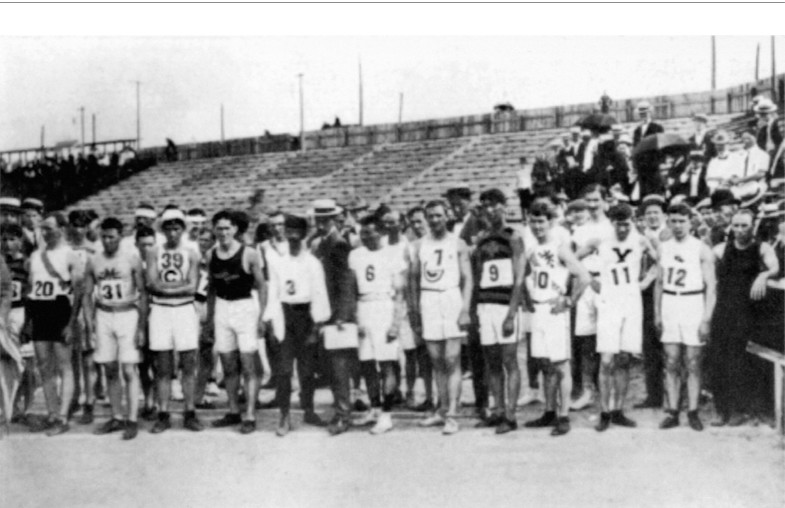
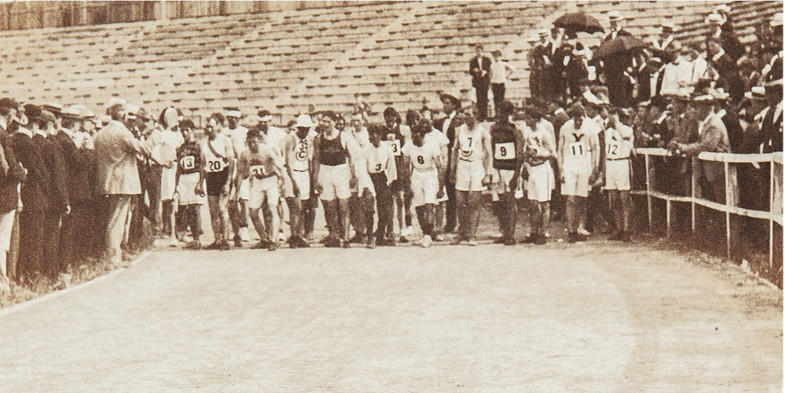
Frank Pierce from the Seneca Nation—the first Native American to compete in the Olympics—briefly took to the front. Pierce was followed closely by fellow Americans Arthur Newton, Thomas Hicks, and Sam Mellor.
As the men made the third lap, another American, Fred Lorz, took a turn in the lead. Lorz, a bricklayer by trade, had the muscular build of a sprinter but had finished in the top five at the previous two Boston Marathons. Close behind, the race claimed its first casualty: The 1903 Boston champ, John Lordan, Irish-born but running for the United States, began vomiting and walked off the track to register the first DNF.
Hicks, who’d finished second behind Lordan at Boston that previous year, passed Lorz to lead racers out of the stadium. Hicks purportedly made his living as a professional clown. Yet in the few surviving pictures of the race, Hicks appears to be the most serious man in St. Louis, standing uncomfortably straight at the start line with a near scowl.
Striding onto the dirt roads beyond Francis Field, the runners were greeted by red flags marking the route. The man responsible for those flags, along with much of the 1904 St. Louis Olympics, was James E. Sullivan, head of the Physical Culture Department for the World’s Fair. Sullivan intended to use the Games to showcase white American excellence through a series of events that ranged from the poorly executed, like the marathon, to the cartoonishly racist, like the fair’s Anthropology Days—a two-day Olympic-style competition during which nonwhite performers from the fair’s living anthropology displays competed in sports they’d never played before. The idea was to flaunt their athletic inferiority to the world. A headline in the St. Louis Post-Dispatch, “Barbarians meet in Athletic Games,” made no bones about that intention.
Sullivan also designed the 24.85-mile race (26.2 became the standard in 1921) as an experiment to test his own exercise science theories. Chief among his beliefs was that of “purposeful dehydration.” Following the conventional wisdom of the time, Sullivan insisted that drinking (or eating) during exercise would only upset the stomach. Accordingly, there was only one water station on the course, near mile 12.
Three miles in, Newton, who’d won bronze just a day before in the steeplechase, held fifth, the same as his finishing position at the 1900 Olympic marathon. Hicks, the professional clown, fell back to seventh. And Albert Corey, a French-born, U.S.-representing marathoner who lived in Chicago and worked at a slaughterhouse, ran in ninth place.
Trailing close behind were Len Taunyane and Jan Mashiani, both running their first marathon. The two members of South Africa’s Tswana tribe were the first Black Africans to compete in the Olympics. In fact, they were the only Black athletes to represent that nation until the end of apartheid 86 years later. Taunyane and Mashiani had no formal racing experience and were in St. Louis performing in the World’s Fair’s Boer War Exhibition. Taunyane and Mashiani had been message runners for the Boers and were part of a cast of hundreds that twice a day reenacted battles from the recent Second Boer War, between Dutch colonist Boers and the British Empire, in front of thousands of spectators.
Leading the way out of the stadium was a vanguard of horsemen, riding ahead of the racers to clear the dry dirt roads. Right behind them, a motorcade of journalists, doctors, support teams, and race officials followed, producing a steady brown cloud that enveloped the runners for most of the course.
At six miles Newton led, with 1902 Boston champ Sam Mellor in pursuit on the dusty road. Behind them were Lorz and Félix Carvajal, a Cuban mailman who’d arrived at the race in a long-sleeve shirt, hat, pants, heavy shoes, and a notable mustache. (A helpful Samaritan assisted Carvajal in cutting his pants into shorts prior to the start of the race.) Carvajal had raised the money for his journey to America by running exhibitions in his native Cuba, but after gambling away his funds on a layover in New Orleans, he’d hitchhiked the rest of the way to St. Louis. Carvajal was among the favorites to win; however, he was also a loquacious man, frequently stopping for mid-competition banter with spectators.
Approaching the 10-mile marker, Fred Lorz, plagued by muscle cramps, flagged down a car (likely that of his coach) for a ride back to Francis Field. Carvajal also stopped, but to find a snack. According to some accounts, Carvajal ate rotten apples from an orchard along the road. One writer observed Carvajal playfully swiping peaches from spectators after they’d denied his request for fruit. Either way, Carvajal suffered from stomach cramps and lay down to take a short nap.
At mile 12, the racers encountered the well that served as the lone water station. Sullivan had intended to test purposeful dehydration in the race by observing how athletes would perform in high-intensity work, on a hot summer day, with a limited amount of water available to drink.
Undeterred by the fact that fewer than half of his marathoners finished, he’d later write a book, 1909’s Marathon Running, which reiterated his continued belief in the power of water abstinence. “Don’t get into the habit of drinking and eating in a marathon race; some prominent runners do, but it is not beneficial,” he wrote.
Halfway through the marathon, Mellor was leading, with Newton and Hicks, respectively, in second and third place. Mellor had been the pre-race favorite. In addition to his Boston win, he’d podiumed there in 1901 and 1903, and he’d won the Pan American Exposition marathon in 1901, in 104-degree heat. But this time, Mellor’s pace slowed by mile 16 to combat cramping. By another account, he incorrectly believed he’d taken a wrong turn and tired himself out running backward on the course. In any case, he soon dropped out of the race. Hicks took the lead, with Newton trailing.
Hicks, now beyond the water station, began to grow desperately thirsty. He had two trainers following in a car, and he began to beg them for a drink of water. They refused, and instead gave his mouth and shoulders a sponge bath in an attempt to relieve the thirst without hydrating their athlete.
Near mile 19, William Garcia, a racer out of San Francisco who was in fourth place at the time, collapsed. He likely experienced the closest brush with death of any marathoner that day. On the side of the road, he began coughing up blood and passed out before being discovered and taken to a hospital. The combination of heat, dehydration, and roughly two hours of running through dust clouds landed Garcia in surgery for a dust-lined esophagus and a torn stomach lining.
Lorz, meanwhile, was feeling refreshed after riding in a car for 11 miles after his cramping episode. He decided to continue the last miles on foot, into the stadium, and across the finish line to claim victory in under three hours. Just as First Daughter Alice Roosevelt Longworth was crowning Lorz as the victor, a spectator revealed that Lorz had been driven along the course. Lorz defended his victory as merely a joke, but the stunt earned him a lifetime ban.
As Lorz was explaining himself away, Hicks held the lead with roughly four miles remaining, but he continued to suffer from dehydration. His trainers, making history, decided to give him something stronger than a damp sponge. In the first recorded instance of performance-enhancing drug use in the Olympics, Hicks was fed a combination of egg whites and 1 milligram of strychnine sulfate. In high doses, this compound is used as rat poison. At lower doses, however, it is a stimulant and currently prohibited for in-competition use by the World Anti-Doping Agency.
A ghastly Hicks continued, but his already mechanical form deteriorated and his pace slowed as he stopped to walk up a hill two miles from the finish. This earned Hicks a second dose of the strychnine mixture, plus a swig of brandy. It worked: Hicks picked up his pace to finish in 3:28. It was the slowest winning marathon time in Olympic history—by a 30-minute margin.
Albert Corey finished second at 3 hours and 34 minutes, and 13 minutes later Newton took third place. Carvajal’s recovery nap delivered him to fourth place, while Len Taunyane (despite being chased a mile off course by a dog) took ninth and Mashiani was 12th. After the podium, no finish times were recorded (or they were lost), but finishers trickled in for hours.
Sullivan and his kind claimed the marathon as the evidence of racial superiority they sought—despite producing an event that was almost entirely stocked with white runners, many with coaches in tow. Charles J. P. Lucas, a physician and writer who traveled by car observing and assisting Hicks, wrote in his blandly titled book The Olympic Games 1904 that the marathon established “the stamina of the Caucasian race and the superior distance-running powers.” His book did not mention that while Taunyane and Mashiani finished ninth and 12th, their white South African teammate, Bertie Harris, never made it back to Francis Field.
The infamy of the race, however, set in quickly. Two days after its running, the Post-Dispatch dubbed it a “man-killing event” and reported that Olympic committee members were calling for its removal from future Games. Sullivan jumped on the bandwagon and quickly turned on the event, publicly decrying it and telling the paper “a 25-mile run...is asking too much of human endurance.”
Sullivan’s bid to end the Olympic marathon failed, and the event continued at the 1908 London Games—notably with only one 1904 competitor returning, mid-packer Sidney Hatch. Sullivan did have one perverse victory in 1908, though. In addition to being a white supremacist, he was also an outspoken misogynist, and as the head of the U.S. Olympic Committee he was able to bar American women from competing in London. But that was cold comfort for his racist side: To his chagrin, 1908 would also mark the first Olympic gold medal awarded to a Black athlete, John Taylor, who ran on the winning U.S. distance medley relay squad.
Hicks would never run another marathon. Like many of the athletes, including Taunyane and Mashiani, he practically disappeared from recorded history after the race. Corey returned to Chicago, racing annually in an early iteration of the Chicago Marathon and winning in 1908. Newton would compete in his third event of the Games four days later, taking gold in a four-mile team race that fielded just two teams. (Corey claimed another silver on the losing squad.) And Lorz’s lifetime ban would last less than a year—he later won the 1905 Boston Marathon.
Carvajal continued to travel for marathons. In 1905 he returned to St. Louis to take third in the inaugural All-Western Marathon. The following year, the Cuban government sent him to Greece for an Olympics-adjacent marathon only for Carvajal to disappear en route in Italy. After being presumed dead, complete with newspaper obituaries, he reappeared in Havana several months later and resumed racing.
by Runner’s World
Login to leave a comment
Ban on cannabis, should be reviewed says World Athletics president Seb Coe
The rules on the use of cannabis by athletes should be reviewed, World Athletics President Sebastian Coe has said in the wake of the case that meant Sha'Carri Richardson, winner of the women’s 100 meters at the US Olympic trials, missing Tokyo 2020.
Richardson accepted a 30-day ban, and the qualifying results she achieved were annulled, after she tested positive for the banned recreational drug during the trials.
The 21-year-old said she had been under emotional stress after learning of the recent death of her biological mother.
In response to questions on the issue, Coe has said a review is now sensible and "it should be" done, Reuters reports.
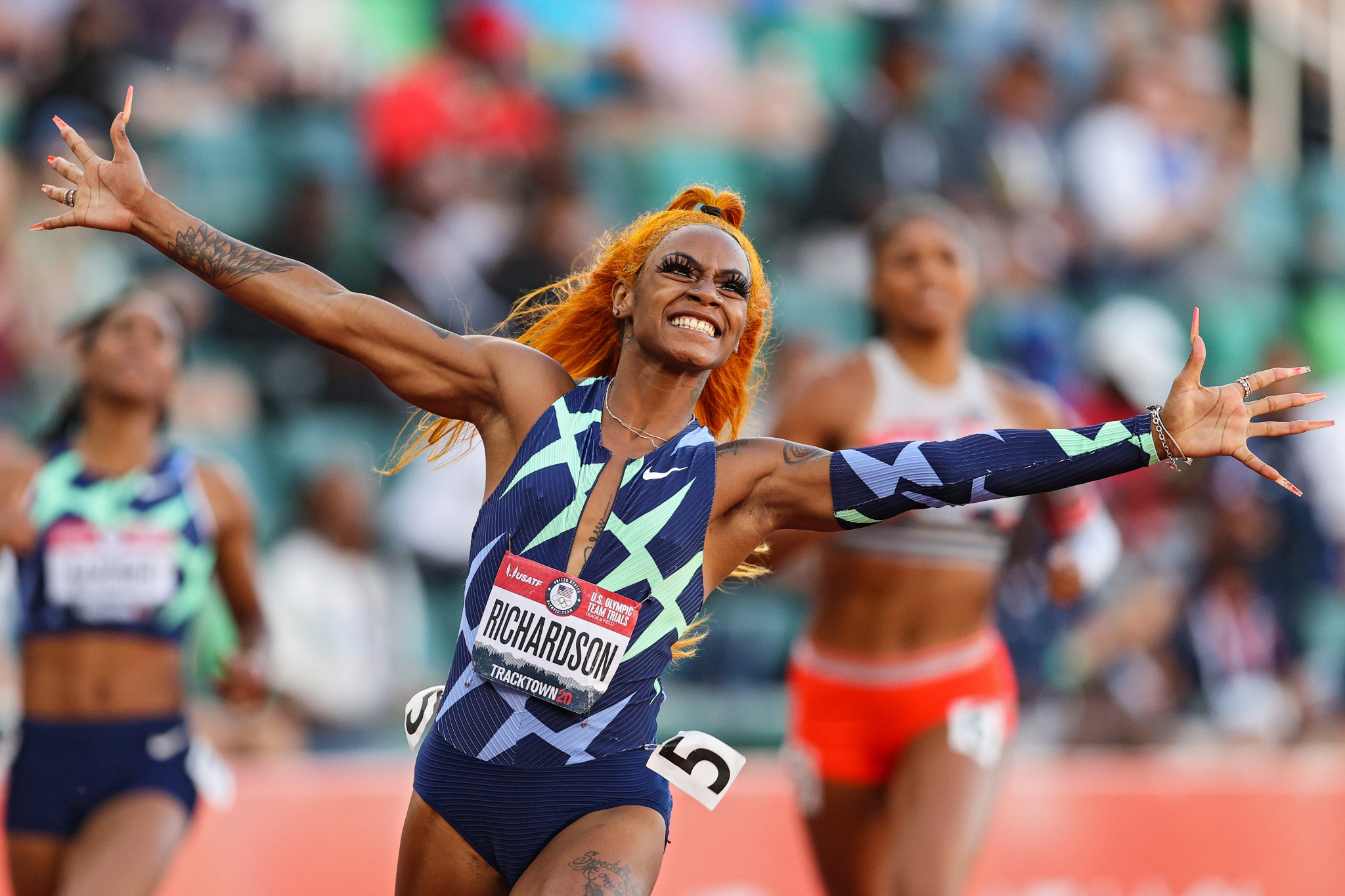
Coe added: "I am sorry for her that we have lost an outstanding talent [from the Olympic Games]", but said that existing rules were interpreted correctly.
The World Athletics President said he had asked the independent Athletics Integrity Unit (AIU) to work with the World Anti-Doping Agency (WADA) on reassessing marijuana’s place on the prohibited list.
Coe, who believes the matter is a question for experts at the AIU and the WADA to determine, said Richardson’s absence was "a loss to the competition" but predicted "she will bounce back".
The 2021 World Anti-Doping Code classifies tetrahydrocannabinol (THC), the main psychoactive constituent of cannabis, marijuana, and hashish, as a "Substance of Abuse".

Athletes found to use it outside of competition face a three-month ban, although in this case the United States Anti-Doping Agency banned Richardson for 30 days as long as she also undertook a treatment programme.
Discussion on this matter is not expected to take place during the World Athletics Council’s two-day meeting that starts tomorrow before the Olympic track and field programme begins on Friday (July 30) - at least officially.
What will be under consideration is a determination of the hosts for the 2023 World Athletics Relays, held this year in Poland, the newly-established 2023 World Road Running Championships, and next year’s World Race Walking Team Championships, where a replacement is being sought for original host Minsk.
World Athletics cited "uncertainties around diplomatic relations and international travel restrictions with regard to Belarus" when stripping Minsk of hosting rights earlier this year, with protests continuing after the controversial re-election Alexander Lukashenko as the country’s President last August and many nations imposing sanctions on Belarus.
There will also be a report from World Athletics' Russia Taskforce at the Council meeting.
Day two of the meeting is understood to involve commission and working group reports.
by Mike Rowbottom
Login to leave a comment
World 1500m champion added to Kenyan Olympic team as 18-year-old dropped
World 1500 meters champion Timothy Cheruiyot, left out of the Kenyan Olympic team after finishing outside the top three qualifying places at last month’s trials, has been added to the squad for Tokyo 2020.
Cheruiyot, pictured limping away from the trials with a hamstring injury, won the Wanda Diamond League meeting in Monaco last Friday (July 9) in a personal best of 3min 28.28sec, the fastest time run since 2015 and seventh best ever.
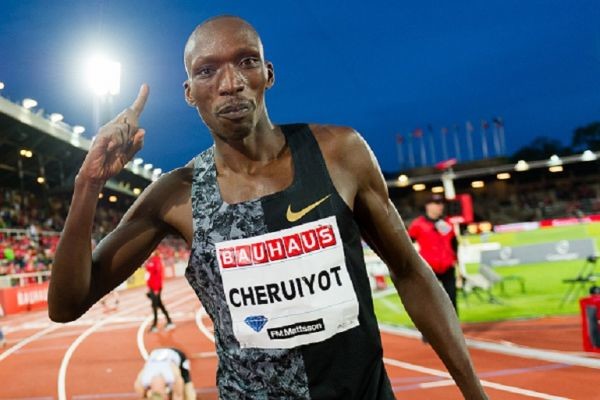
The 25-year-old from Bomet expressed hopes after his win that he would be able try to add the Olympic gold medal to his world title and he is now due to do that against a field that will include his perennial 20-year-old Norwegian rival Jakob Ingebrigtsen, European record holder with 3:28.68.
"I am thrilled to be part of the Kenyan Olympic team," Cheruiyot, now the favourite for gold, told Agence-France Presse.
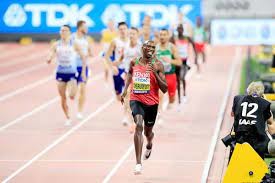
"I am in better shape than I was during the trials and I promise to deliver a medal for Kenya in Tokyo."
Cheruiyot’s addition has been made possible by the ineligibility of the relatively unknown 18-year-old who finished second at the trials, Kamar Etyang.
He has had to be removed from the team because he does not have the minimum number of three out-of-competition tests that Kenyan athletes must fulfil in the 10 months before any major championship following the country’s placement in category A of the World Athletics and World Anti-Doping Agency watchlist.
Kenya's Olympics general team manager Barnaba Korir told The Nation that Athletics Kenya had petitioned the Athletics Integrity Unit (AIU) over the issue of Etyang without success.
"It’s really unfortunate that Etyang had to be dropped due to the AIU rules which require one to be tested three times out of competition," Korir said.
"We have explained this to the athlete and he has understood the situation we are in."
He added that the AIU were unable to make exceptions to the ruling.
"We were in the same situation in 2019 when two athletes Michael Kibet and Daniel Simiu were dropped from the team that was heading to the World Championships [in Doha]," Korir said.
"This is because Kenya is in category A and we need to strictly follow the rules so that we can get out of the woods in future."
Cheruiyot had made it clear after his Monaco victory that he was hopeful of being in the team for Tokyo 2020.
"I missed competition a lot after spending a lot of time in Kenya where I had a few issues like my hamstring injury and after also losing a relative in my family on the day of the Kenyan trials explaining why I missed out on making the team," he said.
"I am therefore happy I am back again after all this.
"Hopefully that will be the deciding performance to make the team for Tokyo.
"My hope now is to be in another Olympics, that is where my mindset is and I will be very happy if I achieve that."
Ingebrigtsen, reportedly unable to train for the preceding fortnight because of a bacterial infection, finished second, with Spain’s Mohamed Katir setting a national record of 3:28.76 in second place.
Three other athletes originally named for the Kenyan team for Tokyo have been dropped - racewalkers Samuel Gathimba and Emily Ngii and 400m hurdler Moitalel Mpoke.
Kenya will send 40 athletes, mainly runners, to Tokyo 2020, which are due to open on July 23 with the athletics programme running from July 30 to August 8.
by Mike Rowbottom
Login to leave a comment
Tokyo 2020 Olympic Games
Fifty-six years after having organized the Olympic Games, the Japanese capital will be hosting a Summer edition for the second time, originally scheduled from July 24 to August 9, 2020, the games were postponed due to coronavirus outbreak, the postponed Tokyo Olympics will be held from July 23 to August 8 in 2021, according to the International Olympic Committee decision. ...
more...Record-holding British medal Oliver Dustin hope could be banned from Tokyo 2020 Olympic Games after cocaine is found in in-competition sample
A top British runner who broke a record held by World Athletics boss and two-time Olympic champ Sebastian Coe last month has reportedly provided a drugs test sample containing small traces of cocaine, threatening his Tokyo place.
Briefly the holder of the world-leading outdoor 800m time for the year after breaking Coe's record for under-23s, Oliver Dustin booked his place on the British team for Tokyo 2020 with another impressive run in Manchester less than three weeks ago.
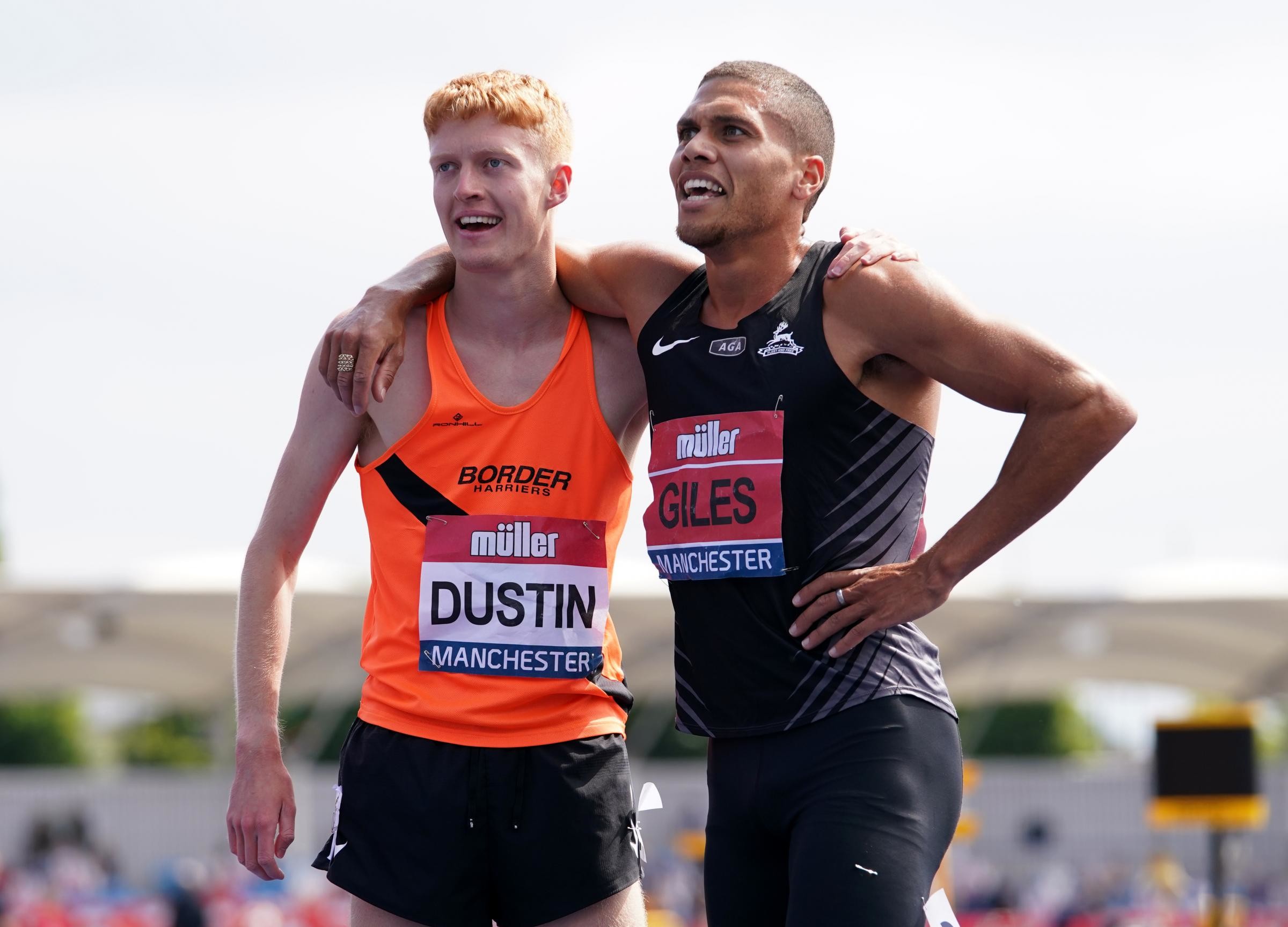
The 20-year-old has not raced since and has consulted lawyers after returning an adverse analytical finding for traces of a cocaine metabolite following an in-competition test in France, according to The Times.
French anti-doping authorities are said to be managing the matter, with a claim that the sample has been contaminated one of the options open to Dustin in what would be a long process, the report said.
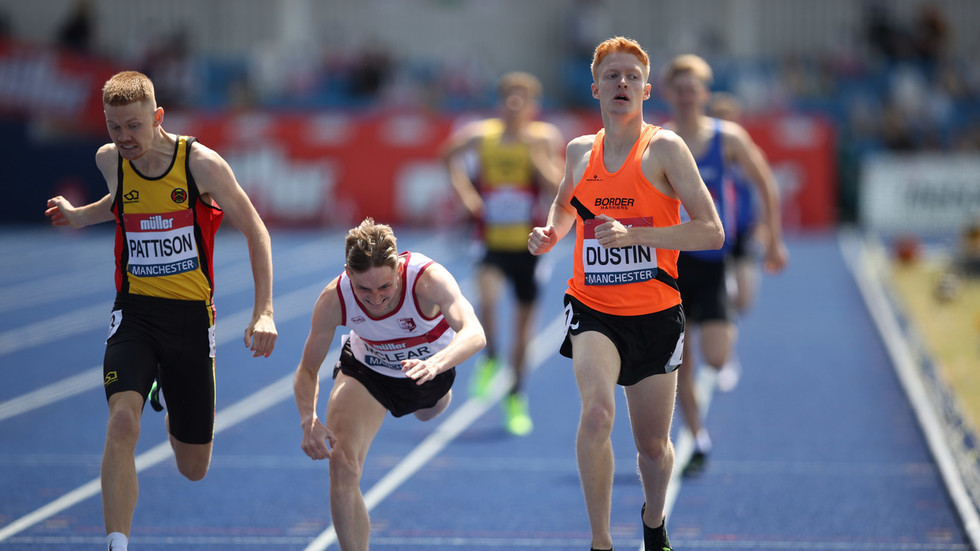
Dustin could still compete at the olympics at the Olympics if he accepts responsibility, can prove the cocaine was ingested out of competition and was then ordered to serve a one-month ban while agreeing to take an education course.
The latest World Anti-Doping Agency (WADA) rules say: “If the athlete can establish that any ingestion or use occurred out-of-competition and was unrelated to sport performance, then the period of ineligibility shall be three months' ineligibility.
“In addition, the period of ineligibility calculated... may be reduced to one month if the athlete or other person satisfactorily completes a Substance of Abuse treatment program approved by the Anti-Doping Organization with Results Management responsibility.”
America's top female sprinter, Sha’Carri Richardson, received a four-week ban earlier this month after testing positive for cannabis, keeping her out of the Olympics because her positive test emerged after she won her country's trials over 100m.
The Times said that UK Athletics had declined to comment, while Dustin’s agent, Stephen Haas, described the news of a positive test as “not factual at this point” and offered no further comment.
Writing after securing his place at the Olympics with a second-placed finish after a thriller in Manchester, the European Athletics U20 Championships gold medalist in 2019 told his thousands of social media followers: "See you in Tokyo.
by Olympics
Login to leave a comment
Sha'Carri Richardson set to return in Diamond League Prefontaine Classic
American sprinter Sha'Carri Richardson will run the 100 and 200 metres in the Diamond League Prefontaine Classic after completing a one-month ban.
Richardson, 21, was a favourite for the 100m at the Tokyo Olympics but tested positive for cannabis at last month's US Track & Field trials.

She was prevented from running in the 100m at the Games, and USA Track & Field (USATF) later declined to include her in the relay.
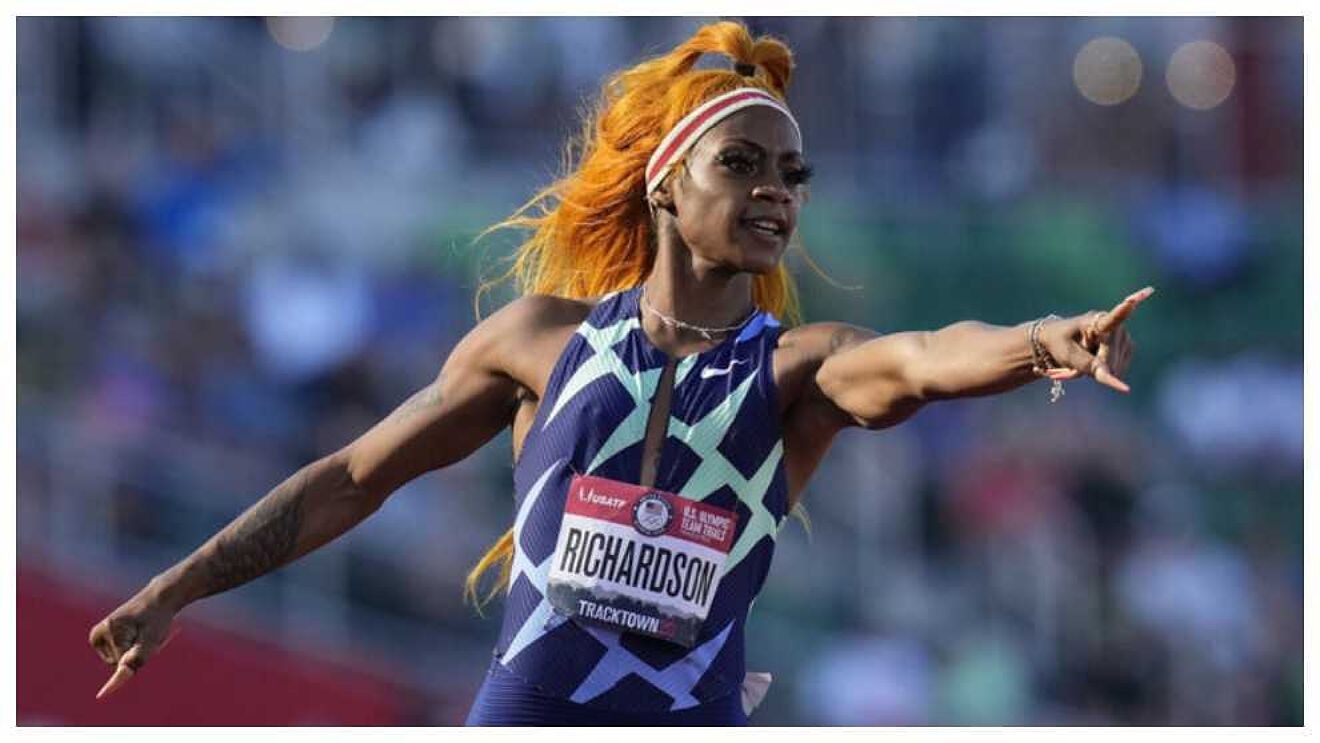
Richardson's ban ends on 28 July.
"I'm looking forward to running fast and putting on a show," she said.
Richardson's ban has reignited fierce debate over the use of cannabis in sport, with the White House reportedly seeking a meeting with the World Anti-Doping Agency (Wada) to discuss rules regarding the banned substance.
The sprinter explained she had taken it as a way of coping after learning about the death of her biological mother, and US anti-doping authorities said in her case if had been a "substance of abuse" rather than for enhancing performance.
The Prefontaine Classic runs from August 20-21 at Eugene's Hayward Field, kicking off the Diamond League's post-Olympic series of events.
by Athletics
Login to leave a comment
Shelby Houlihan says she ate a pork burrito before her drug test and this is why she tested positive.
Olympic runner Shelby Houlihan said she has been banned from the sport for four years following a positive test for anabolic steroids that she attributes to eating a pork burrito.
Houlihan said she was devastated to learn of the suspension from the Athletics Integrity Unit (AIU), an independent body that combats doping, after she tested positive for nandrolone.
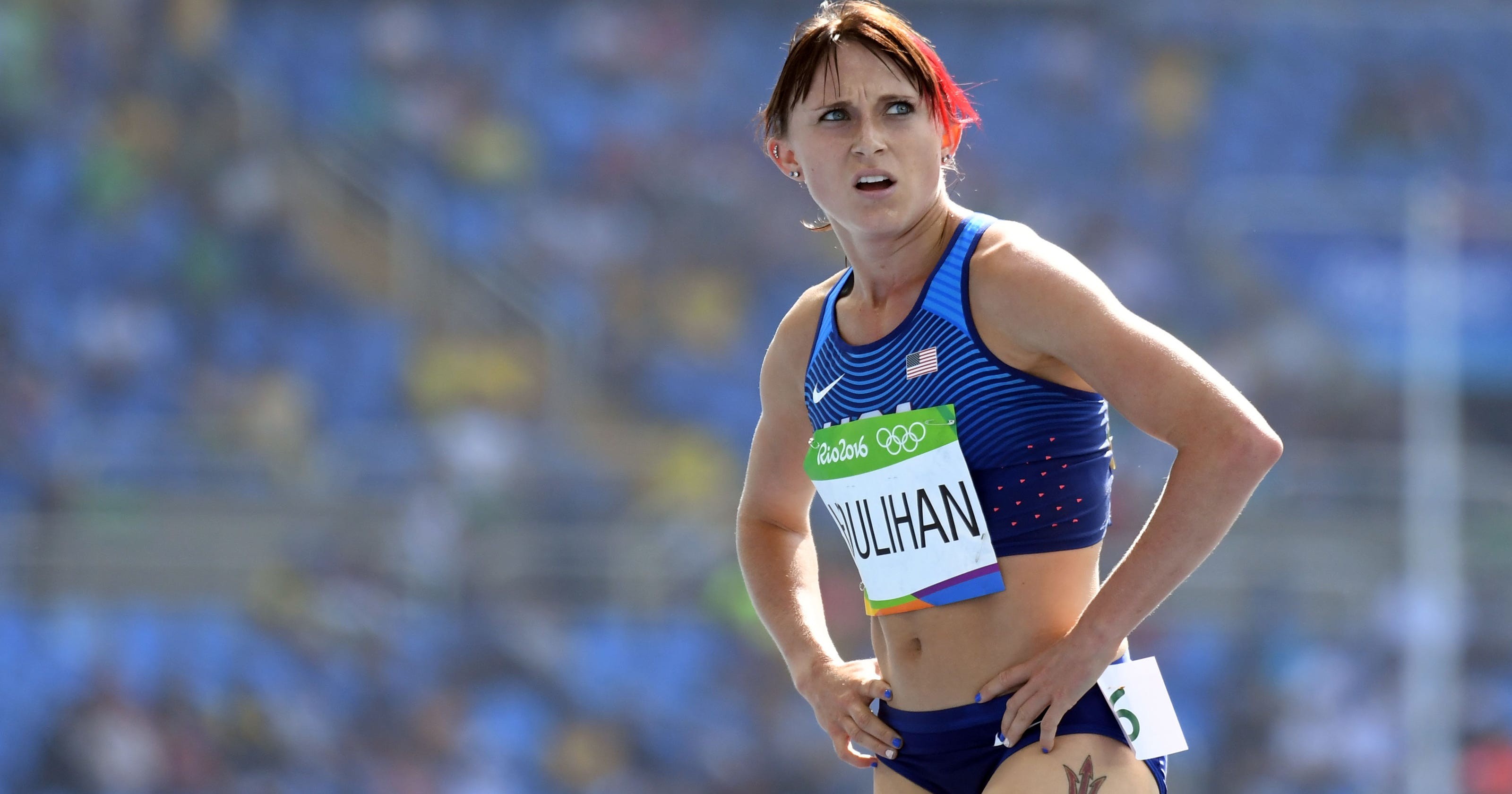
Houlihan said in a post on Instagram Monday that a burrito she ate before the test contained pig organ meat, or offal, which she said can lead to a positive test for nandrolone. A study funded by the World Anti-Doping Agency (WADA) found trace amounts of nandrolone can be found in that kind of meat and warned about the possibility of a false positive.
The ban will prevent the 28-year-old from competing in upcoming US Olympic Trials and the Tokyo Olympic Games. Doping accusations and investigations have led to multiple bans of athletes and even entire countries from competing, including a two-year ban on Russia from the Court of Arbitration for Sport (CAS).
The runner said she received an email from AIU on January 14, 2021, informing her that a drug test she took December 15, 2020, returned positive for nandrolone.
"When I got that email, I had to read it over about ten times and google what it was that I had just tested positive for," she said in the post. "I had never even heard of nandrolone."
Login to leave a comment
American record holder Shelby Houlihan receives four-year ban week before Olympic track trials
Accomplished distance runner Shelby Houlihan was handed a four-year ban exactly one week before the start of U.S. Olympic Track and Field Trials.
Houlihan was considered an Olympic medal contender entering this year. The 2016 Olympian holds American records in both the 1500m and 5000m. In 2018, she became the second woman ever to win both distances at the U.S. outdoor championships.
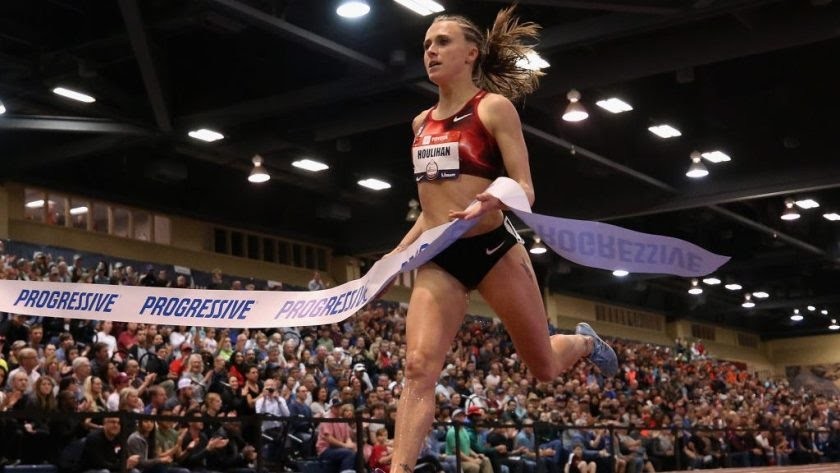
Houlihan placed fourth in the 1500m at the 2019 World Championships.
The 28-year-old had not competed yet this year, which was explained on Monday evening.
Houlihan tested positive for nandrolone in an out-of-competition urine test administered by the World Anti-Doping Agency on Dec. 15, 2020.
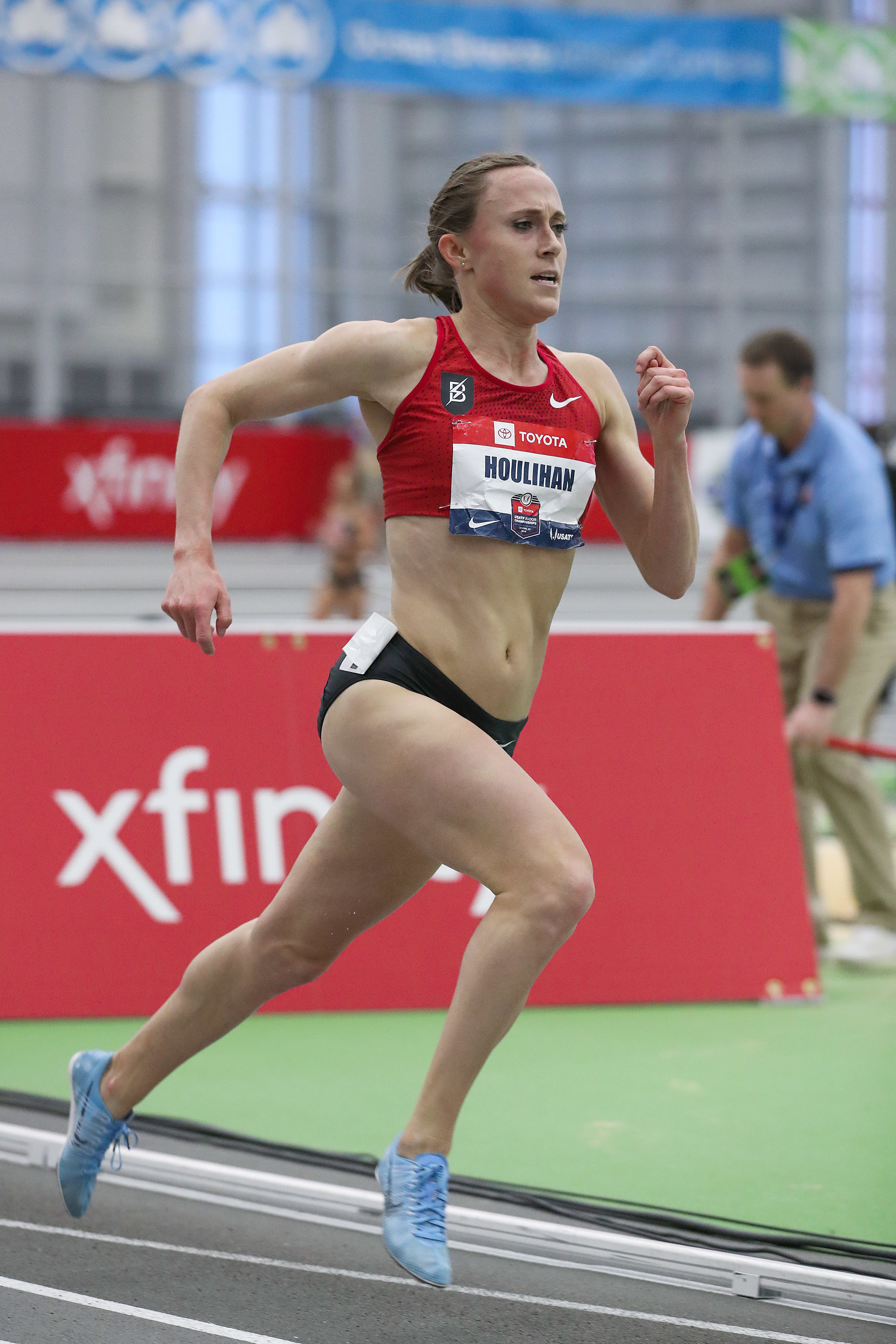
Nandrogen is an androgen and anabolic steroid known to increase muscle mass.
In a virtual press conference, well-known sports attorney and founder of Global Sports Advocates Paul Greene walked reporters through Houlihan’s case, alongside Houlihan and Bowerman Track Club coaches Jerry Schumacher and Shalane Flanagan, an Olympic silver medalist in the 10,000m.
“Shelby is an innocent athlete,” Greene declared. “What happened to her is entirely unjust.”
“I don’t have the words to articulate the depth of sadness I feel for you,” head coach Schumacher said in his statement.
After being notified of the positive test in January, Houlihan created a food log of everything she had consumed the week prior to the test.
Her team believes the result came from a pork burrito Houlihan purchased at a food truck near her home in Beaverton, Oregon, and ate the night before the 6 a.m. test.
It has been noted in WADA documents that consumption of meat, specifically pig offal, can lead to the presence of nandrolone.
Greene explained that Houlihan initially received a provisional suspension of more than three months, which caused them to opt for a single hearing before the Court of Arbitration for Sport.
In the interim, Houlihan had a hair sample tested and passed a polygraph test in an effort to prove her innocence. Greene hired a private investigator and former WADA scientist to help prove their case as well. He pushed for the sample to be tested at a second lab to no avail.
According to Greene, Houlihan has been tested approximately 100 times since 2016 and has never tested positive or missed a test in that time.
The CAS hearing was held the first week of June, with the final ruling of a four-year ban delivered on Friday, June 11. That would take Houlihan out of the running of the Paris 2024 Olympics as well; she said she is currently unsure of what her future holds.
“I feel completely devastated, lost, broken, angry, confused and betrayed by the very sport that I loved and poured myself into just to see how good I was,” Houlihan said as she fought back tears. “I want to be very clear: I’ve never taken any performance-enhancing substances and that includes the one of which I have been accused. … I do this sport because I love it, I have so much fun doing it and it’s always the best part of my day.
“This sport means everything to me. I believe doping and cheating is weak. … I would never disrespect the sport, my competitors, my teammates, my coaches, my family and my fans this way. I love the sport too much. …
“I’ve always wanted to stand at the top of an Olympic podium with a gold medal around my neck, knowing I did that, and now I am not sure that will ever happen.”
Greene is considering an appeal to the Swiss federal tribunal.
Login to leave a comment


